

SALAAM FREE Vol. 18 No. 1 (1) • October (1) 2010 • www.indianlink.com.au • FORTNIGHTLY SYDNEY Level 24/44 Market St, Sydney 2000 • GPO Box 108, Sydney 2001 • Ph: 18000 15 8 47 • email: info@indianlink.com.au Published Sydney • Melbourne • Adelaide • Brisbane • Perth DELHI! A phenomenal start to the CWG

2 <> OCTOBER (1) 2010 INDIAN LINK

OCTOBER (1) 2010 <> 3 NATIONAL EDITION

INDIAN LINK PUBLISHER
Pawan Luthra
EDITOR

Rajni Anand Luthra
ASSISTANT EDITOR
Sheryl Dixit
MELBOURNE
Preeti Jabbal
CONTRIBUTORS
Mamta Sharma, Farzana Shakir, Thomas King, Usha Arvind, LP Ayer, Sandip Hor, Malli Iyer, Farah Adeeb, Chitra Sudarshan, Geeta Khurana, Astha Singh, Pinky Bhatia, Madhuchanda Das, Mark Sharma, Graham Sims, Rani Jhala, Nancy Sood, Ritam Mitra, Noel G deSouza, Shivangi Ambani-Gandhi.
ADVERTISING MANAGER
Vivek Trivedi

02 9262 1766
ADVERTISING ASSISTANT
Priti Sharma
02 9279 2004
GRAPHIC DESIGN AND LAYOUT
Darren Monaghan
Indian Link is a fortnightly newspaper published in English. No material, including advertisements designed by Indian Link, maybe reproduced in part or in whole without the written consent of the editor. Opinions carried in Indian Link are those of the writers and not necessarily endorsed by Indian Link. All correspondence should be addressed to Indian Link
Level 24/44 Market St, Sydney 2000 or GPO Box 108, Sydney 2001
Ph: 02 9279-2004 Fax: 02 9279-2005
Email: info@indianlink.com.au

Splendour, grandeur, pomp… but too little, too late?
Oh, why do we do it to ourselves? Indians generally are talented, hard working and honest people. Our nature, like India’s dominant religion Hinduism, is very accommodating and Indians the world over are mostly model citizens. Yet, the lead up to the Commonwealth Games exposed India and Indians generally as corrupt, incompetent amateurs trying to punch above their weight.
There are many within the Indian Australian community who lashed out against the Australian media for their depiction of India. Front page photos in mainstream papers exposing the filth of the Games Village, and screaming headlines of death and danger in Delhi embarrassed the local community. Furthermore, security experts equating India to another Afghanistan became expert commentators. Brand India was tarnished further when Australia’s newest Prime Minister spoke to the media about travelling to India. Headlines - all negative - dominated the Australian press for days on end. It is sad that India and Indians allow themselves to reach this stage.
At the time of going to press, the Commonwealth Games were progressing well. While the danger of terrorism is always high on the sub-continent, this is but a natural side effect of modern
BY PAWAN LUTHRA
times. Only days ago, the United States’ Central Intelligence Agency upgraded their warnings on travel to Paris and Germany. The Eiffel Tower in Paris has been evacuated twice in as many weeks. New York, London and Madrid have all been victims of terrorist attacks. That the Australian Prime Minister Gillard held a special media conference on Delhi and terrorism, speaks volumes of her lack of diplomacy in matters of foreign affairs. Even the New Zealand Prime Minister John Keys spoke about issues of travelling to Delhi, but then stated that if he was an athlete, he would certainly travel to the Games.
One hopes and prays that the Commonwealth Games conclude without any incident, but the build up by the Australian Prime Minister and members of Australian media have clearly been a result of misinformed hysteria.
At the same time, why do we do it to ourselves? Is it in our Indian DNA to
leave things to the last minute? With Delhi awarded the Games over 7 years ago, why did things get sorted out only within the last seven days? Could the planning have been better to ensure that the stadiums, Village and facilities were handed over to various Commonwealth authorities at the right time? Furthermore, the argumentative nature of our Indian blood was evident through many excuses randomly thrown around by the organising committee – the monsoons, local government road blocks, the differences in international hygiene standards... Perhaps at times, it is worth keeping silent and accepting the blame.
The Opening Ceremony was spectacular. For a few hours, the countries of the Commonwealth were mesmerised. We can only hope that the Games are incident-free till the end, and that the Closing Ceremony reaffirms the world’s faith in us, yet again.
OCTOBER (1) 2010 <> 5 NATIONAL EDITION
www.indianlink.com.au EDITORIAL
What’s On
SPIRITUAL
Ramakrishna Sarada Vedanta Society activities
Sun 17 Oct Durga Puja (Celebrating God in the form of Divine Mother). Program includes Hari Om Ramakrishna chant, silent meditation, talks by Pravrajika Gayatriprana and Mrs. Sarasvati Naidoo, a special flower-offering ceremony and distribution of offered food 10.40am to 12noon.
Sun 31 Oct Young people’s Discussion Group for ages 15 and over. Themes: Man is Divine & Pleasure is not the Goal. 3.00 to 6.00pm.
Sun 7 Nov Kali Puja Program includes Hari Om Ramakrishna chant, silent meditation, talks by Pravrajika Ajayaprana Mataji and Dr.Dilip Dutta, a special candlelight ceremony/offering, and distribution of offered food. 10.40am to 12noon.
Venue: Vedanta Hall, 15 Liverpool Road, Croydon. Details: phone – 9745 4320 or email us: vedantasyd@idx.com.au


EXHIBITIONS
Runa Islam
19 Aug-21 Nov London-based awardwinning artist Runa Islam presents her work of 16mm film installations. Islam’s works are about the act of viewing and the possibilities of cinema. Museum of Contemporary Art 140 George Street, The Rocks, NSW 2000. Details 02 92452400 or visit www.mca.com.au
SCREEN
Open Air Cinema
Thur 7 Oct ACDN presents Bollywood film Kabhi Khushi Kabhi Gham at Auburn Central Forecourt Area outside
Woolworths on Queens St, 7.00pm. Details 02 0649-5559.
Documentary film screening
Thur 30 Oct The Indian Ocean and South Asia Research Network (IOSARN) at UTS announces its second event in the Talking India Series, a screening Does Gandhi Matter?, a documentary film by Manoj Raghuvanshi, to be followed by a discussion with the Consul General of India Amit Dasgupta. 12.30pm – 2.00 pm. Details Cornelia Beltzer 02 9514-2768.
FESTIVAL
Navratri celebrations at Ram Krishna Temple
8-16 Oct Come and celebrate Navratri with your friends and family at the SSDS Ram Krishna Temple, 24/7 Lyn Parade, Prestons from 7pm -9pm. Details Pandit K P Sharma 0411 101 700 or visit www. ssds.org.au
DANDIYA GARBA
Navartri Raas-Garba
Sat 9 Oct The Navratri Cultural Group announces an action packed Navartri Raas-Garba: 6:30pm at Menai High School, Gerald Road, Illawong. Sydney’s most prominent singers and musicians will provide live music. Details 02 95438686.
Shri Shirdi Sai Mandir
8-16 Oct Raas Garba and Dandiya every night after Shej Aarti. 420 Liverpool Road (cnr Hill St and Liverpool Road), Strathfield South, NSW 2136. Details 0433 959 360 or visit www.shirdisai.org.au
DIWALI CELEBRATIONS
IITAA Diwali
Sat 9 Oct IIT Alumni of Australia announce a talent quest and Diwali Dhamaka, at a Dolls Point Restaurant. Details Sukesh 0424 750 763 or Dipankar 0403 333 560
India Club Diwali
Sat 23 Oct India Club (IC) presents a stylish celebration of prosperity and happiness. Spectacular show, feast on lavish Indian cuisine, network with IC guests, politicians and dignitaries, and dance the night away. Details at www. indiaclub.com.au
Sneh Milan: Deepavali 2010
Sat 30 Oct A Diwali extravaganza featuring pooja, talks, children’s performances, puppet show, raffle and lucky dip, DJs and dance. 6.00pm at St Ives Community Hall, Memorial Avenue, St Ives.
Details Kamini Sahni 0401 059 923
Iti Sydney’s Diwali Sat 30 October Iti Sydney will celebrate Diwali and worship of Kali mata, at Cumberland High School, 183 Pennant Hills Road, Carlingford, 4:00 pm. Following prasad and dinner, cultural program including Bollywood dances starts at 8:30 pm. All voluntary donations will go towards charity activities in India.
Details Aditi Coomar 0438 777 586.
Diwali function at Abhinay School of Performing Arts
Sat 30 Oct Abhinay School announces a ‘Southern Sydney Diwali’ at Hurstville Boys High Campus from 11.00 am

to 4.00pm. Cultural program with spectacular entertainment including Bollywood dances, bhangra, dandia and garba, and subcontinental stalls specialising in Bollywood dresses, henna tattoos, bangles, bindis as well as delicious Indian treats. $2 donation for cultural program. Details at www. southernsydneydiwali.com or call Aishveryaa Nidhi on 0488 200 222.
FUNDRAISERS
Annual Golf Day of the LBW Trust
Tues 12 Oct The LBW Trust, a charity which helps tertiary educate disadvantaged and underprivileged youth, is organising its 5th Annual Golf Day at the magnificent New South Wales Golf Club at 1528 Anzac Parade (Botany Bay National Park) La Perouse, NSW 2036. Details at www.lbwtrust.com.au
Fund Raising Dinner
Fri 15 Oct Toongabbie Legal Centre Inc is organising a fund raising dinner at Bowman Hall, Campbell Street, Blacktown, 6.45pm. Details at www.tlc. asn.au
GOPIO Diwali
6 Nov GOPIO will organise a charity show to celebrate Diwali with an Antakshari night. Pupinder Mintu will conduct the Antakshari contest. 6.00 pm, Harvey Lowe Pavilion, Off Showground Road, Castle Hill (entry via Doran Drive). This charity show will raise funds for an underprivileged school in Punjab. Those wishing to participate in the Antakshari may contact Raj on 0433 330 722, Ravi on 0433 179 303 or Harry Walia on 0402 842 375. Entries close 20 October 2010.
Warning: Don’t make another decision about your health until you have read this Free Report. Go to www.andrewjameshealingcentre.com/report.html
Homoeopathic medicine for strong, vital health and healing
Medical Homoeopath & Naturopath, Andrew Collishaw (ND, B Med Sci) has over 22 years experience & runs a busy practise in Newtown. He has helped 1000’s of clients achieve great health using classical homoeopathic medicine. Enjoy the health-benefits that homoeopathy brings. Be sure to read our free report
Andrew James Healing Centre 211 King St Newtown 2042
6 <> OCTOBER (1) 2010 INDIAN LINK
“Now Is The Time To Have Great Health Using Homoeopathic Medicine”

OCTOBER (1) 2010 <> 7 NATIONAL EDITION
The inaugural ceremony of the CWG has proved to the world that India can indeed deliver, despite the odds
Awinning
BY SHERYL DIXIT
Lights, camera, action! Drumbeats filled the air, the world’s largest helium balloon slowly began to ascend and the inauguration ceremony of the 19th Commonwealth Games 2010 began to unfold.
Bollywood-like, one may think, but in truth and in a welcome change, the glitz and glamour of India’s film industry took a firm backseat at Delhi’s Jawaharlal Nehru stadium. It was a pleasant surprise for Indians, and a rather surprising one for non-Indians who largely and invariably associate all things Indian with Bollywood.
The various facets of the opening ceremony, from its mesmerising drumbeats to the mischievous smile on young Keshav’s face as his fingers danced on the tabla; from the athletes carrying the baton across the stadium to be handed over to Prince Charles at the end of its historic 170,000km journey through all the Commonwealth nations; from the strangely attired dancers who pirouetted to Hariharan’s enchanting music and then created a clever mural of mehndi; from the coordinated fireworks and the great Indian journey


that showcased the soul of the country – all these elements came together in relatively smooth synchronicity to form a unique and memorable opening ceremony.
I admit to keeping my fingers crossed as politicians and dignitaries began filing into the stadium, but when the ceremony began right on time, I relaxed. If the country could master its age-honoured concept of starting any event at least ten minutes late, we were onto a good thing. And with what followed, India certainly didn’t disappoint.
What impressed me most within the entire three-hour bonanza was that India did what it does best. It showcased the richness of its culture and heritage, poked a wee bit of fun at its idiosyncrasies, and the best thing of all was that it was all original, or as we could say, typically Indian. There was none of the hastily adapted western influences, none of the extravagant displays of technology or modernization, which would have been farcical and inappropriate. Instead, it was tasteful, informative and it stuck to a single, yet simple theme – this is India.
India. Not Bollywood, call centres, cricket or the IT industry, but the essence of life in India, of which we are proud. The ceremony was divided into specific segments highlighting the country’s diversity through dance, drums, music, yoga and textiles. In many ways the inaugural ceremony was different, a step away from the traditions expected from past Games, which reflected not just India’s modernity of thought, but also the use of creative concepts to enhance the entire experience for not just the audience, but also the athletes.
It showcased the richness of its culture and heritage, poked a wee bit of fun at its own idiosyncrasies, and the best thing of all was that it was all original, or as we could say, typically Indian
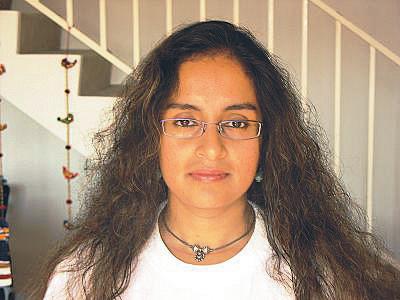
One of these was a move away from the traditional athletes’ march which usually happens at the end of the inauguration, which often means that they miss out on the ceremony which is, after all, in honour of them. But at the Delhi Games, the athletes’ march followed the speeches which ensured that they didn’t miss out on the more entertaining aspects of the ceremony. They had a chance to be in on the action, literally from ringside seats.
The Commonwealth Games inaugural ceremony was exactly what the world needed to see and understand about
Another interesting and unique feature, a first of its kind to be used in an event of this scale was the massive Rs 70 crore helium balloon with its Rajasthani puppets gently gyrating in the evening air. This aerostat was a showstopper
8 <> OCTOBER (1) 2010 INDIAN LINK COVERSTORY
performance
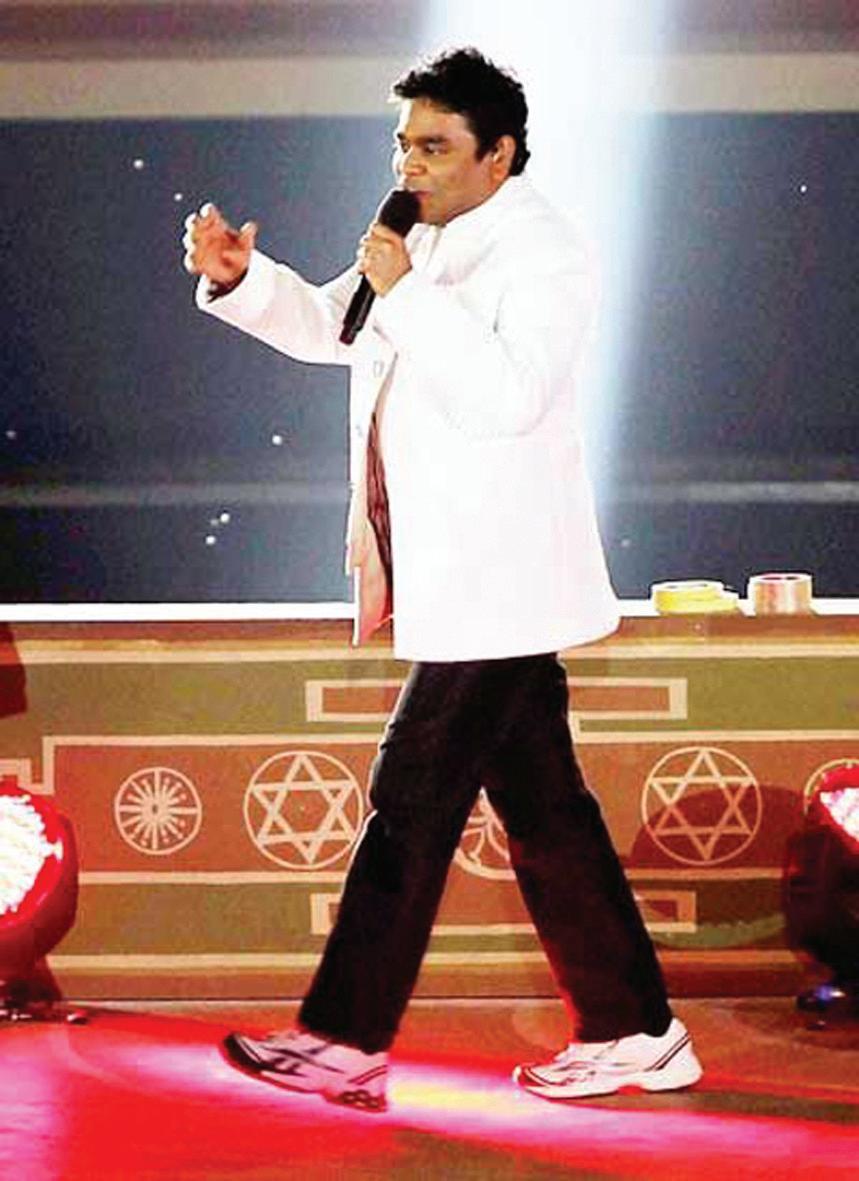
as it dramatically rose 25 metres in the air when the ceremony began, to the awe and delight of the crowd which showed its appreciation through a roar of approval. It is the biggest in the world, and displayed images of the action on the ground for all to see across the dimensions of the stadium, while moving lights changed hues to add an individual touch of festivity to the ceremony. Brilliantly choreographed, ‘The Great Indian Journey’ was certainly entertaining and definitely impressive. From the train and its dancer perched on top, to the medley of scenes that followed like milkmen on bicycles, a mobile bangle shop, a cycle shop, rickshawallas, fishermen…it was a glimpse into the ‘real’ India. The wedding band and moving theatre with huge cutouts of Bollywood actors added a touch of realism to the scene without overtly venerating the industry, which I feel, made an essential statement that India is much more than mere Bollywood. The section on the Bodhi tree of life and knowledge and yoga showcased what is essentially Indian, leaving no doubt about the origins of this form of wellness, which is still enjoying steadily-increasing global popularity. The

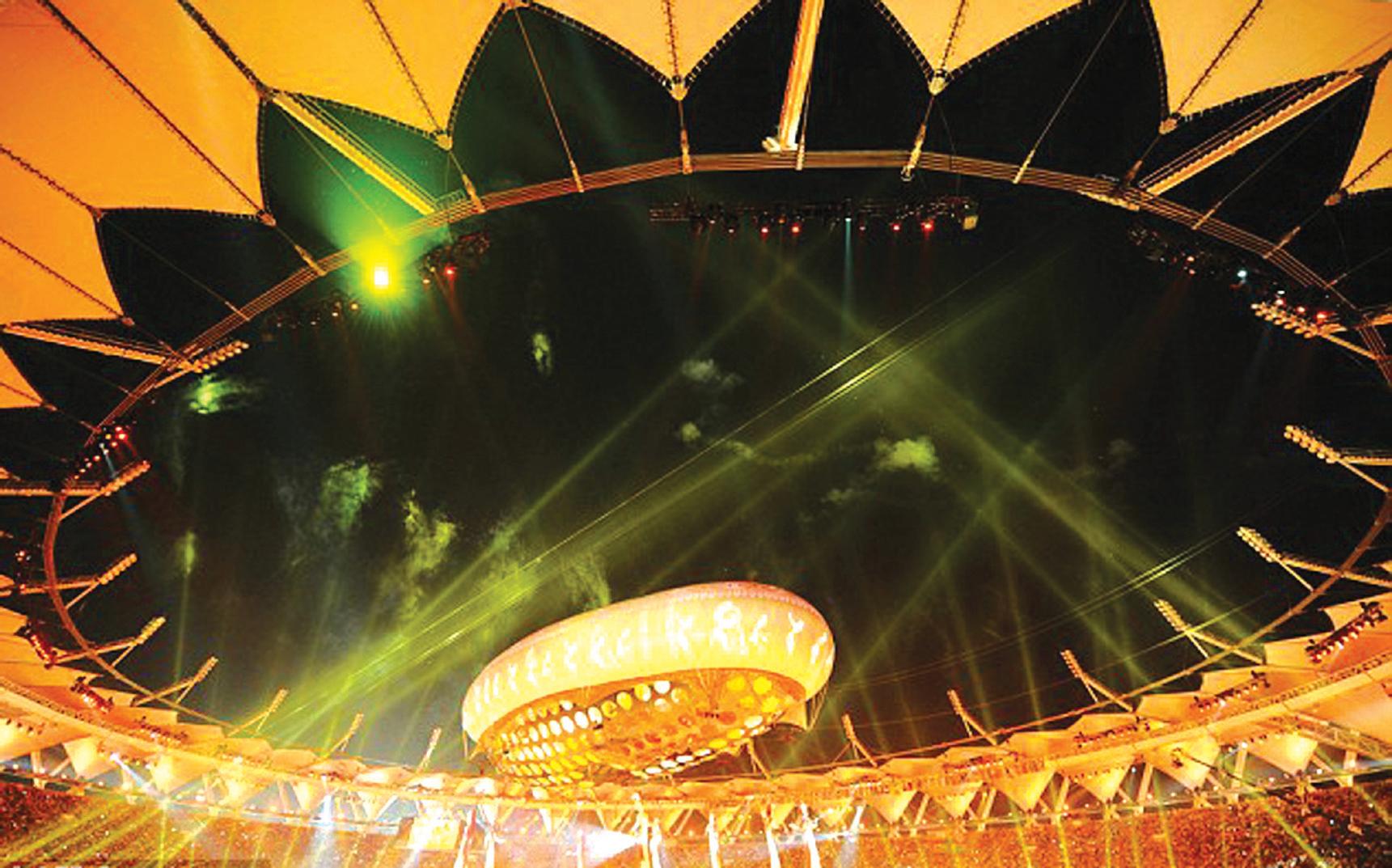
Namaste formation by schoolchildren was attractive, and the traditional dances were graceful and vibrant, with bihu, bhangra and bamboo all displayed to their best advantage. And of course, the piece de resistance was from AR Rahman, who did his bit with his usual aplomb. Rahman’s talent lies in being a showman extraordinaire without the usual fuss – he’s just good at what he does, with humility to boot. He belted out the Commonwealth Games theme song, Jiyo Utho Badho Jeeto (Live, rise, grow, win) to an impressed audience, and followed it up with what is now his signature tune, Jai Ho! The accompaniment of hundreds of dancers in traditional Indian attire perfectly complemented his performance.
With a tribute to Father of the Nation Mahatma Gandhi, there was a distinct message that Bapuji’s ideals are still very much alive and that he remains, 62 years after his death, India’s single strongest and most prideful icon. Strains of the Mahatma’s favourite hymn Vaishnav Janato reverberated through the air as his ever-familiar portrait lit up the stage.
Of course, there were a few glitches, but nothing terribly obvious. The speeches seemed too long and too many, an
insight into our politicians’ love for verbosity. And although the Games Organising Committee chairman Suresh Kalmadi had to endure being booed by the audience, I have to admit that his valour in calling a spade a spade left me impressed. He referred to the criticism prior to the Games and his statement, “India has arrived!” made global headlines. The President and Prime Minister of India were less impressive, and seemed mildly out of their depth with all the excitement around them.
Purists may criticise the faint air of disorganisation that seemed to hover around the ceremony and the occasionally uncoordinated moments experienced by dancers when caught close up on camera, but these are minor deterrents to a kaleidoscopic pageant that literally, took one’s breath away.
Three hours isn’t quite enough for 7000 performers to showcase the 5000 years of India’s history to nearly 7000 athletes and Games organisers from 71 countries, and an audience of 65,000 in the stadium including countless others watching all across the world. But one has to admit, they did a more than impressive job of it!
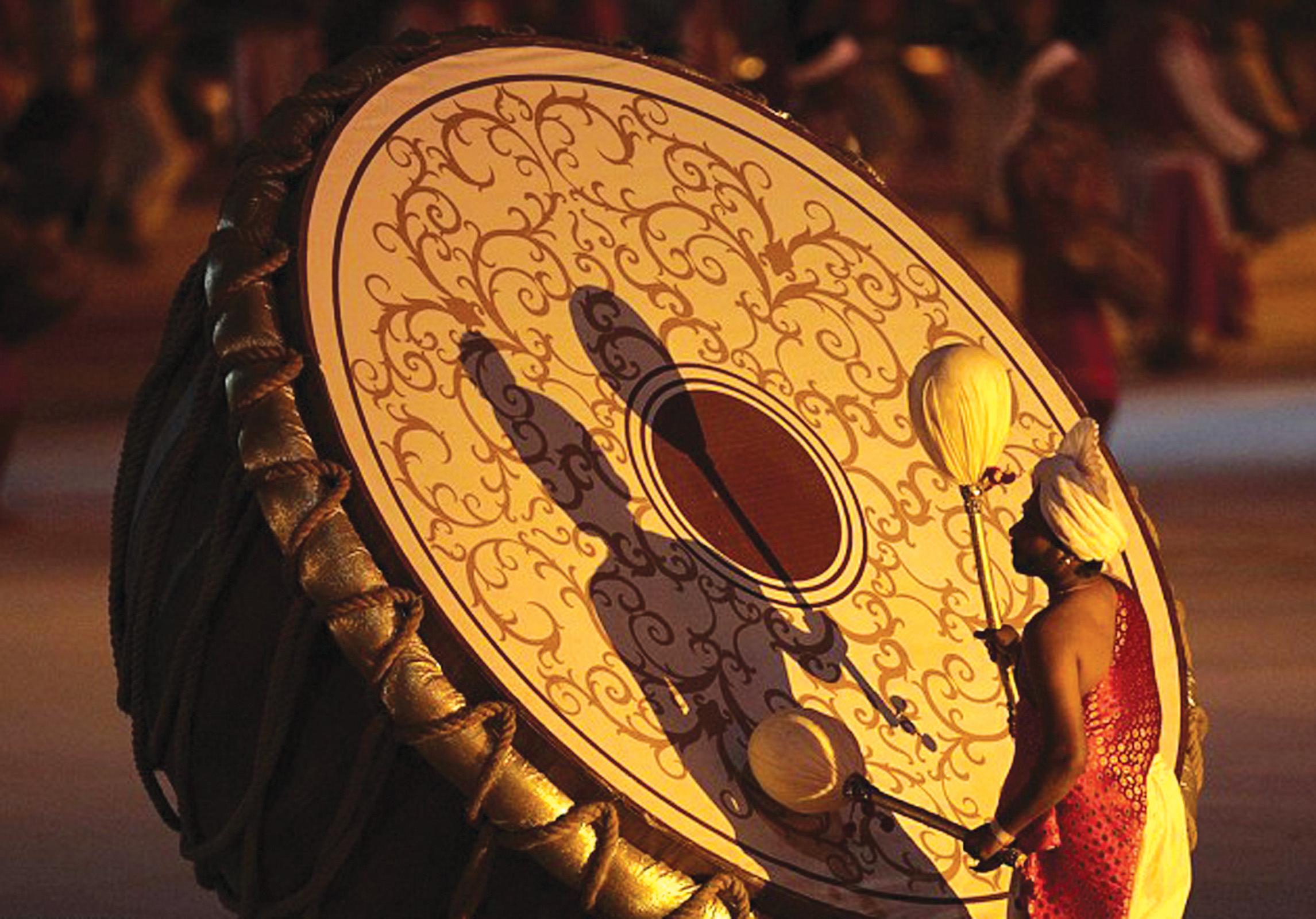

So let’s wait for the closing ceremony, where we hope that once again, India can show the world that it has the ability, attitude, creativity and panache to bring the 19th Commonwealth Games to a successful conclusion. And once again, perhaps at 3:30am, I will crawl back into bed with a sense of satisfaction and a sigh of relief.
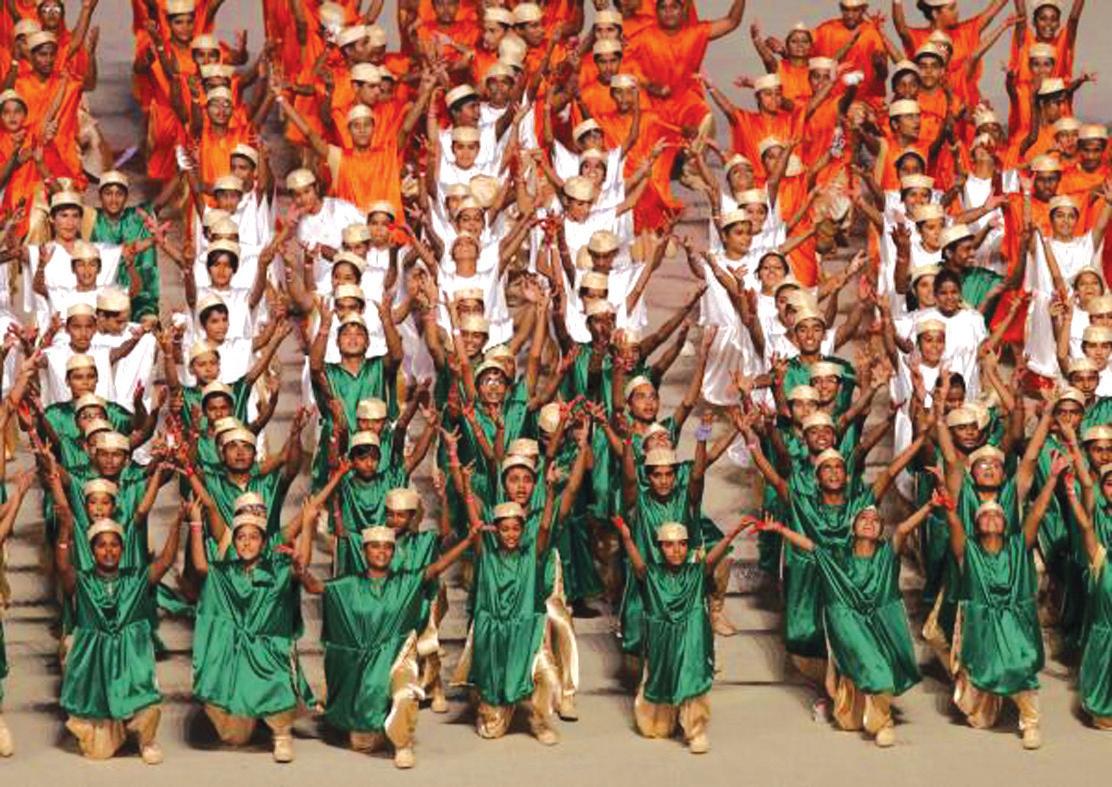
OCTOBER (1) 2010 <> 9 NATIONAL EDITION www.indianlink.com.au
The Namaste formation by schoolchildren was attractive, and the traditional dances were graceful and vibrant, with bihu,bhangra and bamboo all displayed to their best advantage
Ken Pereira: An Indian flavour in the Canadian team
For skipper of the Canadian men’s hockey team Ken Pereira, it is ‘home away from home’ at the ongoing Commonwealth Games (CWG) in New Delhi. The CWG is a double whammy for the hockey player since there is the “excitement” of playing in the birthplace of his parents as well having had the “honour” of carrying the flag of his country during the opening ceremony.

“I’m not at all concerned about talks of security and health hazards. Instead I am expecting a lot of my family members to come and cheer us,” the Toronto-born Ken, who has his roots in Goa, said.
Though 37-year-old Indian origin Ken was born and brought up in Toronto, his parents migrated to Canada from Goa, in the ‘60s. Many of Ken’s relatives are still in Goa while some are living in Mumbai.
Pereira has admitted that he is a bit amused by his identity crisis in India. Interacting with mediapersons in New Delhi, Pereira joked his way out of the issue by making it clear that he was born in Canada, and has only recently started visiting India.
The veteran player, who hails from Unionville, Ontario, and doesn’t speak Hindi, also said that it is a little awkward when people try to speak with him in Hindi. “It’s like a Bollywood movie, it’s completely blown up. I’d no idea it would be like this,” Canada’s The Globe and Mail newspaper quoted Pereira as saying.
With over 16 years as a member of Canada’s hockey team, Pereira has a remarkable international sporting career and has earned over 300 caps.
He is widely considered one of the best midfielders in the game.
Ken, who plays professional hockey for a club in Holland, said he was very happy to be in India, the country he had visited on a couple of occasions in the past, the first time during a visit to Chandigarh in 1984 and then during the last World Cup championship.
Ken started his playing career initially in ice hockey which is one of the most popular games in Canada. But he later shifted to field hockey and has been playing the game for the past 17 years. Ken has played more than 200 international matches since his international debut in 1994.
Pereira says he never thought of changing his citizenship to play in India or elsewhere.
“Just being born in Canada, I couldn’t imagine playing for another country,” he said. “Even though (field) hockey is bigger in other countries, I couldn’t imagine putting on another jersey unless it had the maple leaf on it.”
12-year-old aims for gold at Delhi CWG
She studies in Year 8, badly misses her mom, has fallen in love with chicken tikka and naan, and she wants a medal -- not any, but one at the Oct 3-14 Commonwealth Games. Meet Khaaliqa Nimji, all of 12 years, from Kenya, one of the youngest competitors at the Games.
It is a dream come true for Khaaliqa as she marks her arrival on the international stage in India, a country about which she knows little but has taken a liking for its food to such an extent that she has not tried the African and the continental dishes since her arrval at the Games Village.
She is part of a four-member Kenyan squash unit comprising two men and two women.
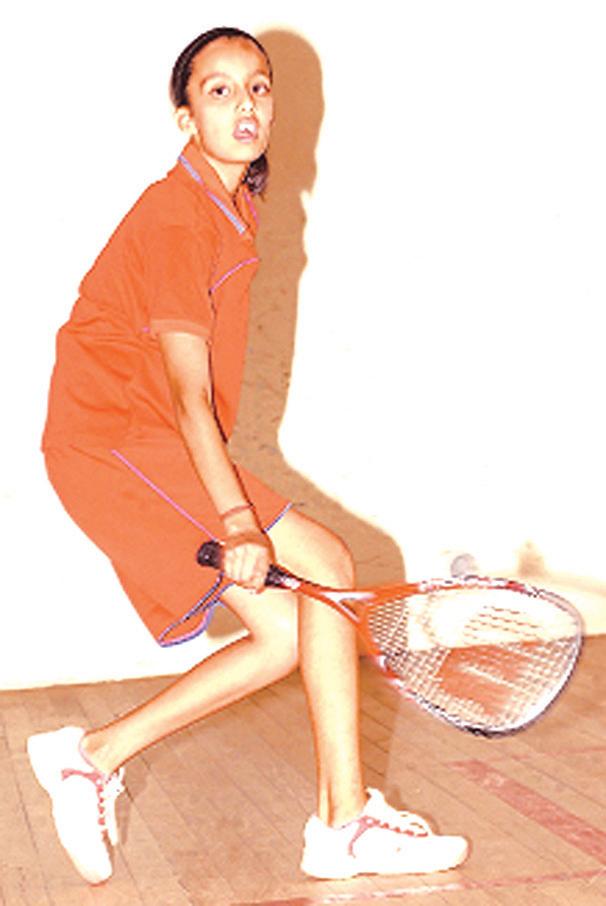
“It feels great to represent Kenya. I know I am fairly young but walking around with the elder lot does not bother me. I am just thrilled to be here,” Khaaliqa said.
Khaaliqa is the number two squash player
Games Sidelights
on the phone all the time. I badly miss my mom, brother and cousins and can’t wait to get back home,” she said.
After stealing CWG show, Keshav went back to bedtime story!
His tabla recital rocked the Commonwealth Games (CWG) opening ceremony, but once seven-year-old prodigy Keshav was away from the spotlight, he went to his hotel room, took a bath and asked for a bedtime story just like any other day! So his mother revealed.
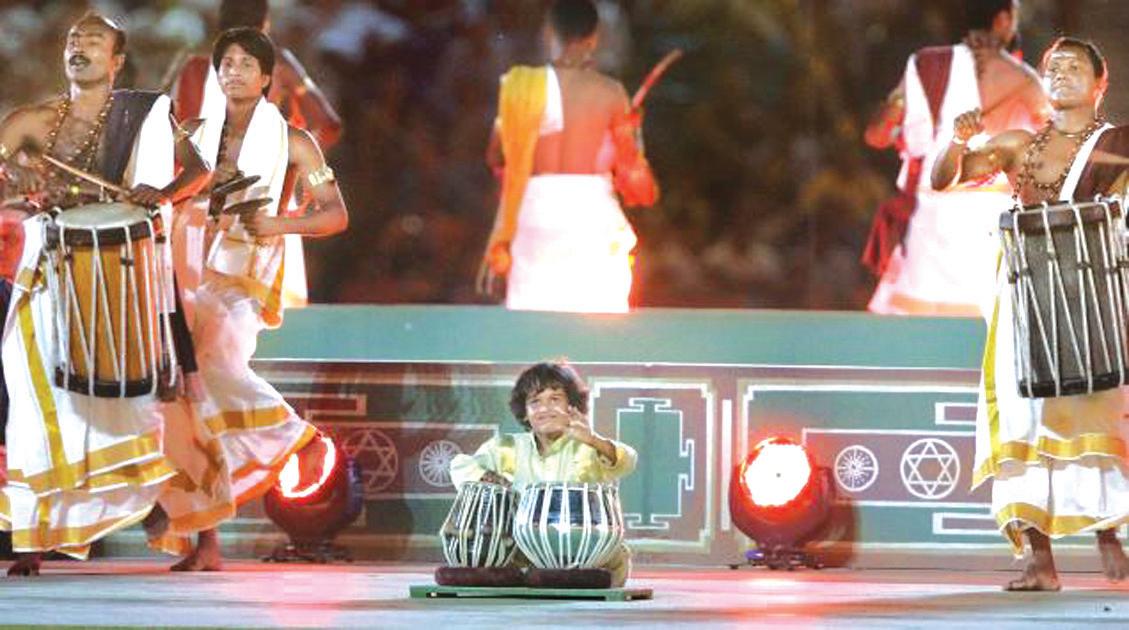
Facing the media at a press conference, the boy from Auroville, Puducherry giggled, laughed and goofed around even as reporters tried their best to make him speak in full sentences.
Asked if he was nervous before going on stage for the opening ceremony at the Jawaharlal Nehru Stadium, the boy, who has never had any formal training, said, “I was excited.”
According to his mother Gopika, a singer and a photographer, the aim was to keep the whole act very “spontaneous”.
Was he overwhelmed with all the response after his performance?
Gopika said, “The first thing he said after coming down the stage was ‘Did I play well, mama?’ We left soon after and went to our hotel. The first thing he did was to clean the room - he is finicky about cleanliness - took a bath and asked me to tell him his bedtime story. He was not interested in watching the TV highlights or anything. But later he drew pictures of the stadium.”
How long had he practised for the opening ceremony? Keshav said, “A month!” Sitting on the edge of his seat to reach the microphone, Keshav looked at his mother each time a question was shot at him.
Gopika said, “He didn’t have any strict schedule of practicing for so many hours a day. He played as and when he liked. I tried to keep the whole act very spontaneous.
“So right up to the time he went up the stage, I was telling him his favourite stories.
All that I told him was there was a big light show and he will be playing with many more drummers.”
Born into a family of musicians, Keshav started playing the tabla at the tender age of two. Gopika said he is so natural that he simply watches the fingers of tabla players when they rehearse at home and then imitates it to perfection.
“Keshav has not had any formal training. I am a singer and often practice at home. So he has grown in that atmosphere. We don’t even have a TV at home. So when people said they would watch his performance on television, he was a little confused,” she said. Is there any other instrument he likes to play? “The guitar. I have a blue guitar,” Keshav said.
“I also like cycling and cycle to school every day,” he added, with some prompting from his mom.
A student of Deeparam school in Auroville, Keshav studies in Year 2. Keshav’s elder sister Kamakshi, who is just a few years older than him, plays the piano.
in Kenya and has defeated the higher ranked compatriot Safina Madhani on more occasions than one.
The young star inherited the sport from her father Sadri Nimji, who played for the country in international events in the 1990s.
“I started playing when I was five and maybe my dad was also playing at that time,” she guessed.
“I don’t know whether squash is in my blood. All I know is that I love the sport,” she said.
The security for the Games scared her at
first as the Village has been turned virtually into a fortress.
“It was crazy when I first landed. I was scared of the cops being everywhere but now I feel much better as I have started liking the Village. Everyone is so friendly here,” she said.
The little wonder that she is, Khaaliqa is sad at not being able to meet her father regularly as only players and officials are allowed to live in the village.
“I have met him only once since I came here. I can’t meet him at will, so I talk to him
Even as comparisons were drawn between Keshav and tabla maestro Zakir Hussain, especially as both have curly locks and a similar dressing style, Keshav smiled for photographers, with his sister hugging him.
Bharatbala, the creative director of the opening ceremony of the Games, said:

“I discovered Keshav in Auroville in May and decided instinctively that he should be included in the ceremony. By July, it was confirmed.
“I knew that along with hundreds of drummers, if there is one child prodigy, it will leave a mark. And he performed brilliantly. He totally enjoyed performing.”
10 <> OCTOBER (1) 2010 INDIAN LINK www.indianlink.com.au COVERSTORY
Khaaliqa Nimji of Kenya
Ken Pereira of Canada
Seven-year-old prodigy Keshav
Indian Link’s Pawan Luthra calls the Opening Ceremony on Foxtel with Steve Liebmann and Tracey Holmes






OCTOBER (1) 2010 <> 11 NATIONAL EDITION
The gag’s on Gus
The best way to enjoy and experience a country is to really get into its soul, as this enterprising Indophile discovers
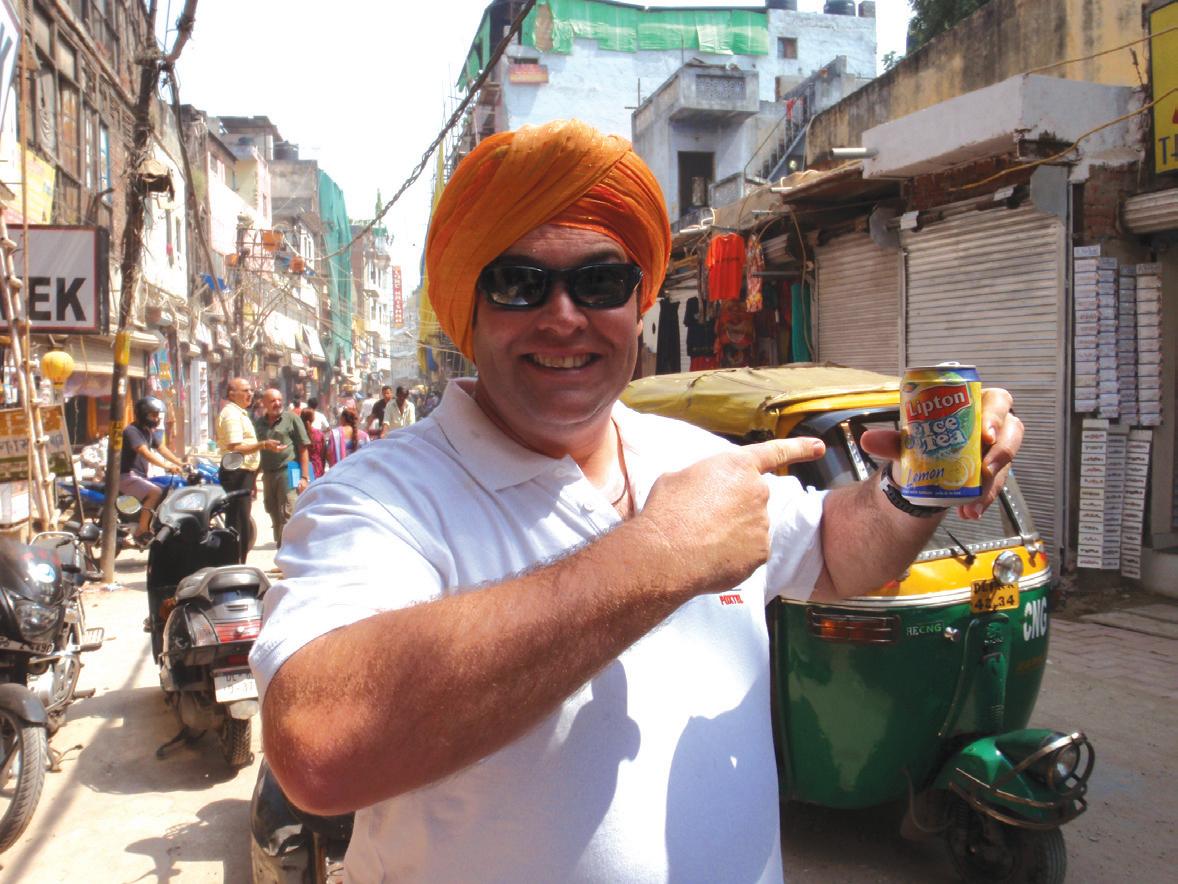

It is the oldest trick in the book.
Ask a friend to teach you a phrase in another language and they do, except that it could be a bit different from what you had originally asked. Well-known Indophile Gus Worland from the FOXTEL commentary team in Delhi had this gag pulled on him. Security guards had to step in when Gus told a strapping young Delhiite in chaste Hindi, “Aap bahut khoobsoorat hain!” (You are very beautiful), when all he wanted to
Gus also bought a rickshaw for Rs 400 (A$10) and tried to pick up fares as a rickshaw driver, but sadly found that this was not his calling in life
know was the way to the bathroom. This and many other such experiences have made this visit to India a special one for Gus. He stormed into the hearts of the local Indian community in Australia when he presented his journey through India while following the tour of the Aussie cricket team in India a few years ago (An Aussie Goes Bolly). His boundless energy and sense of humour brought forth a wonderful side of India to viewers in Australia.
This time, as a part of the team with FOXTEL (who are presenting the Delhi Commonwealth Games on six channels) Gus is having a ball.
Chatting to Indian Link on the phone from Delhi, Gus spoke of what he has been doing in the Games city - interacting with locals in his own Aussie way.
“I’m enjoying engaging with the Indian people,” he said. “I love it that I can jump out of the car at India Gate, cross the fence and join in a game of cricket on the grass…”
He also bought himself a rickshaw (for Rs 400, or $10) which he spray painted and rode on the streets of Old Delhi. Sadly he found that being a rickshawallah can not be his calling in life.
And of course he’s still wearing that old turban from his “Bolly” days.
“Oh yes, I bought my wife a Kashmiri scarf”.
The Opening Ceremony was “a great show”, he said. “It worked swimmingly. I’ve spoken to so many locals since and they’re all so proud”.
And yes, he did have the dreaded Delhi belly. “I insisted on having Delhi belly!
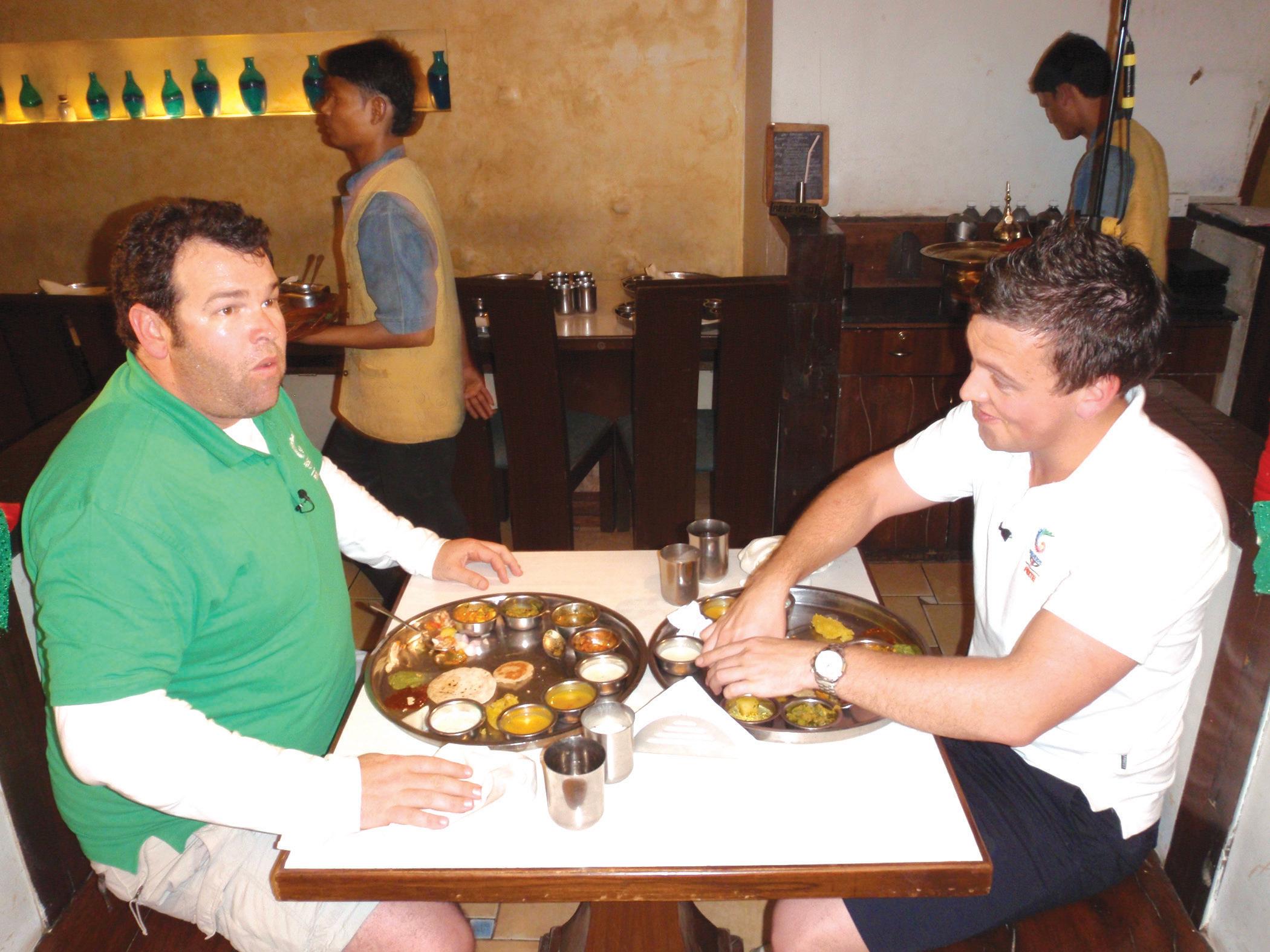
Defying all good eating instructions, I
indulged in street food, and found it so tasty that I over-ate and then spent a day recovering. What an experience!”
But he’s “all solid” now. And quite enjoying the food.
“Last night I went out again and had another fantastic meal. They kept bringing me more and more food and I kept saying no, I can’t eat any more, and they kept going try this, try this…! Ultimately I just threw
the money on the table and ran from there!” But Gus did reveal that he has lost a kilo in a day with early misadventure - a novel method of dieting - but has denied the rumor that he is trademarking the phrase ‘Delhi-belly’ as a weight loss option in competition to Jenny Craig. We don’t quite believe him, because Gus can do some eccentric things. You go, Gus!
Pawan Luthra
Radio anchors wanted
Are you creative? Can you think on your feet? Do you have a talking to people? Good command of Hindi? Upto date with current affairs? Like your Bollywood music? Want to work part time? Early mornings? Late evenings? Weekends? Be part of the Indian Link radio team!!!
12 <> OCTOBER (1) 2010 INDIAN LINK www.indianlink.com.au COVERSTORY
expressions of interest with details of relevant experience to info@indianlink.com.au
Email
MON SUN AM
00-1 POPCORN KUCH PAL
Pop songs ki pop masti For him
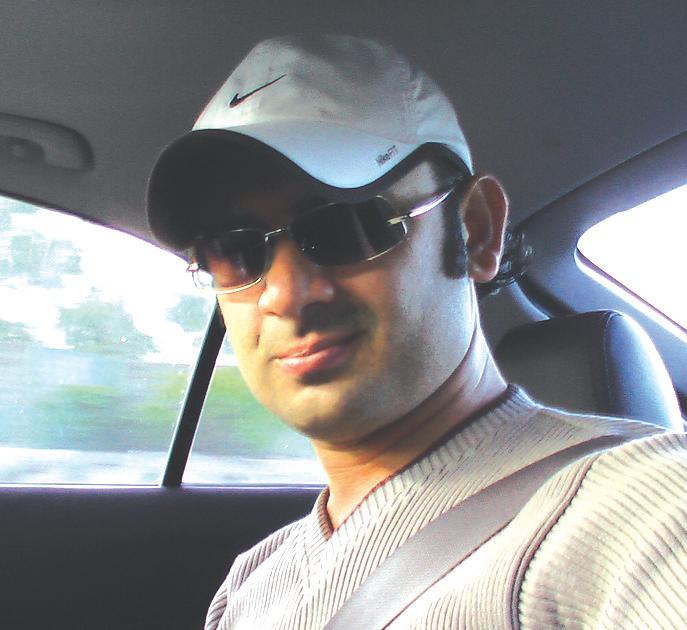

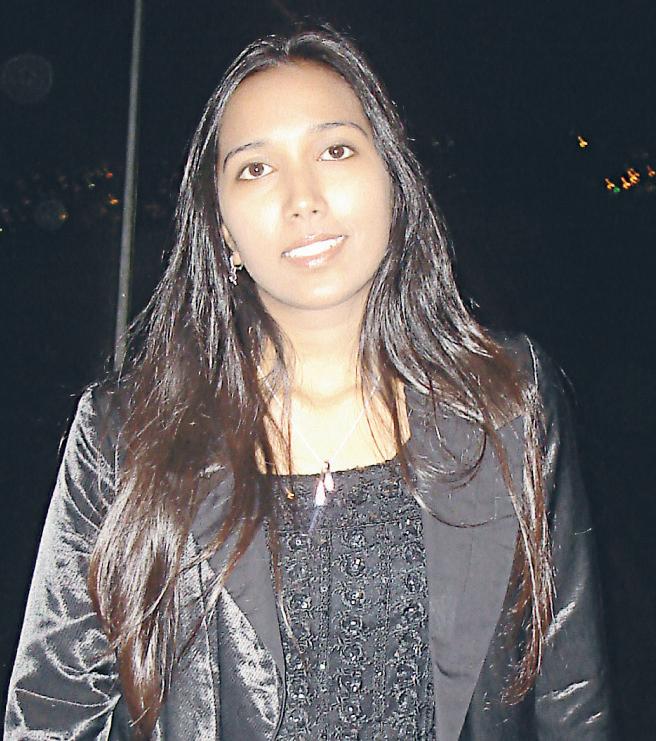
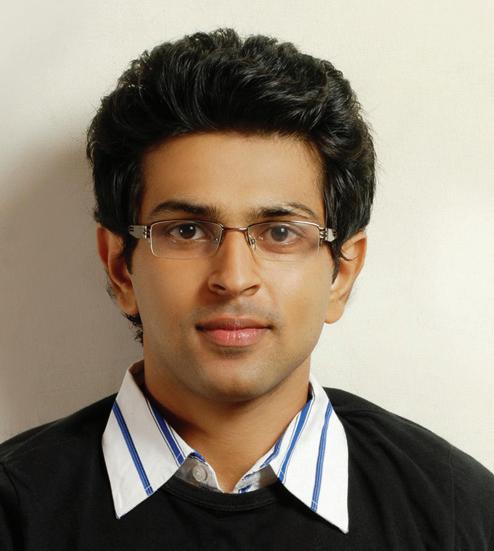
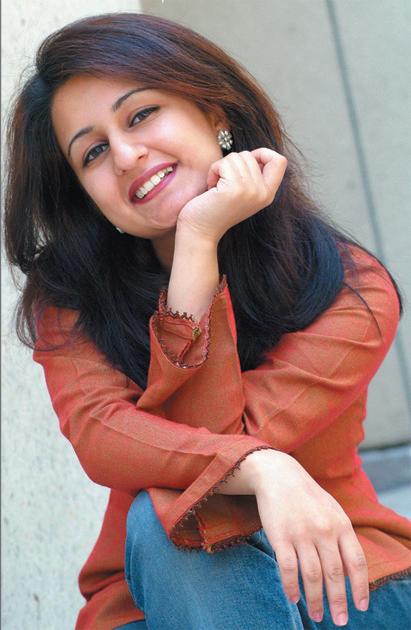
1-2 DO SITARE
EK AAWAAZ DO ANDAAZ Romantic Duets sang Magic of two voices
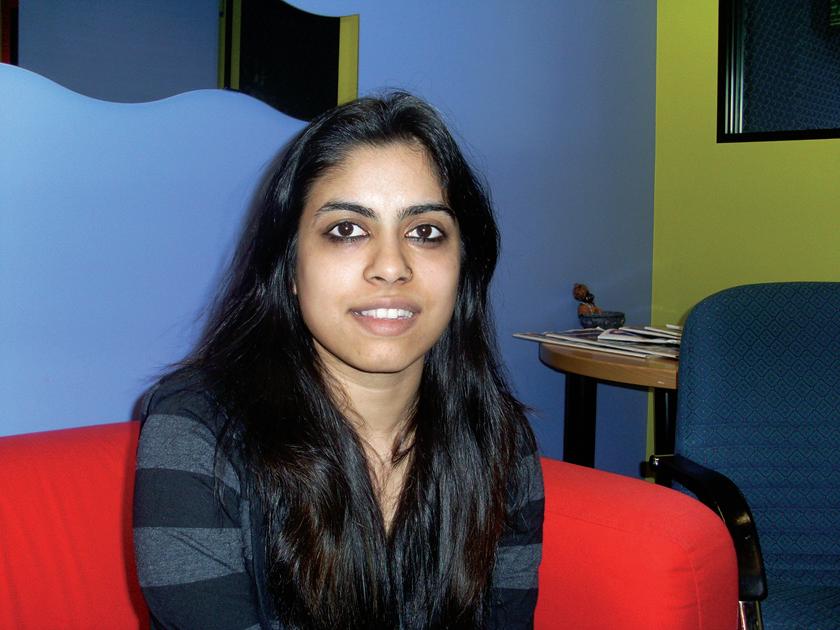
2-3 RETRO MIX VINTAGE
Hits of 1940s and 50s Hits of the Seventies
3-4 MUSICAL LEGENDS FLASHBACK
Voices of a generation Music of an era gone by A tribute to Filmmakers All time favourites Romantic Ghazals
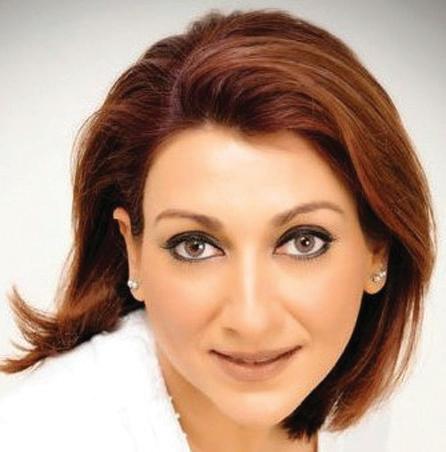
70s MAGICAL MOMENTS ULTIMATE 90s
Musical journey of 1970s Best songs of the Nineties
MAESTROS AND YAADEIN
MELODIES Remembering Superstars
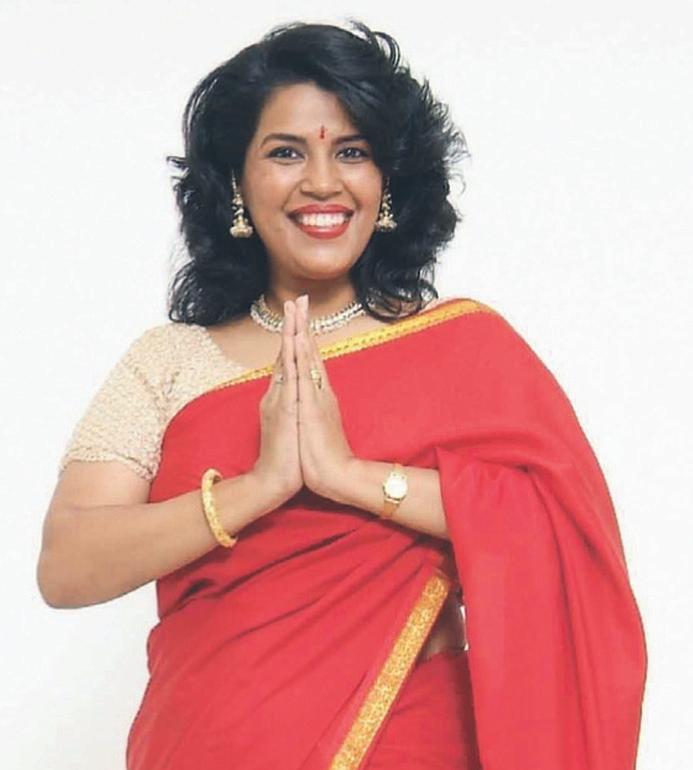
Melodies of Music Directors

4-5 INSTRUMENTAL HOUR CLASSICAL MIX RAAGA INSTRUMENTAL HOUR CLASSICAL MIX RAAGA INSTRUMENTAL HOUR CLASSICAL MIX RAAGA INSTRUMENTAL HOUR
5-6 BHAJAN PATH BHAJAN PATH BHAJAN PATH BHAJAN PATH BHAJAN PATH GURBANI GURBANI
Devotional hour Devotional hour Devotional hour Devotional hour Devotional hour
Punjabi Devotional Punjabi Devotional
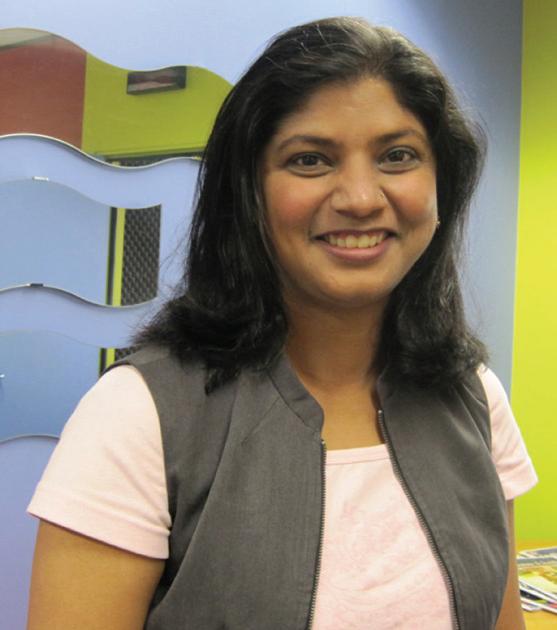
Gayatri Mantra, Shri Ganesh, Jaagrata -Mahalakshmi, Sri Krishna, Sai Baba, Shri Ram, Amrtivani, Shabad Gurbani Shabad Gurbani Shiv Darshan, Arti Shri Hanuman, Arti Mata, Arti Arti Jaap, Mantra Arti
6-7 BHAJAN PATH BHAJAN PATH BHAJAN PATH BHAJAN PATH BHAJAN PATH GURBANI GURBANI Devotional songs Devotional songs Devotional songs Devotional songs Devotional songs Punjabi Devotional Punjabi
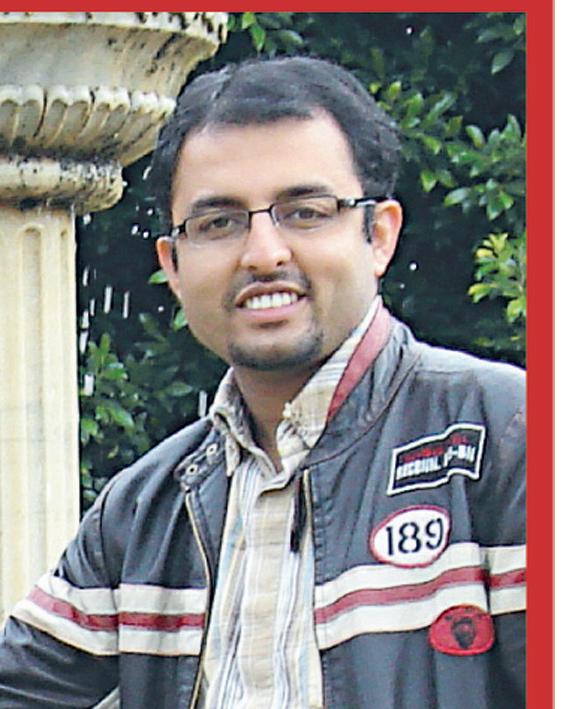
OCTOBER (1) 2010 <> 13 NATIONAL EDITION
Devotional Mulya Gunjan Gun Moti Maiya Ke Mandir Dhun Prabhu tero Naaam Shabad Gurbani Shabad Gurbani 7-8 GURBANI GURBANI Punjabi Devotional Punjabi Devotional 8-9 GURBANI GURBANI Punjabi Devotional Punjabi Devotional 9-10 10-11 11-12 PM 12-1 INDIAN LINK TWIST LIVE INDIAN LINK MANGTA HAI REQ HOUR MASTI KI ONCE MORE ONCE MORE Aap ki farmaish PAATHSHALA LIVE Dialogues, Songs, Dialogues, Songs, interviews interviews 1-2 GOLDEN OLDIES THE HIT LIST GOING SOLO WOH LAMHEY GOING SOLO WOH LAMHEY Hits of yesteryears Featuring hits of artistes All time hits of your The year of a hit film All time hits of your Classic songs and films favourite voices of Bollywood favourite voices of classic times 2-3 ALL FOR LOVE TOTALLY 2000 MEMORABLE DUETS ULTIMATE 90s MEMORABLE DUETS 10 LOVE SONGS For him and her Romantic Hits Duets Forever Best songs of the Nineties Evergreen Duets Fall in love 3-4 ZARA GUNGUNAYE TA RA RUM PUM MAST MIX CAFÉ INDIAN LINK SIZZLING HITS MAST MIX CHALO Sing along, hum along Bollywood aur Pop Masti Groovy mix Item/dance songs Bollywood aur Pop Masti Melodious Mix 4-5 POPCORN 20 KA 10 20 KA 10 20 KA 10 (Pop Masti) (Top 10 Masti) (Top 10 Masti) (Top 10 Masti) Top 10 countdown Latest Top 10 countdown Latest Top 10 countdown Latest Top 10 countdown 5-6 MAST MIX Bollywood aur Pop Masti 7-8 AAJA NACHLE Nonstop party mix 8-9 REMIX HOUR Remix songs 9-10 EK AAWAAZ DO ANDAAZ TOTALLY 2000 Magic of two voices The new era 10-11 20 KA 10 GHAZALS 20 KA 10 TOTALLY 2000 GHAZALS DIL KI KALAM SE GOLDEN OLDIES (Top 10 Romantic) Finest Collection (Top 10 Romantic) The new era Popular Ghazals Best of Hindi Lyricists Hits of yesteryears Latest Top 10 countdown Latest Top 10 countdown 11-12 TOTALLY 2000 RAAT KE HUMSAFAR DIRECTOR SPECIAL SUERSTARS CHALTE CHALTE RAAT KE HUMSAFAR CLASSIC HITS The new era A musical journey A musical journey Musical Hits Theme based songs A musical journey Classic Hits of Classic Films YOUR GUIDE
INDIAN LINK RADIO Subscribe to Indian Link Radio for $9.95 each month. 24 hours, 7 days Indian Link Radio * Conditions apply: Minimum 12 months subcription, $50.00 refundable deposit LOCAL INDIAN RADIO IN AUSTRALIA Morning Masti LIVE (Talkback, Bollywod Bakwas, IT trends, money talk, latest Australian Indian events, total masti, travel, jokes,sher-o shayari,music) JAAGO NA LIVE (Overnight news headlines, traffic, weather, talk back, dicsussions, box office reviews, music etc) BBC HINDI NEWS BBC HINDI NEWS LIVE 20 KA 10 (Top 10 Masti) Latest Top 10 countdown RAAT GAYI BAAT GAYI LIVE (Traffic, News of the day, Fashion, Talkback, Bollywod Bakwas, IT trends, Money talk, latest Australian Indian events, Total masti, Talking points, Requests) MISSING SUNDAY LIVE (Local artists, pop music, gup shup, requests) FIJI INDIAN SHOW LIVE MASTI KI PAATHSHALA LIVE (Bollywood hit and miss, days of our lives, news, requests, your views, aap ko gussa kyuan aata hai) MAIN HOON NA LIVE (Bollywood news, current issues, weather, request, travel, immigration advice, money matters)
TO



Dementia expert named Scientist of the Year
A distinguished and talented individual, committed to the cause of helping those suffering from dementia, claims a well-deserved award
BY USHA RAMANUJAM ARVIND
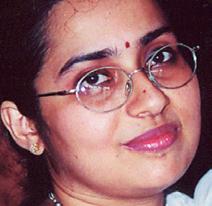
Eminent writer, UNSW Scientia Professor and Clinical Director of the Neuropsychiatric Institute (NPI), Dr Perminder Singh Sachdev has been awarded 2010 Scientist of the Year for Biomedical Sciences.
The award, which was established in 2008 by the NSW Office for Science and Medical Research (OSMR), “recognises the State’s leading researchers for cutting edge work that generates economic, health, environmental or technological benefits for NSW”.
Congratulating the India born and educated academic, whose core clinical interests include neuropsychiatry and psychopharmacology, UNSW Dean Peter Smith stated that the OSMR citation was “a prestigious acknowledgement of the great work he is doing”.
“It is an encouraging recognition of our work for the past two decades”, Dr Sachdev told Indian Link, “particularly given that the awards are only in their third year. That makes it especially important”. “And I could not have achieved it without the support of my wife Dr Jagdeep, who has steadfastly been there for me”, he gratefully added.
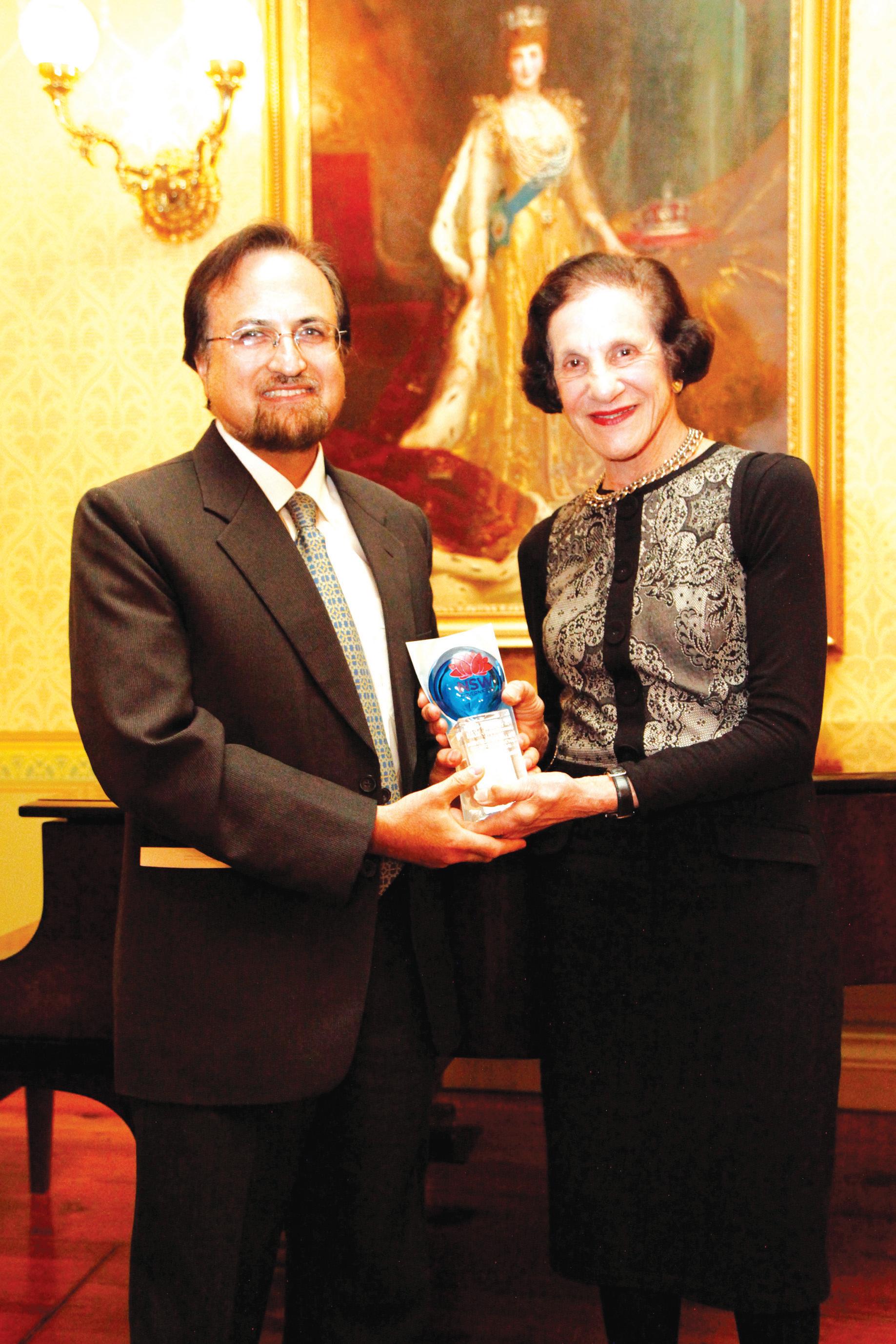
prevalence of neurocognitive disorders is increasing at an alarming rate. The cost to society and the economy is indeed huge”, admitted Sachdev.
Thankfully, there is a worldwide effort now to develop new intervention strategies, which include drugs to prevent the development of pathology or to slow its progression, he acknowledged. Likewise other strategies are being examined as well, including ways to increase the plasticity of the ageing brain. “We are also developing treatments such as cognitive and physical activity to slow down cognitive decline”.
In this context NPI has a close collaboration with researchers at Sydney Uni for a smart trial to help slow the progression of impairment in those with mild memory problems. “And it is very likely that it will become a commonly applied intervention”, he explained.
NPI has also made significant progress on the stem cell front. Dr Sachdev’s team developed a neural stem cell three years ago to trial treatments for neurodegenerative disorders. The group is currently experimenting with stem cells from embryonic tissue, adult dogs and adult humans to develop cell lines targeting Alzheimers and dementia sufferers.
Dr Sachdev’s team developed a neural stem cell three years ago to trial treatments for neurodegenerative disorders
Winning accolades, however, has been a lifelong tradition for the acclaimed scholar with quite a Midas touch.
Besides striking gold at the HSC and at the under graduate medical levels, the former president of the International Neuropsychiatry Association, was named best all rounder at his alma mater, All India Institute of Medical Sciences (AIIMS) New Delhi. International citations and honours have effortlessly come by the erudite academic, who migrated to NZ in the late eighties to complete his doctoral thesis in ethno-psychology.
The NPI, with which he has been associated since his move to Australia in the early nineties, is an elite tertiary referral unit for complex neuropsychiatric disorders at the Prince of Wales Hospital.
“We see a range of disorders, which lie at the border of psychiatry and neurology”, he explained.
“Our particular focus has been cognitive ageing, dementia and other neurodegenerative disorders and Tourette syndrome. As well, we conduct studies on psychiatric disorders associated with epilepsy, stroke, brain tumours, adult ADHD and a range of other disorders. We also have specialized projects on obsessivecompulsive disorder and anorexia nervosa”, he indicated.
The articulate neuropsychiatrist is also heading a brain stimulation program, which is investigating new treatments such as transcranial magnetic stimulation and vagus nerve stimulation.
“As Australia’s population ages, the
While his early focus at NPI was on drug-induced movement disorders like akathisia, tardive dyskinesia and neuroleptic malignant syndrome, Dr Sachdev soon moved onto dementia, in particular, risk factors, biomarkers, neuro-imaging and neuropsychology.
“My team began to specifically focus on vascular dementia”, he reminisced.
The second most common cause of dementia worldwide, after Alzheimers, it is caused by disease in the blood vessels that supply the brain.
“We initially examined the clinical features and showed that memory impairment is not the early feature of this disorder. Rather it is the small vessel disease, even in patients with stroke. Likewise, we also showed that high homocysteine may be a risk factor in brain atrophy and small vessel disease.”
Dr Sachdev is now heading an international effort to define the criteria for the diagnosis of vascular dementia.
“We are conducting a number of longitudinal studies to examine the development of cognitive impairment, including memory and ageing study, older Australian twins study and Sydney centenarian study. NPI is also working with researchers at ANU on the PATH (Personality and Total Health) through Life study”.
Besides publishing hundreds of research papers and scientific texts, Sachdev has recently forayed into the fascinating grey area between fact and fiction. A talented and empathetic wordsmith, his maiden literary effort, Yipping Tiger and other Tales Rotary Knowledge Dissemination award, taps into his extensive research experience to explore the power of the human brain. He was a special invitee at the 2010 Melbourne Writers Fest.
OCTOBER (1) 2010 <> 15 NATIONAL EDITION
SPECIALREPORT
www.indianlink.com.au
Dr Perminder Sachdev receives his award from NSW Governor Prof. Marie Bashir
Matters of the mind
A new service is launched for mental health awareness. FARZANA SHAKIR reports
Share and care. That is the catchphrase of Mindmirror, the first free mental health awareness service for the subcontinent community in Sydney.
Launched on 2 October, the event coincided with the birthday of Mahatma Gandhi who famously said, “There is nothing that wastes the body like worry”. In addition it promoted the Mental Health Month which is celebrated in October.
The service is the brainchild of Shweta Saxena, an India-trained clinical psychologist currently working as a volunteer coordinator for Mental Health Professionals Network.
Mental health disorder affects one in five adults every year in Australia and since Indians are the third largest ethnic group here, Shweta believes it is probable for all Indians here that someone close to them might be affected directly or indirectly, be it in the family, friends or workmates.
After heart disease and cancer, mental health conditions are the most prevalent medical issues in Australia. And with so much stress on increasing awareness and providing support for mental health sufferers and their families in Australia, was there really a need for another such service?
“I felt there was a void in the system for a platform especially for the Indian families in Sydney,” Shweta noted. “There is room for a service whereby community members can address their mental health issues in a setting closer to their own culture, where they can get professional advice in their own language, referrals to relevant specialists, information about the services available, form a community network and generally become aware of their mental well being”.
Shweta plans to organise one group session of Mindmirror every month in which professionals in the field of mental health will be invited to give talks. She pointed out that though Mindmirror has been founded with the aim to benefit Indian Australians, members of all communities are welcome to avail of the services offered.
“Anyone who has concerns about their mental health can contact us, even a child. The service is for the public in general but I think the section benefitting most from it would be the new migrants from India who typically go through adjustment problems, anxiety and depression during
their initial five years in Australia. These if left unaddressed can lead to bigger mental health issues and in many cases substance abuse.”
Shweta believes that the reasons why many people don’t seek professional help for mental health problems could be myriad, but the most common ones seem to be stigmatization, lack of awareness of what help is available and not knowing where to go for help.
“This is where Mindmirror comes in. Our

aim is to help bring awareness and address these problems by signposting the way to promotion of mental health, providing information about the help available in local suburbs and promoting general health and well being.”
At the Oct 2 launch, there were four talk sessions by professionals. Dr Neeta Waje highlighted the importance of an open relationship with your GP. Andrew Reid, Community Development Coordinator with the Smith Family spoke about settlement
services available for Indians.
‘We are here for you’ was the topic of Shelley Sha’s speech. Shelley is the Coordinator for Respite Services SFNSW.
Anita Harris, Registered Psychologist at Psych Central talked about mental illnesses and stigmatization.
And then there was the ‘Unworry and be Happy’ session by the founder of Mindmirror Shweta Saxena, who will act as the wellness trainer and assessor for the group.
“The overwhelming response to the launch of Mindmirror by the community is very encouraging,” Shweta said later. “Participants attended the launch event in more numbers than expected. We disbursed information about mental health resources to some 42 people that day”.
A number of community dignitaries attended, including UIA President Aruna Chandrala and BVB Australia head Gambhir Watts. There were goody bags, brochures, booklets, CDs, flyers and refreshments on offer. Activities on mental health, case study scenarios and videos kept the participants entertained during the program.

The event ended on a light note with the laughter therapy. In keeping with Gandhiji’s message of dispelling the darkness the diya was lighted at the end of the ceremony, symbolising that by the end of the event, the light of awareness of mental health was successfully achieved.
Shweta maintained she is very passionate about mental health and this project is something very close to her heart.
“Come care and share, open up, address your problems, network with others and get help: as single we break, and together we make. There is so much help and support available in Australia - come forward and benefit from the services at hand.”
Shweta disclosed that her concept has attracted approval with requests for similar groups to be initiated in Canberra and Melbourne as well. In the meantime to keep up with the demands she has started a blog where readers can post their problems, doubts and queries related to mental health and mental illnesses.
http://mindmirror4u.wordpress. com/2010/09/27/are-you-minding-yourmind/
16 <> OCTOBER (1) 2010 INDIAN LINK
COMMUNITYSCENE
www.indianlink.com.au BEST TIMBER FLOORING Lic No: 206453C Specialist in timber flooring & supply installation • Laminate (variety choices) • Engineering • Floating • Solid pre-finished & Raw • Warehouse Direct to public • Satisfaction guarantee • Free quotes Showroom: 1/42 Harp Street Belmore NSW 2192 TEL: 02-9787 5630 MOB: 0425-249 877 (Raymond) Liquor Business for Sale • Sydney Western Area • Weekly Turnover $18,000 + • Outstanding Opportunity • Great profit margin • High Density Residential Area • Ample Parking • 3+5+5 Years Lease • Asking $ 350,000+ STOCK Contact on 0403 493 824
GP Dr Neeta Waje makes a point as Shweta Saxena, founder of Mindmirror looks on

OCTOBER (1) 2010 <> 17 NATIONAL EDITION
Keeping Gandhi’s ideals alive
Striving to retain Gandhiji’s message of peace and harmony in today’s world is a challenge worth the effort
BY MAMTA SHARMA
Mohandas Karamchand Gandhi. A lean elderly man with a stick in his hand and a cloth draped around him, who won India its freedom from bondage, slavery and British imperialism, became the peace hero of the world in the 20th century. Over 62 years may have passed since his death on January 30, 1948, but his concepts of truth and non-violence continue to inspire and guide many people in the current national and global scenario where lives are marred by hatred, violence, fanaticism, war and divisive politics.
One such organisation promoting Gandhian peace and non-violence messages in Australia is the Gandhi Peace Centre founded by Ronnie D’Souza. Actively involved in promoting Gandhi’s messages in India since 1990, Ronnie and his wife Bharati migrated to Australia in 2001 and in 2002 and began children’s activities in their small unit in Harris Park. Since then they have been organising various social, cultural, value based, leadership development and character building programs for children.


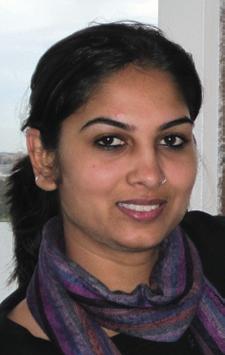
“In 2007 a group of ten professional social workers from Mumbai University residing in and around Parramatta held the first public function of Mahatma Gandhi’s birth anniversary in Granville, celebrating the UN-declared International Non-Violence Day, the first of its kind in Australia. In 2008 we incorporated our organisation under the title of the Gandhi Peace Centre Australia,” says Ronnie.
“Gandhi Centre committee members are professional social workers who work full time in their respective fields and provide volunteer services over weekends and weekdays as per their availability,” says this enthusiastic khadi-clad Gandhian. “We do not have funds, neither have we asked for funds from others. Bharati and I have contributed $5000 to purchase a container full of Gandhi Books from India. We exhibit and sell these books at a 50% price discount in public programs mainly to cover basic expenses and promote Gandhian literature in Australia”.
Paying tribute to Mahatma Gandhi, the Centre and Parramatta City Council Libraries jointly organised a weeklong celebration of the International Day of Non Violence
Paying tribute to Bapuji, as Mahatma Gandhi is popularly referred to, the Centre and Parramatta City Council Libraries jointly organised a weeklong celebration of the International Day of Non Violence to observe Mahatma Gandhi’s 141st birth anniversary. On October 2, an hour long inaugural event was held in the Parramatta City Library. Local community centres in Harris Park and Parramatta, the general public, newly elected Lord Mayor of Parramatta Council John Chedid, Councillor Prabir Maitra, council officials and children participated in support of the event. Parramatta City Council has supported week long exhibitions of Mahatma Gandhi books and posters in its six branches of Parramatta, Dundas Valley, Ermington, Granville, Guildford and Constitutional Hill.
Pledging his ongoing support to promote further activities of the Gandhi Peace Centre Australia, Lord Mayor John Chedid said, “Parramatta City is the cauldron of multicultural communities and Gandhi’s peace and harmony programs take a prime position in promoting peace and harmony in the city.”
Mr. Abbas Alvi, director of Bharatiya Vidya Bhavan, Australia and a staunch supporter of the Gandhian movement, read out a peace and harmony poem. He stated that Gandhi is very relevant to our society and his teachings and values should be kept alive by promoting value-based activities.
A not-for-profit, secular and a charitable organisation, the Gandhi Peace Centre Australia works with the children, youth and communities in Sydney. The organisation believes in promoting peace and harmony
in society on a model based on reaching the community through children. The Centre has been working with children aged between 8 to 16 years on fortnightly basis since 2003.
“We do not have any office space, hence we operate from our residential unit in Wentworthville,” Ronnie elaborates. “Group discussions are held centred around roles and responsibilities in keeping the community clean, protecting the environment, community gardening and healthy eating. The children and youth are given projects in areas such as ‘home made organic products’, ‘health impact of soft drinks on children’ and studies on ‘social reformers of my choice’. The children’s programs are mainly conducted through games and fun and are charted at developing their leadership qualities and character formation. This is completed through various interactive activities”.
The Centre also conducts school holiday camps for the children and to address issues impacting local communities, and members attend community consultation meetings with government and non government organisations.
However, it has been a tedious task for the Centre to convince the majority of parents to send their children to attend Gandhian activities. “Parents are often caught up with their work, house, mortgage, investment property, children’s tuition, etc and often neglect the socio-cultural and spiritual development of their children. Our weekly group attendance of children varied from 5 to 25 children, and then back to nil. Our group consisted of children from African, Anglo-Saxon, Chinese and Indian backgrounds. Very recently we had eight children from a Sudanese background; they were refugees and have now been moved to different suburbs due to their resettlement programs,” says Ronnie.
Ronnie reveals that as a child, he always did the opposite of what Gandhi did at the same age, but he used to experience guilt and feelings of remorse for his actions. So when was it that the Gandhi influence took over? “During my Bachelors and Masters degree studies in Social Work, I studied various ideals in the world and their impact on world history. I was highly influenced by Gandhi’s teachings and his practical approaches to situations,” says Ronnie.
But are Gandhi’s teaching relevant in today’s world
meaningful life, responsibility towards the community, working for common good and thoughts on the wellbeing of all are the basis for living a spiritual life,” he says.
Ronnie claims that many Australians also firmly believe in Gandhian teachings and practices.
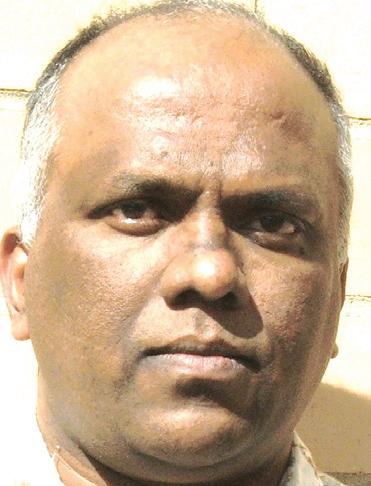
“The Australian public admires Mahatma Gandhi and supports our peace initiatives here. The Mayor of Parramatta City Council John Chedid is from a Lebanese background and has been a firm supporter of our organisation, along with many Aussie friends from the Anglo community in Parramatta, who have actively supported our cause. We have won over Australian friends from Greek, Maltese, Lebanese, Bangladeshi, Pakistani, Irish and Germany backgrounds now settled in Australia in Western Sydney, and we have many supporters in promoting Gandhi activities in NSW”.
Working on value-based education is not an easy task as one cannot demonstrate any concrete achievement in terms of statistical data. The messages of peace and non-violence never fade away. Members at the Gandhi Peace Centre Australia take away with them messages of love, peace and harmony. “We are not concerned whether people respond to our program or not. We believe in Rabindranath Tagore’s motto of “Ekla cholo re” (Walk alone). Tagore’s poem exhorts us continue to do our work, despite abandonment or lack of support from others,” concludes Ronnie.
The Gandhi Peace Centre Australia is seeking volunteers to promote its peace activities in the Wentworthville and Parramatta areas. If you are a musician, teacher, artist, or simply a kind human being and would like to contribute your services at least once a month for two hours, please contact Ronnie D’Souza or Bharati Mehta on gandhipeacecentre@hotmail.com or 9687 0061 and leave your details.
18 <> OCTOBER (1) 2010 INDIAN LINK
www.indianlink.com.au COMMUNITYSCENE
Ronnie D’Souza

OCTOBER (1) 2010 <> 19 NATIONAL EDITION
An exhibition where you can see, make and touch
Artist Simryn Gill’s solo at the GoMA allows for interesting audience participation
BY SHIVANGI AMBANI-GANDHI
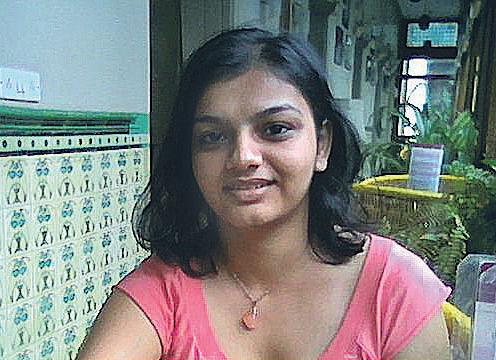
For those of us who call Australia as well as India home, Simryn Gill’s artistic explorations of notions of place and history will have a special resonance. “As an artist who lives between Australia and Malaysia, I think her work has a lot to offer in thinking through our relationship to place – it is very open and generous rather than didactic or descriptive,” says Russell Storer, Curatorial Manager, Asian and Pacific Art at the Gallery of Modern Art, Brisbane (GoMA) and curator of Simryn Gill: Gathering, a touring solo of Gill’s works from the last five years. The exhibition is showing at the GoMA until October 17, 2010.
The exhibition showcases Gill’s varied practice and use of a range of media - from photographs to organic and bronze casts, as well as paper sculptures. “While Simryn works with a wide range of materials, her methods haven’t changed much over the years – she has always used quite simple techniques such as casting, rubbing, photographing, tearing and collecting,” says Storer. “I felt that there was a line through all of this, which the exhibition title ‘Gathering’ refers to - it is this process of bringing things together (often objects she has found) and submitting them to these processes to try and make some new connections between them.”
(Gill’s)
invites audiences to add their own paper boat to the installation using pages from a 1968 Encyclopaedia Britannica
For instance, in Throwback (2007), Gill gathered natural materials - termite mound soil, river clay, laterite, seashells, fruit skins, leaves, bark and flowers - from near her studio in Port Dickson, Malaysia, and used them to create casts of the inner machinery of a 1985 Tata truck, which had spent its working life plying the roads of Malaysia.

She used the casting technique again in Untitled (interiors) (2008) - but using very different materials, and to a very different end. This work consists of bronze casts of the empty spaces created by cracks in dry ground, found near Nyngan in western New South Wales and near Lake George, just outside Canberra.
“Simryn’s casts suggest to me a sense of instability and irresolution,” says Storer. “A number of her projects begin with a conceptual proposition – such as, what would the ‘inside’ of a place look like? Her work Dalam, for example, was several hundred photographs of living rooms across Malaysia, to envisage what a collective ‘inside’ defined by nation might be. I see Untitled (interiors) in a similar way, imagining something that is invisible or intangible but loaded with a range of shifting meanings –in this case the negative space of a crack in the earth.”
To add another layer of meaning to the work, Gill worked with Apisit Nongbua, a traditionally trained bronze artist based in Bangkok, whose family has been making Buddhas for temples and the Thai royal family for generations. “By using bronze, a material associated with classical sculpture in Asia and Europe, the work takes on other resonances,” says Storer.
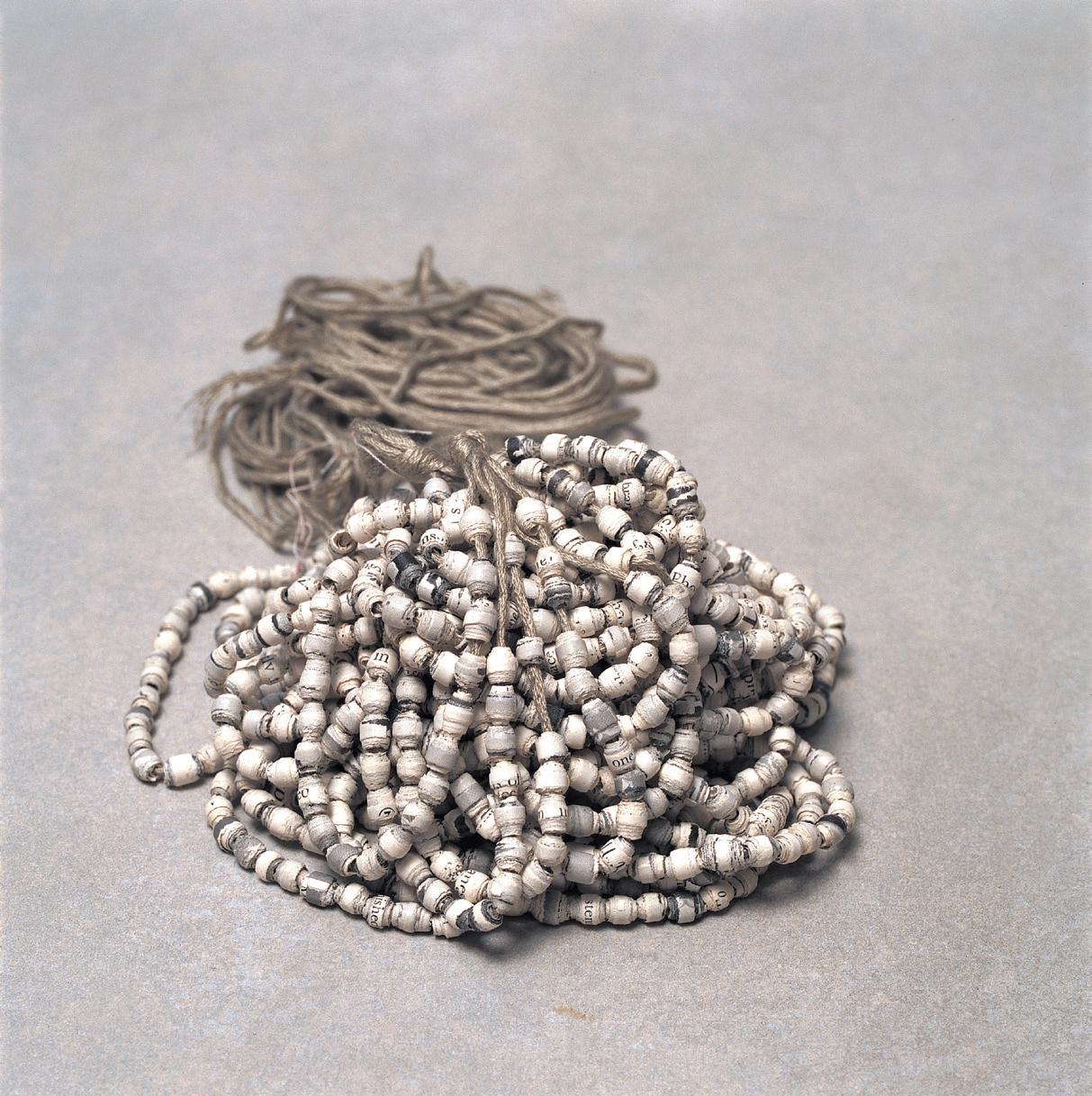
Is the bronze sculpting technique in Thailand any lesser than the classical sculptures of Europe, Gill seems to ask.
Similarly, in My Own Private Angkor, a series of black and white photographs, she seems to compare the subliminal beauty of the ruins of an abandoned housing estate in Port Dickson with the tourist magnet Angkor Wat.

“The estate was completed but never occupied, and is now being overtaken by plants and animals, like a modern ruin. People have been stealing the aluminium
window frames and carefully leaving the glass panes leaning against the walls – they are miraculously all intact. Simryn photographed dozens of these glass panes in situ, in a very formal way, and they resemble strange modernist sculptures in this overgrown, tropical place,” says Storer. “They are very uncanny images but also very beautiful, with the way that light falls across the glass or the tracing of vines and rubber strips along the floor. They also say a lot about shifting fortunes and ambitions in the world. I find them very moving.”
Gill’s work, while involving audience contemplation, also sometimes involves physical participation to unravel meanings. Paper Boats invites audiences to add their own paper boat to the installation using pages from a 1968 Encyclopaedia Britannica. “Paper Boats can appear to be somewhat violent, with the tearing of a page from a book, but it is also very intimate and contemplative, with the invitation to fold the page into a paper boat,” says Storer. “The contribution by the audience is quite open –there is no fixed instruction for the boat, for example.”
The element of audience participation is essential to the practice of the art institution allowing visitors to make their own meanings from art works, rather than be taught didactically through labels. And this
approach works to the instititution’s benefit as well: “The participatory works have been very successful during the exhibition tour,” says Storer. “In Sydney, the work 32 Volumes, which required visitors to sit down with a gallery attendant and leaf through a series of erased books, was one of the most popular works in the show, as it generated a range of conversations and encounters.”
Another important part of the exhibition is the ‘blue room’, a space filled with experimental works, studies, out-takes and personal collections that aim to provide insight into Gill’s artistic process. “It’s quite playful and idiosyncratic,” says Storer. The exhibition also provides other ways of engaging with the artworks, rather than merely viewing and appreciating. “There is the process of touch involved in Garland, for example, where people can handle and rearrange objects collected from the beach in Malaysia,” explains Storer. “It is really another way to enter an art work, using other faculties than just looking. There are no clear or determined outcomes, but people really enjoy the chance to be involved in their own way.”
Simryn Gill: Gathering, on show until 17 October 2010, in Galleries 3.5 & 3.6, GoMA, Brisbane.
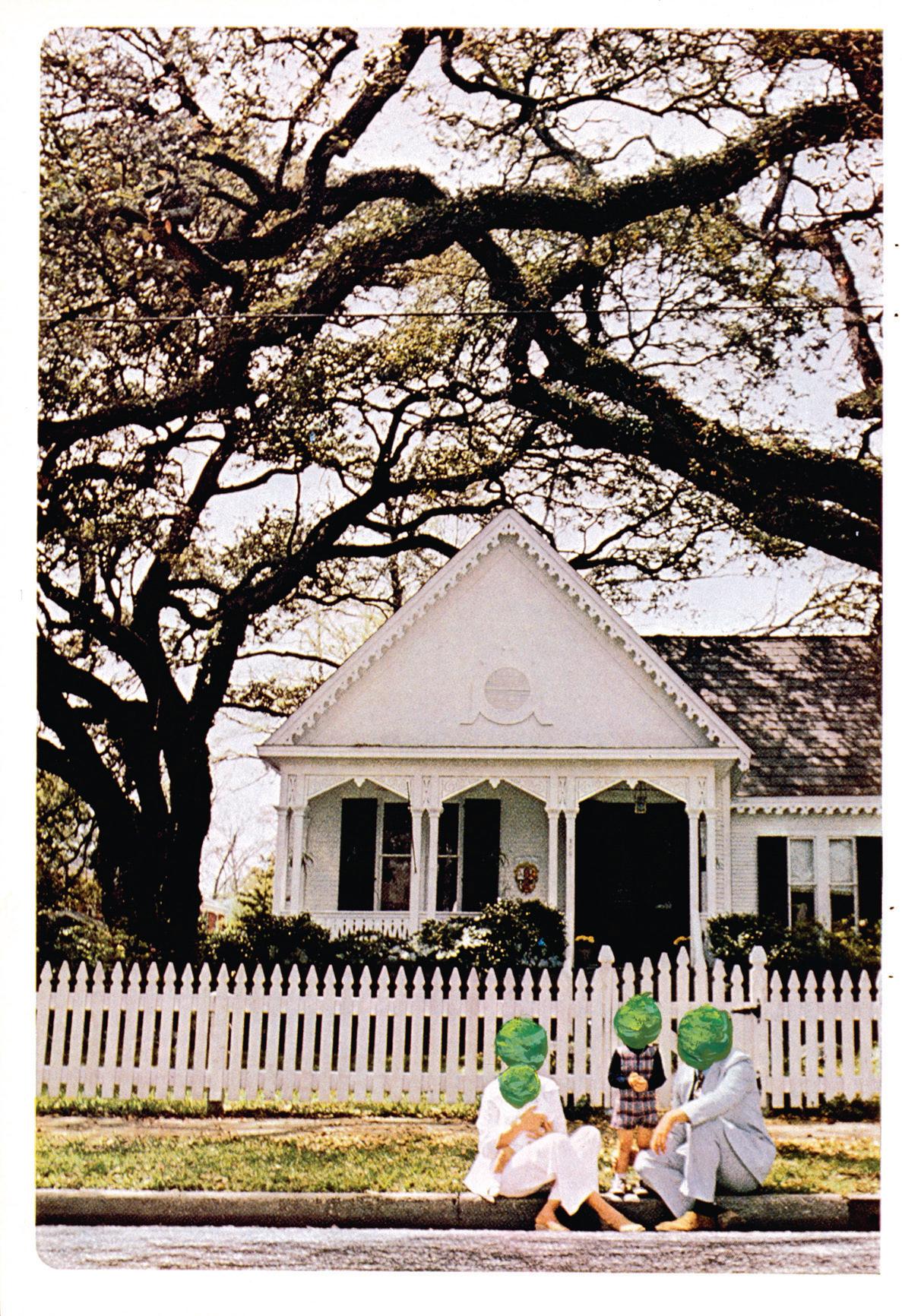
20 <> OCTOBER (1) 2010 INDIAN LINK
www.indianlink.com.au ARTS
PaperBoats
(Above) Untitled photograph from Vegetation shoot, northern New South Wales, 1999 (left)Untitled 1999-ongoing
Untitled photograph from StandingStill shoot, Malaysia 2003
Pearls 1999 - ongoing
Queer film fest highlights challenges of South Asian GLBT community
Satrang Film Festival may be a little late in celebrating the repeal of Section 347 - a colonial-era Indian law that made homosexuality punishable by up to 10 years in prison as a crime against nature - but was neverthless a well cosidered and thoughtful selection of films.
The 4-day fest, spread over 2 weekends brought together a good mix of popular Bollywood films, international features, short films as well as documentaries exploring the particular challenges faced by the South Asian GLBT community. With films representing a range of nations - US, UK, Australia, India and Nepal - the fest truly brought the vibrant mix of voices to which the festival’s name aspires.
The festival began with the film that has been touted as India’s answer to Brokeback Mountain - Dunno Y… Na Jaane Kyun. The film was much publicised in the Indian media for its portrayal of a gay kiss, but was also considered by Ashok Row Kavi, editor of Bombay Dost, India’s first gay magazine, as being a thought-provoking portrayal. He told the Guardian, “It talks of the complexities [of being gay] in India. Taboos are still very strong and hopefully it will change things.” The film featured some big names, including Helen, Zeenat Aman and Aryan Vaid, and even Lata Mangeshkar lent her voice to a song for the film. The film’s leading stars - Kapil Sharma and Yuvaraaj Parashar were also at the festival for a post-screening Q&A session.
Speaking on Indian Link Radio with presenter Sagar Mehrotra, the film’s stars described the film as a simple love story. Yuvraaj, an Agra boy, described going to Mumbai’s gay parties to learn the nuances and get a feel for the character he would be playing. Not gay himself in real life, he had hesitated in taking on the role, but surprisingly, it was his father who egged him in: “You’re an actor,” he told his son, “Play it like any other role”.
Of course, the role landed in his lap after many mainstream Bollywood stars tuned it down. “They will readily play the roles of terrorists,” Yuvraaj lamented, “but will hesitate to even consider playing a gay man”.
Kapil, also the writer of the film, revealed that some stars had agreed to do the role, on the condition that the crucial 90-second kiss scene would be scrapped. But he stuck to his guns. In fact, both actors revealed that it was difficult to do the scene, but it turned out alright in the end. The double standards of the mainstream stars, especially the men, came in for much discussion. Women such as Shabana Azmi, Nandita Das and Lisa Ray have played gay roles quite successfully, and their careers certainly did not nosedive – in fact they went on to receive critical acclaim.

The film is ground-breaking in India, because, as Sadhana Jethanandani, (chair of Trikone Australasia and director of the film festival) notes, “It does not make a caricature of its protagonists, but is capturing a change

in the society”.
Lisa Ray and Sheetal Sheth were the stars in two features - The World Unseen and I Can’t Think Straight - both UK productions. The World Unseen sensitively uncovers a range of issues - from women’s sexuality, to their status in society, and attrocities of an apartheid society in 1950’s South Africa. I Can’t Think Straight, in contrast was a glossy tale of love between a rich Palestinian woman and a British Indian woman.
68 Pages, a hard-hitting film, uncovered 3 stories of pain and fear, humiliation and rejection of a sex worker, a gay man and a transsexual bar dancer.


The issue of homosexuality and parental pressure was dealt with some humour in the short film, Mr & Mrs Singh - a take on the Brad Pitt-Angelina Jolie blockbuster, Mr & Mrs Smith. Like Brangelina, the couple in this film also have much to hide from each other, but their secrets are of a different kind.
Some of the films in the festival lacked the power of strong narrative or good filmmaking techniques, but were interesting nontheless, especially the two focusing on the struggle in Nepal for the recognition of a third gender by the government, Struggle Within and Other Nature
The festival, supported by ACON, is certainly a valiant effort to bring South Asian GLBT stories from around the world to audiences in Sydney.
OCTOBER (1) 2010 <> 21 NATIONAL EDITION
ARTS
Shivangi Ambani-Gandhi
www.indianlink.com.au $950 plus Tax $699 plus Tax $416 plus Tax $699 plus tax Open 9 am to 9.00 pm all 7 days Please walk in or call our ALL NEW branch at "LITTLE INDIA WENTWORTHVILLE" on 02 91515665 (4.00 pm to 9.00 pm all 7 days.) or main office from 9 am to 5.30 pm Mon to Fri on 02 91515666
Helen and Zeenat Aman in Dunno Y
CWG celebration draws SA enthusiasm
CWG. These three letters are causing considerable consternation to Indians all over the globe. Thousands of words have already been written and thousands more will be penned in the coming days. By the time this article gets published, the much-maligned CWG may have received either a golden gong or a wooden spoon.
However, there was a large celebratory event in Adelaide on September 18, to mark the start of the Games. The air of enthusiasm, exuberance, excitement and euphoria expressed at the Entertainment Centre that afternoon, was certainly encouraging.
In an attempt to strengthen the State’s trade ties with India, South Australian Premier Mike Rann held a reception for an invited gathering of over 500 Indians representing 30 desi community groups. Also present on the occasion were Ms. Sujatha Singh, Indian High Commissioner; Mr Amit Dasgupta, Consul-General and a number of local dignitaries with links to India.
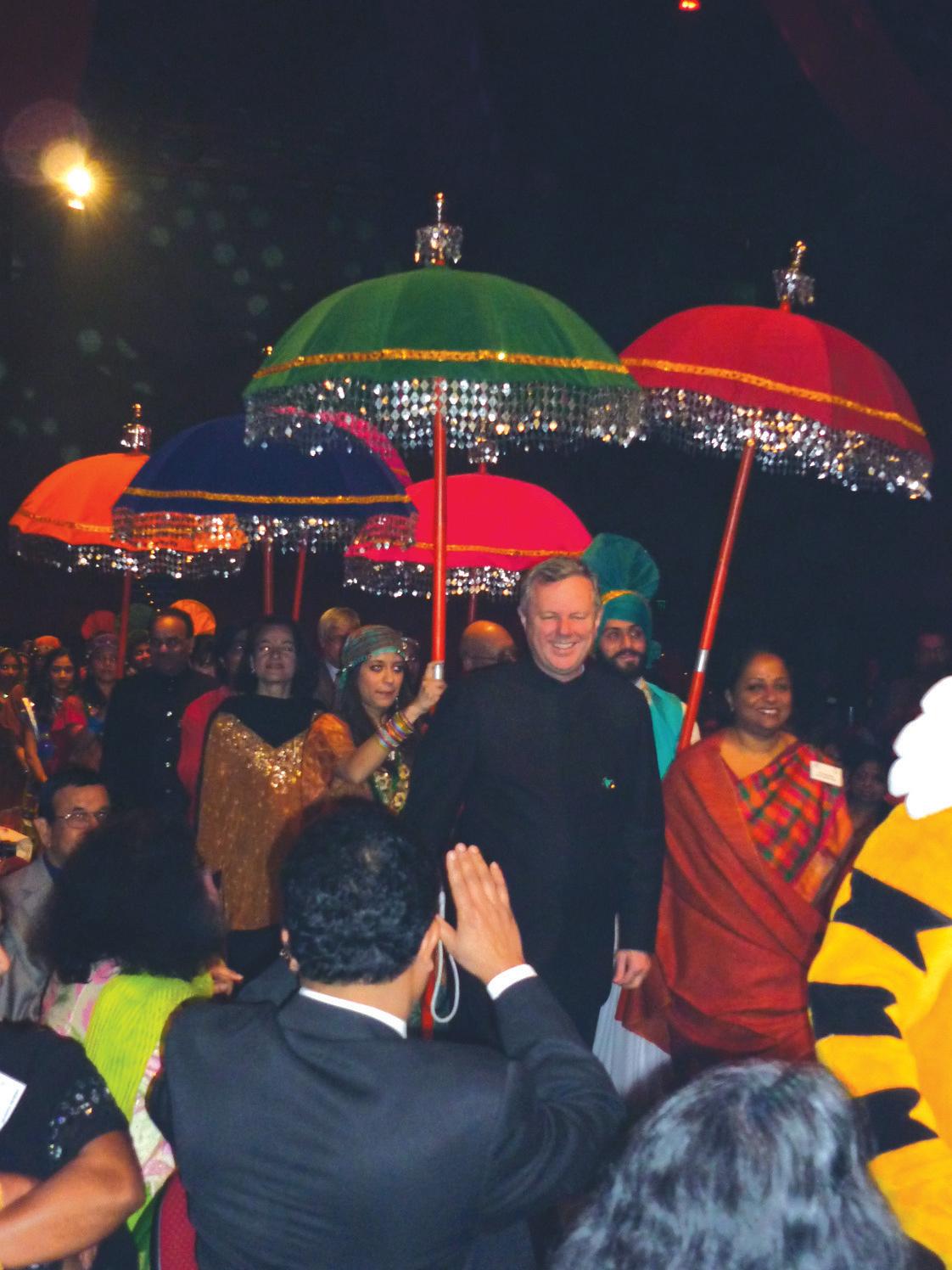
The guests were ushered in under a canopy of tasselled silk umbrellas held by young Indian gals and guys, replicating a royal procession. I don’t know how the rest of the audience felt, but I cringed at this sight reminiscent of the old colonial days, while fondly hoping that the display is not repeated in future functions. But for this, everything else that followed deserved kudos, thanks to the well-oiled drills by Retd. Major Vikram Madan, current president of the Indian Association. CWG organisers could well do with his services. The positive vibes were just pervasive.
Preceding the arrival of the chief guests, the waiting audience was entertained to promotional clips of the Games including the rollicking Tiger mascot and mandatory Bollywood touches.
It was refreshing to see the State’s Multi-cultural Affairs

Minister, Ms. Grace Portolesi, act as the MC for this Indian event. She was graceful in a silk sari fitting for the occasion, and admitted that she had been assisted by Mrs Madan in achieving the effect. Mr Rann himself dressed in a chic steel-grey Nehru jacket as he usually does at all Indian functions. Addressing the audience in this cavernous complex, the premier spoke at length of his recent trip to India to promote the state’s trade ties with the country. Mr Rann spoke in glowing terms of the growing trade relations between the state and India, referring to the recently concluded joint ventures in areas like water management, environmental engineering, etc. Understandably, there was no mention of uranium export. Making generous references to the Games, he said that Australia had been awarded 60% of work in certain areas associated with the sporting event.
The speeches were interspersed with a few wellchoreographed and enchanting dance items.
Indian High Commissioner Sujatha Singh, in her last ambassadorial assignment prior to her next posting, spoke eloquently including making a bold claim that the Delhi Games would be the best CWG ever held, to the thunderous applause of the crowd. We held our heads high.
And only three days later, news of disasters from Delhi began drifting in, rapidly turning into a deluge, to fill all forms of media in every city. The collective head of Indians changed from a state of pride to pain.
At the time of going to press, the saga still continues and predictions of any kind may prove perilous. However, I hope the doom and gloom merchants are proven wrong and the Games progressed at a promising pace by the time this report is printed.
22 <> OCTOBER (1) 2010 INDIAN LINK
www.indianlink.com.au AUSTRALIA-WIDE
It’s a royal entry for SA Premier Mike Rann and Indian High Commissioner Sujatha Singh

OCTOBER (1) 2010 <> 23 NATIONAL EDITION
It’s Ashta Ganapathi at the Bedarkars’
Five-month-old Kanek Bedarkar got his very first taste of India, Bambaiyya style, complete with all its religious fervour and street corner revelry without leaving the security of his Sydney home.
The youngster is the newest member of the Bedarkar family who are well known in the Indian Australian community for recreating the spirit of the iconic Ganesha Chathurthi festival.
Year after year Kanek’s parents Rashmi and Shailendra offer their thanksgiving to the god of good beginnings in a very special way, investing a lot of time and thought to make the experience a unique one. During the auspicious ten-day period, their home becomes a bee hive of activity. It is quite a labour of love as the Hornsby couple prepare for this all-important Marathi tradition.
“What we aim is to recreate the vibes, the magic and fervour of the festivities. And in a sense recreate a piece of India”, says Shailendra.
Mumbai and Pune of course are the places to be, he confesses, for the cities set the standard for rest of the country. “The preparation, the music, the crowd, the hymns, the din and the bustle and mass hysteria are a glorious experience not to be
missed”, he adds.
The Bedarkars first started this custom in 2003 with the Pindi Ganesha using lotus, the Hindu symbol of spirituality and potency as their central focus. Inspired by their success, the couple has become more adventurous not only with the backdrop but also the idol itself, combining tradition and spirituality with pure creativity.
Each year the Ganesha idol has been motifed with various symbolic messages, Shailendra explains. The swan, muladhara, Tirupati Balaji, a recreation of the southern architectural style were some of Rashmi and Shailendra’s recent ventures.
Their theme this year was Ashta Vinayaka - dedicated to the eight sacred Ganesha temples. Each of the Ganeshas is not only different in style but has trunk variations too. Typically, the Ashtavinayaka yatra or pilgrimage covers the eight swayambhu temples (each discovered in a unique way), scattered over Pune, Raigad and Ahmadnagar and include Moreshwar, Mahaganpati, Chintamani, Girijatmak, Vighneshwar, Siddhivinayak, Ballaleshwar and Varad Vinayak. Each of these murtis has a legend attached to it.
According to Shastra, the yatra is commenced with a visit to Moreshwar

of Moregaon and followed by Siddhatek, Pali, Mahad, Thevur, Lenyandri, Ozar, Ranjangaon, concluding with Moregaon once again.
Pujas, chanting and Prasad distribution over the ten day period culminate with the ritualistic farewelling of the clay idol in the ocean amid cheers of Ganpati Bappa Moriya.
For the Bedarkars, the celebrations offer an opportunity to live their traditions and hand it down generations, in the hope that they will sustain it.
Having been initiated into the customs so early on, Kanek and Nishtha no doubt will do their parents very proud.

24 <> OCTOBER (1) 2010 INDIAN LINK
FESTIVAL www.indianlink.com.au
Usha Ramanujam Arvind
Shai and Rashmi Bedarkar with kids Nishtha and Kanek at this year’s Ganesh Festival
Dandiya queen gets the garba crowd going
MAMTA SHARMA gets a feel for the garba scene in Sydney

Two and half year-old Yana, dressed in her blue and pink chaniya choli in bandhini print and with matching dandiya sticks in her hands, couldn’t wait to dance to her favourite song O piya..O piya...leke doli aa

The song is one of the cutest songs sung by India’s dandiya queen Falguni Pathak who made her audiences at Rosehill Racecourse in Sydney groove to traditional Gujarati and Bollywood numbers in Dandiya Bash 2010, early this month.
Falguni is unmatched in success when it comes to Navratri events. In Melbourne last year, she lived up to her world-renowned reputation, mesmerizing her audience, and demonstrating each night why she is the queen of dandiya. The success of 2009 propelled Oxides Events Management to invite Falguni back for Navratri 2010, this time for a double bonanza - to perform both in Melbourne and Sydney.
As the diva came on stage with Aao padahro mare desh being played in the background, hundreds of people dressed in colourful ethnic attire hit the floor to dance to her tunes. In no time they were swaying, lehngas and kurtas swirling, as she belted out those traditional dandiya numbers.
Earlier in the evening, the boyish star had even managed to look demure as she rolled down the window of her pink Hummer to wave to fans close up, and happily posed for photographs.
Navratri, the Festival of Nine Nights, is the most awaited festival for the Gujarati community - be it in India or Australia. This year it starts on Friday, the 8th of October and will continue for 9 days until Saturday, the 16th of October. It commences on the first day (pratipada) of the bright fortnight of the lunar month of Ashwin. The festival is celebrated for nine nights once every year during the beginning of October, although as the dates of the festival are determined according to the lunar calendar. The festival may be held for a day more or a day less.
Performed in Goddess Durga’s honour, the dandiya dance is actually the staging of a mockfight between the Goddess and Mahishasura, the mighty demonking, and is nicknamed “The Sword Dance”
The trademark of the Navratri festival is the dandiya dance - where men and women join a dance circle, holding small polished sticks or dandiyas. As they whirl to the music, they strike the dandiyas in rhythm. The other popular dance form is the garba, performed before the aarti as devotional performance in honour of the goddess while dandiya is performed after it. While garba is performed exclusively by women, men and women join in for Raas Dandiya.
Performed in Goddess Durga’s honour, this dance form is actually the staging of a mock-fight between the Goddess and Mahishasura, the mighty demon-king, and is nicknamed “The Sword Dance”. The sticks of the dance represent the sword of Durga. The costumes worn for the dances are traditional and alive with colour.
With thousands of Indians having made Australia their home, these dances have become the main attraction at community celebrations every year and this year was no different.
It was a riot of colour as young and old filled the Rosehill Racecourse in their traditional attire.
While the women wore traditional dresses such as colorful embroidered choli, ghagra (the long flowing skirt) and bandhani dupattas dazzling with mirror work and heavy jewellery, some of the menfolk sported equally elaborate turbans and kedias (the short frock).
“Navratri is the only time of the year when we get to take out our traditional dress and wear it. There is no
await Navratri,” added Meenal.
There is a blend of old and new in everything designed these days but chaniya choli patterns remain the same. Their colours are usually bright.
As Falguni performed her popular songs with the enthusiasm of a teenager, the crowd whirled and moved their feet and arms in a choreographed manner to her tunes with lots of drum beats.
Age was no bar when it came to dandiya dance. While young men and women played their dandiya sticks with precision, young kids were happy just dancing with them in their hands. And even at 60 years of age Rajeshwari matched the energy of the younger members of the family when they pulled her to join
traditional dandiya numbers
their dance circle. “It reminds me of my youth when we played dandiya for hours all together,” she said happily. “No one like Falguni when it comes to Gujarati songs.”
Value World Travel was one of the Gold sponsors.
They are committed to ‘Making it Easy’ for you to get your flight, hotel or car hire booked online - for any major location in the world. They operate on the web, where you can search for and make a booking at a time that suits you - 24 hours a day, 7 days a week.
Falguni Pathak packed up her act after four long hours that night, but for the Gujjus in Sydney it’s a long week ahead to immerse themselves in Navratri and Dussehra celebrations with all-night dandiya dances, as they combine religion and devotion with recreation and fun.
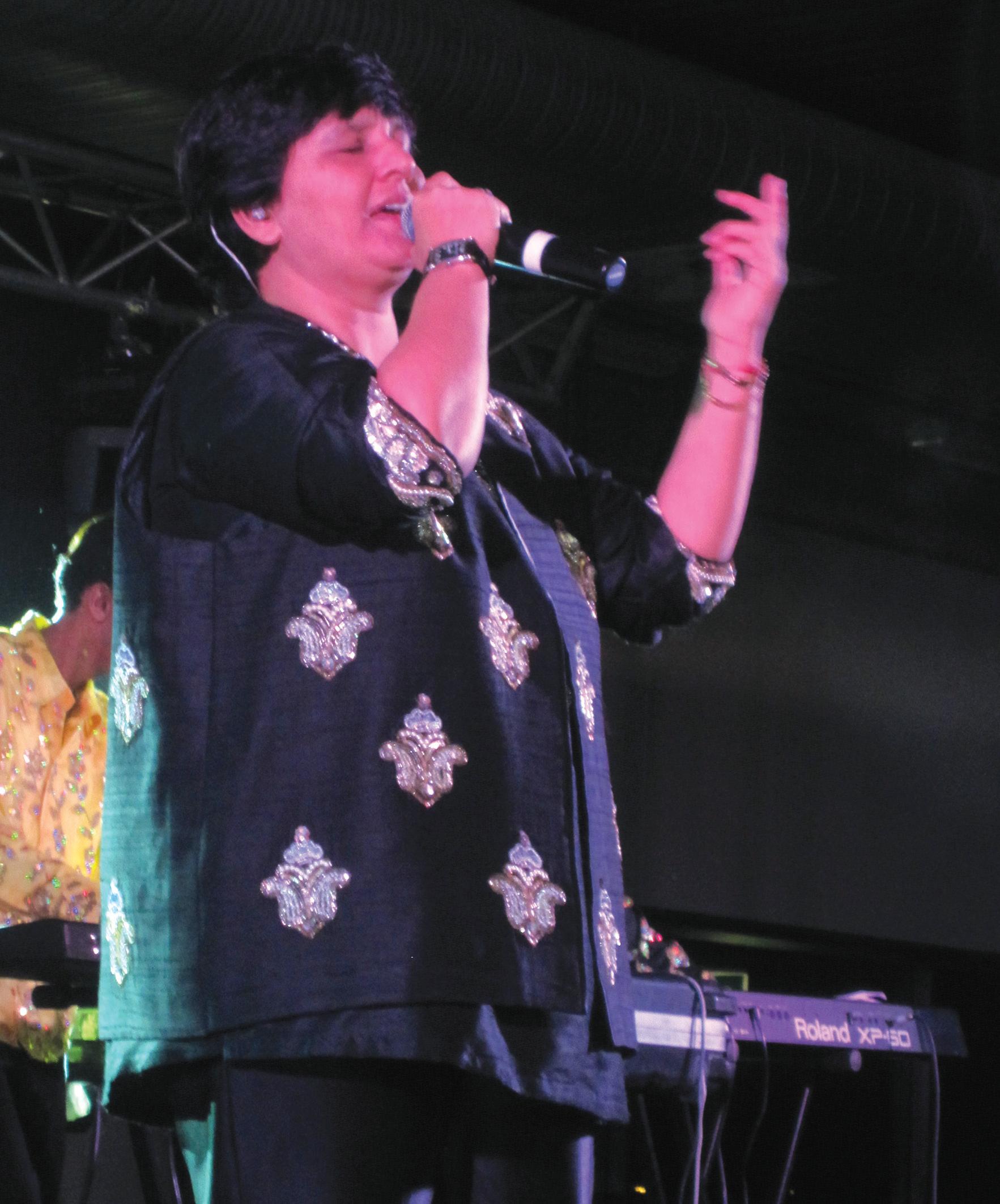
OCTOBER (1) 2010 <> 25 NATIONAL EDITION
www.indianlink.com.au FESTIVAL
Chupke chupke raat din…
An enchanting evening of lilting ghazals

You can listen to the great ghazal singer
BY SANDIP
Ghulam Ali whenever you like, chupke chupke, all by yourself… or along with an ensemble of enthusiastic fans. Of course I pick the former option on a regular basis, but the latter on the evening of 2 October at the Hills Centre, was surely double the fun.
The maestro was touring Sydney again after a long gap of nine years. Time has certainly moved on, but what has perhaps not changed is the celebrated singer’s extraordinary quality of singing the ghazal. I am sure all who attended the live concert would echo my opinion. For me, it was a scintillating repeat performance of his 2001 Sydney concert, when he simply mesmerised the audience with his sensational singing. This time again, he gracefully met the expectations of the large audience that gathered to listen to him, once more.
Ghulam Ali was born in Pakistan in 1940 in a musical family. His father Doulat Khan, a talented musician himself, named his son after the great Bade Ghulam Ali, who then undisputedly ruled the realm of Hindustani music. As a child he showed great promise as a vocalist, and after receiving years of extensive training in all forms of Hindustani classical music, he emerged as a master of ragas. In this avatar, he soon became a shinning star with Radio Lahore. And that’s
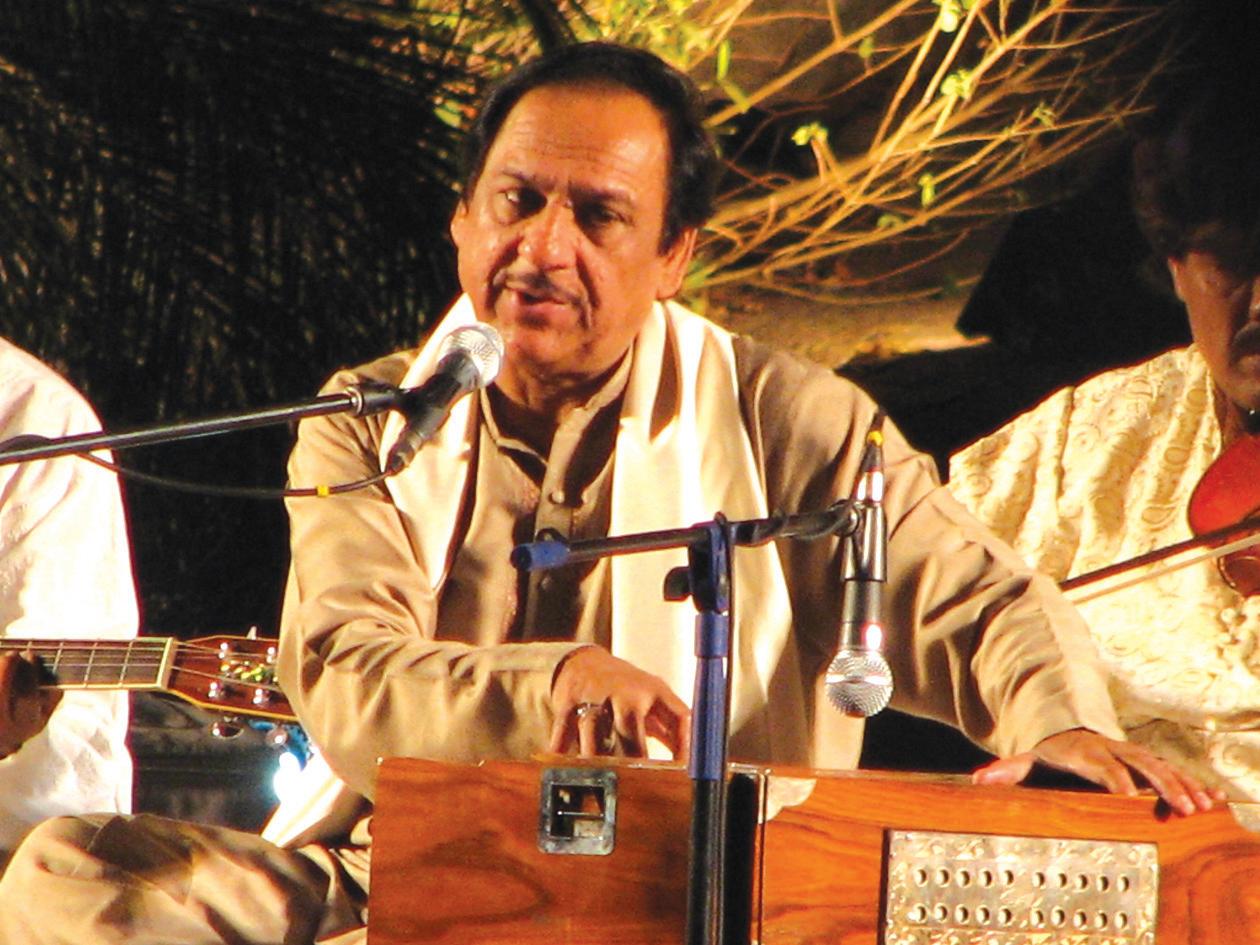
when his phenomenal ascent to the top as a classical artist began.
He burst into fame in India and almost became a household name, after crooning the track Chupke Chupke Raat Din in the legendary filmmaker B.R. Chopra’s film Nikaah. Sung with much feeling, the effortless quality of Ali’s craft came through loud and clear. (It still does, when he sings it today nearly thirty years on).

During that time Mohammed Rafi was in peak form with millions of fans worldwide, Ghulam Ali himself one of them. A story goes that when the two maestros met after the success of Nikaah, Ghulam Ali said to Rafi that the whole world listens to him. Rafi Saab
replied, “But I only listen to you”.
What enticed Rafi Saab, enticed the whole of India.
Ghulam Ali’s ghazals bring out his elegant, quiet, and humble yet impressive personality. Flawless, melodious and mystical voice, full of infinite possibilities, mellifluous tunes and his clever play with words are elements that music lovers identify with him.
The Sydney performance this time round, started almost an hour late, “technical reasons” being blamed. The maestro opened his account by singing Gori tore naina - a raag Pilu Thumri which he inherited from his Ustad, Bade Gulam Ali. He knew though that the fans were waiting for the ghazals, so
he went straight on to Mirza Ghalib’s, Har ek baa pe kahate ho tum. Almost instantly, an ambience was created for the audience to get overwhelmingly indulged in the wonderful blend of poetry and melody. Hit after hit poured out – Fasle aise bhi honge, Yeh batein jhooti batein hai, Chamkte chand ko tuta hua, Hum tere shahar mein aye hain and of course Chupke chupe and Hungama hai kyon barpa which was the last presentation. In between, a couple of Punjabi songs kept the crowd rocking.
He proved, that even at the mature age of 70, he has his art beautifully honed.
He made the evening lively and entertaining in his usual style, explaining the lyrics and clarifying application of various ragas, and kept the audience engaged with his shayeri. It heightened the experience overall, given that the beauty of ghazals lies in appreciating the blend of its lyric and melody.
A constant irritant for the artist as well as for many in the audience was the incessant movement of people in the audience and constant flashing of cameras. It was sad to note that despite several requests from the respected artist, the annoyance didn’t cease at all.
The program ended a bit late because of the delayed start and the long interval. I am sure the audience would have loved to hear more of the superstar, but the reality is that all good things in life come to an end - some rather abruptly!
Still, as I finished for that night, Ghulam Ali’s lilting Chupke Chupke played non-stop on auto play inside my mind….
Highly experienced Indian Chefs Required
Experienced, multi-talented, well presented, friendly and dynamic culinary expert Indian Chefs required BOTH CURRY AND TANDOORI
For a new upmarket and modern Indian Restaurant with Tapas bar at north shore. Must have min. 5 yrs experience and should be able to produce modern, contemporary and authentic dishes for min. 100 seats.
LIKELY TO OPEN END OF OCTOBER. Must be able to commute with own transport.
Excellent Remuneration, open kitchen, top quality Work Conditions
Please apply with full CV and references to PO Box 199 St Ives. Nsw 2075
26 <> OCTOBER (1) 2010 INDIAN LINK
STAGE www.indianlink.com.au
HOR A file shot of Ghulam Ali
A violin virtuoso visits
Sydney’s Carnatic music lovers had several important reasons to look forward to the musical treat provided by Prof. T.N. Krishnan and his troupe at the Turbott Auditorium of University of Western Sydney on 25th Sept. Prof. Krishnan is a doyen of the musical fraternity, besides being an octogenarian. showed energy levels and enthusiasm that would easily match those of a performer half his age.
The violin concert was staged by Pallavi Inc. – a non-profit organisation, as part of their 15th anniversary celebrations. importantly the proceeds of this program would go towards contributing to the “Brahmotsavam festival” – to mark the 25th anniversary of the Sri Venkateswara Temple, Helensburgh. As the event was for a charitable cause, a 500-strong audience thronged the auditorium.


Prof. T. N. Krishnan’s current concert tour is sponsored by the Indian Council of Cultural Relations to promote mutual understanding with other countries and foster India’s external cultural relations. Among other important sponsors and supporters of this tour are Bharatiya Vidya Bhavan Australia and RmKV of Chennai. The Consul General of India and the President of the Sri Venkateswara Temple were among the patrons who were in attendance.
Prof. T.N. Krishnan is the “asthana vidwan” for the Tirupathi Venkateswara temple and it was no surprise for him to have been chosen to perform for the Sydney Temple. This was a personal milestone for the violin maestro as he has been performing for an
his illustrious career, he has been conferred with the top musical and national honours, such Padma Shri, Padma Bhushan, Sangeetha Kalanidhi by Music Academy, Chennai, Sangeet Natak Akademi award and he has served as Dean of the School of Music and Fine Arts at the University of Delhi.
Prof. T.N. Krishnan has the distinction of having accompanied the finest and the best artistes in the world of Carnatic music for over 50 years whilst upholding the best traditions of classicism and melodic clarity. He is accompanied on this tour by his daughter Viji Krishnan-Natarajan who
on the mridangam and Sri Vaikom R. Gopalakrishnan on the ghatam. Smt. Yoga Thanikasalam and Sanjay Ramaswami accompanied them on the tambura.
The concert commenced with a Muthuswami Dikshathar Krithi in raga Chakravaakam to invoke Lord Ganesha. This was followed by a well known Thyagaraja Krithi, Endharo Mahanubhavulu in raga Sree. Manavyaala Kin in Nalinakanthi followed and it was a racy item.
Saarasaksha Paripaalaya in raga Panthuvarali was one of the main ragas and was appropriately given the pride of place by
The dance of numbers
Hamsa Venkat’s Samskrithi School of Indian dance presented an unusual production recently, based on the concept of numbers. Sankhya: A sojourn with numbers purported to mix classical dance with mathematics, a fusion you would believe to be impossible. But in the all-inclusive Hindu philosophy, some very meaningful connections can indeed be made.
The production was staged recently in aid of a Vision 2020 fundraiser.
“Sankhya” itself means number, and Hamsa Venkat showed that the concept lends itself quite well to classical Indian dance.
Sumi Krishnan quotes in Sydhwany, “Giving life to numbers and tweaking it with mythological stories, the concept of Sankhya broke new ground in Sydney for the first time, moving away from the usual type of story telling that goes into a traditional bharathanatyam production. Each number is introduced by Hamsa Venkat, who engages in a conversation in English with little Sahana, the youngest student of Samskriti School of Dance, to bring out the meaning and the significance of each number.”
It all started with Vandemataram, bringing the significance of unity in diversity. We may belong to different races, religions, and speak different languages, but we are all ONE.
The next item showed that universe is made up of TWO parts, purusha (the male phenomenon, represented by Lord Shiva) and prakriti (all that is feminine, symbolised by Goddess Shakthi).
The third item represented the importance of the THREE forces (trisakthi) required for mankind to live harmoniously - knowledge, wealth and strength. It was interesting the song chosen for this item was from a Tamil movie Saraswathi Sabhadham, but modified for dance, and sung very classically and dynamically by Anand Dixit.
The varnam combined the numbers FOUR and FIVE with Buddhism - Chathur marga pancha shilam, or the four teachings of Buddha and the five principles of Buddhism. (Totally home-grown, this item was a creation of our own community’s Sangeetha and Mohan Ayyar who set to music
the lyrics of Prof Subramanyam, and Bala Sankar who wrote the jathis by weaving the beats of 4 and 5).
Number SIX was depicted by Arumuga, or the six faces describing the beauty of the six faces of Lord Muruga. This composition by Saint Arunagirinathar has been set to music by Mohan and Sangeetha Ayyar in ragams that add up to form the chant “Saravanabhava” – Sa (saradhapriya) Ra (ranjani) Va (vasantha) Na (nattakurinji) Bha (bhairavi) and Va (valaji).
The SEVEN colours of the rainbow were presented next in a beautiful folk item - the pinnal kolattam, where the dancers weave and then unwind a plait of rainbow colour ribbons while producing beats with sticks (dandiya) in their hands. The dancers were each dressed in the colours of the rainbow. Once again the music here was original, composed by Mohan Ayyar where the lyrics of the pallavi and the swaras are set to match - Sa re ga ma pada nerajanamu sevimpave - the seven notes of the raga set to seven beats.
EIGHT is the number of the Blue God Krishna, the eighth incarnation of Vishnu. The blue costumes made by Hamsa’s mother and aunt for the dancers were absolutely stunning.
Natya Shastra (the science of classical dance) classifies human expressions into eight sentiments with the sentiment of Shantham added on as the ninth one.
Through the life story of Rama, NINE sentiments were expressed in a solo performance by Hamsa.
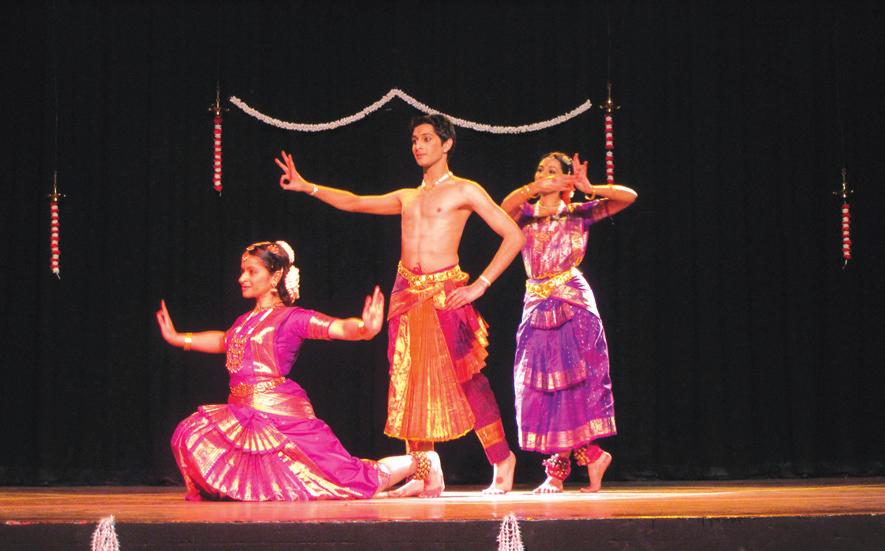
Vision 2020
Vision 2020 Australia is a voluntary, non-profit and charitable organisation registered in NSW. It was set up in 2003 with the objective of serving the most needy and helpless in our society. Today it has grown into a vibrant and purposeful charity organisation with a good record of helping charity projects. It has funded (including 2010 projects) nine high quality projects at a total cost of over $50,000. All the funding is given to deserving Indian charities for their infrastructure projects. Details of all the projects can be found on the website www.vision2020.net.au.
Their violins synchronised extremely well, in particular when performing the nuances of Kalpana swaras which was played in a rapid tempo. The ‘thani aavarthinam’ by the percussionists towards the end was an exhibition of tala and rhythm to match the genius of the violinists.
Ragam Thanam Pallavi in raga Kapi emphasised the lilt and melody of the raga. Thanamaalika switched from raga Kapi to Mohanam, Revathi and Kaanada, where a discerning ear could pick up the influence of Hindustani music in Prof. Krishnan’s play. The concluding items were chosen appropriately – Venkatachala Nilayam in raga Sindhu Bhairavi in praise of Lord Venkateswara, and finally a short krithi in raga Behag.
The entire concert was outstandingly rendered by the artistes and percussionists and the repeated applause from the audience showed the rapport and the reverence for them.
Dr. Bala of Sri Venkateswara paid a moving tribute to the main artistes and encouraged participation of one and all at the upcoming “Brahmotsavam festival”.
Malli Iyer
The production concluded with a brisk tillana and a mangalam that signified the importance of ZERO in the numbering system.
The audience were quite spellbound and gave a standing ovation for the artists.
In all, there were 20 dancers which included students of various ages as well as working professionals. A special mention must be made of Govind Pillai who is the only male dancer in the troupe who works in Melbourne but is so dedicated to dance he travels between Melbourne and Sydney to do these performances.
It is commendable to see such young ones coming forward to perform for charity. Hamsa herself is a fulltime high school English teacher and mother of a four-year-old. The musicians are all from Sydney working full time in their own professions, united by their passion for India’s classical arts. The vocal support was given by Sangeetha Ayyar and Anand Dixit, violin by Balaji Jaganathan, synthesizer by Mohan Ayyar and mridangam by Bala Sankar.
The charity cause was enthusiastically supported by the local community. Vision2020 is very grateful for the support of many local businesses who donated towards the evening as well the commemorative brochure released on the occasion.
Thanks to the generosity of the community, Vision2020 is able to provide facilities at a total cost of over INR 8 lakhs (over $20,000) to three projects for poor children in India in the year 2010.
OCTOBER (1) 2010 <> 27 NATIONAL EDITION
www.indianlink.com.au STAGE
Prof. TN Krishnan with daughter Viji Krishnan-Natarajan (Top right) Sydney’s Dr. Bala honours Prof. TN Krishnan
The number 3
PeopleParties

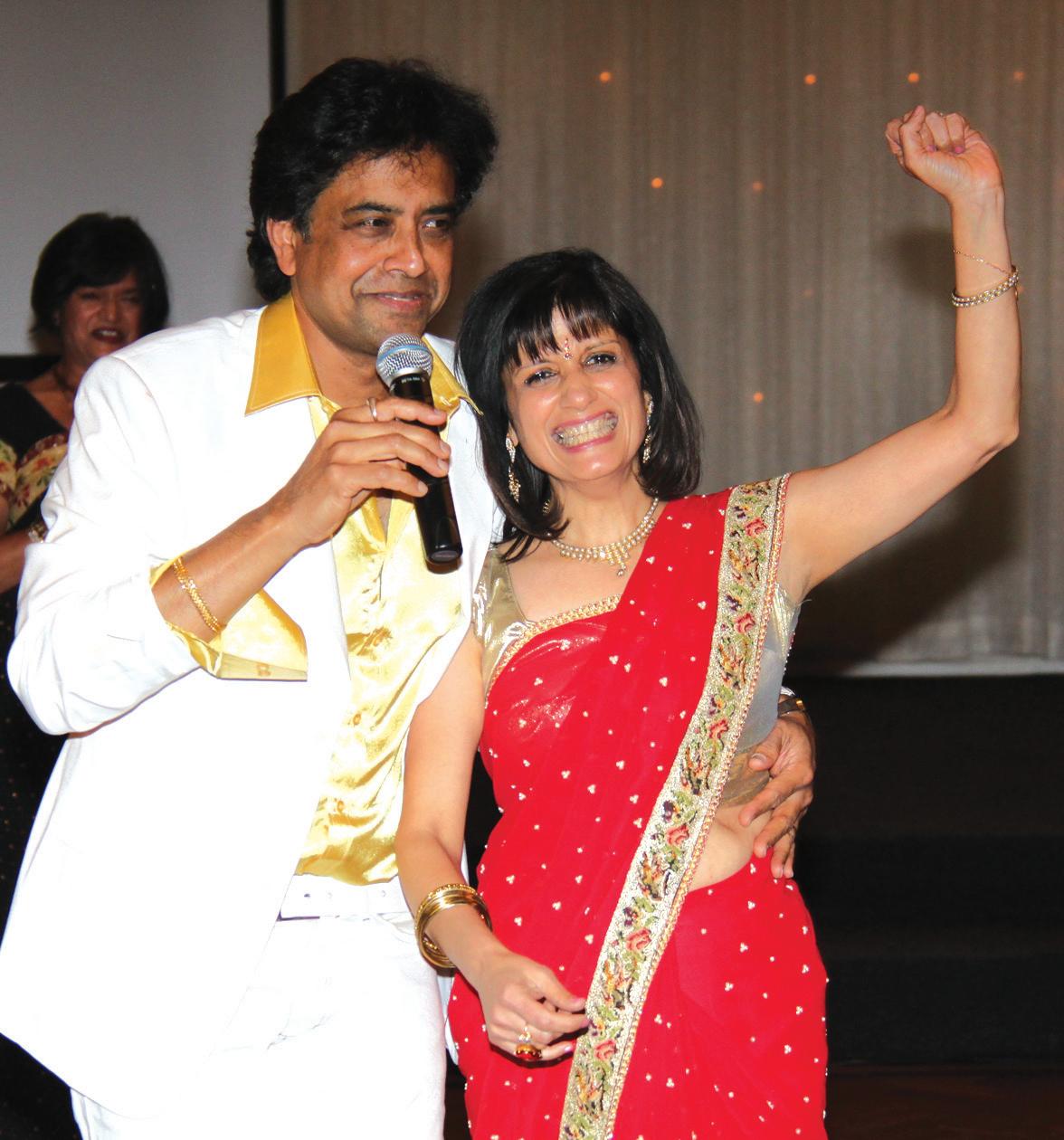
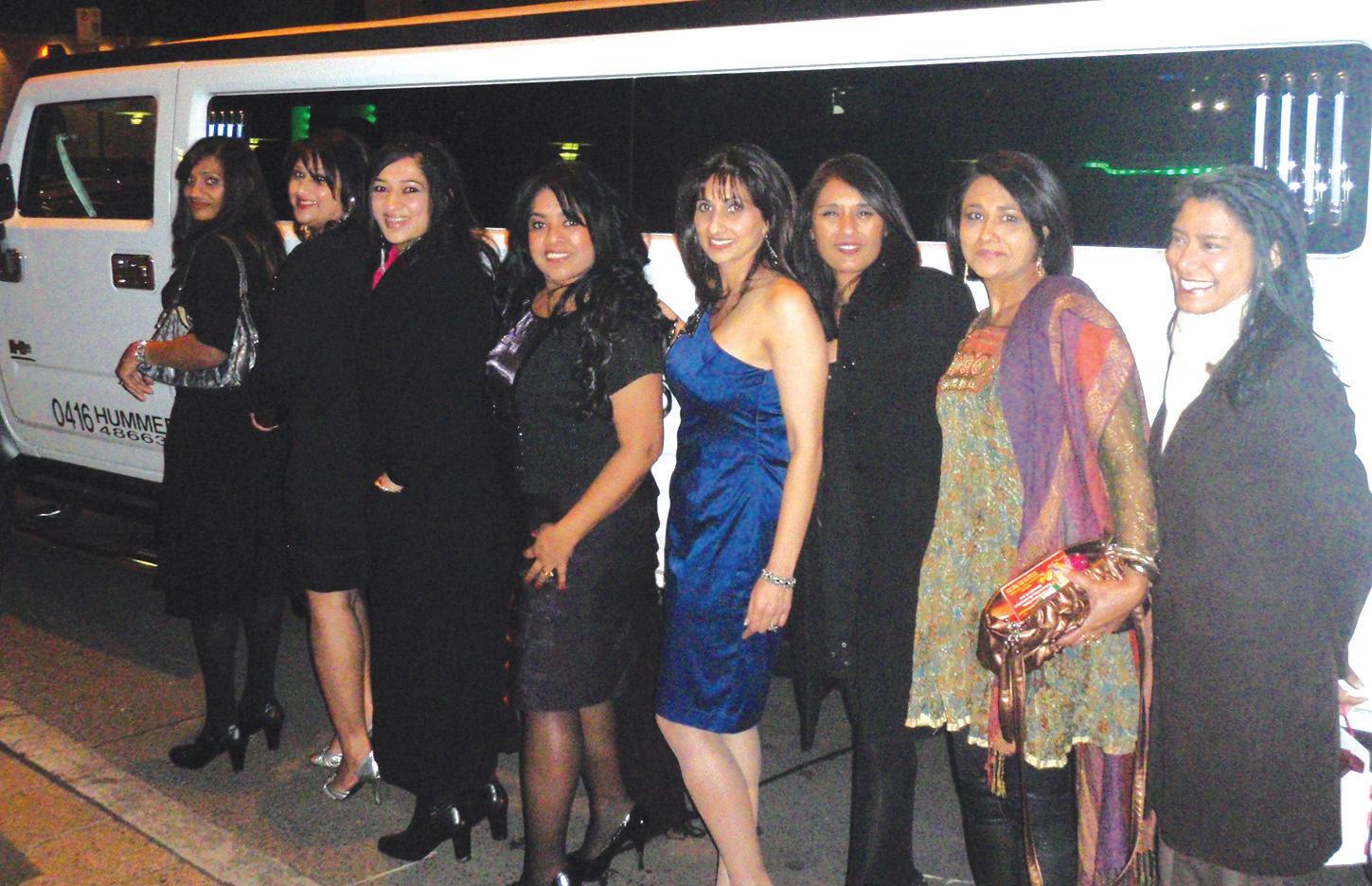

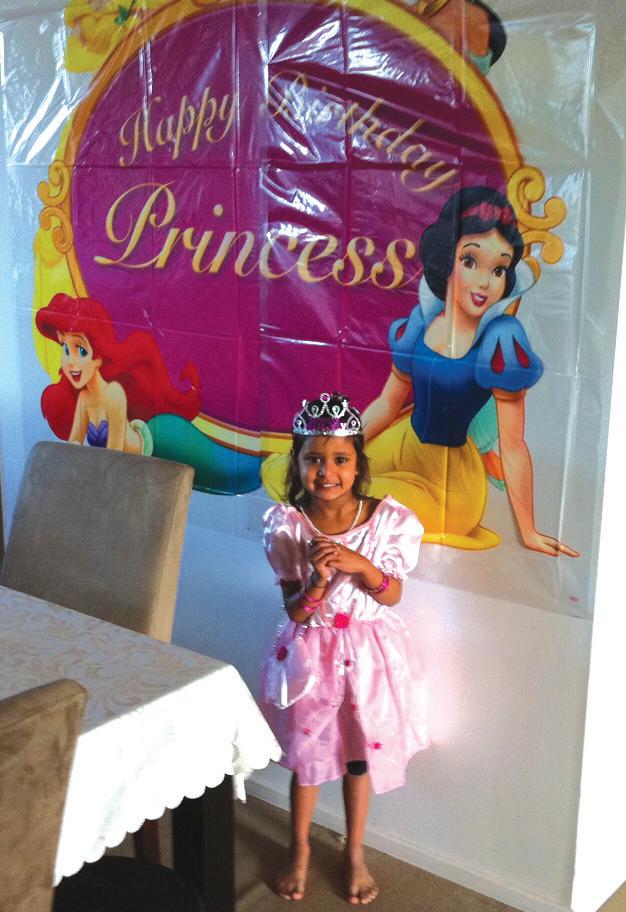
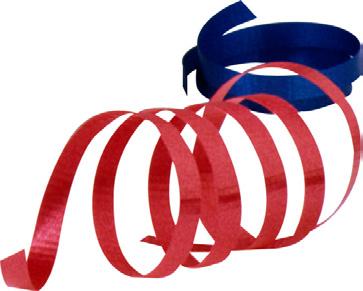
28 <> OCTOBER (1) 2010 INDIAN LINK
Ishani Rana, daughter of Ashish and Sonal Rana, turns 4.
Birthday girl Poonam Chandiramani with Shilpa Arora (left) and Kavita Gakhar (right)
Mini (centre, in blue) takes her gal-pals out for a night on the town to celebrate her birthday
www.indianlink.com.au THISMONTH
Avijit Sarkar sings to his wife Palu on her 50th birthday
Ganapati Bappa Morya: Sachin Wakhare celebrates Ganesh Chaturthi at his Ashfield home, with friends
‘Indiansyncrasies’ at their best
Comedy is a serious business for Uma Thakar, as she readies for her first solo act
BY PREETI JABBAL
Some storytellers are just engaging, some are frightening, some are horrible, and some are hilarious. For Indian stand-up comedian Uma Thakar, generating laughter is a hobby that is fast becoming a habit. It all started less than a year ago when she attended a Toastmaster’s workshop. An exaggerated enactment of the nuns at her Catholic school got her ample laughs and set Uma on the path to explore funny bones: both her own and that of others. A few more tentative attempts later and with the encouragement of her mentors at the workshop, Uma created her own show calling it the Uma Huma Show. Since then, Uma has been posting her comedy spots on YouTube and has an active blog titled The Surreal Diary of an Indian Woman Uma is scheduled to perform her first solo act at the Loop Bar, Melbourne on October 16.
To quote Ed Wynn, ‘A comic says funny things; a comedian says things funny’. His words best describe the combination of verbal content, acting ability and persona required to make a career out of making people laugh. Punching out fast and furious oneliners and keeping crowds of all ages and persuasions laughing is easier said than done. According to Uma, “The toughest thing about comedy is getting laughs consistently. It is a very big challenge to connect with the audience and keep the laughs going.” But it is this challenge that has inspired and motivated freelance journalist Uma to foray into the entertaining field of stand-up comedy.
Her background in creative writing and media also helped Uma come up with irreverent topics like her take on popular works (Slumdog
Two Dollaraire and Bollywood Shakespeare), football injuries, Kamasutra, Indian speed dating and her upcoming debut solo act, a hot ‘n’ spicy curry with wannabe Masterchef Rita
“I have always enjoyed comedy,” said Uma while explaining just how she embarked on the tough road of being a stand-up comedian.
“I did some workshops in comic lounge and at Toastmasters, and received a fairly good reaction to my initial attempts at humour.
I persevered, drafted and redrafted material several times over till I felt I was ready to give my first solo act,” revealed Uma. Her background in creative writing and media also helped Uma come up with irreverent topics like her take on popular works (Slumdog Two Dollaraire and Bollywood Shakespeare), football injuries, Kamasutra, Indian speed dating and her upcoming debut solo act, a hot ‘n’ spicy curry with wannabe Masterchef Rita.
Although performing for laughs, Uma also explores pervasive Indian stereotypes. Her material and characters stem from her Indian upbringing and experiences of living in Australia. Uma often throws political correctness aside to create characters like her imaginary cousin Rita with a strong Indian accent or the Catholic nun from her school who wondered if Shakespeare could be Indian.

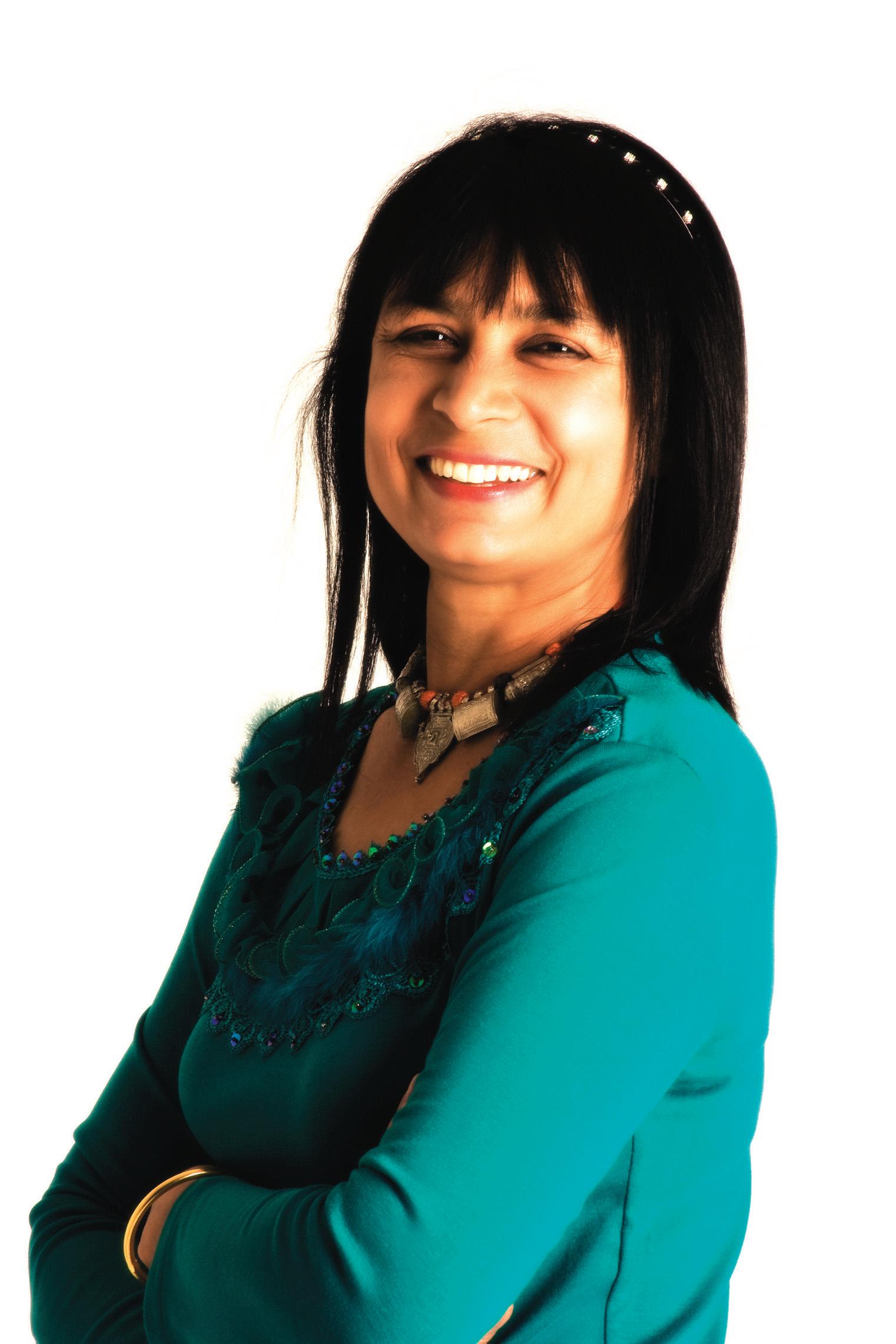
“People like to see me laughing at myself. The trick lies in not taking yourself too seriously and I generally get a good reaction to my Indiansyncrasies.”
When asked if her work is influenced by iconic comedian Russell Peters, Uma replied, “Every
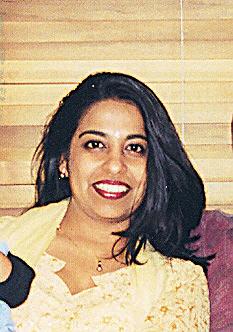
comedian from an Indian background has been influenced in some way or the other by Russell Peters. So am I, but everyone has to find out what works for them and I am in the process of doing that for myself.”
“Comedy subjects can stem out of simple things, telemarketing, road rage, public transport… there’s humour in everything,” said Uma when asked how she picks her subjects. “There is no particular age group or nationality that forms my target audience. All types of people, for example community members, senior citizens, people from Sri Lanka etc., anybody can be my audience,” she added.
Uma has done small parts in the Comic Lounge and last year’s St. Kilda’s Laughs Festival. According to Uma, her blogs and posts on the Internet have also generated interest from all parts of the world.
Then there is the very real threat of being heckled. One of Uma’s toughest audiences was a retirement village. She performed there and no one laughed. Judging by the lack of reaction she assumed they were too polite to heckle her. After the performance when Uma got chatting with some of the audience, they told her how they loved her Shakespeare comedy and the Bollywood material.
“But how come no one laughed during the show?” asked Uma to which the elderly lady replied, “Oh that’s just the way we are. We tend to smile inside.”
there’s humour in everything”
What do you do if the act bombs and there are no laughs? “It is terrifying when that happens,” confessed Uma. “But I have understood, from experience, that people don’t always laugh out loud, they may just smile. You have to remember it is not always about you, and continue.”
Experiences like these and a mix of reality and imagination have shaped Uma’s humour, and she is prepared to share it with the world.
It’s early days yet for Uma and she is still to hone her craft, so it will be hard to tell whether her jokes will have people rolling in stitches, or if it will fall flat with more misses than hits. Irrespective of whether she is a guffaw away from stardom or a groan away from ignominy, it takes some intestinal fortitude, aka serious guts, to stand up in front of an audience and tackle comedy. Kudos to one brave, funny Indian woman!
OCTOBER (1) 2010 <> 29 NATIONAL EDITION
“Comedy subjects can stem out of simple things, telemarketing, road rage, public transport…
PEOPLE
Uma Thakar
www.indianlink.com.au
A childhood passion reborn in retirement
A chat with model Perth senior Savitri Goswami
BY FARAH ADEEB
Savitri Goswami of Mount Lawley, Perth was only a child when she wrote her first play.
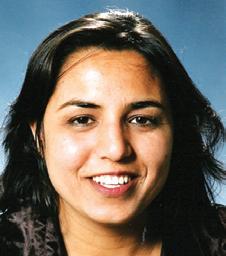
It was so good that she was advised to take it to the local radio station, in her city of Gorakhpur. Inspired by her first broadcast, the young Savitri took to her pen with great vigour, churning out many dramas, to the delight of her family.
Today, at the age of 80, Savitri’s passion continues to be alive and well, and is keeping her fully occupied in her retirement. She has to her name 60 short stories in Urdu published in 17 magazines in India. Two books have been published as well (Short Stories (2000) and Naya Daur (2010)). One book is currently being published in Pakistan.
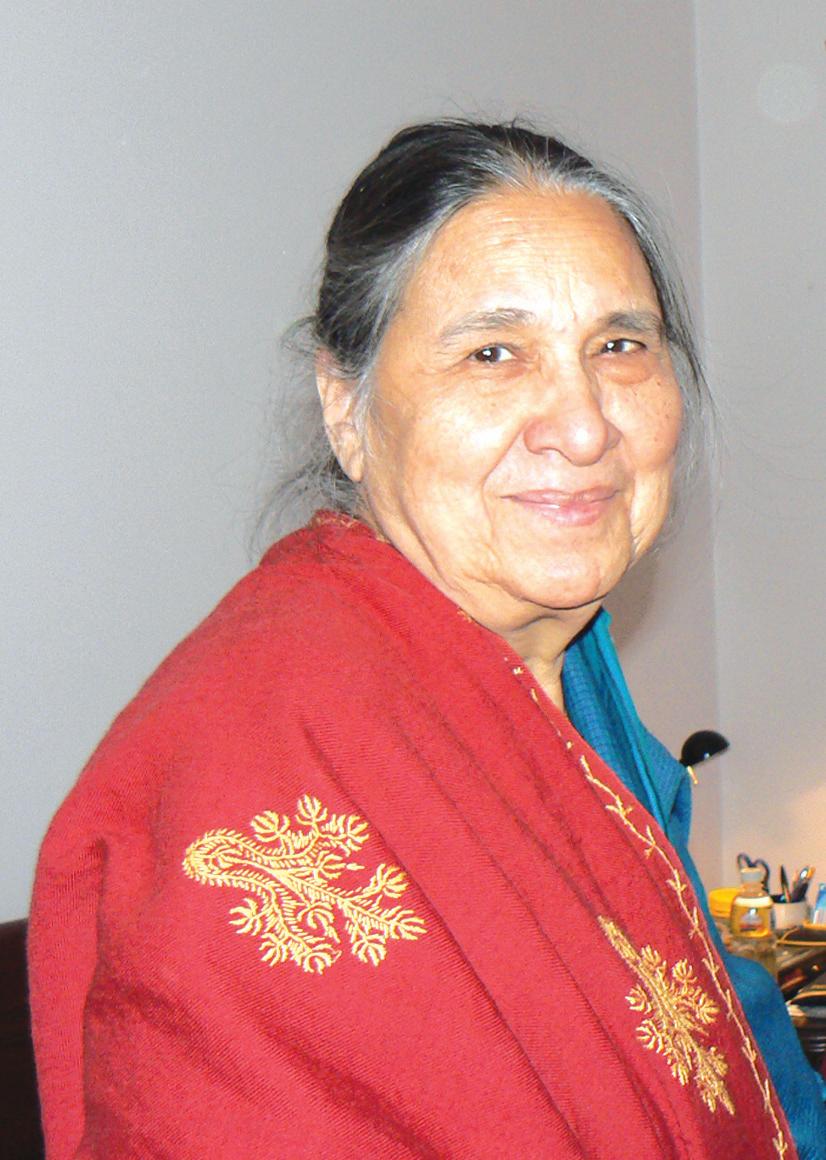
Surprisingly, however, Savitri’s love of writing, which had begun in her childhood, lay dormant all her adult life, and only resurfaced at the age of 65.
“Life got in the way,” muses the lovely lady, with so much wisdom, and with so little resentment, that one can only feel envious.
Savitri devoted her life to her family. Moving from place to place as her husband took on higher and higher postings in the Indian Railways, the family’s relocation and children’s resettlement took up her all her time and resources.
Today, with much of her life’s formal responsibilities taken care of, she devotes her time to her childhood passion of writing.
Savitri now lives in Australia with her youngest daughter Madhu. She migrated to Perth from India 11 years ago, and has become well-known in the city’s Indian community - equally for her personable nature as for her literary skills.
Of course there are other passions as well, such as knitting. Savitri offers her skills and knowledge of this pastime to whoever maybe interested. She generously gives any monetary proceedings from knitting to poor people.
having lost her dear mother too early in life.
“I was like a free bird, riding my bike for hours without a care in the world. One day I woke up and found out that mum had been taken to hospital. She was there for 9 days. That was the most difficult period of my life. We did not know that it would only take a minute for my four brothers and sisters and me, to be left without our
be,” she sighs as she delved back into past. “At the time of partition, I saw too much bloodshed on the roads. No one was helping anyone. This tragedy was so traumatic for me that I abandoned the idea of becoming a teacher and took up nursing training. I worked as a nurse for some 13 years, and had to give up that too - I am still sad for that”.
She got married in 1960 to Dr Annand Lal Goswami, who was Director General at Indian Railways. He was a Bengali Hindu and a strict Brahmin. At the time it was considered an unusual combination, because she is Christian and the daughter of a Christian priest. But the happy union lasted fifty solid years.
“I have been very happy with my life. We never had any arguments on religion. If you oppose religion and social norms, it is difficult to live in the same society though. But my husband gave me everything - what else one can ask for, in a marriage? All you need is a sincere and truthful companion. My husband died at the age of 81… on his death bed he said to me, you have been the biggest treasure of my life”.
In her stories, Savitri tries to portray poverty in the country and the treatment of women in a male dominated society.
“I am really unhappy that Urdu readership is decreasing in India,” she observes.
“Regrettably Urdu was born in the subcontinent and today it is diminishing from the very same place …”
She sees no difference in Indians and Pakistanis. We are one and the same, she says vehemently.
“There is no need for fighting and quarrelling. I will advise both Indians and Pakistanis to get education and serve your respective countries. We sent our children to study in the USA. We gave the treasure of education to children so that they can earn a decent living”.

So have times changed today?
“Yes, I believe they have, sadly. It is not the same. Times have changed. Older values are dying. We are now more under western culture. They do not respect their elders”. Savitri’s favourite verse defines her own life beautifully:
Log kuchch poochne ko aaye hain

Ahle mayyat, jenaza thehraoo
Suy madfin abhi na ley jaayen
Phir kahan sey laoo gey Ghalib ko
People haven’t finished with you, Let not the hearse depart just yet Do not yet take it to the graveyard Where will you bring Ghalib again?
30 <> OCTOBER (1) 2010 INDIAN LINK Parkus Technologies Pty Ltd Suite 33, 2 O’Connell Street, Parramatta, NSW - 2150 Office: + + 61 2 96332003 : Mobile : 0413 502 252 Email: info@parkus.com.au Visit us @ www.parkus.com.au
www.indianlink.com.au SENIORS
Perth writer Savitri Goswami

OCTOBER (1) 2010 <> 31 NATIONAL EDITION
Spreading the word Unforgettable India!
Allan Fernandes, a friend, philosopher and guide, passed away peacefully on Friday 24 September 2010, at the Royal North Shore Hospital.
Allan will, no doubt, be remembered for his tremendous contribution to the growth of Indian tourism in this country through a number of creative marketing campaigns. His role in helping increase tourist traffic from Australia to India, from around 16,000 to 160,000 in just about two decades, is remarkable.
In the earlier years, with India’s relatively poor perception in the market, development of tourism involved a great deal of missionary zeal and highly creative use of limited budgets to raise awareness and provide motivation to the consumer, the media and the trade. The strategy adopted was to encourage cooperation among potential stakeholders and to project a unique, affordable, quality destination in everything that was done - from the ambience of the India Tourism office to launching special promotions, advertising campaigns and innovative collaterals. Allan will long be remembered for his role in PATA ’78 that changed the face of Indian tourism. He played a great role in putting India on the world tourism map.
Besides having a creative mind, Allan was good at developing a cooperative approach to promotions which helped India Tourism garner the support of the community, the wholesalers, retailers, airlines and the media and have them working in concert to help market “Destination India”. He came up with some cheeky but catchy slogans like ‘India - Do it Now’ and award winning campaigns like ‘Unforgettable India’ and ‘Follow the trail of the Tiger’. His contribution in development and local adaptation of the well known ‘Incredible India’ campaign is significant. He was very active in the promotion and marketing of Indian tourism from Australia with impressive TV campaigns, promotional films and documentaries.
To keep his India dream alive with the travel industry, Allan, in association with India Tourist Office, launched the “Travel Industry Curry Club”. This provided a platform to promote the many facets of India with all its colours, flavour and grandeur. Allan’s work has been well recognized as he was a recipient of several industry awards from Advertising Associations.
Allan started his working life in 1964, when he joined the advertising agency Clarion McCann in Bombay. He faced stiff competition but he had a brilliant creative brain, wit, charm, ideas and a way with words. To make one’s mark, you had to rise above the “Churchgate set”, a term often used affectionately to describe the scribes that graduated from the top agencies such as D. J. Keymer, Lintas and J. Walter Thompson. Always ready for a challenge and with a keen sense of creative intuition, Allan was soon thrown in at the deep end on a diverse range of products and services but he quickly established himself as a creative person of eminence. By 1967 he had many prestigious creative awards bestowed on him by the Advertising Club of Bombay.
Allan’s award winning campaign for promoting industrial manufacturing zones in Bombay and Nasik with an innovative and flexible package scheme of incentives for the Government of Maharashtra, proved that he was versatile. This gave him the opportunity to experiment with the audio visual medium. Some of the most memorable films on tourism that he made were Gateway to Pleasure on Kashmir and Spread the Word.
This proved to be his forte as he ventured into hospitality and tourism when he moved to Delhi and joined India Tourism Development Corporation (ITDC). During his years with ITDC he worked on several tourism campaigns for the Government of India. It was at this time that the President of the Oberoi hotels group invited him to join the Oberoi chain, one of India’s largest 5-star hotel groups with hotels all over the world. This was a major step for
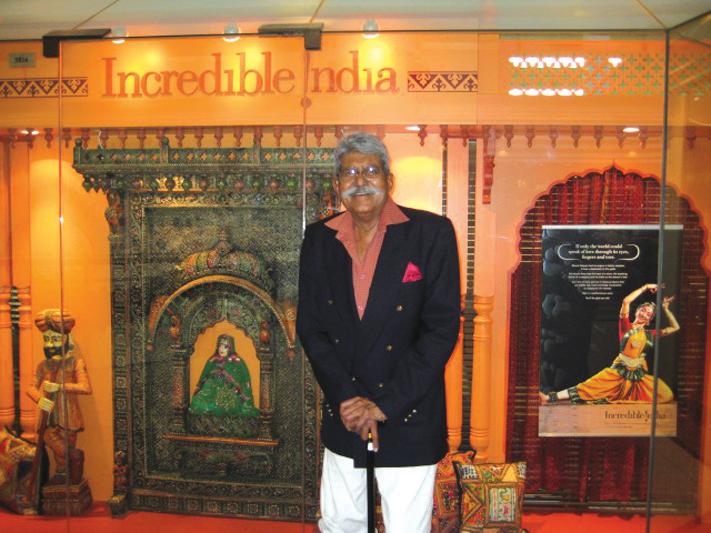
Vice-President of Marketing for the Oberoi group. In this capacity Allan travelled world-wide to promote the Oberoi hotels along with Indian tourism. He was much liked and respected not only by his peers and compatriots but by all in the tourism industry in general.

Allan moved to Sydney in 1986 re-starting his career as a creative writer with a P.R. company in North Sydney. This was a big step-down from his position as Vice-President of Marketing at Oberoi. However with his brilliant skills and creative talent his career blossomed once again and he established his own advertising agency ‘Fernandes AD VENTURE’ which soon grew in strength.
He was an active Rotarian, till his failing health prevented him from continuing. During his tenure as a Rotarian, Allan was very generous with his time and efforts in raising funds for good causes like the Cancer Society, Red Cross, etc.
But all his successes in the commercial world pale into insignificance, if we look at Allan the friend, Allan the husband, Allan the uncle, Allan the god-father. Allan shines as a beautiful and complete human being full of love, compassion and consideration for all without exception. Allan was always helpful, could never say “no” to anyone and we always looked up to him for guidance and advice. In this world of today when we are all chasing honours, Allan was a man of
Unfortunately his health continued to be a serious cause of concern and it was in the year 2000 when Allan finally got a donor kidney, after being on dialysis for some time. He was in constant pain with many major health issues. But he was a fighter and never gave up fighting till the very end. His mind remained sharp and focused, but the body could not cope. He continued to work from his hospital bed till a year ago. He was very fond of sports, especially cricket. He continued to watch it regularly on his laptop when in hospital.
Allan is survived by an extremely devoted wife Jennifer who stood by him throughout these trying months and years.
A famous quote reminds us of the importance of keeping his memory alive. Samuel Butler said, “To die completely, a person must not only forget but be forgotten, and he who is not forgotten is not dead.” We now have the opportunity to live the rest of our lives in ways that will bring honour to a man who spent his life showing us how to be our best. Let’s never forget the lessons we learned from him. Let’s choose to be better for having known him.
May his soul rest in peace.
32 <> OCTOBER (1) 2010 INDIAN LINK
www.indianlink.com.au TRIBUTE
In memory of Allan - Shankar Dhar, Mala Mehta, Christopher Passanah and Noshir Irani
Allan Benedict Cuthbert Fernandes 1939-2010
LimitedSeatsAvailable!


OCTOBER (1) 2010 <> 33 NATIONAL EDITION
Australian businesses to talk shop during Commonwealth Games
Australia launched in late September a networking initiative that has generated deals worth over $1.7 billion internationally since 2000, to connect business people from Australia and the host nation during the Commonwealth Games.
A program of the Australian Trade Commission, Business Club Australia (BCA) will provide a platform to businesses from both countries during the Games from Oct 3-14. It will hold 22 events across key sectors such as agribusiness, advanced manufacturing, clean energy, education and mining.
This format of having business meetings around mega sporting events was developed during the Sydney Olympics in 2000 and Australia has continued to tap networking opportunities provided by others like the Melbourne 2006 Commonwealth Games, the Beijing 2008 Olympics and the recent 2010 FIFA World Cup in South Africa.
“BCA has a proven track record of turning the excitement of high profile sporting events like the Commonwealth Games into long-term profitable business connections between Australia and the host nation,”
Australian High Commissioner to India Peter Varghese told reporters in New Delhi. The BCA model of networking will be the first for India.
“Since its inception, the program has connected 36,500 international business people. Over 2,000 Australian and Indian business executives will be involved, which will directly assist our bilateral economic relations,” said Varghese.
About 47 Australian companies have delivered contracts worth $83 million ($79.7 million) for the Commonwealth Games, providing a range of services such as broadcasting, design of Games venues, IT consultancy, security, logistics and coordination of the Queens Baton Relay.
Two-way trade was worth over $20 billion in 2009, more than double from the $9.8 billion four years ago.
“India is one of Australia’s fastest growing trading partners,” Mr Varghese noted
Asked when would the proposed free trade agreement (FTA) between the two countries fructify, the High Commissioner said feasibility studies that were conducted by both sides were almost complete.
According to Varghese, the feasibility study indicated that an FTA could increase India’s gross domestic product by up to $48.3 billion and Australia’s by up to $45.5 billion over the next 20 years.
“I hope by end of this year or early next year, we might be able to commence negotiations.”
Seven Indians awarded Australian scholarship
Seven Indian students have been selected by the Australian Agency for International Development (AusAID) for the prestigious Australian Leadership Award (ALA) scholarship.
“I congratulate the seven outstanding people who have been identified for their potential to provide important policy leadership on their return home,” said Australia’s High Commissioner to India Peter Varghese.
Awardees of the scholarships will join prestigious Australian universities for their post-graduate studies in fields like community planning, agricultural development and intellectual property law.
“The Australia Leadership Awards demonstrate Australia’s commitment to developing future leadership and building
enduring partnerships with India. This is a relationship that will be of increasing importance to both countries in the years ahead,” Varghese said.
“The students will undergo an additional program that will enable them to strengthen their leadership skills, establish networks with emerging leaders in other regional countries and enhance their understanding of our region’s development challenges,” he added.
The seven scholarships awarded to the Indian students are part of 205 ALA Scholarships offered globally in 2011.
$45 million investment in Indian education campus in Sydney’s west
A leading Indian education provider will invest $45 million to set up a new education campus in western Sydney – creating 150 jobs.
The NSW campus will be established by S P Jain Center of Management and will take its first students in 2012.
It is expected 50 full-time jobs and 100 part-time jobs will be created over the next five years.
The new campus is the first investment in education in NSW by an education provider from India.
The location for the new campus is currently in the final stages of negotiation.
S P Jain, an education provider specialising in Master of Business Administration (MBA) programs, set up its first campus in Mumbai, India in 1981.
The school has been ranked among the top 10 business schools in India for its MBA programs.
In 2004, S P Jain established its first international campus in Dubai and in 2006 established a campus in Singapore.
Premier Kristina Keneally and Minister for Education, Verity Firth, joined S P Jain’s

President, Mr Nitish Jain, to welcome the announcement.
Mr Jain was in Sydney for this week’s Forbes Global CEO Conference, which will bring together more than 400 of the world’s most influential business leaders.
“S P Jain Center of Management’s decision to invest $45 million here is great news for our international education sector,” Ms Keneally said.
“The NSW Government, through Industry & Investment NSW, and Austrade has worked with S P Jain to win this investment for our State.
“This investment confirms Sydney’s position as a high quality education provider and safe destination for Indian students looking to study overseas.”
Mr Nitish Jain, said when the organisation thought of establishing in Australia, Sydney was the obvious location.
“Setting up a campus in Sydney fits well with our plans to consolidate our Asia Pacific presence – the hotbed of growth,” Mr Jain said.
“Our students are rotated through our campuses to be exposed to different business environments and, importantly, to understand and appreciate diversity and open their minds to a global view,” he added.
He also lauded Industry & Investment NSW in helping find the right location for the campus.
Minister for Education, Verity Firth, said the new investment demonstrated the strong demand for students wanting to live and study in NSW.
“We want to encourage students to undertake their studies in NSW and we are already seeing positive results,” she said.
“In 2004, there were less than 500 Indian international students enrolled in the NSW vocational education and training sector. Last year, it was more than 18,000.
Earlier this year the NSW Government established the Premier’s Council on International Education - the first of its kind in Australia. The Council will implement a range of plans, including providing assistance and information for international students choosing to study in NSW. This is recognition of the strong contribution international students make to our economy and to our vibrant society.”
Australia eyes defence business in India
Australia has sought to expand defence ties with India with the signing of a pact between the Confederation of Indian Industry (CII) and the Department of Trade and Economic Development of South Australia.
The pact was signed at the Australian High Commission in New Delhi in the presence of Mike Rann, Premier of South Australia who took some of the top defence companies from his state to India.
“Many of South Australia’s defence companies are eager to work with Indian companies in developing defence products and services for India,” Rann said after the signing ceremony. “They also recognise the important role that CII plays in liaising with both government and industry in India”.
Several representatives of Australian defence companies accompanied Rann on the visit. These include Codan, manufacturers of high frequency radios used in border patrols; Minelab, maker of mine detectors; Lockheed Martin Australia, maker of overthe-horizon radar; Daronmont, specialising in coastal radar systems; and Prism Defence Systems, manufacturers of helicopter guidance systems for ships.
South Australia is home to over 200 defence companies.
“As the strategic outlooks of our two Indian Ocean nations converge, and as we
34 <> OCTOBER (1) 2010 INDIAN LINK INDIA-OZ
Nitish Jain of SP Jain Centre of Management with NSW Premier Kristina Keneally and Education Minister Verity Firth
expand cooperation under the India-Australia Strategic Partnership, we anticipate more such initiatives will emerge in the years ahead,” said Australian High Commissioner Peter Varghese.
New support for science research between Australia and India
Science and technology are particularly promising areas for collaboration between Australia and India. The collaboration has been further strengthened with another major new funding opportunity for leadingedge science between Indian and Australian researchers.
The latest (fifth) rounds of the IndoAustralian Science and Technology Fund and Indo-Australian Biotechnology Fund opened on September 22 for joint research projects in areas including renewable energy, nanotechnology, agricultural research and biomedical science.
The two programs form part of the Australia-India Strategic Research Fund (AISRF), a major platform for bilateral collaboration in science, jointly managed and funded by the governments of India and Australia.
“Australia has committed $65 million (Rs 280 crore) to science collaboration with India – our largest bilateral fund dedicated for collaboration with any country,” Australian High Commissioner Peter Varghese said. “Collaboration in this important area is helping to address some of the major challenges our countries share in areas like agriculture, health and the environment”.
In the most recently concluded funding round, the Australian Government committed more than $5 million (Rs 22 crore) to the successful projects, which was matched by the Government of India.
Since its establishment in 2006, the AISRF has supported around sixty leading-edge projects, bringing together top researchers in India from the IITs, IISc, leading CSIR labs and other top-level institutions with counterparts at premier research institutes and universities in Australia.
Among the projects underway include work to develop a vaccine for malaria, research into cancer therapies, leadingedge nanotechnology and collaboration on drought and disease resistant crops. Further information on the fund, including guidelines and application forms, will be available on the websites of the Department of Science & Technology and the Department of Biotechnology and the Australian Department of Innovation, Industry, Science and Research, www. innovation.gov.au/aisrf.
Andhra legislator visits
Chairman of the Andhra Pradesh Legislative Council and senior Congress leader A. Chakrapani visited Sydney last month as part of efforts to create an informed and connected parliamentary community among the Commonwealth countries Indian legislators (at the State and Central level) regularly visit other Commonwealth countries and meet with legislators. Such visits form a part of efforts to create an informed and connected parliamentary community among the Commonwealth countries.
In Sydney the Indian parliamentarian met with select members of the NSW Parliament.
Dr Chakrapani also visited Canberra and met with Mr. Tony Abbott in the Parliament.
Speaking at the reception hosted by Consul General of India, (Sydney) Amit Dasgupta, Dr Chakrapani, in his message to the Indian community here, said, “We as a community should mingle with everyone wherever we
country, learn new things and adapt to their culture. And yet while we do this, we should not forget our own traditions and values.”
Besides the Consulate General Amit Dasgupta and Consul Vivek Kumar, various other members of the Indian community greeted Dr Chakrapani at the Indian Consulate, including UIA president Aruna Chandrala, Dr Yadu Singh and Sydney Malayalee Association Inc President Padmanabhan Karamil.
Dr Chakrapani came to Australia after attending the 56th Commonwealth Parliamentary Association conference in Nairobi (Kenya), which brought together close to 1,000 delegates from 54 member countries.
The theme of the meet was ‘Parliament and Development in the 21st Century: Thus Far and Beyond’. During the weeklong long event the delegates exchanged views on global political issues and developments in the parliamentary system. During his stay in Sydney Dr Chakrapani paid homage to Mahatama Gandhi’s bust at University of New South Wales (UNSW) and also visited the university library.
Victoria launches multimillion ‘Engaging India’ plan
To further boost its trade relations with India, the state of Victoria has launched a new, multi-million dollar four-year strategy called the ‘Engaging India’ plan.
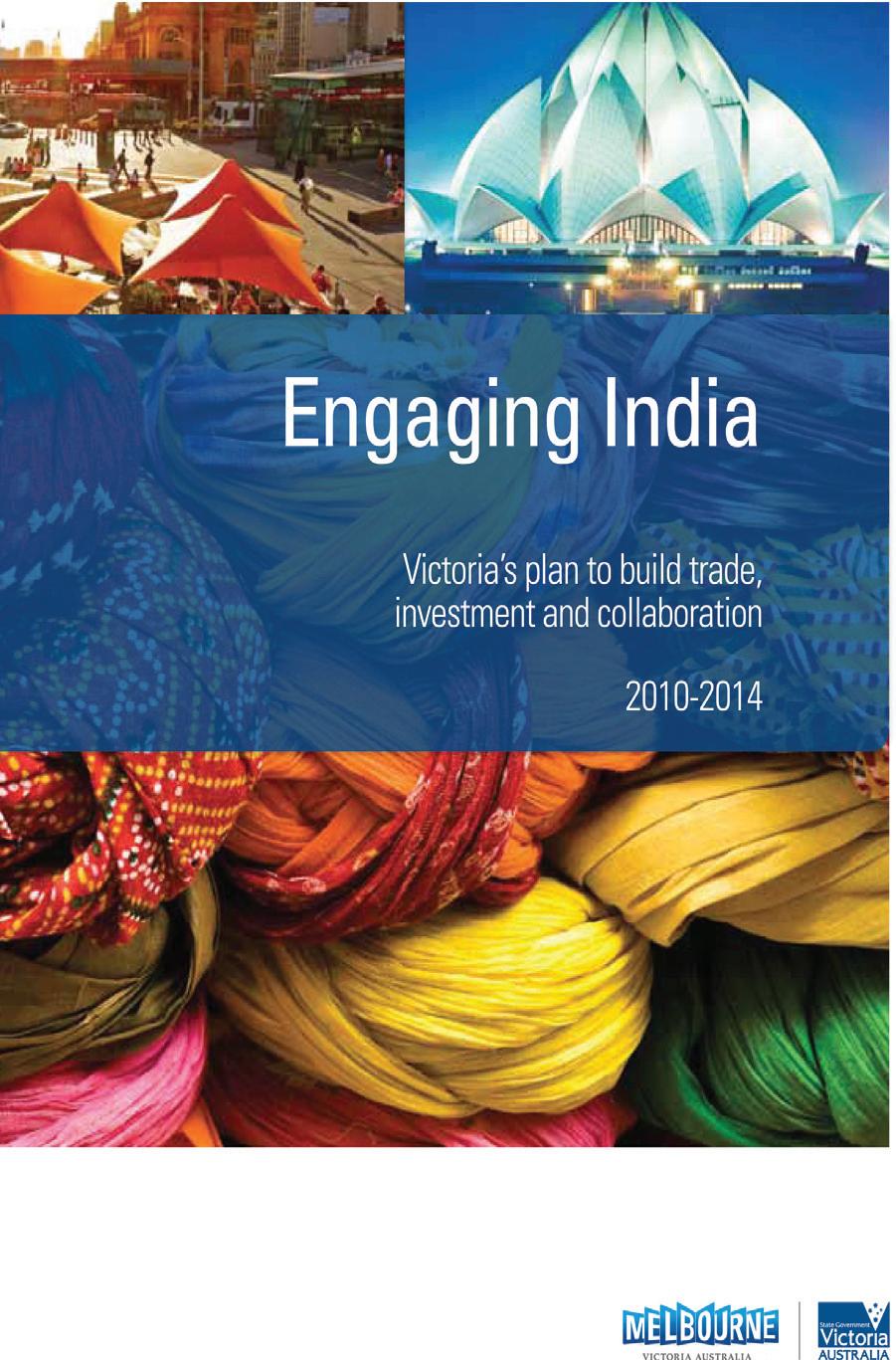
The initiative was launched by Premier of Victoria John Brumby on September 22 at Federation Square, Melbourne along with Industry and Trade Minister Jacinta Allan.
The new program will lead to an increased level of government collaboration between Victoria and India and a strengthening of community and cultural understanding.
Trade and investment has always been a key focus area for Victoria and India and the new engagement plan will ensure the setting up of Super Trade Missions – an initiative of trade delegations under the banner of ‘Team Victoria’ led by senior Victorian Government representatives which will be backed by
The missions will include more than 200 Victorian companies and are projected to generate an additional $60 million in exports along with similar increases in investment and jobs. It also includes pre-mission programs for Victorian businesses associating with India and facilitating return visits for Indian businesses to Victoria.
“Victoria has had a very positive trade growth with India in recent times with business growing by 25 per cent annually. The overall sentiment towards Victoria being a preferred trade and investment destination has been validated by major Indian companies who have invested into Victoria in the past few years. We are positive that the new “Engaging India” program will help grow the India-Victoria relationship forward,” said Mr Geoffrey Conaghan, Victoria’s Commissioner to India.
Part of this program will also include in-market research for the business sector and increased promotion in India of
The program will also see increasing government collaboration through a strategic partnership with Austrade in India to share information about potential investments and opportunities; more strategic agreements with Indian states backed by an ongoing exchange program to promote public sector capability building; and actively supporting visits to Victoria by Indian Ministers.
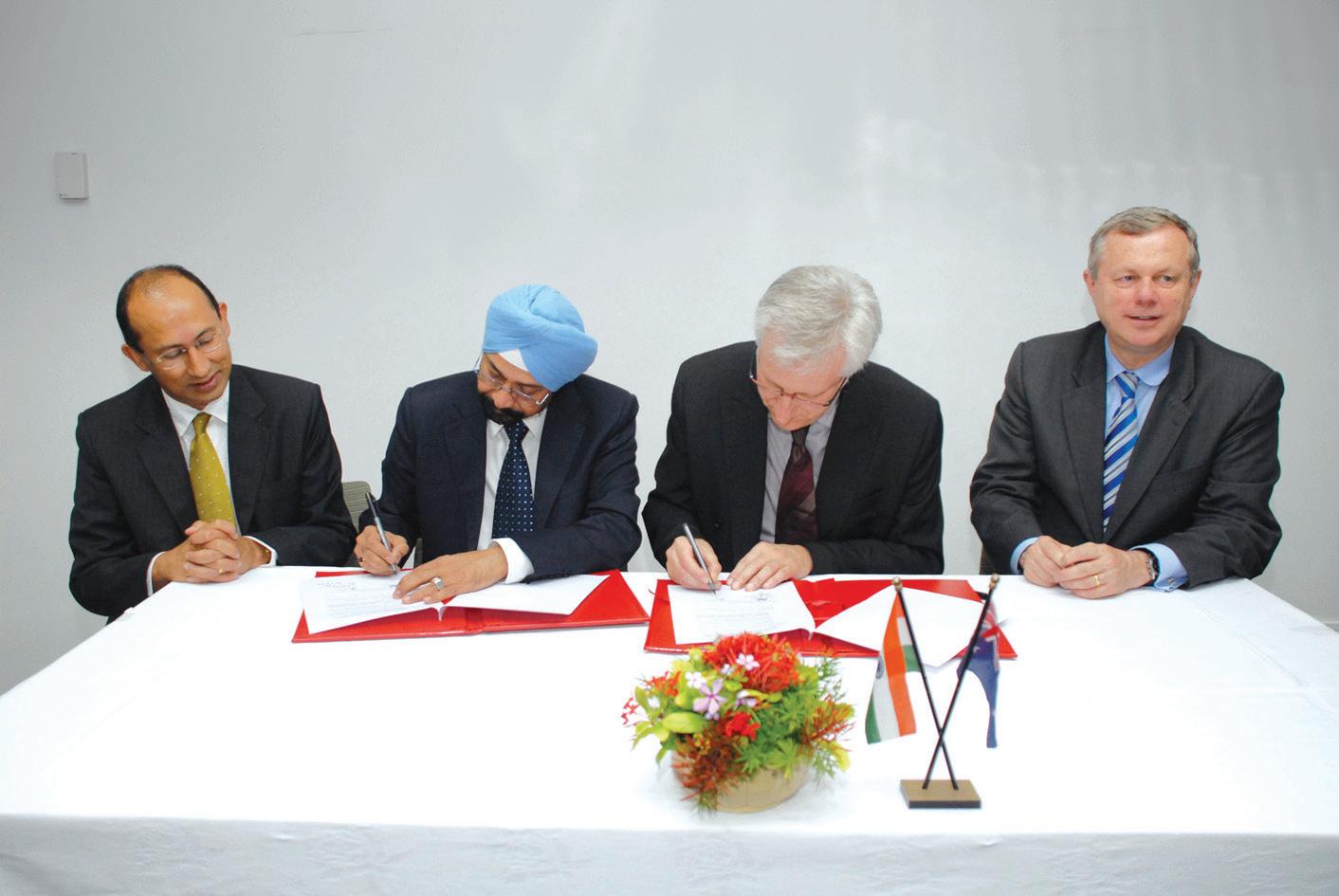
Some of the recent examples include Mahindra and Mahindra strengthening its aerospace business in Victoria through acquisitions, DEC Wadhawan investing $1 billion towards construction projects in Melbourne and Air India entering the Australian market with direct flights from Delhi to Melbourne. IT is another fast growing segment with nine Indian IT companies based out of Melbourne.
Education is yet another strong area of focus for the next four years. The “Engaging India” program will see 10 postgraduate PhD scholarships being provided to Indian students to study at Victorian universities. It is the first country-specific program for PhD scholarships and Indians who will benefit from the $1 million opportunity to study at worldrenowned universities. The program will also see support for vocational education exchange scholarships for Karnataka students in Victoria.
In Victoria, a special initiative has been introduced by establishing a Chair in Contemporary Indian Studies at the Australia India Institute that will see an additional funding of $500K. The position will be the first in Australia with a multidisciplinary contemporary India focus. The Chair will participate in academic visits, research projects and act as a focus for the education of Indian students in Australia.
Culturally, the “Engaging India” program will support a broad range of arts initiatives over the next four years.
OCTOBER (1) 2010 <> 35 NATIONAL EDITION www.indianlink.com.au
South Australian Premier Mike Rann (extreme right) witnesses the signing of the Defence industries MoU with the Confederation of Indian Industry. Australian High Commissioner to India, Mr Peter Varghese is at the left.



36 <> OCTOBER (1) 2010 INDIAN LINK


OCTOBER (1) 2010 <> 37 NATIONAL EDITION
We are committed to providing you with the most personalized & tax-effective strategies. Whether you are an individual or a business owner, we will help you with the best advice on tax minimization, GST compliance, accounting & business solutions.
Over the past several years, we have built an enviable reputation for professional and value-for-money services.

We promise:
• Value-added services with proactive solutions.
• A focused and customized service by taking the time to understand your needs.
• Accessibility and responsiveness throughout the year.
We guarantee that your returns are 100% compliant with the latest Australian Taxation Law which will ensure peace of mind and help you focus on wealth management.
Calculus Accounting and Taxation Services
Suite 2, Level 3, Strathfield Plaza 11 The Boulevarde, Strathfield NSW 2135

02 - 9267 8933
Niranjan Kale: 0411 034 507
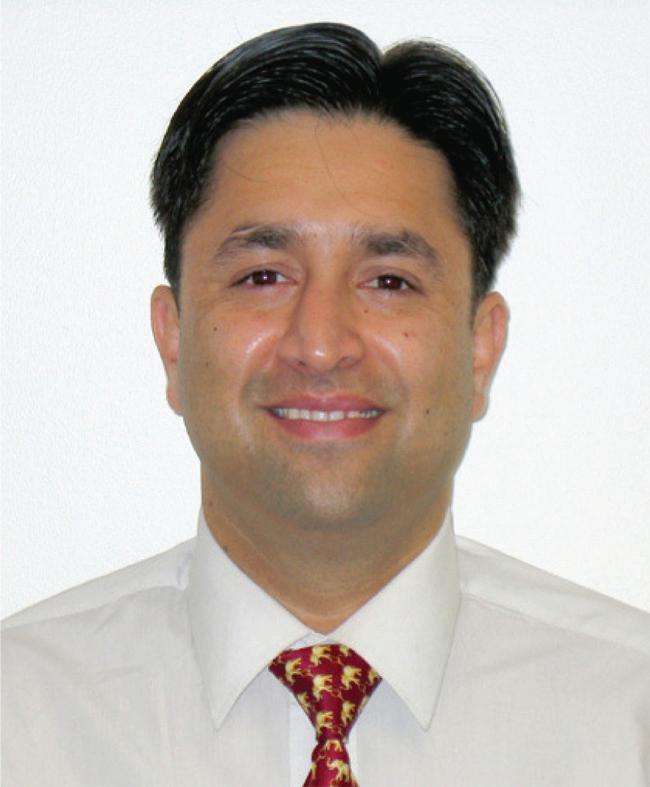
38 <> OCTOBER (1) 2010 INDIAN LINK






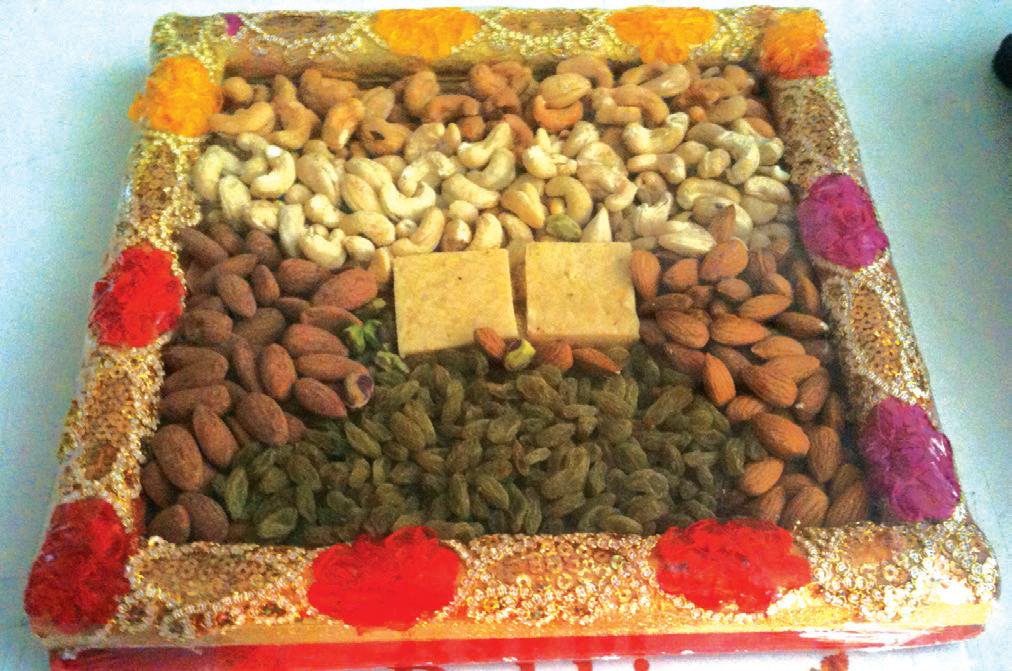






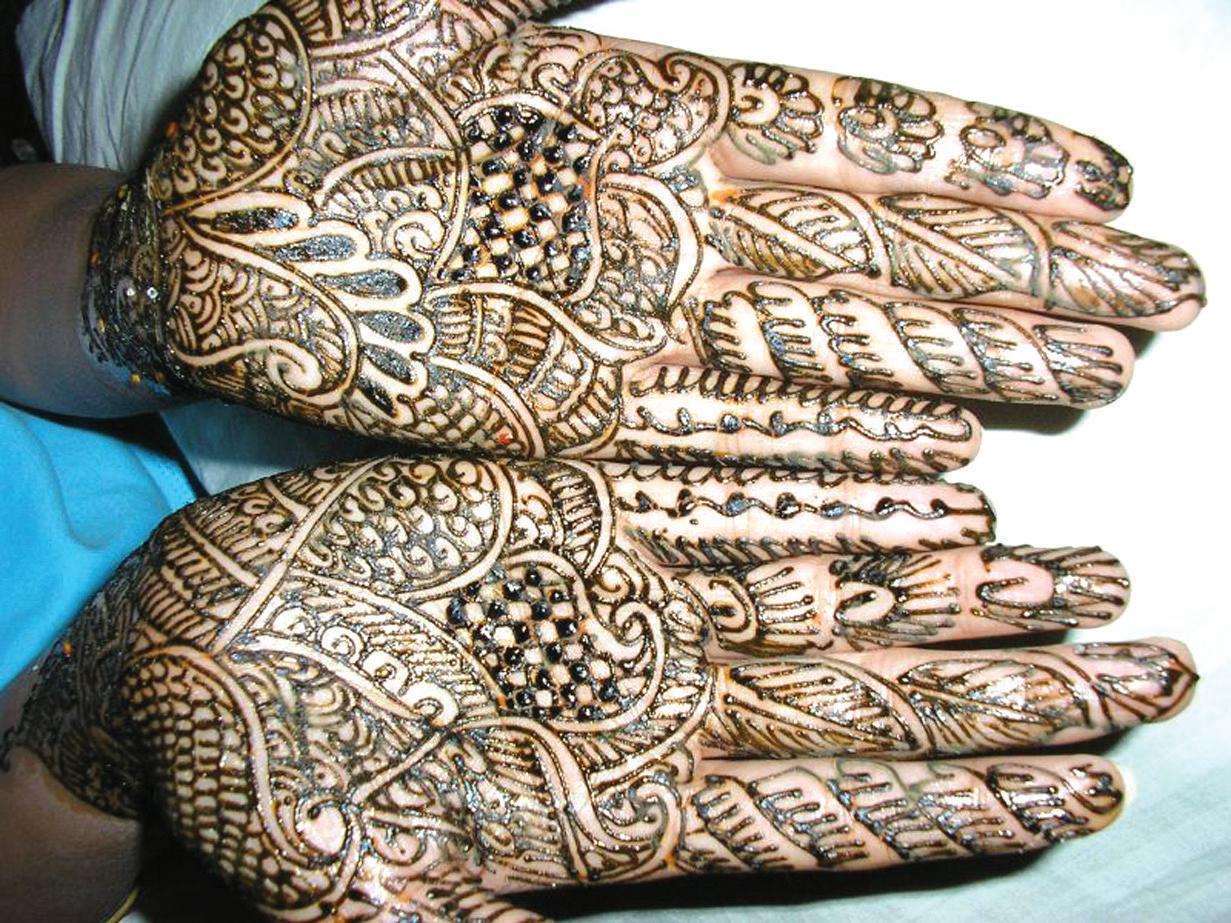
OCTOBER (1) 2010 <> 39 NATIONAL EDITION WHAT’S HAPPENING AT 143 Stephen Street (cnr Sackville Street), Blacktown Phone 02 9676 4677 Fax: 9676 4688 enquiry@singhfoodspices.com.au www.indianspices.com.au Saturday 23rd ,Sunday 24th & Monday 25th October 2010 (no booking 1st come served basis) * Conditions apply GOLD MEDAL FOR PARANTHA EATING Soon to feature in Commonwealth games Parantha eating competition on Sunday, 31st October Time : 11 am, Current record12 parantha. Entry fee of $7 WIN $100 cash Results declared at 3 pm. on traditional Indian food FLAMING HOT DEALS Call now on 0404 086 254 Quality Quantity Service Catering from $9pp
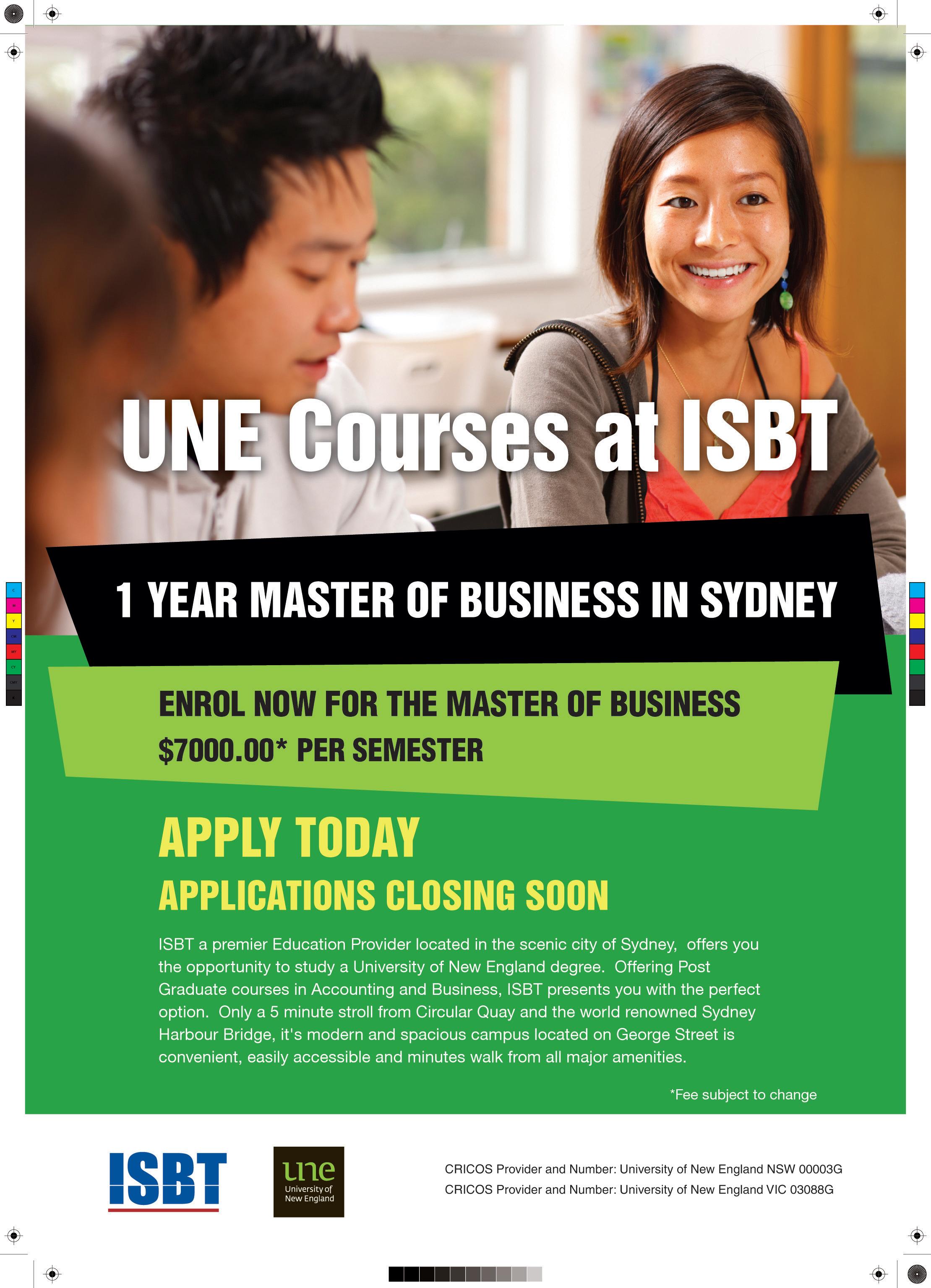


NATIONAL EDITION Sydney, Canberra Melbourne For details call 18000 15 8 47 One paper FIVE EDITIONS
Ayodhya verdict: Waqf board resolves to move apex court
Virtually derailing efforts at a possible reconciliation, the Uttar Pradesh Sunni Central Waqf Board has said it is all set to take the Ayodhya legal battle to its logical next stage - the Supreme Court. An announcement to this effect was made by board chief Zufar Ahmad Farooqui in Lucknow.
“At a meeting of the board, we have resolved to file an appeal before the Supreme Court,” Farooqui told mediapersons.
“I am the sole spokesman of this board and nobody other than me is authorised to speak on behalf of this organisation,” he said.
The meeting was attended by nine of the 13 members of the board.
Soon after the Allahabad High Court’s verdict on the Ayodhya land dispute Sep 30, board counsel Zafaryab Jilani expressed his intention to appeal against the court’s verdict.
The high court decision seeks to divide the disputed 90 feet by 120 feet plot of disputed land into three equal parts among three litigants -- the Sunni Wakf Board, Hindu sect Nirmohi Akhara, and Ram Lalla (the ruling deity at the site).
There were six Muslim contestants including the board, whose stand was opposed by 90-year-old litigant Mohammad Hashim Ansari.
Ansari met Mahant Gyan Das, who wields considerable influence not only in Ayodhya but also among top Hindu priests, and urged him to jointly work out an amicable settlement of the Ayodhya issue.
Close on the heels of the initiative taken by 90-year-old Ansari for a negotiated settlement on the Ayodhya issue, the Nirmohi Akhara too has expressed its inclination to talk and resolve the dispute once and for all.
“I welcome the initiative taken by Mahant Gyan Das and Hashim Ansari and will be only too glad to be a party to the move for bringing the dispute to an amicable settlement and avoid another unending court battle,” Nirmohi Akhara chief Mahant Bhaskar Das said.
Significantly, while Ansari was the first Muslim to stake a legal claim to the Babri Masjid after it was usurped by Hindu mobs on the night of Dec 22-23, 1949, it was the Nirmohi Akhara which sought legal right to offer prayers at the disputed site way back in 1885.
It was Ansari who took the first step towards initiating a process of reconciliation instead of proceeding straight to the country’s apex court in
Salem’s trial for murder: Apex court clears way for verdict
The Supreme Court has cleared the decks for a designated Terrorist and Disruptive Activities (Prevention) Act (TADA) court to give its verdict in a Mumbai builder’s murder case in which don Abu Salem is the prime accused.
Juhu-based builder Pradeep Jain was murdered in 1995.

An apex court bench of Justice P.
Sathasivam and Justice R.M. Lodha upheld the Maharashtra government’s plea that Salem could not cross-examine the accused-turned-approver Riyaz Ahmed Siddiqui, who was subsequently discarded by the prosecution.
Approver Siddiqui was discarded as witness as evidence tendered by him was not aiding the prosecution case and the plea for his pardon too was withdrawn. The other approver was Maim Khan.
Besides Salem, other accused in the case are Riyaz Siddiqui, Maim Khan, Mohammed Mahendi Hassan and V.K. Jhamb. They were accused of criminal conspiracy to eliminate Jain.
Speaking for the bench, Justice Lodha said that the question involved in the matter is whether an accused has a right to cross examine an accomplice-turnedapprover who had tendered evidence as prosecution witness but pardon granted to him was withdrawn.
The judgment said that after the withdrawal of the pardon, the approverturned-prosecution witness relegates to the status of an accused and the evidence rendered by him (as an approver) becomes useless.
In such a situation, there is no scope for the other accused (Abu Salem and others in the instant case) to cross examine such a discarded approver-turned-prosecution witness, the court said.
The apex court faulted the TADA court in treating Riyaz Siddiqui as a hostile witness.
“It (TADA court) failed to consider that the pardon granted and accepted by him was conditional... inasmuch as it was on the condition of his making a true and full disclosure of all the facts concerning the commission of crime and once the pardon granted to him stood forfeited, he was relegated to the position of an accused and did not remain a witness,” the court said.
“In the circumstances, there was no justification to permit the defence to cross examine (such a discarded approver turned witness),” the judgment said.
It may be recalled that Salem had pleaded before the TADA court that he should be allowed to cross-examine both Siddiqui and Khan.
The plea was opposed by the prosecution on the grounds that it was not relying on their testimony as approver.
The state government took this position because it found that there was nothing in the testimonies of two approvers that could be counted upon by the prosecution in advancing their case against Salem and two others.
The prosecution had even withdrawn the grant of pardon to these two accusedturned-approver, the government said.
However, the TADA court allowed Salem’s plea to cross-examine the approvers.
It was against this order of the TADA court that the Maharashtra government moved the apex court.
While the apex court was seized of the matter it directed the TADA court

42 <> OCTOBER (1) 2010 INDIAN LINK
A new beginning: Indian sculptor Debanjan Roy poses next to one of his creations of Indian independence icon Mahatma Gandhi at the L&P Hutheesing Visual Art Center in Ahmedabad. Roy, who has had previous exhibitions overseas, is showcasing his first solo exhibition in Ahmedabad. Photo: AP appeal against the Sep 30 order of the Allahabad High Court.
to proceed with the trial but restrained it from pronouncing the verdict till it decided on the plea by the State government.
After the verdict of the apex court, the TADA court, which has already concluded the trial, is free to pronounce the verdict in the case.
At 21, you can serve liquor in Delhi, but won’t be served
You can serve liquor at the age of 21 -- but can’t be served, stipulates the new Excise Act of the Delhi government, adding that women can be bar tenders too.
The Delhi Excise Act, 2009, that came into force on October 4, replaces the outdated Punjab Excise Act, 1914, which was extended to the national capital.
According to it, the age of employment of men in places where liquor is served has been reduced from 25 years to 21 years and restriction of employment of women has been done away with.
However, Excise Minister A.K. Walia told reporters that the age at which people can take liquor remains at 25.
The previous rule did not allow women to be bar tenders.
The new law has been enacted to overcome the problem of spurious and adulterated liquor, its smuggling and also its consumption in public places, Walia said.
India to grow at 9 percent in 2011-12: Rangarajan
The Indian economy is expected to clock a higher rate of growth in fiscal 2011-12 with better agricultural performance, C. Rangarajan, Chairman, Prime Minister’s Economic Advisory Council (PMEAC) has said.
He said the economy would grow at 8.5
per cent in 2010-11.
“With good monsoon this year, agriculture is expected to record a growth of over 4 per cent and with industrial growth estimated at around 9-10 per cent this year, one can hope of even a better growth rate in year 2011-12”, said Rangarajan.
“We expect Indian economy to grow at 9 per cent in 2011-12.”
He said due to good monsoon rains this year, the inflation should come down to 6.5 per cent by March next year.
“Last year’s factors and forces like drought, which fuelled inflation, have disappeared this year, which will bring it down,” Rangarajan added.
Obama to visit India in Nov
US President Barack Obama will attend the US-India Business and Entrepreneurship Summit in Mumbai Nov 6 during his four-day visit to India, according to the US-India Business Council.
The trade advocacy group representing over 300 leading US companies doing business with India said its four-day Presidential Executive Mission to India will commence with a Business and Entrepreneurship Summit Nov 6.
Jointly organized with the US Department of Commerce, the summit featuring Obama “will help deepen America’s commercial relations with India, support American jobs, and strengthen the vital US-India partnership,” USIBC said.
“When Obama travels to India he will be the sixth-ever US President to set foot on Indian soil. His visit will be an actiontriggering event, where major business policy objectives can be advanced,” it said.
“The visit offers the opportunity to underscore that India will be one of the
United States’ key partners in the decades ahead.”
In follow up to the Business and Entrepreneurship Summit, the USIBC Presidential Executive Mission will participate in business conferences in New Delhi Nov 8 and 9 to explore opportunities in bilateral investment, trade and innovation, USIBC said.
Besides Mumbai and New Delhi, Obama is also expected to visit Amritsar.
Sportspersons donate memorabilia for Rahul Bose’s NGO
Do you fancy owning Sachin Tendulkar’s bat or Abhinav Bindra’s rifle? All you have to do is participate in an auction for which 26 prominent sportspersons have donated memorabilia that define iconic moments in their careers to raise funds for Bollywood actor Rahul Bose’s NGO.
At “Equation - An auction for Equality”, one can bid for, amongst others, Vishwanathan Anand’s world championship gold medal, the bat with which Sachin Tendulkar hit his fourth highest one-day score, the rifle with which Abhinav Bindra claimed the world championship, tennis shoes signed by Roger Federer and the racquet with which Mahesh Bhupathi’s claimed the Australian Open Grand Slam title.
These and other items will be auctioned Oct 29 and the proceeds will be used to support the causes of Bose’s NGO The Foundation.
The list of doners also boasts of impressive names like cricketers Saurav Ganguly, Sunil Gavaskar, Anil Kumble, Kapil Dev, Mansur Ali Khan Pataudi and Virendra Sehwag; tennis icons Leander Paes and Sania Mirza and shuttlers Prakash
Padukone and Saina Nehwal.
Footballer Baichung Bhutia, cueists
Geet Sethi and Pankaj Advani, as also international sportspersons like Shane Warne and Maria Sharapova have also donated for the auction.
Bindra, who is giving away his most prized possession, said: “I have been very attached to this rifle because it is with this I made my breakthrough at the highest level. It’s a system which has several technological advancements done specifically for me, including a hand-made calibrated trigger mechanism.”
“I won approximately 25 international medals during the six years I shot with this system. I must admit it is a little wrenching to give this away, but also extremely satisfying,” he added.
Prince
Charles dances to tunes of
folk music
It was a hectic but fascinating day for British royals Prince Charles and his wife Camilla Parker Bowles who had come to this historic city in Rajasthan on October 5 on a day’s visit during which he even danced with folk artistes.
After spending almost one full day meeting army officials, visiting erstwhile royals of Jodhpur and spending time in a village to observe a water harvesting and conservation project, the British royals flew back to London from Jodhpur at 8.20 p.m., officials said.
Earlier in the day, the visiting couple was accorded a royal welcome by the erstwhile rulers of Jodhpur when they arrived at the Umaid Bhawan Palace here, sources said.
Gaj Singh, erstwhile ruler of Jodhpur, his wife Hemlata Raje and his daughter Shivranjani welcomed the prince and his
Continued on page 44

OCTOBER (1) 2010 <> 43 NATIONAL EDITION
wife in a traditional manner.
“He was garlanded amid traditional welcome songs and dances by folk artistes,” said sources close to the erstwhile royal family of Jodhpur.
Prince Charles also held discussions with the former royals on different issues, including the preparations for the wedding of former prince Shivraj Singh.
The British guests were served a royal lunch, which included continental, Indian and Rajasthani cuisine. “He especially enjoyed the traditional Indian sweet, halwa, and lichi juice,” sources said.
After the lunch, he rested a while in the palace, sources said.
Prince Charles earlier arrived at an Indian Air Force station here at 11.55 a.m. in a chartered plane from Chandigarh and was received by senior air force and army officials.
District Collector Sidharth Mahajan and Superintendent of Police Mahesh Goyal were also present, officials said.
“After spending a few minutes at the airport, Prince Charles drove to the army’s desert corp’s headquarters where he met Commander Narendra Singh,” an official said.
Later in the day, Prince Charles visited the famous Bijolai Fort and witnessed the natural beauty of the Kaylana Lake.
He also looked at the initiatives undertaken by local NGO, Jal Bhagirathi Foundation, for water harvesting and conservation, sources said.
The prince also visited Tolasar Charna village and gained first-hand knowledge about the culture of Marwar region and its water related festivals. He and his wife were very excited after their interaction with villagers, sources said.

In the village, he also participated in a function organized on a pond developed by the foundation and took stock of the traditional water resources and water conservation methods.
As the British royals reached the pond, they were greeted at glittering functions showcasing the cultural richness associated with festivals.
On the one side, there were glimpses of the Holi festival while, on the other side, two children were shown anticipating or forecasting the weather using the traditional methods.
It was here that the prince started to dance with folk artistes. “He loved the folk songs and dances so much that he joined the folk artistes and danced with them for few minutes”, sources added.
Before their departure, the royal visitors enjoyed dinner with Jodhpur’s erstwhile
The Prince of Wales first visited the city in 2006.
Eight-month-old gets liver transplant from father
Eight-month-old Akshu’s parents had almost lost hope of saving their daughter
who suffered from liver failure till they met doctors at the army hospital in New Delhi.

The baby has now got a new lease of life following a nine-hour surgery, becoming one of the youngest and smallest liver transplant recipients in India.
Akshu, daughter of Rifleman Anil Kumar, is recuperating fast and is likely to be discharged from the army’s R.R. Hospital in Delhi Cantt within a week. The
piece of liver that her father had donated to her was successfully transplanted during the long surgery.
Maj. Gen. P.P. Verma, deputy commandant, R.R. Hospital, told reporters that Akshu was “suffering from liver failure caused by congenital absence of bile duct and was under treatment for jaundice and recurrent intestinal bleeding”. When she was admitted to the hospital
44 <> OCTOBER (1) 2010 INDIAN LINK
A taste of India: Britain’s Prince Charles dances with Indian villagers during his visit to understand the water conservation efforts in Tolesar Charan village, near Jodhpur on Oct. 5. Prince Charles is in India on a four-day trip, where he jointly inaugurated the Commonwealth Games with Indian President Pratibha Patil.
Photo: AP ruler Gaj Singh at Bal Samand heritage resort where, too, folk songs and dances were organised.
Continued from page 43 Indian
Lease or Sale Very Hugh,Popular Location, Good opportunity for new to industry or seriously looking for restaurant Only serious candidate contact 0451212435 Confused with Computers??? Need professional help at reasonable rates? Call Gaurav on 0424 73 8777 for home wired/wireless network setup, computer repair and hardware upgrades. Free quote available.
Restaurant for
Sep 23, she weighed only five kg and “because of her small size, the piece of liver given by her father had to be reduced further during the delicate operation which lasted over nine hours”.
“The infant is progressing well,” Verma said.

The relieved father was all praise for the doctors who “returned me my life”.
“We had given up on hope. But I don’t know how to pay gratitude to the doctors. Only a father can understand that,” Kumar told IANS.
Lt Gen Naresh Kumar, officiating director general of Armed Forces Medical Services, said the liver transplant centre at the army hospital had so far performed 46 liver transplants, including seven paediatric liver transplants with “excellent results”.
This make the hospital a “pioneer in deceased donor liver transplantation in India”, said Kumar.
Cabinet clears bill on judicial transparency
The union cabinet has approved the Judicial Standards and Accountability Bill, 2010, aimed at enhancing transparency in judiciary.
The decision to approve the bill was taken at a cabinet meeting chaired by Prime Minister Manmohan Singh.
Briefing reporters after the meeting, Information and Broadcasting Minister Ambika Soni said the bill provides a mechanism for inquiring into complaints against judges of the Supreme Court and high courts and lays down standards for judges of higher judiciary.
She added that the proposed law also requires the judges of the Supreme Court and high courts to declare their assets.
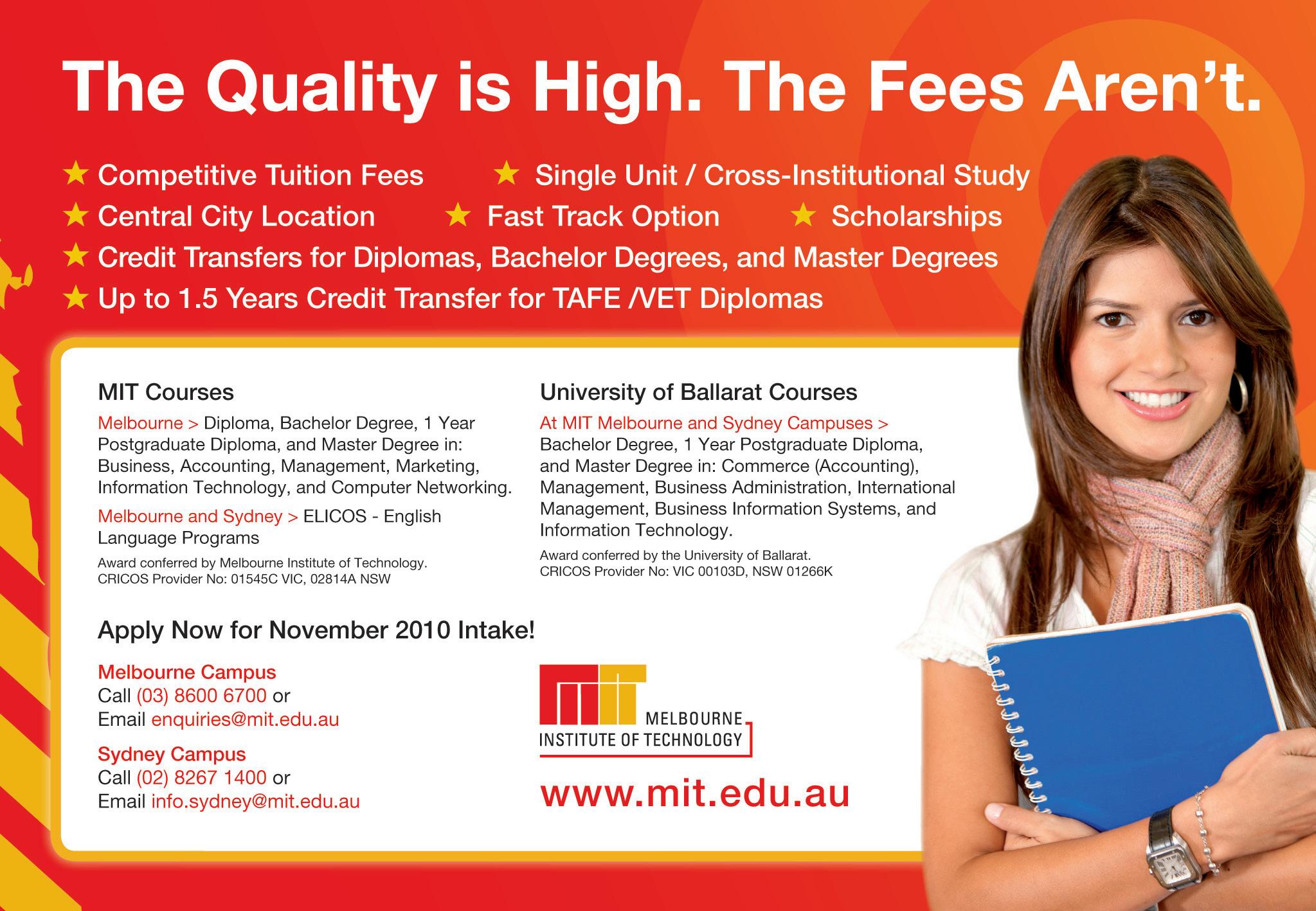
The bill seeks to replace the Judges Inquiry Act, 1968, while retaining its basic
features, Soni said.
The enactment of the bill will address growing concerns regarding the need to ensure greater accountability of higher judiciary by bringing in more transparency and would strengthen the credibility and independence of judiciary.
The proposed law envisages formation of an Apex Oversight Judicial Committee (AOGC) headed by a former chief justice of India, with th attorney general being its ex-officio member.
The five-member oversight committee will also have one sitting Supreme Court judge and one serving high court judge nominated by the chief justice of India.
The panel will also have an eminent person nominated by the president. The oversight committee will be empowered to receive complaints against any sitting judge of higher judiciary.
It will be the authority to appoint a scrutiny panel in the Supreme Court or a high court to investigate the allegations contained in the complaint.
The complaint scrutiny panel will function at the level of both the high court and the Supreme Court.
The panel will be required to give its report to the oversight committee within three months following which the committee will decide, depending on the gravity of charges, whether to warn the erring judge or ask him to step down.
In case an erring judge refuses to step down as per oversight committee recommendations, then the committee would further seek investigation into charges against the judge by another panel, and depending upon the report of the second inquiry committee, further action will be recommended by the oversight panel.
OCTOBER (1) 2010 <> 45 NATIONAL EDITION
Picture perfect : Indian actress Aishwarya Rai poses with husband Abhishek Bachchan at a dinner organized to celebrate Italian fashion brand Roberto Cavalli’s 40th anniversary on September 29, 2010 at the Ecole des Beaux-Arts (Fine Arts school) in Paris.
Photo: AP
IANS
Life in the Village
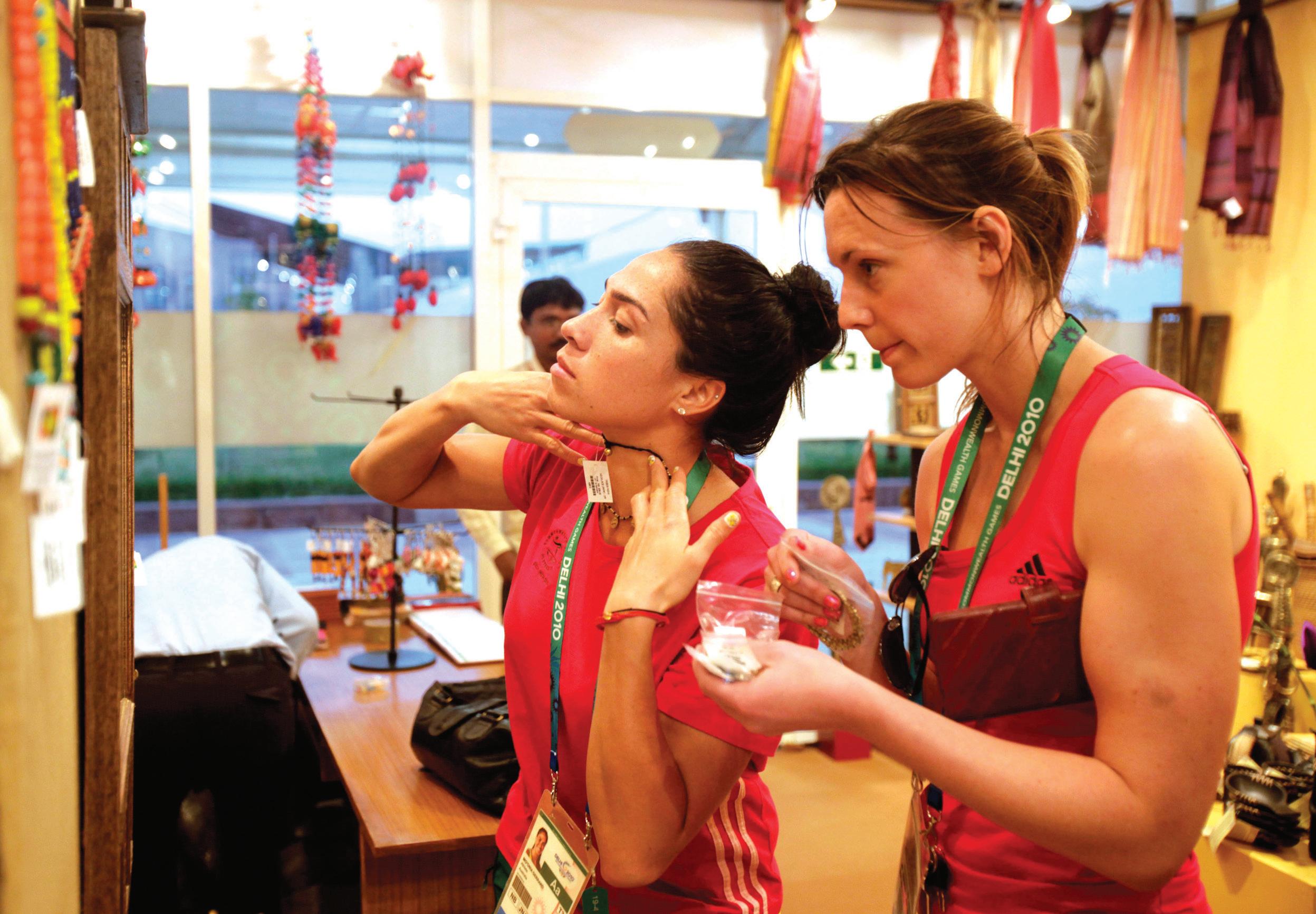



46 <> OCTOBER
2010 INDIAN LINK COVERSTORY
(1)
Australian hockey player Jamie Dwyer prepares for practice
Australians Megan Rivers (centre left) and Fiona Johnson (centre right) learn their Bollywood moves
Serious business: Jewellery shopping for Australian athletes Natalie Medhurst and Mo’ onia Gerrard
Photos: AP




OCTOBER (1) 2010 <> 47 NATIONAL EDITION www.indianlink.com.au
Aussie girls Megan Rivers, right, and Fiona Johnson enjoy a game of darts
Dance class for Canadian athletes
Australians Carli Renzi (left) and Emily Bensted have a cuddle with Shera
Renaissance of a city
Despite the wave of negative publicity surrounding the Delhi CWG, it’s not all doom and gloom for this vibrant city
 BY MARK SHARMA
BY MARK SHARMA
October 2010 was supposed to be a memorable moment for India, as host to the Commonwealth Games. After many years of economic reforms, it was time for “New India” to come out of the shadow of the old third world. But unfortunately, all has not been smooth sailing. A dirty Games village, record rainfall, flooding, dengue disease and the ever-present threat of terrorism has all but made certain that the Delhi Commonwealth Games will be remembered for all the wrong reasons in the future. From the start, people had doubts whether Delhi would be able to host such a huge event. But nobody could have predicted that things could go so bad. Endemic corruption and incompetent governance that most Indians are fully aware of is now out there for the whole world to see.
While it is fair to criticise certain parts of the Games organisation, I do feel that some sections of media, both here in Australia and overseas went overboard by pushing to cancel the Games. One of the things that the western media needs to understand about India’s preparation for the event is that unlike other countries, India had to make a bigger and more pronounced effort. From 2003 onwards, the Indian Government in partnership with the Delhi State Government, set upon the task of building a mass transit system which was done successfully and has been maintained ever since. The Delhi Metro is one of the best transport systems in the world and is definitely better than what us Sydneysiders have been experiencing for many years. The success of the Delhi Metro is directly linked with Commonwealth Games. In fact, they recently opened a new line that would connect the new International Airport to rest
of the city. Seven years ago this was unthinkable.
The other significant achievement has been the new airport. Only five years ago the Indira Gandhi International Airport in Delhi resembled a busy bus depot. But since then, many new developments have taken place and the new airport is now on par with international standards. The new wing, better known as Terminal 3, was recently inaugurated and has been admired by visitors and journalists from all over the world. This was also linked to the preparation for the Games.
Apart from these two major developments there have been hundreds of small infrastructure projects like building multi-lane highways, modernizing State Transit buses and an influx of massive malls, which have all helped Delhi in its quest to become a modern city.

These developments might seem “regular” from the Australian point of view, but from the Indian perspective they are huge and a shot in the arm for both state and federal Governments in Delhi. When a city like Melbourne or London hosts these types of events they don’t have to worry about building roads and airports; but in the case of Delhi the existing infrastructure had to be revamped almost from scratch.
Add to that the inherent corruption, slow speed of bureaucracy and a lethargic legal system, it was always going to be hard to put on a perfect show. But it does not mean that the organisation of these Games has been a complete failure. Close to $3 billion has been spent on rebuilding stadiums and building new ones in a country where close to 90% of population only watches one sport, which is not even a part of these Games.
It is reasonable to say that the idea to host such a big
event was not just to encourage Indians to take up sports other than cricket, but also to tell the world that India is now ready and open for business. It was a signal to the business community abroad that Delhi is now on par with other state-of-the-art international cities. It now has high quality roads, reliable public transport, a privatized electricity system, a world class airport and all the other important infrastructure needs. It is the host not just for the CWG, but is also open to international travel, investment and opportunity. Considering this criteria, Delhi has definitely passed the test. More and more people are now travelling to India for both business and pleasure. A few weeks ago Hollywood superstar Drew Barrymore revealed that she travelled to Delhi for “a holiday”. Yes, it was not a charity event for the United Nations or the filming of another Slumdog Millionaire but a holiday. “I was tired of work and decided to take a two week break to Delhi,” she said on a popular American talk show. This attitude indicates that people around the world have started looking at Delhi as a “normal” global city just like Toronto, New York, London or Sydney. To me at least, this is the overall success of the Games. The Commonwealth Games are just a part of the overall transformation of Delhi, but it does not mean that the event itself is not important. Simply put, the development of modern Delhi is like a wedding party and the Games itself is the cake. We all know that nobody goes to a wedding just to eat the cake, but no wedding is complete without a cake either. God willing, this love story of the Delhi Commonwealth Games will end just like a Bollywood movie with joy, success and happiness.

48 <> OCTOBER (1) 2010 INDIAN LINK www.indianlink.com.au OPINION
One of the things that the western media needs to understand about India’s preparation for the event is that unlike other countries, India had to make a bigger and more pronounced effort
It is reasonable to say that the idea to host such a big event was not just to encourage Indians to take up sports other then cricket, but also to tell the world that India is now ready and open for business
Will history repeat itself?
A trip down memory lane, to ASIAD 1982, amidst all the CWG hysteria
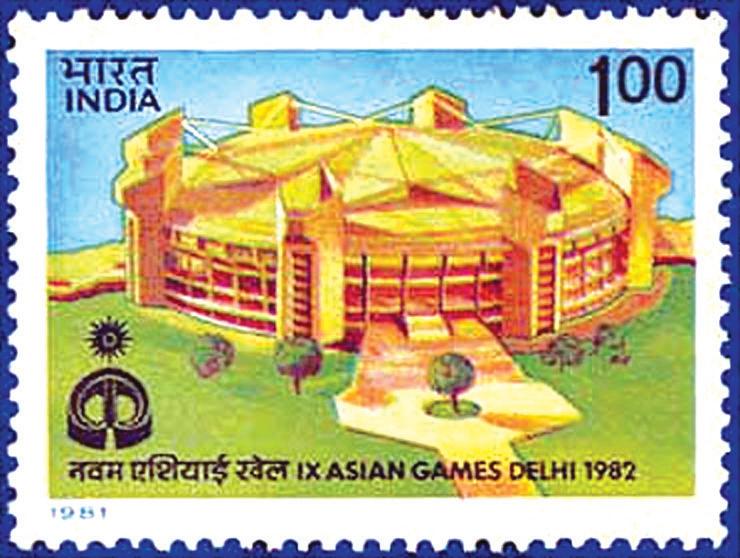
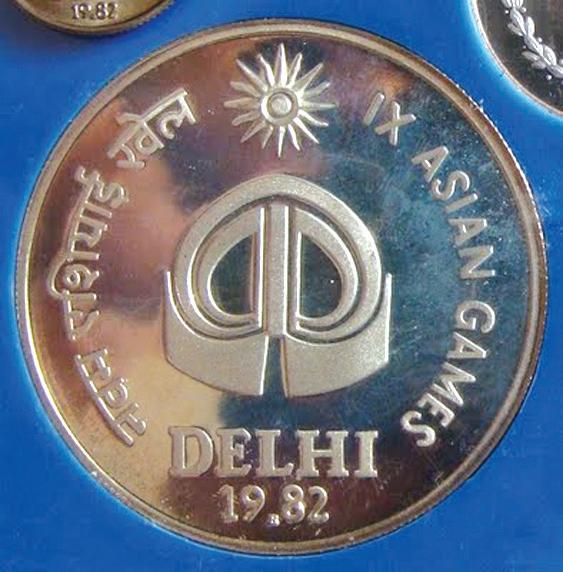
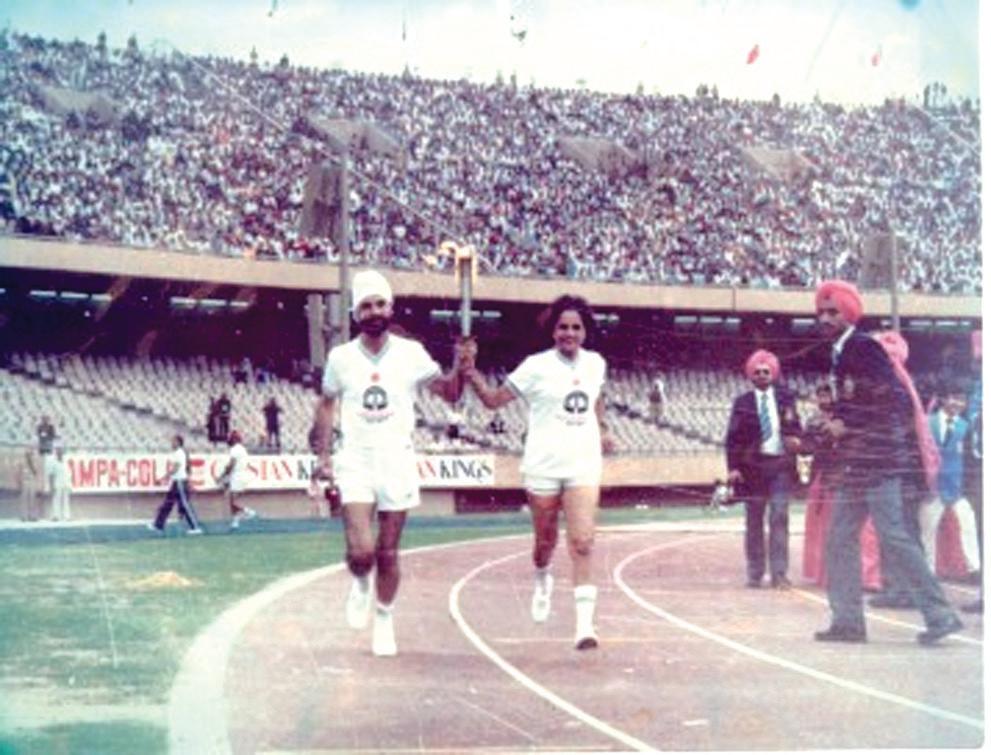 BY MADHUCHANDA DAS
BY MADHUCHANDA DAS
“Someone reminded me I once said, ‘Greed is good.’ Now it seems it’s legal,” blurts Gordon Gekko in the just released sequel to the hard hitting 1987 blockbuster Wall Street. This line from Wall Street: Money Never Sleeps provided enough fodder to get my brain cells ticking feverishly, drowning me up in a flurry of questions. Are these times really as depraved as they are being made out to be?
It seemed extremely topical in the midst of all the brouhaha over the Commonwealth Games in New Delhi. Allegations, accusations, accidents and acrimony were flying in all directions out of saddi Dilli. It didn’t seem very befitting or believable, since the success of ASIAD (1982) which emanated from the very same spot, albeit three decades ago. Surprising, but wasn’t it just yesterday on a cosy November morning in the famed Delhi winters, when Pandit Ravi Shankar’s lilting, rousing and uplifting composition Swagatam, Shubha Swagatam echoed in the air, filling all with palpable national pride. Inarguably, it provided that perfect start to the grand multi-nation, multi-sport event that surged India into global reckoning and reinstated the “can do” Indian spirit (and please, I’m not referring to the jugaad we’re also universally known for). It generated mammoth momentum and coerced the world to stand up and take notice that India had indeed arrived. The magnitude and magnificence of the ASIAD Games and the hysteria they generated were unparallel.
Managing a whopping 4,595 athletes from 33 countries and innumerable spectators with just two years to get their act together, was no mean feat in those nascent days for technology in India. In spite of the glitches and hitches, I understand, the nation’s love for sport and unswerving belief in sportsmanship reigned supreme, and we pulled it off with admirable aplomb. Delhi was transformed into a world class city with impeccable and withstanding infrastructure laid out in a record two years - the first flyovers, sprawling stadiums, the gigantic ASIAD village, wide roads, plush hotels and let’s not forget the endearing heartthrob of childrenthe Games mascot Appu. Finally, the strawberry on the cake - the first TV transmission in colour!
Managing a whopping 4,595 athletes from 33 countries and innumerable spectators with just two years to get their act together was no mean feat in those nascent days for technology in India
As a stunned eight-year-old, I fondly remember joining millions of my countrymen in excitedly lapping up the mega sporting spectacle in multi colour. Inefficiency, inordinate delays, intrusions, injustice and insurgencies of nature were undeniably present even then. Despite and above it all, we were able to deliver what we had promised and come out with flying colours. Patriotic pride and nationalistic narcissism combined with the attitude to achieve, and these emotions reigned supreme. They refused to remain trapped in a wily politician’s flowery speech but instead proved to be pertinent through careful calculation, contrivance, commitment and coordination of all concerned sectors.
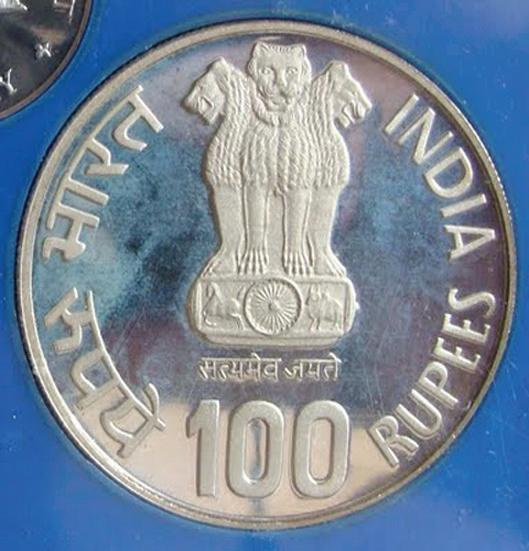
Who can forget Kiran “Crane” Bedi - New Delhi’s traffic chief, whose impartial enforcement of rules kept the capital’s motley lot of vehicles moving during the Games. Kiran’s cranes would mercilessly remove illegally parked vehicles and clear traffic clogs, earning

her legendary status and the acronym ‘Crane’.
From PT Usha to Chand Ram, from MD Valsamma to Raghubir Singh and Syed Modi, the Indian contingent kept the tricolour flying high. They became household names as we kids painstakingly persevered to get a grasp over the correct pronunciation of the full form of ‘PT’ in Ms Usha’s name. There was an uncanny sense of fervid celebration and festivity in the air. Yes, it was a class act, an exercise in collective camaraderie, skilfully executed in the land of Arjuna and Eklavya.
Then there were rather unknown visionaries like Sharat Dass, architect of the Indraprashtha Stadium (now renamed the Indira Gandhi Stadium), which hosted the gymnastics and badminton events during ASIAD. The stadium, I read, was carefully conceived keeping in mind India’s unique history.
The Asiad Stadia, a book brought out by the National Book Trust immediately after the Games, mentions how Sharat Dass drew an axis starting from the Ashoka Pillar at a 45-degree angle on Ring Road and then selected the central point of the stadium on this axis. The axis was meant to be the approach road to the stadium, allowing spectators to see the pillar against the sky. Laudable, indeed!
And yet again we are in the midst of another grand sporting spectacle. They say history repeats itself…so can we rework the ASIAD magic? I’m convinced we’ll
be fine…we have a way of getting our act together at the last minute and cannot but help all the drama and hype that’s so entrenched in our make up. If we did it then, we sure could pull it off now. But there’s also a lurking cold-eyed pragmatism that keeps me on tenterhooks - this is 2010…time and tide have moved on, and so have we. Considerable and tumultuous waters have flown under the bridge.
The question that seeks unwavering attention is whether the bridge that’s been privy to many a rough weather will collapse like that (now infamous) pedestrian overbridge at the main CWG event venue, or will it stand rock steady? Foundations on which both stadiums and nations are built probably need matching material and mind sets. Maybe therein lays the most daunting challenge. Is the so-called call of conscience from thirty years ago absconding currently? No…never….the excitement and enthusiasm, the sense of pride and spirit of service writ boldly across fresh faces of countless young CWG volunteers, without an iota of doubt, prove otherwise. They categorically certify that the flicker of positivism, prospect and fair play is still alive and kicking in the heart of the nation. So with this unstinted, unflinching and unswerving faith in our minds and fervent prayers on our lips, it’s time to head for the finishing line with pride and glory.
OCTOBER (1) 2010 <> 49 NATIONAL EDITION
www.indianlink.com.au OPINION
I’m convinced we’ll be fine…we have a way of getting our act together at the last minute and cannot but help all the drama and hype that’s so entrenched in our make up
Regional gems
Take a peek into a medley of literary styles translated from regional literature
BY CHITRA SUDARSHAN
It is a great pity that most Indians seldom get to read works of fiction written in India’s many languages, simply because adequate translations are not available in English or Hindi for those books to reach a wider readership. As a result, several great books remain virtually unknown outside the languages in which they are written.
Fortunately, two recent translations of Tamil works came to this reviewer’s attention. One is Perumal Murugan’s Seasons of the Palm, translated by V Geetha in 2005 and which was later shortlisted for the Kiriama Prize. The other is a delightful translation titled Anthology of Tamil Pulp Fiction by Pritham Chakravarthy. Popular fiction in India largely comes out in regional languages, and most of us (even in India) remain blissfully unaware of the rich pickings available in them. This delightful and polished collection of short stories by 10 of the best selling Tamil writers “make Stephen King and Barbara Cartland look like amateurs,” says Mukul Kesavan. He is not wrong. Tamils and Malayalis are great readers compared to most other communities, and devour newspapers, magazines and perhaps pulp fiction too, by the millions. For several years the Tamil weekly Kumudam and Malayalam Manorama in Malayalam outsold all other

The flowering out of Pushpa
journals in any language in India, and Rajesh Kumar’s Tamil novels sold in their millions. Some of the short stories and novellas in this anthology include Hurricane Vaij by Subha (pen name for two writers, Suresh and Balakrishnan) Sweetheart, Please Die! by Pattukkottai Prabhakar. If you are after romance, Dim Lights, Blazing Hearts by Ramanichandran is for you. For those of a more lurid bent of mind, My Name is , a massively popular novel about prostitutes in Delhi should be up your alley. Pritham Chakravarthy’s translations are spot on and capture the ambience of the original works. The publication is impeccable with excellent author introductions, attractive drawings and good paper to boot, making it almost a collectors’ item.
Perumal Murugan’s Seasons of the is on the other end of the Tamil literary spectrum: it is a serious, thought provoking, confronting novel of a young Dalit farm hand and the brutality he experiences every day. There is a growing corpus of works in ‘Dalit literature’ – which is characterised by protest, resistance and subversion. Although Perumal Murugan is not a Dalit himself (he comes from a dominant caste), he writes movingly about the inhumanity around which the Dalits are surrounded. In this novel, a young teen is caught between an oppressive life on the one hand, and a happy fantasy-world on the other. It is beautifully written, and V Geetha’s translation is superlative.
Coping with cancer
Ranjana Srivastava, a Melbourne oncologist, recently launched her first book Tell Me The Truth: Conversations with my patients about life and death. Sixty odd professionals, Ranjana’s friends, her publishers and book lovers attended the launch at Book Street in the prestigious Toorak village precinct. In the book, Ranjana has collated the intricacies of her profession with the anxieties of her patients.

As the hectic signing of the books slowed down, Ranjana read one particular episode from the book; about a young mother with advanced cancer who wished to be returned home to die. Ranjana debated with herself before she acquiesced to the patient’s request, but was left with the difficult task of justifying her human viewpoint to the children. The patient died within the next twenty-four hours, and her husband and young children were extremely grateful for the opportunity of having her home.
Ranjana’s ability to juxtapose words with pathos, to balance human yearning against professional practicality, and especially her command with worded descriptions touched hearts.
“The most wonderful thing about any achievement,” Ranjana said, “is having someone to share it with.”
Mr. Ian Hamilton of the Cancer Council requested Dr. Doreen Akkerman, to launch the book. Dr. Akkerman, AM was Director of the Cancer Council for twenty years and is now Director, Strategic Health
Communications International. Evidently choosing not to dwell too much on the sufferings of cancer patients, Dr. Akkerman was brief. She recognized the great need in the community for a book that addressed the very human aspects of battling the disease, and touched not only on the struggle of patients but also that of carers. Ranjana was educated in India, the UK and USA, and she graduated from Monash University, Melbourne with First Class Honours. She has won several awards in medicine and has spent several years of her life in India. In fact, the book opens with the touching experience of her own family when her Nanima (maternal grandmother) was diagnosed with advanced cancer.
Ranjana completed her internship, residency and specialist training at various Melbourne hospitals. In 2004, she won the prestigious Fulbright Award to study at Chicago. USA. She has published in Time magazine, the Week, the New England Journal of Medicine, Lancet Journal of the American Medical Association, Journal of Hospice and Palliative Care Management, among various medical journals. In 2008, her story Ode to a Patient, won the Cancer Council Victoria Arts Award for outstanding writing.
A mother of three, Ranjana has been acclaimed in various Melbourne newspapers, also on radio and national television.
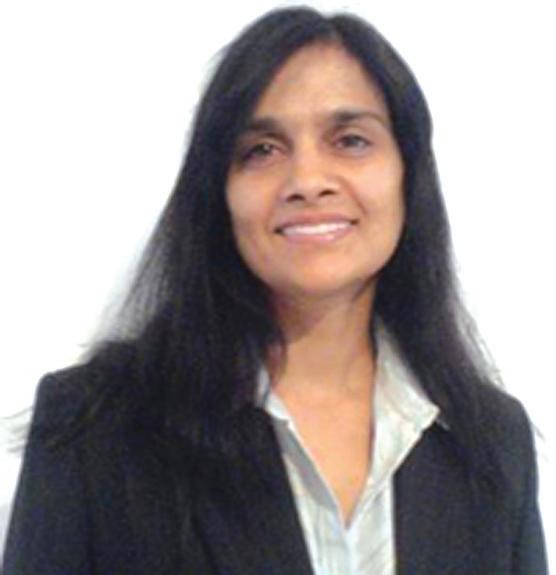
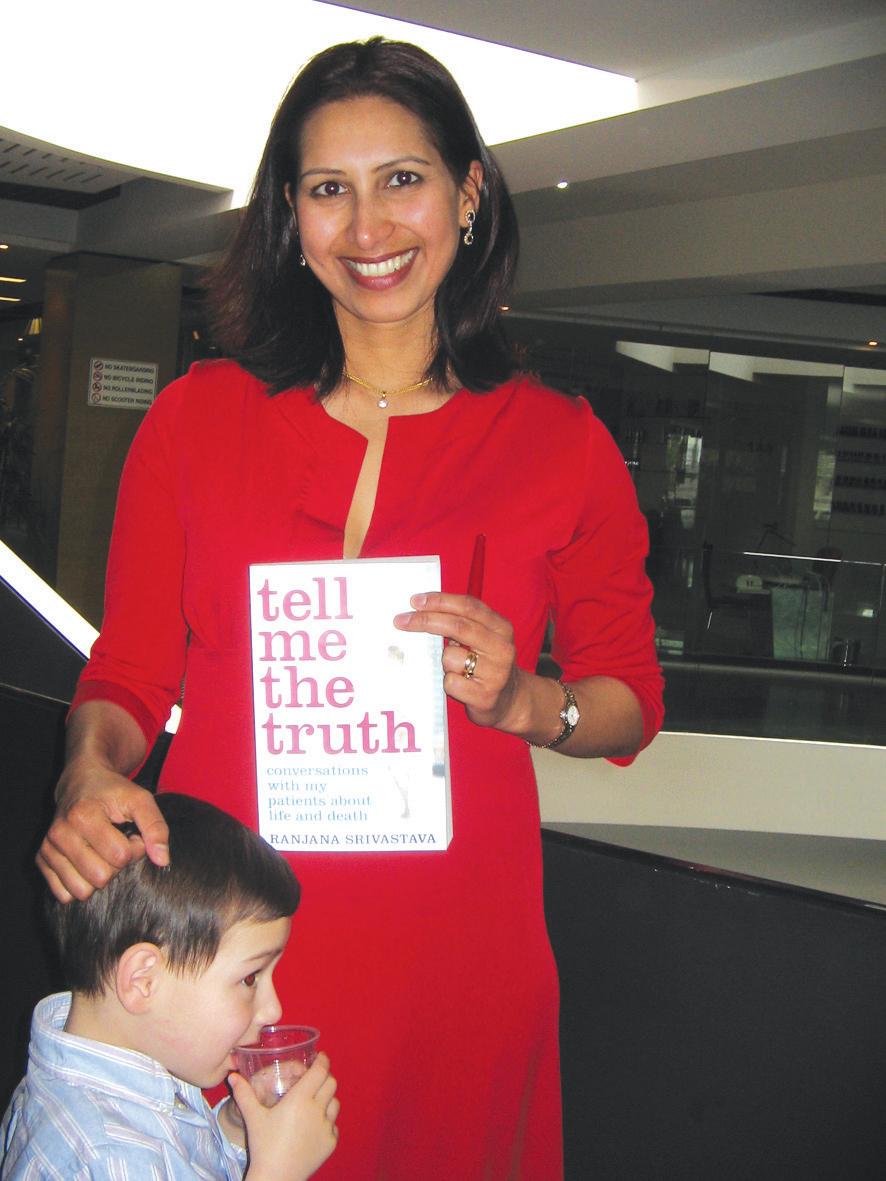 George Thakur
George Thakur
Pushpa Vaghela’s life has been spent on several continents: her childhood years in Africa and later in the UK as part of a large Gujarati family. In her new book Beyond Boundaries, she chronicles her struggles as a young girl saddled with the responsibility of looking after her large family after the sudden death of her mother; her marriage to Chandra, a kind and loving man, and his untimely death which placed her in the invidious position of having to bring up her two young children as a single mother. It is an inspiring story of how a meek and self-effacing woman took charge of her life, and made something of it despite heavy odds, by dint of hard work and courage. Along the way, she attended a series of life affirming Leadership Seminars that were conducted by the life-coach guru Tony Robbins (of NLP fame), which seem to have been a powerful impetus. She is effusive and lavish with praise when talking about Tony Robbins’ seminars and the power of NLP – indeed, so convinced was she about the power of those ideas that she became a coach and trainer herself, and helped many people change their lives for the better. Vaghela even set up her own life coaching outfit through Galaxy Coaching business on arriving in Australia in 2007. Through that and her charity works, she has tried to make a difference and give back to society as much as she could. So much so that in just over a year after making Australia home, Galaxy Coaching won the “Outstanding Business of the Year” award in 2009 and Vaghela was also recognized for her community and volunteer work. She continues to help scores of people on the Gold Coast and Brisbane through both her business and charitable work, and Vaghela story should be an inspiration to any Indian woman – indeed anyone at all – who wishes to make a difference to themselves and others.
Chitra Sudarshan
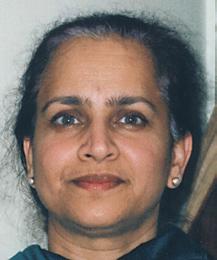
50 <> OCTOBER (1) 2010 INDIAN LINK
www.indianlink.com.au BOOKS
Perumal Murugan’s Seasons of the Palm is on the other end of the Tamil literary spectrum: it is a serious, thought provoking, confronting novel of a young Dalit farm hand and the brutality he experiences every day







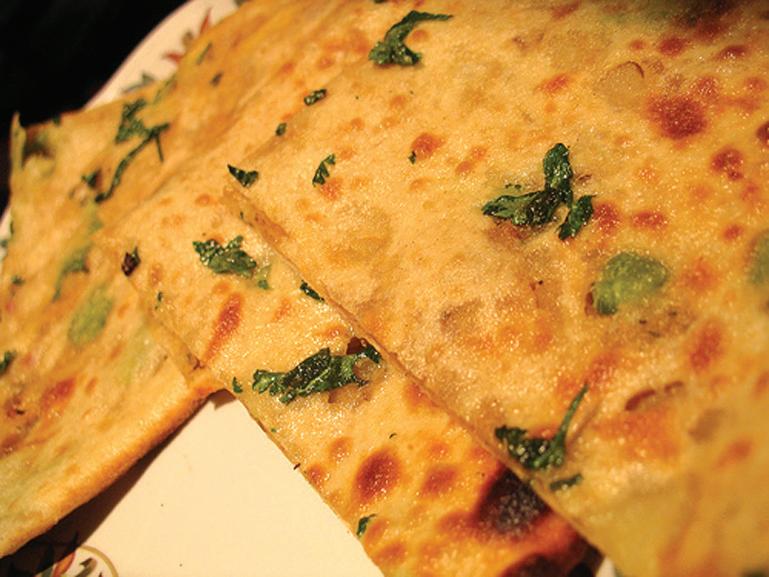

OCTOBER (1) 2010 <> 51 NATIONAL EDITION 5/32, York Street, Sydney, NSW 2000. Tel: (02) 9262 1661 Fax:(02) 9262 1217 Email: ram@ramworldtravel.com.au Web: www.ramworldtravel.com.au ONE STOP SHOP FOR: * Competitive international airfares to all parts of the world *Special airfares to Indian sub-continent *Package and tailor made tours to India and Nepal *Holiday packages to all parts of the world *Round the World Airfares *Hotel accommodation, car hire and guide services *Travel Insurance *DAILY DEPARTURE TOURS OF INDIA FROM: $975 P.P (ask for color brochure) “We always make our travel arrangements through Ram World Travel for its excellent service and best price!” FOR TRADE ENQUIRIES. G S PACIFIC MARKETING (AUST) PTY LTD Phone: 02 8860 9659. Fax: 02 9629 7978 Mobile :0404 491 870 Email : gs_pacific@bigpond.com Available in all leading stores in Sydney 139 STEPHEN STREET BLACKTOWN PHONE: 9671 7820 PARANTHA WEEKENDS Quality Quantity Service VEGETARIAN Poodina Lachha Palak Aloo Methi aloo Oriental style stir fry Mushroom and pea Stuffed vegetable Paneer Methi Mooli Gobi Mattar EXCLUSIVE FOR SOME Nashe Ka NON-VEGETARIAN PARATHAS Keema Chicken Egg Summer Special LASSI Salt * sweet * mango * passion fruit * mixed berry * pineapple * papaya and chefs special CHAT Fruit chat * sweet potato chat * potato chat * special potato chat * dhai bhala chat * pani puri chat and more KULFI Pistachio * Cardamom * Mango Mango Passion Fruit * Pineapple * Strawberry * Mixed berry
The search for happiness

Depression is common in modern day living, and definite steps are being taken to acknowledge and battle the illness
BY NOEL G DE SOUZA
The Black Dog Institute, which is dedicated to battling depression, celebrated ‘Exercise Your Mood Week’ last month. Its latest ambassador, Olympic Gold Medallist swimmer Libby Trickett, comes from a family which has members who suffer depression, and she herself has returned from retirement to battle low moods. Depression is a common problem in Australia, as it is in several developed countries. During the recently-concluded election campaign both sides pledged large amounts of money for battling such mental illnesses. Depression is the opposite of happiness and serenity.
Some important individuals in Australia have suffered depression such as Geoffrey Gallop, Premier of Western Australia from 2001 to 2006 who resigned from his position to combat that illness. John Brogden resigned as the Liberal opposition leader in NSW after an episode of depression. Jeff Kennett, a former Premier of Victoria, was the founding Chairman of Beyond Blue (supported by the federal and state governments) from 2000 to 2008, a body set up to combat depression and anxiety at the national level.
Perhaps a simple definition of depression would be, a lack of happiness or an absence of inner peace and tranquillity which results in low moods. The Vajrayana Institute (Sydney), in association with the World Happiness Forum, organises annual “Happiness and its Causes” conferences where a wide array of speakers are presented. Notable recent speakers have been the Lateral Thinking guru Edward de Bono, former NSW Premier Bob Carr, and the Dalai Lama.
In Japan when corporate executives get stressed and depressed, they often admit themselves into Zen Buddhist monasteries for rehabilitation through meditation and other practices; likewise in Thailand, executives are known to pass a phase in Buddhist temples living as bikkus or monks. In the United States, rehabilitation centres for the rich and famous are becoming the norm as centres for recovery.
S. N. Goenka, an Indian industrialist, promotes the Vipassana meditation technique worldwide (including in Australia) which has a similar objective. Goenka is a prolific writer and speaker and he addressed the Peace Summit at the United Nations Headquarters in 2009.
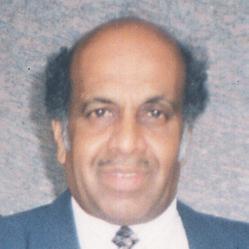
The great anguish felt by Arjuna before the battle at Kurukshetra is a classic case of depression and despondency. Arjuna showed
both physical and emotional symptoms when he had to prepare to fight against his close relatives. “The life within me seems to swim and faint; nothing do I foresee save woe and wail!” he cried. “What victory can bring delight, what rich spoils could profit; what rule recompense; what span of life itself seem sweet, bought with such blood?” he wailed.
The entire Bhagwad Gita is recited by Krishna to soothe Arjuna’s anguish through enlightenment and argument. Kindred Buddhist techniques also focus on enlightenment as a means to inner happiness. The aim of Hindu and Buddhist meditative techniques, like their Christian counterparts, is to develop a sense of bliss (ananda). Hindu and Buddhist ascetics often suffix their chosen names with ananda such as Sivananda. The onset of old age can, in many cases, be expected to bring in distress, disappointment and pessimism. However, it is well worth noting what the National Institute of Mental Health (USA) says: “Depression is not a normal part of aging, and studies show that most seniors feel satisfied with their lives, despite increased physical ailments. … (though) less inclined to experience or acknowledge feelings of sadness or grief.”
Beyond Blue found in a recent study in Australia that 10-15% of older people living in the community experience symptoms of depression and approximately 10% experience anxiety, but that depression increases in aged care facilities where it is 34%.
Truly, isolation from one’s own community is a sad feeling for the aged. Several Indian cultural associations which are either language or religion based provide venues for the interaction of the aged with their cultural peers. Other organisations like SEVA International and the Hornsby Indian Seniors Association bring together diverse Indians who have common interests. SEVA International has been participating in forums for issues like health and well-being.
Many a sub-continental in Australia is now reaching retirement or has already retired. Some retirees could feel a sense of disappointment on several fronts. Life in Australia may not have turned out the way they thought that it would. Even more so, their children might seem like strangers to them because of their very different ideas and lifestyles.
Older Indians in Australia may need help in dispelling loneliness and a sense of disappointment. Some parents could be ethnocentric in that they adhere to the customs and norms of their cultural group (religion, caste, sect and language) and may need help in bridging the gap with their Australian offspring who could be individualistic, whilst also being cosmopolitan.

INDIAN LINK
Several Indian cultural associations which are either language or religion based provide venues for the interaction of the aged with their cultural peers
www.indianlink.com.au OPINION

OCTOBER (1) 2010 <> 53 NATIONAL EDITION
Uni students strut their stuff
It’s a riot of colour yet again at this year’s Combined Universities’ Cultural Night


performance by Jazbath Youth Group, about a desi family living in Australia.
BY ASTHA SINGH
Music, dance, drama, fashion and entertainment – the traditional hallmarks of the Cultural Night, were all there in full strength this year as well.
The Combined Universities’ Cultural Night, the big social event for uni students in our community, was held in late September. With its theme of ‘Elegance through the ages’, our youngsters showed off beautifully yet again, that they are truly members of an ageless – and elegant – culture.
Cultural Night unifies the South Asian origin students of all five universities, bound together by loosely similar cultural ties. It reminds them about the rich heritage and cultural diversity they hail from and should take pride in. Each year, the students come decked to the hilt in traditional attire and mingle with friends. Each year, they leave the function feeling unified and proud of their cultural heritage.
The idea behind the grand event this year was to take the audience into the world of performing arts, loaded with innovative and beautiful presentation. The creative elements of dance, drama, fashion and music brought alive a magical world of elegance through the sands of time.
But behind it all, as usual, was the charitable element of the endeavour: this year, the nominated charity was EKAL Vidyalaya, an organisation that is doing some truly wonderful work with underprivileged kids in India by starting schools in remote areas. The function began with the student community’s commitment to the cause.
As the MCs of the night (Tejas Thete, Soumen Sen and I) announced the first act, rock and fusion band Kurbat, the fun began full blast. USyd Hindu society members Shina Dahiya and Rajshree Roy’s Bollywood medley dance to the sounds of Kurbat kicked off a night of colour in grand style.
Early in the night, it was time to Flaunt ya Flava in a dance contest. In order to bring in a vibe of competition, the show this year incorporated a new segment entitled “Flaunt your Flava” – a dance-off for couples. Contestants danced on stage, on tunes they were provided only a day before. Rubal and Sapna, Palak and Anish, Mike and Flavia battled for the honours, with Mike and Flavia emerging the final winners. A scintillating group dance by the well-known Nupur dance group was up next – no contests here!
The Bollywood theme continued with musical acts, and I myself got an opportunity to give the vocal chords a work-out (Genda phool and Kabhi neem neem sung with Arpita Singh).

The melodious musical ambiance soon turned into a burst of energy as the Bhangra Vibes made their thunderous entry - six male and six female bhangra performers danced the boisterous dance of the Punjab with such fervour and liveliness that the crowd cheered wildly in sheer joy.

And since the element of tradition had been brought in, perhaps this was the best time for the Traditional Fashion Show. Entitled Mohabbatein through the ages, we were transported from the realms of the majestic Jodha Akbar down to the sheer abondon of youthful love embraced by the warmth of newlyweds. And the costumes – rich in colour and texture, showed off elegance through the ages! A truly astounding presentation, courtesy Dhadkan in Style.
Talking of newly weds, can “Shaadi Barbadi” be far behind? That was the theme of a hilarious comedy
Three musical acts -Gana Aruneswaran’s remarkable guitar piece, the band Element Five, and Gulnav Hora’s Sketching on Silence - all won huge cheers and catcalls. Not only was this talent, it was also wonderful appreciation.
Indian Dance Centre came on with their beautiful costumes, and wowed us all with their equally beautiful performances - Sajna ve sajna, and of course how could we not have had Jai ho!
Azeem Shaan Shahenshah, a dance and drama act, depicted the medieval times, showcasing elements of statecraft and family values that are still relevant today.
And what better time to switch our minds to Timeless Elegance – the modern Fashion Show segment. Both fashion shows were choreographed by one of the organising committee members Karishma Yahya.
The incredible dancers of Vishwaas, then literally brought the house down – they were certainly the show stoppers of the night.
The group Beats of Passion used the AR Rahman sound to recognize some of the greatest artists of Bollywood, in a truly enchanting presentation. The tribute to Madhuri Dixit by Spirit was just as fabulous.
There’s no better way to finish than with a bit of bhangra again. The boys from the Ministry of Bhangra, Manbir Miglani and team, gave a rousing performance that resounded inside us way after the show came to an end.

Of course rigorous auditions took place earlier in the year to help us determine the main contents of the program. More than 150 performers strutted their stuff at the Dance Connect Studios in Parramatta, and a multitude of performances ranging from music to dance and drama were sorted through. The selection was done in a week’s time and 17 acts were chosen. Over 100 lucky performers got a chance to showcase their acts at the final event. As well, 20 models were selected for the two fashion show segments.
For the successful execution of the event, financial assistance was provided by sponsors Billu Indian Eatery, sweets and catering, Miss Bollywood Australia, Junoon showbiz (media marketing and PR), Parravilla Lounge, Red Frogs (Chaplaincy Network), Coffee wala coffees, and A1 printmasters.
Bhrasi (Fashion Clothing by Bhim Raj Singh) and Dhadkan in Style helped with the fashion segments. Humera’s Hair and Make-up Design were the official make-up artists and VIP Decorators were venue decoration sponsors.
The event was organised and presented by a committee of 10 members from the prominent universities in Sydney. Shaun Premnath (UNSW), Cheryl D Silva, Karishma Yahya (UTS), Tejas Thete, Anjeli Saldanha (Macq), Annushka Chand, Neelu Vingnani (UWS), Priyanka Verma, Soumen Sen and myself (U Syd) colluded six months ago on 31 March to start off the mammoth task. Of course we were aware we had a rich legacy to maintain - this event has been showcasing the talent and spirits of thousands of young people for the past 17 years, with a unique theme each year to boot! Being a not for profit event, initially it was very hard to bring the final picture into view, co-operation and finance being some of the crucial challenges for the committee members. But with hard work, persistent management and each others’ support - and with the noble cause of charity to Ekal Vidyalaya close to our hearts - we managed to mould this extremely dutiful mission into an extravagant panorama of south Asian culture and youth.
And the experience we gained – priceless!
54 <> OCTOBER (1) 2010 INDIAN LINK YOUTH



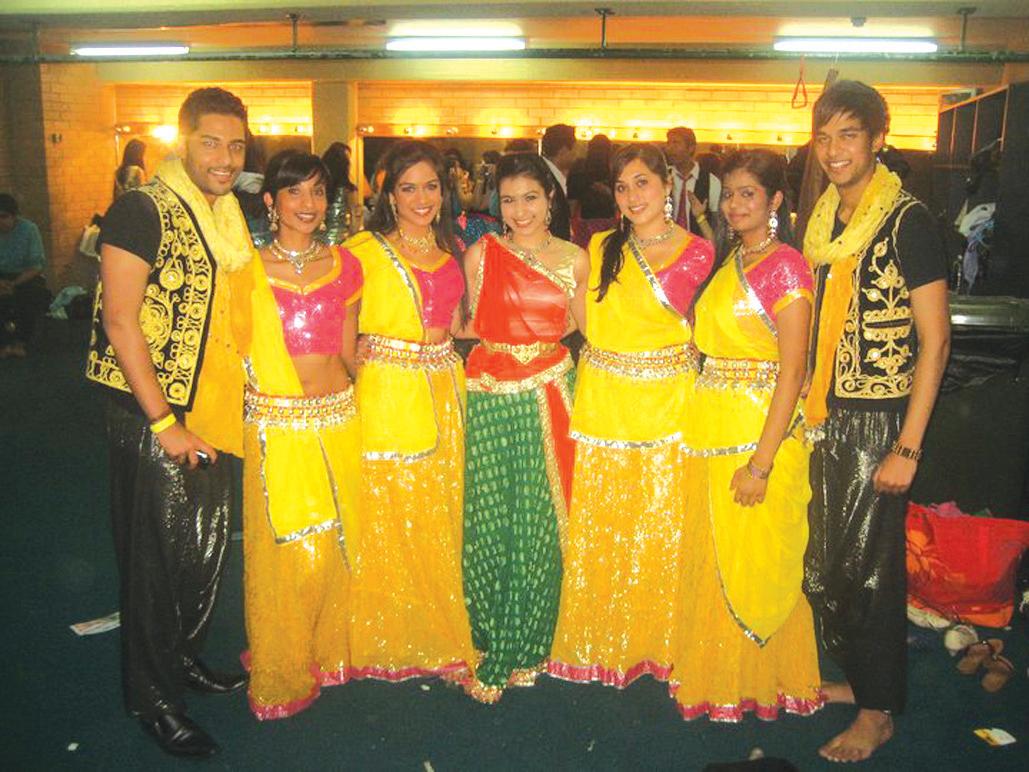
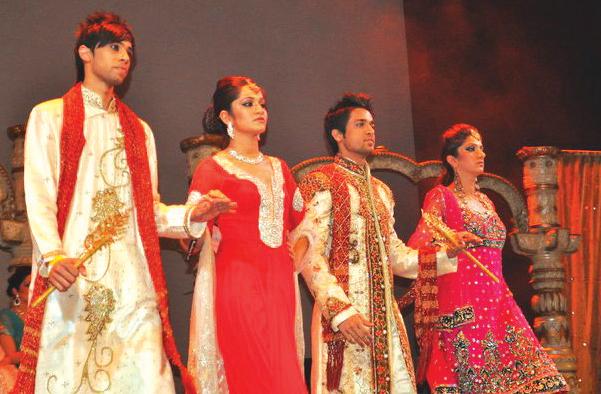
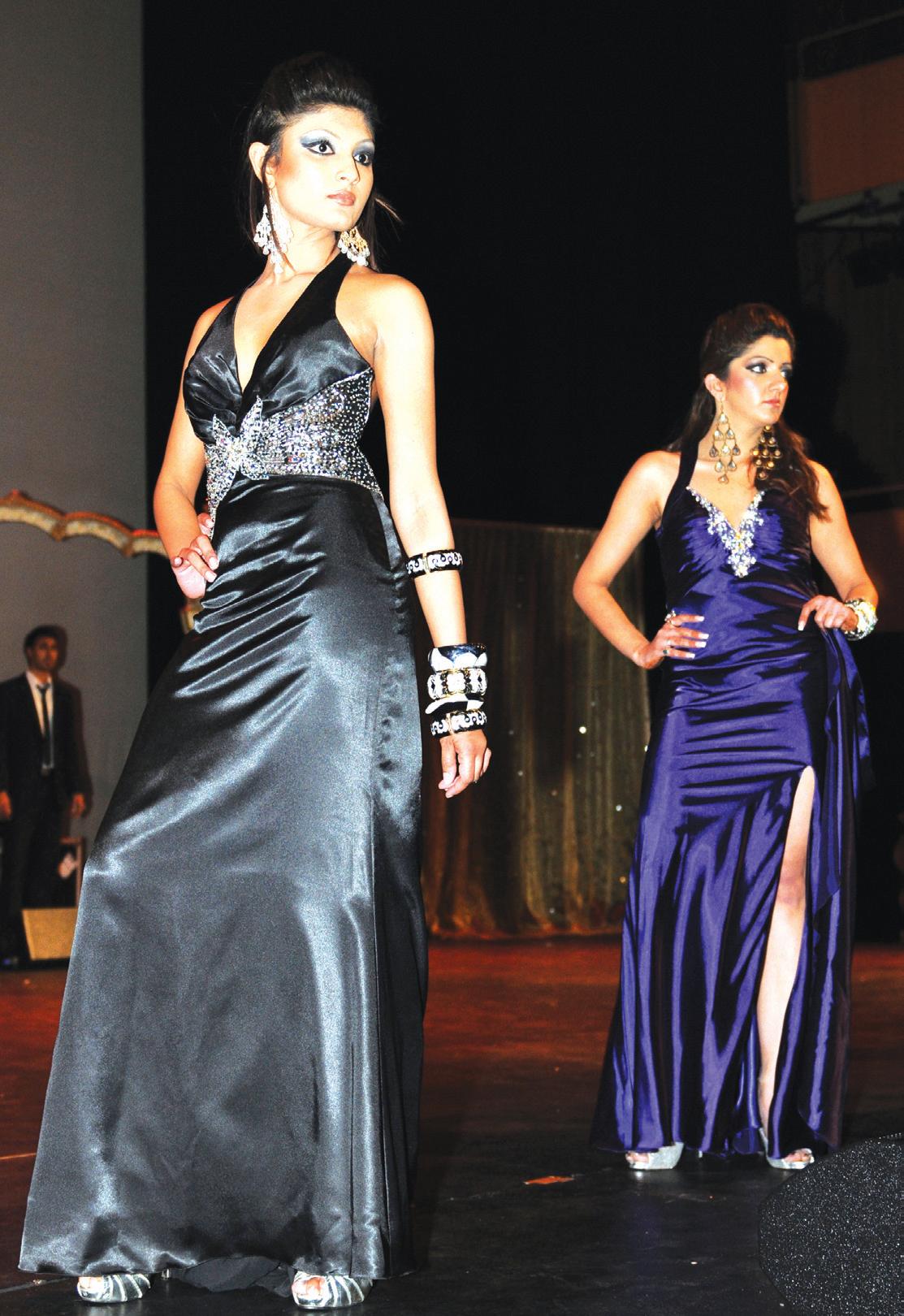





OCTOBER (1) 2010 <> 55 NATIONAL EDITION www.indianlink.com.au
Photo Credits Rebecca Jane Boner (Rebecca Photography) and Adnan Kabir (Adiz photography)
Teenage drinking The later, the better
An underage drinking campaign educates parents to support delaying of introduction of alcohol to their children.
Every parent wants the best future possible for their kids. Unfortunately teenage drinking is becoming a major problem in most of the developed nations including Australia. And the mere fact that teenagers drink, means that they are engaging in adolescent alcohol abuse and starting to experience some of the dangerous alcohol side effects that are correlated with underage drinking.
Statistics from a recent survey by the alcohol industry’s community service group Drinkwise Australia found that 70 percent of parents knew their children aged 14 to 16 drank more than a sip of alcohol, while 37 percent said they had supplied it to them. The average age at which teens start to drink alcohol in Australia is now around 15 and more than a quarter of 14-19 year olds put themselves at risk of alcohol-related harm at least once a month
The best possible way to build a positive and firm foundation with respect to kids and their exposure to alcohol is communication. In many communities, cultural barriers and differences discourage parents from holding frank discussions on the topic of alcohol. If at all, children are not encouraged to hold any public discussions on the topic either.
However, don’t forget that your child trusts you and relies on you for information and advice. Research shows that they believe that you should teach them about alcohol.
Most Australian parents do think that they should start a conversation with their kids on alcohol before they reach 12 years of age. But, talking to kids about alcohol and setting the boundaries and expectations to keep them safe can be a daunting task. In an effort to take on this challenge Drinkwise Australia is running a campaign called ‘Kids and Alcohol Don’t Mix’ to make parents aware of the facts and to encourage them to talk to their kids about drinking, even before they become teenagers, and help them to delay their introduction to alcohol.
“Today’s teenagers are drinking at a younger age and at risky levels,” says DrinkWise CEO Cath Peachey.

“Even if they are not allowed to drink alcohol at home, pressure from friends to try alcohol is very strong. Parents may want to talk to their kids about alcohol but are unsure about the best way, or when to go about it. That’s where DrinkWise can help – we have prepared some information to help parents discuss the issue with their children”.
From when a child turns 12 years old until they reach about 24, their brain is forming all the parts needed for learning, memory, planning, emotional stability and thinking. Alcohol can disrupt this. Ms Peachey says teenagers who drink alcohol risk their brains not reaching full capacity and this can lead to problems such as learning difficulties, memory impairment and emotional problems like depression and anxiety.
“Teenage drinking is not just bad for the brain, it’s dangerous too,” Peachey adds. “Alcohol inhibits a teenager’s ability to consider the consequences of their actions, leading them to take stupid risks like getting in fights, drink driving and unwanted sex”.
“Some parents may believe that
introducing children to small amounts of alcohol is a good idea but new research is telling us just how important it is for teenagers to delay the age at which they first drink alcohol,” Ms Peachey says.
“As a parent, the best thing you can do to help your teen become a happy, healthy adult is to encourage them to delay drinking alcohol for as long as possible,” she adds.
To provide practical advice on how to be a positive influence and delay your child’s introduction to alcohol, DrinkWise has developed the following Parent’s 5-Point Plan.
TIP 1 Discuss the issues
Young people are likely to have a favourable perception of the social benefits of alcohol - believing it will help them fit in. They need to know that they can fit in without drinking alcohol. Hence it is very important to keep the lines of communication open with your kids and discuss the fact that not everyone drinks. Highlight that not drinking is the norm for young people. Two-thirds of 12-15 year olds have never had a drink of alcohol. Let older teens know that they are not alone, with one in five 16-17 year olds sharing in their decision to not drink.
TIP 2 Educate by example
Be a positive role model by using alcohol responsibly. KIDS ABSORB YOUR DRINKING, so watch your own alcohol consumption and remember that there is
the option of not drinking alcohol at all. If alcohol does play a role in your family life, talk to your child about how you use alcohol responsibly and the rules and boundaries you follow. Parents who drink alcohol and have more lenient attitudes towards alcohol are more likely to have adolescents who consume alcohol at risky and high risk levels.
Try not to make every family gathering or celebration focus around alcohol. Make a point of having alcohol-free events to demonstrate to your children that you can enjoy yourself without alcohol.
TIP 3 Listen and engage
Be aware of and show interest in your child’s upcoming activities and discuss these (this is also an opportunity to set clear expectations). Get to know their friends, and their friends’ parents. Knowing your kids’ friends’ parents gives you the advantage of knowing where your child is and enables you to discuss and develop a common position on things like drinking alcohol so that the kids are hearing one strong and united voice. If they don’t agree with your position at least they know your views and will be better placed to respect them. Be comfortable in the knowledge that you are in the majoritychoosing to ‘delay your child’s introduction to alcohol’. Most Australians believe that it is unacceptable for ‘under 18s’ to be allowed to drink at parties; and most Australian parents believe it is unacceptable for children under 18 to drink.
TIPS FOR DELAYING YOUR TEEN’S DRINKING
* Set firm family guidelines so that your teen is clear about your expectations and understands your thinking.
* Discuss the fact that not every teenager is drinking. Most teenagers under 18 either don’t drink or don’t drink to excess. Drinking too much, too young is not normal.
* Talk to your pre-teen or teen about how alcohol can impair the developing brain.
* Encourage them to get involved in other activities that do not involve drinking such as sport and creative pursuits.
* Talk with other parents. Share the knowledge you now have about the new brain science and try to come up with a common approach to your teenagers and drinking.
* Consider your own drinking behaviour. Teenagers are heavily influenced by the actions of their parents. If you drink heavily then expect your teenager to drink at risky levels, too.
TIP 4 A good relationship
Work on developing and maintaining a good parent-child relationship based on clear and open communication. Relationships characterised by emotional warmth and support, trust, involvement and attachment are associated with lower levels of adolescent alcohol misuse. Kids who feel their parents are caring, concerned and supportive start alcohol use later and drink less. Be there to support them as hormonal changes, school commitments and peer influence build.
TIP 5 Your expectations
Delaying your child’s first drink requires making your expectations regarding alcohol very clear. Not just to your child, but to the other adult influencers in their lives. Every family is different and boundaries and expectations need to be consistent with what you believe. Involve your child in the development of the rules; your child needs to understand why the rules exist in the first place. They may not like the rules you set but it is vital they can see what your concerns are and how you hope to address them. Think about who bought or gave you your first drink/s... have you had a chat with the equivalent person in your child’s life?
Advice for parents on the best ways to talk to their children about alcohol is available at www.drinkwise. org.au
56 <> OCTOBER (1) 2010 INDIAN LINK www.indianlink.com.au YOUTH
DrinkWise CEO Cath Peachey

OCTOBER (1) 2010 <> 57 NATIONAL EDITION
Facts on fasting
Fasting is a healthy practice, but take care not to celebrate its end through overindulgent feasting
BY GEETA KHURANA
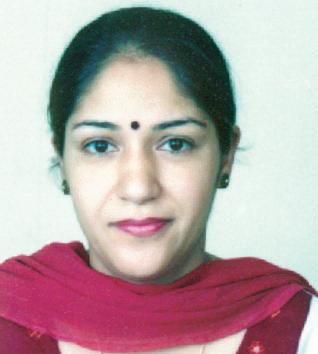
With Ramadan and Eid just over, and Navratras and Karva Chauth just around the corner, the fasting season is here. Fasting as a ritual goes back to many thousands of years, as a healing and as a religious or spiritual process. Fasting basically means voluntary abstinence from food. Many religions including Christianity, Judaism and the Eastern religions have encouraged fasting for a variety of reasons, such as penitence, preparation for ceremony, purification, mourning, sacrifice and union with God, and the enhancement of knowledge and powers.
Fasting in Hinduism is thought to be important as it nourishes both the physical and spiritual needs of the person. However, fasting is not done only for spiritual reasons, but also for self discipline of a person. In Hindu culture, fasting is undertaken on certain days of the month such as on Poornima (full moon) and Ekadashi (eleventh day after full moon), or can be on certain days of the week depending on the God and the Goddess you wish to worship. Fasting on festivals such as Navratras, Janamashthmi and Karva Chauth is also quite common. Fasting can also mean abstaining from imbibing certain things, either for religious reasons or for the sake of good health. For instance, some people refrain from eating salt on particular days. Another common kind of fast is to forego cereals, and eat only fruit (phalahar, or fruit diet). In India, fasting has always had deep spiritual and religious overtones. Almost every festival involves some sort of fasting, while spiritual experts of all traditions abide by the code of moderate or no eating. It is a process of purification of the physical, emotional and mental, and is accompanied by pursuing good thoughts, good words, and good deeds.
Health benefits of fasting
* Fasting is the relaxation of body, mind and soul and helps to develop a positive attitude.
* Fasting is a great opportunity to focus on bringing back a balanced and healthy lifestyle in people’s lives, who do not normally care about their eating habits.
* Fasting requires giving the stomach a rest, and by doing so one will be able to break down and expel collected toxins from the body.
* While fasting, the release of toxins from the colon, kidneys, bladder, lungs, sinuses, and skin clears out complications that may have arisen from a bad diet and unhealthy lifestyle.
* Switching over to a vegetarian diet and also abstinence from alcohol overall has a healthy impact on our health.
* Including more fruits and vegetables helps the intake of more antioxidants which are vital for our wellbeing.
Tips for healthy fasting
Fasting can help improve your health, but it is very important to follow the correct diet otherwise your condition can worsen. What you consume during fasting hours or how you break your fast is a very important and deciding factor. What worsens your
abstained from eating, but do not over indulge on other foods. For example, while fasting for Navratras when you abstain from cereals such as rice or wheat flour and lentils, do not overindulge on those potatoes or sago tikkis or chestnut flour (Singhara ka atta) and kutta (buckwheat) ke atta ke pakoras!
* Try to cook something less oily with these flours, such as a chila or a roti, instead of puri or parantha
* Always break the fast gently and don’t eat heavy and oily food. Instead, choose lightly steamed vegetables with little spices.
* Cook in a non-stick pan to avoid using lots of oil and ghee.
* Eat more fat-reduced dairy foods such as yoghurt, buttermilk, milk and cheese, or paneer.
* Ketosis is subdued by drinking plenty of fruit juices, which provide simple carbohydrates for energy and cellular functioning.
* Have small and frequent meals.
* Avoid staying hungry for long hours to prevent acidity and heartburn. Try to have some healthy snacks. Milk, yoghurt and lemon juice are good for heart burn and acidity.
* Eat plenty of vegetables such as cucumbers, carrots, pumpkin, beet, cabbage, broccoli and celery.
in your daily diet but in moderation, as these are high in calories.
* Potatoes and sweet potatoes have high carbohydrate content, but also contain good quality proteins and vitamins B and C. These are destroyed on deep-frying and add up loads of calories. Therefore, have boiled aloo chaat instead of fries and tikkis * Include avocado, tofu to your meals regularly.
Fasting while taking certain medications can be dangerous, and it’s certainly not advisable to go off prescribed medications without first talking to your physician. People with medical conditions should seek a doctor’s advice as meal timings and medications may need to be adjusted, especially for diabetics. Pregnant women, infants and anaemics who already are nutritionally deficient should avoid fasting. Diabetics should take car by having snacks every few hours to prevent their blood sugars falling very low.
Enjoy the festival season with healthy fasting, and try and avoid too much feasting!

58 <> OCTOBER (1) 2010 INDIAN LINK
Almost every festival involves some sort of fasting, while spiritual experts of all traditions abide by the code of moderate or no eating
Ketosis is subdued by drinking plenty of fruit juices, which provide simple carbohydrates for energy and cellular functioning
Fasting in Hinduism is thought to be important as it nourishes both the physical and spiritual needs of the person
www.indianlink.com.au HEALTH
Interest Rates: No increase in October, what about coming months?
By Navjeet Singh Matta, Full Accredited Member of Mortgage and Finance Association of Australia also Director, Gain Home Loans
Hello Friends,
It’s the fifth month in a row when the Reserve Bank has not raised the official cash rate which is currently sitting at 4.50%. The Reserve Bank has surprised industry pundits by choosing to leave the official cash rate on hold at 4.5 per cent. Despite widespread speculation that the RBA would tighten monetary policy in a bid to stop inflationary pressure from seeping into the wider economy, a spate of less than impressive housing data forced the board to leave rates unchanged. It’s a temporary relief for mortgage owners as Reserve Bank governor and lot of other financial experts have time and again warned that the rates will move up when they do move, it’s just a matter of “when”. The Australian economy has been performing well for the last couple of quarters; the un-employment rate has been low.
These factors indicate that the rates will eventually go up.
There is another side of this whole picture. Interestingly, inflation has been lower than expected lately (and I strongly think, that was one of the reasons why the RBA decided not to increase the rates). There are two more months to go in this year when Reserve Bank will sit again and decide whether to increase the rates or not. The Australian retailers association has been raising their concern that if the rates do go up, people will spend less this Christmas season and thus economy will take an about-turn. We will wait and see what effect will that have on the RBA. At the printing of this article, at least 3 major banks have decided to follow the
RBA; that is to hold rates as current which is also a big relief as there was a talk that the banks might increase the rates outside the RBA decision.
Interest rate rise and effect on Property Market

Historically speaking, whenever there are a few interest rate rises in a row, the property market has shown downward trend. There has been six interest rate rises in the last 10 months and if more rate rises happen in the next few months, property market might show some softness. I don’t see a very major effect because there is still shortage of quality properties all around capital-cities in Australia. The other factor that has slowed down the property purchases is the lenders’ tightening credit policies and also disappearance of small lenders. Major lenders have been very cautious with lending money, especially to First Home buyers. They are asking for genuine savings (for loans above 90%) and also want to see the applicants in a strong employment. But let me tell you, there are still lenders out there who will still lend at 95% and also to self-employed people who do not have financials, please call me to discuss your details. For investors, there has been never a better time to buy property. As you all know, an investment property will not only help you create wealth but also help you with tax-deductions. We can get put you in touch with right accountants who can advice you as per your situation. If you need more
information please do not hesitate to contact me on 0412 452 429.
Free RP Data property report that can save you thousands ! Hundreds of people have benefitted by obtaining the free RP Data report, please log on to our web-site www. gainhomeloans.com.au to get yours. This report can help you in many ways. Let’s say you are interested in a property and the asking price is $350,000. You would like to know how much it’s really worth. The next thing you would like to know is how much offer you should place on that property, you don’t want to offer too much and also on the other hand you don’t want to offer below that you’d lose that property to another prospective buyer. This report will help you negotiate when you are buying (or selling) your property. It’s a 20 page report in a pdf format which outlines recent sales figures, median sale prices, land-size and lots of other things. If you get this report from RP Data, they will charge you $89, from us it’s absolutely free! This is another value-added service which Gain Home Loans provides. Also if you are looking for a better deal on your home loan, call us 7 days a week o 02 9676 3417, we don’t charge any fee as we get paid by the lender. Gain Home loans have helped hundreds of families achieve their financial goal of creating wealth through property, call us today for free advice. Keep reading this monthly article as you have done in the past and don’t forget to email your comments (good or bad) to nsmatta@gainhomeloans.com.au I’ll be in touch again, until then Take Care !
Disclaimer: Any advice given in this article does not take into account the personal needs and objectives or financial situation of the reader. The reader should consider the appropriateness of this and seek professional advice before making a decision whether to acquire or continue the products and services mentioned.

OCTOBER (1) 2010 <> 59 NATIONAL EDITION
Virtues of vinegar
The green revolution is well and truly upon us and with everyone jumping on the bandwagon to reduce their carbon footprints, it’s become the biggest ‘fad’ of our times. There’s a frenzied obsession to revert back to nature for practically everything from organic food and electric cars to environmentally-friendly cleaning and beauty products. In my search to find something ‘green’ to replace a strong household cleaner which had recently started giving me nausea, I stumbled upon vinegar as a substitute. And as I explored further, I was amazed at the endless virtues of this miraculous multi-purpose substance which is nontoxic, environmentally-friendly and inexpensive. What’s more, a single bottle can tackle cleaning in the kitchen, laundry and bathroom, serve as an insect repellent, kill weeds, solve minor health issues, is totally edible and much more. Read on and prepare to be converted, if you aren’t already.
Vinegar for the Bathroom
l Vinegar is an effective mould killer. Spray on bathroom walls and shower curtains to prevent mould and mildew. Once a month, wash your shower curtain in the machine with detergent and a cup of vinegar. The curtain will come out looking shinier and new.
l To remove soap scum or build up from faucets, mix one part salt to four parts vinegar and clean the faucets with this mixture.
l To rid the toilet bowl of stains, spray with vinegar, leave for a while and then give a good scrub.
l Chemical build up and corrosion on showerheads and other fixtures can be removed by applying vinegar on them overnight.
Vinegar for the Kitchen
l The acetic acid in vinegar is an effective disinfectant, deodorizer and cleaner, allowing it to be used as a multipurpose
product in the kitchen on counter tops, stoves and fridges etc. It can be used undiluted or as a diluted solution of one part vinegar and one part water.
l Wooden cutting boards when wiped with vinegar remain smell, germ and mould free.
l To unblock drains, pour half a cup of baking soda, followed by half a cup of vinegar. Rinse with warm water once the drain stops fizzing.
l To get rid of unpleasant odours from the sink or garbage bins wipe with vinegar.
l To remove the smell of garlic or other ingredients from jars, rinse with a mixture of half vinegar, half water.
l To remove coffee, chocolate, wine, ketchup or drink stains from china, gently rub the area with vinegar and salt, than wash off.
bleeding in the wash try soaking them in vinegar before the first wash.
l Add half a cup of vinegar to every wash to keep clothes looking brighter and feeling softer.
I was amazed at the endless virtues of this miraculous multi-purpose substance which is non-toxic, environmentallyfriendly and inexpensive
l For a sparkling, odour free microwave without chemicals, mix half a cup of vinegar and half cup water in a microwave safe bowl and cook on high till it starts to boil. Remove the bowl and wipe the oven clean.
l Run vinegar through the dishwasher once a month to prevent the built up of hard deposits.
Vinegar for the Laundry
l To prevent new, dark coloured clothes from
l Vinegar can get rid of the smell and slimy feel of bleach from hands as it is acidic and bleach is alkaline, so they cancel each other returning the pH balance to the skin.
Vinegar for the home
l Treat your windows and mirrors or even spectacles to a spotless, streak free shine with a solution of half cup vinegar and two cups water. Simply spray and wipe.

l Floors that can’t be waxed resume their shine when cleaned with 1 cup vinegar per gallon of water.
l Use a mixture of half cup olive oil, half cup vinegar and two cups warm water to clean wood panelling. Apply with a soft cloth and buff.
l To clean spills on carpets, soak up as much as possible using a sponge then spray with a mixture of half water/half vinegar and let stand for a couple of minutes before blotting off.
l For stubborn stains try a mixture of 1 teaspoon vinegar, 1 teaspoon dish washing liquid and 1 cup warm water. Spray and let stand before blotting. Dry off with a hairdryer set on low.
l To bring the sparkle back to silver, copper, pewter or brass dissolve a teaspoon of salt in one cup of vinegar and add a little flour to make a paste. Apply on the metal and let it stand for fifteen minutes. Wipe off, rinse with warm water and polish with a soft cloth.
l Remove stickers from furniture or cars easily by moistening them with vinegar and letting it sit for ten minutes. The sticker will peel off and the sticky residue can also be wiped off with vinegar.
l Patent leather shoes and bags can be polished using vinegar. Place a little on a clean cloth and rub over the item, then wipe dry.
l Get rid of pesky ants by spraying vinegar along doorways, countertops or wherever required. A mixture of vinegar and salt rubbed on the underside of an iron gets rid of scorch marks.
Vinegar for you
l Vinegar is a multivitamin and is known to be effective in curing colds and flu.

l To relieve the symptoms of a sore throat, try gargling with apple cider vinegar mixed with water. l Apple cider vinegar applied on sunburns relieves pain and prevents blistering and peeling.
l Vinegar removes shampoo and chemical residue from hair, adds softness and shine, gets rid of dandruff and a dry, itchy scalp. Use one part water to one part vinegar for a final rinse.
l Minor cuts and abrasions can be successfully treated with vinegar.
l Vinegar is effective in the treatment of fungal and yeast infections like tinea, thrush, candida etc. Douche the affected area with a solution of 3 tablespoon of apple cider vinegar to a quart of water, or add a cup to your bath water.
l Kill toenail fungus with a daily application of vinegar to the toenail. This not only kills and inhibits the growth of bacteria, but also promotes healthy nail growth.
So there you have it! And this is just scratching the surface. Vinegar has many more uses, too numerous to list in this article but if I’ve managed to spark your interest, I’m sure you’d find them all.
60 <> OCTOBER (1) 2010 INDIAN LINK
It’s a simple kitchen product, but with an amazing array of uses, from cooking to cleaning to healthcare, notes FARZANA SHAKIR
The acetic acid in vinegar is an effective disinfectant, deodorizer, and cleaner allowing it to be used as a multipurpose product in the kitchen on counter tops, stoves and fridges…
HOUSEANDHOME
www.indianlink.com.au







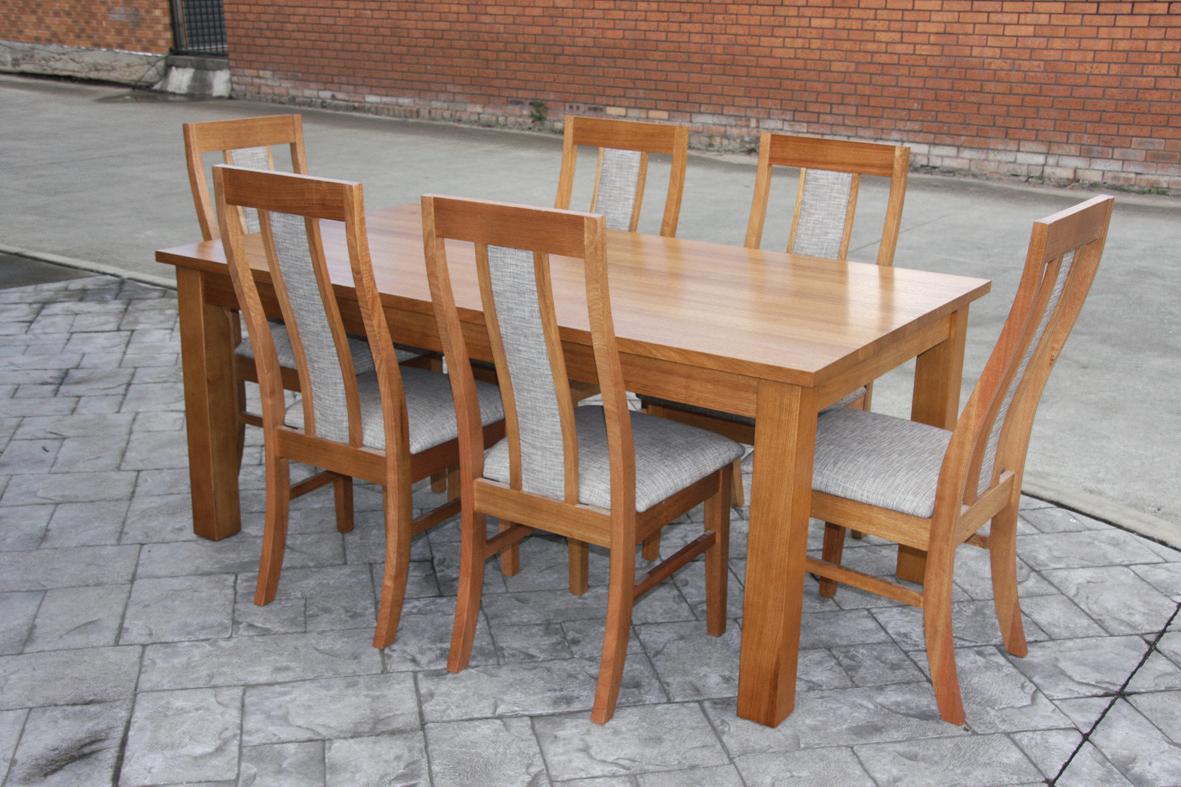




OCTOBER (1) 2010 <> 61 NATIONAL EDITION PACIFIC FURNITURE & BEDDING Tokyo Suite $799 DARWIN Leather Save Over $1000! CALVIN ITALIAN Leather Suite 100% $1999 TAZA Bedroom Suite $1195 Hardwood Dining Suites Upto & $1000 Off! BALMAIN 41/2 Seater Chaise $599 HUGO $2795 COOGEE 100% Leather $2790 SEASPRAY Queen Bed $499 Includes Queen Bed, Dressing Table & 2 Bedsides 3 Seater Twin Recliner + 2 Recliners Includes Queen Bed, Tallboy & 2 Bedsides Includes Queen Bed, Tallboy & 2 Bedsides $1900 3 seater twin recliner + 2 recliners GRAND OPENING SALE NOW ON 312-320 CANTERBURY RD, CANTERBURY, PH 9789 56 GUARANTEED LOWEST PRICES ANYWHERE!! Mattresses + Ensembles Up to 50% Off Lyon 7piece dining MIA Queen bed $199 BRASILIA Bedroom Suite $1190
Being the Brand
The India of today is rapidly becoming tag- obsessed, and seems to be losing perspective of the bigger picture
BY PINKY BHATIA
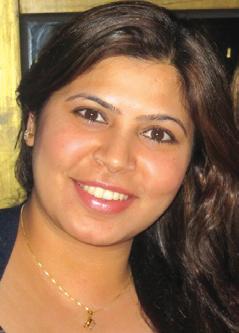
Visit any shopping mall or airport lounge in an Indian metro and you will see a new breed of young and upwardly mobile Indians wearing Armani or Prada suits, flashing Rolex or Tag Heuer watches, proudly flaunting their latest Jimmy Choo shoes. As they hurriedly walk past you, leaving behind an intoxicating whiff of the latest Chanel perfume while their Gucci or Louis Vuitton bags dangle leisurely over their shoulders, the sight may captivate you for a while. The connoisseurs of luxury have arrived in this part of the world with a bang, and the likes of Gucci, Venini, Louis Vuitton, Prada and Missoni are making a beeline for hawking their oh-souber luxury products to the highflying, well-heeled, and globally evolved nouveau-rich Indians of the postreform era.

A retail revolution is sweeping through India, making it among the fastest-growing industries in the country. With the growth of malls, multiplexes and hypermarkets, the consumer is being exposed to new kinds of services which are quietly and surely redefining expectations from shopping. Whatever your need, it will be met by express check-out counters, service and installation by appointment, valet parking and not to mention, “home delivery” by McDonalds. With retail ambiences getting upgraded, clearly the poky neighborhood kirana stores are becoming a part of the past for the hypermarket consumer, and “she” now finds it difficult to shop “regularly” at the dusty grocery shop. This has driven a push by the consumer’s overall need for greater aesthetics in all areas from clothes to furniture to jewelry!
Interestingly, in the late ‘80s when Titan launched its first showrooms, it had to battle the consumer perception that “swank” means “expensive”. Today with the growth of malls and hypermarkets, that has changed and consumers no longer think “expensive looking” means “expensive”. To actually establish premium imagery through shopping environment is much more difficult, as the benchmark has changed!
Whatever your need, it will be met by express check-out counters, service and installation by appointment, valet parking and not to mention, “home delivery” by McDonalds
The question to ask though: “Is India witnessing an unprecedented consumption boom, is it a mindset change altogether, or is it merely a race to be seen ‘with it’”? This thought has been nagging me for a long time, as I keep hearing stories about friends being disappointed by their families’ attitudes and comments, parents being shocked by statements made by their children and worst still, no one noticing when things are clearly over the top and “not right” as they are so bombarded by the voice of the media and political pollution. Till date, I can’t figure out the motivations behind some of them. A good friend of mine went to see her family for the first time since her wedding, accompanied by her American husband. She was in for a shock… her mum advised her that she should lose some weight! Well, this would have been reasonable if she had any to lose. To me she is a very healthy (touch wood) size 10 or maybe 8, and maintains a very healthy and active lifestyle. All this because of magazines articles, TV ads, press features and most importantly, our Bollywood movies promoting the “size zero” phenomenon. Obviously no one has spoken to “Kareena Kapoor” about the responsibility of being a good role model that comes with fame!
Another incident is when a family member retracted their compliment about my friend’s pair of jeans and its good fit because she found out it wasn’t the Sass and Bide she was wearing the last time they met, but a
meagre pair from Target! Oh my goodness, the look she got was “is she good enough to be seen with?”



My nephew said this to me two years ago and I still can’t get it out of my head, “Maasi, I don’t like this because it has no name or sign on it”. Well, this was a 4-year-old’s way of saying ‘I don’t like this because it is not branded!’
Now while I love my nephew to death and have no issues with people’s preferences for brands, I do believe that this must be rationalized by the correct reasons. I pay for a brand because I trust I am getting a good quality product versus having to pay for a brand because I cannot be seen without one. Another incident was when a sister’s friend commented,


“I do all my shopping from the Godrej Nature’s Basket (a specialty store chain in Mumbai); they’ve got all kinds of cold cut meats, different varieties of bread, Arborio rice (which I believe is quite difficult to get and quite expensive in India) etc.,” and I still haven’t figured out in what context that statement was made! It was definitely not in response to what I said, or a natural course of our conversation! Clearly there was a reason of wanting to share that important piece of information with me, but I just wasn’t with it, you see.
World cuisine is another way of displaying how many visas you have had stamped on your passport. The number of specialized restaurants in 5-star hotels is growing by the day and people are willing to pay up to Rs. 6000 for a bottle of wine. Better still is the need to
you can make sushi at home when entertaining your guests – after all, it is a matter of pride. And I need to have “readymade” yoghurt and not the homemade one, ‘coz I want people to witness my “lifestyle”!
OK – so where does this stop, as it has to. We are the generation who have seen the deregulation of Indian markets and experienced the burst of brands and luxury goods in the Indian plethora, parallel to the arrival of the “call centre and outsourced services era”. It is us who have to stay grounded and not let aesthetics and superficiality of brands rub into us as “human beings”. In an age where Facebook, Blackberry and iPads are the norm, it is all the more important to maintain the human connection! This can only happen if we view brand choices, aesthetics and dress size as different facets of the one person, and not the facets as the person themselves. If we fail in our responsibility to do so, we will give birth to what I call “brand babies” who will then have to soul search for the very things that their parents stole from them – but not intentionally! Let’s not forget that brands need us and we make brands, not the reverse. We are privileged in having the backing of a rich culture and heritage with us, and a present of all luxury and international brand exposure available to us – let’s combine the two and give our children the best education and arm them with the knowledge of both. This will ensure that they understand the difference between what’s important and what’s not, and will concentrate on the permanent rather than the transient!
62 <> OCTOBER (1) 2010 INDIAN LINK
www.indianlink.com.au LIFESTYLE
Let’s not forget that brands need us and we make brands, not the reverse

OCTOBER (1) 2010 <> 63 NATIONAL EDITION


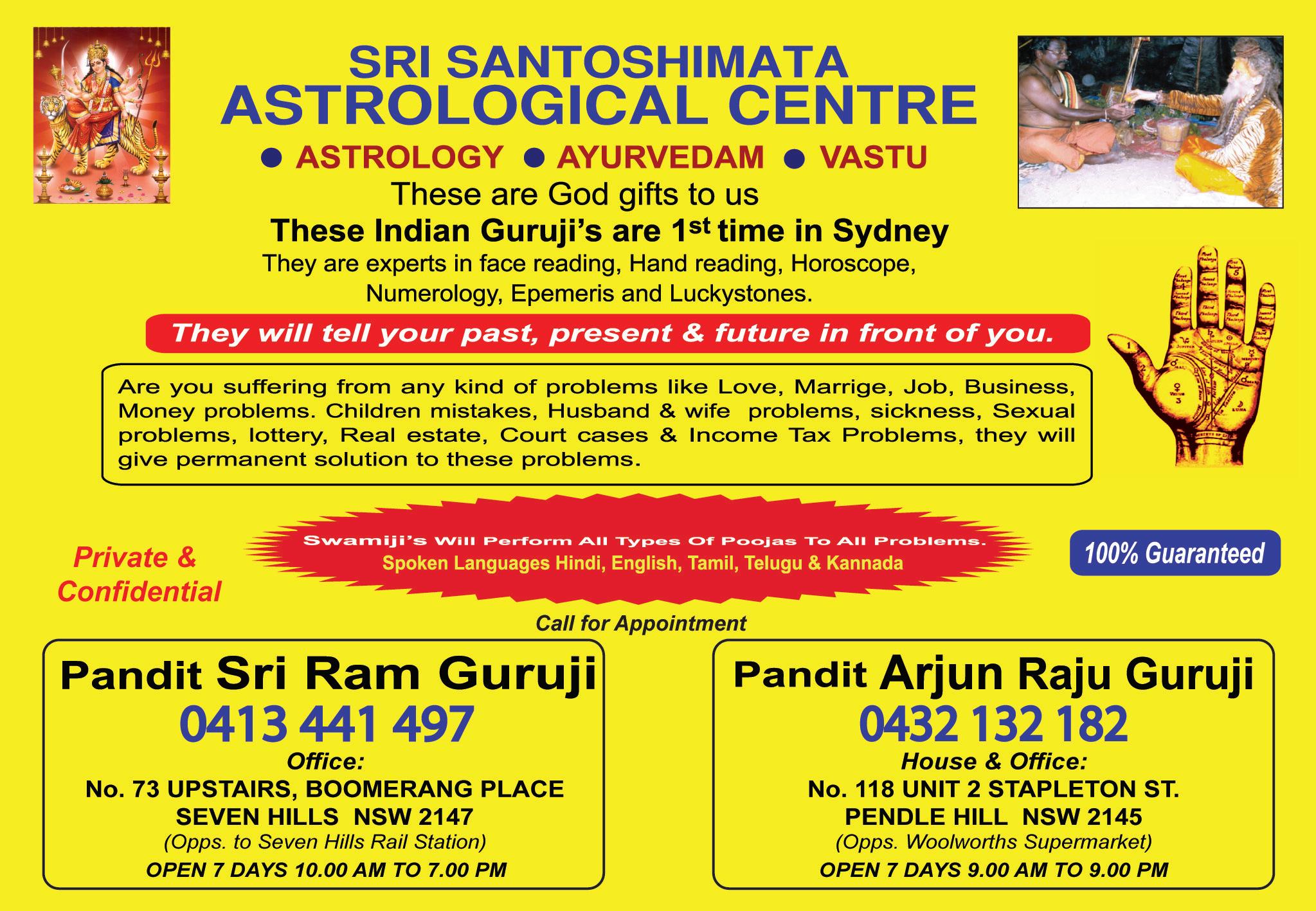
64 <> OCTOBER (1) 2010 INDIAN LINK
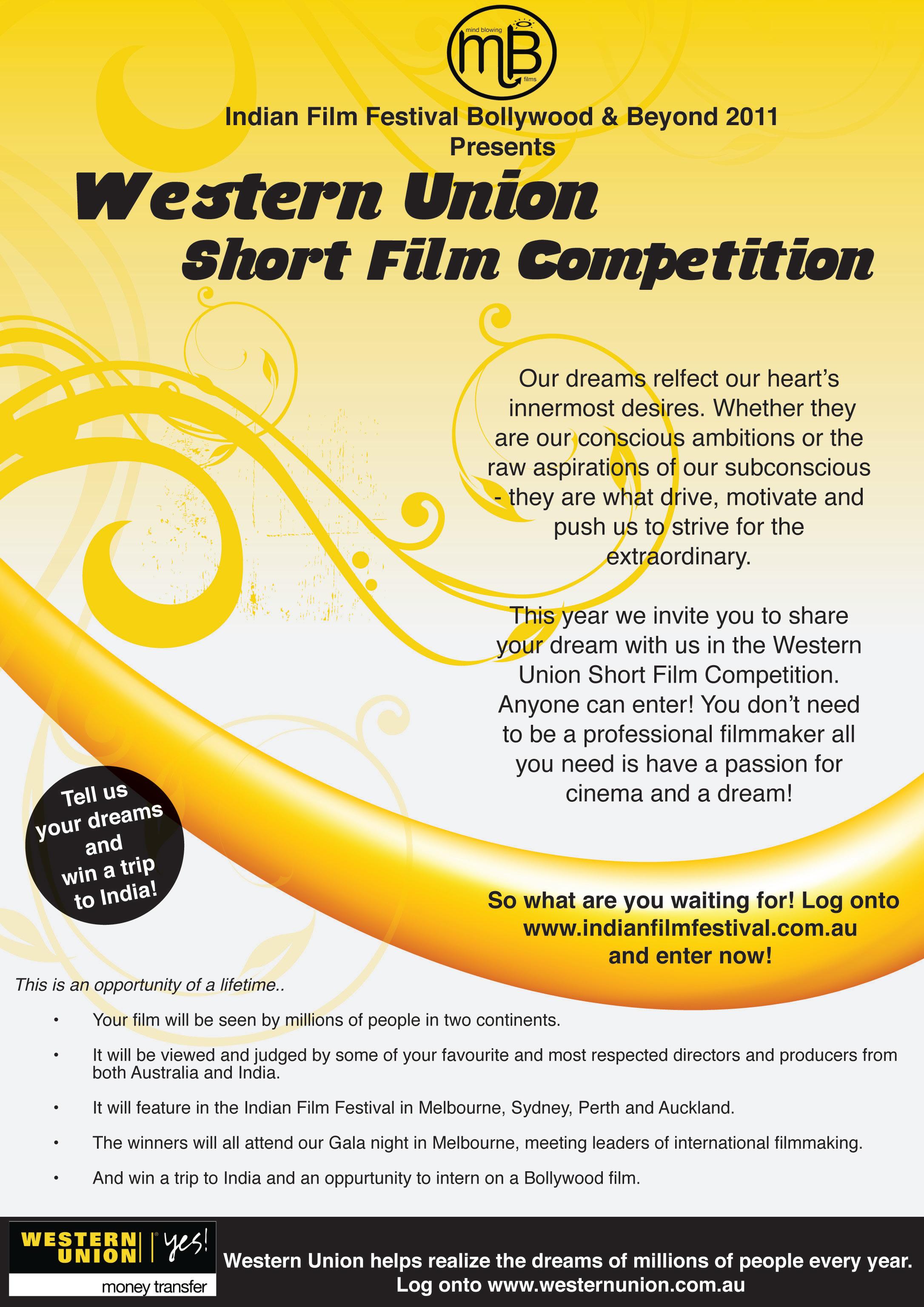
OCTOBER (1) 2010 <> 65 NATIONAL EDITION
Very Very Special
The Mohali match has proved that, despite the popularity of its younger siblings, test cricket still retains its charm, admirers and memorable moments
Australia are no stranger to Laxman’s prodigious second innings efforts –the mere mention of the word Kolkata will send shivers up any cricket fan’s spine
BY RITAM MITRA
India retained the Border-Gavaskar Trophy in stunning fashion this week, clinching a match that will go down as one of the most memorable Test matches in history. Each twist and turn over the five days was met with palpitations from not only the fans, but the players as well. It would have been near impossible to script such a match, and even more difficult to truly decide the deserved winner. Perhaps it is fitting, then, that it was a substitute fielder who delivered the crucial blow; Steven Smith threw the fateful ball that whistled past the stumps and handed India four priceless runs just when it seemed as though they would fall short.
The match brought to the fore an array of talent and saw several milestones being reached – Shane Watson became only the third Australian after Damien Martyn and Allan Border to score a century and a half-century in the same match in the subcontinent. Young wicketkeeper Tim Paine did not let the absence of Brad Haddin be felt, with a valiant half-century and tidy work behind the stumps.
Simon Katich and Michael Hussey both reached 4000 test runs, both in their 53rd match. Tendulkar was once again dismissed in the 90s, but not before delighting the unfortunately sparse crowd with
some trademark punchy strokes. Zaheer Khan reached his 250th test wicket, reminding everyone just why he is such a potent spearhead for the Indian attack, taking 8 wickets including a fantastic spell of reverse-swing bowling late on Day 1 which sparked the match to life. However, amongst all the individual contributions in the match, it was one very very special talent that transformed the match into a true epic. V.V.S. Laxman strode out to the crease with a runner, after batting at number 10 in the first innings courtesy of a back injury he’d sustained in the field. In the middle of a collapse, things were looking grim for India and it seemed as though Australia would run away with a Test win. Beware the wounded batsman!
Australia are no stranger to Laxman’s prodigious second innings efforts – the mere mention of the word Kolkata will send shivers up any cricket fan’s spine. It is one thing to save a match in the third innings as Laxman did back in 2001 at Eden Gardens, but it is another thing altogether to actually carry your team over the victory line in the fourth innings. Laxman now has an average over 50 in the second innings; as a rough comparison, opening tyrant Virender Sehwag averages just over 30.
To properly sum up Laxman’s achievements in this match, it’s important to take note of the situation through which India emerged victorious: Ben Hilfenhaus along with Doug Bollinger were running rampage with the ball, swinging the ball enough to have even Tendulkar playing-and-missing on a regular basis. The disappointing Mohali crowd seemed to have lost their voices already by the time Tendulkar was dismissed, and it was even more silent when Ishant Sharma emerged with the team in dire straits. Laxman himself was batting with a runner, which anyone will tell you is an absolute nightmare – just ask Dhoni who failed to heed a call from Suresh Raina and turned an easy single into an instant catastrophe.
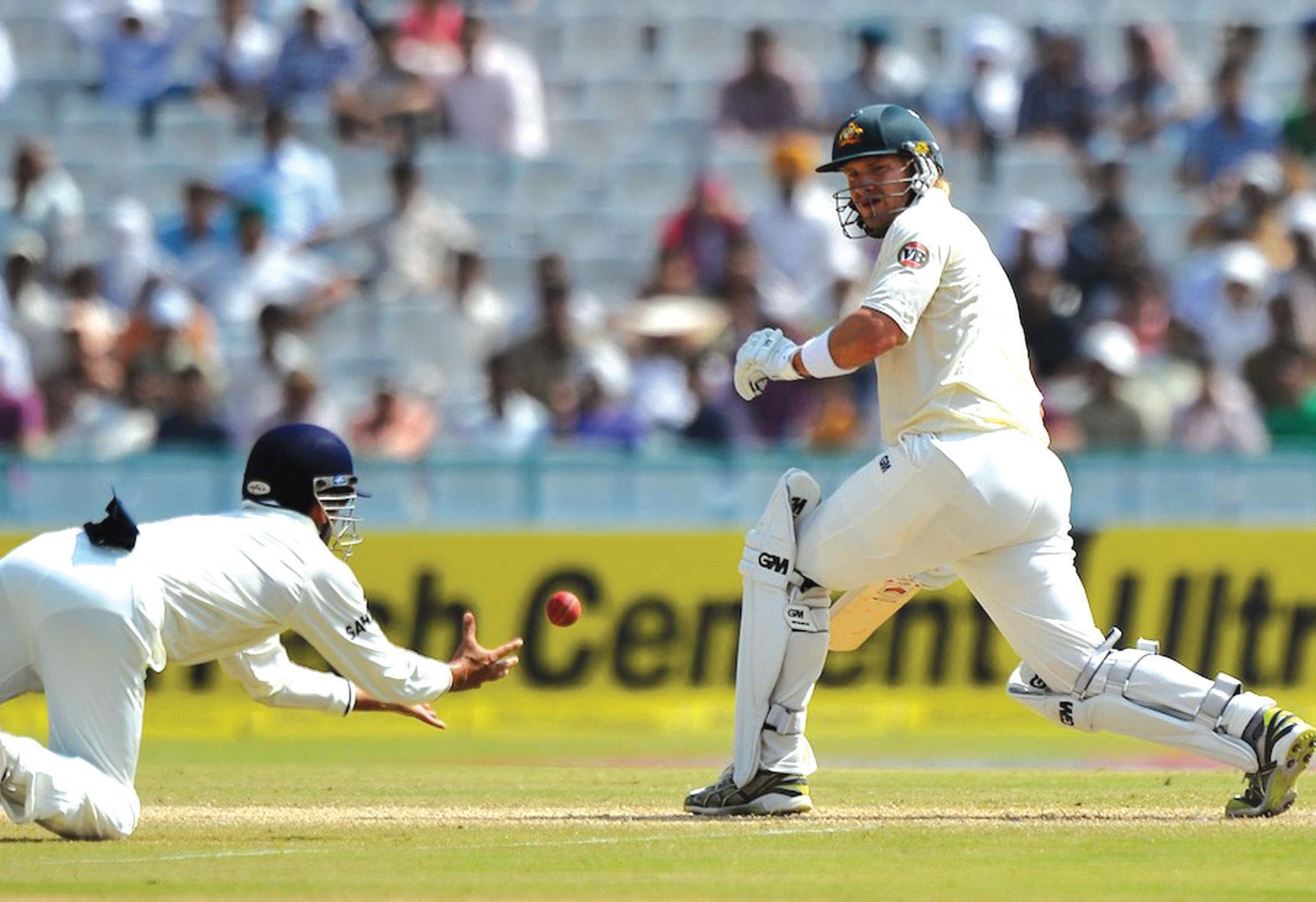
While all this was going on, however, Laxman
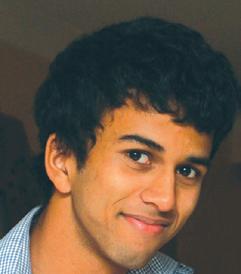
seemed to be playing in a different match altogether. It is often noted that Laxman might have succeeded to a far greater extent at Number 3 – he scores his runs very quickly, but at Number 6 he is often left to bat with the tail, or score quick runs when the team is pushing for a declaration. As Dhoni himself pointed out after the match, Laxman is “one of those players that, wherever you put the field, he will still get runs and rotate the strike and keep the scoreboard ticking over”. This match was no exception – Laxman raced to 50 at a run a ball and returned the pressure right back to the relentless Australians.
There was a lot more asked of Laxman than just batting, however. Shepherding the tail has to be one of the hardest jobs in a batsman’s career – in order to keep the strike, Laxman was so confident in his ability to see the match through that he repeatedly rejected singles even when the team needed just 10 runs to win. His calm presence at the crease undoubtedly allowed Ishant Sharma to play out almost 100 testing Australian deliveries in the same manner, in a partnership that saw India go from being 8-127 to within 10 runs of the 216 runs set for them. Laxman is never one to show emotion, but his ferocious calling and serious blasting of Pragyan Ojha when the tailender was dawdling outside his crease showed how much this victory meant to him. Laxman screamed in delight when the last ball was clipped away for two leg-byes, and it was very refreshing to see such an important part of India’s truly great battling line-up of this decade still so passionate about the team’s fortunes.
India’s batting order is far and away the most revered in Test cricket, but one batsman that always seems to slip under the radar commands more respect. V.V.S. Laxman is neither flashy nor quick; but the style and elegance with which he approaches his cricket is a truly precious cricketing treasure. If there was one batsman you would want at the crease when you need a miracle, you’d be hard-pressed to find a better man for the job.
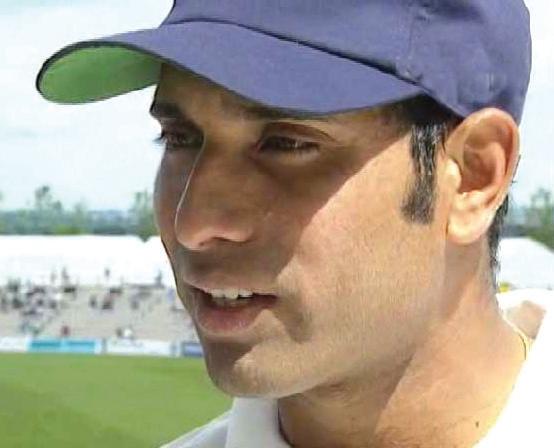
66 <> OCTOBER (1) 2010 INDIAN LINK
SPORT
www.indianlink.com.au
Shane Watson’s innings comes to a close, caught by Gautam Gambhir during Harbhajan Singh’s over. Watson scored a more than impressive 126, a large chunk of the contribution in Australia’s first innings against India


OCTOBER (1) 2010 <> 67 NATIONAL EDITION


68 <> OCTOBER (1) 2010 INDIAN LINK


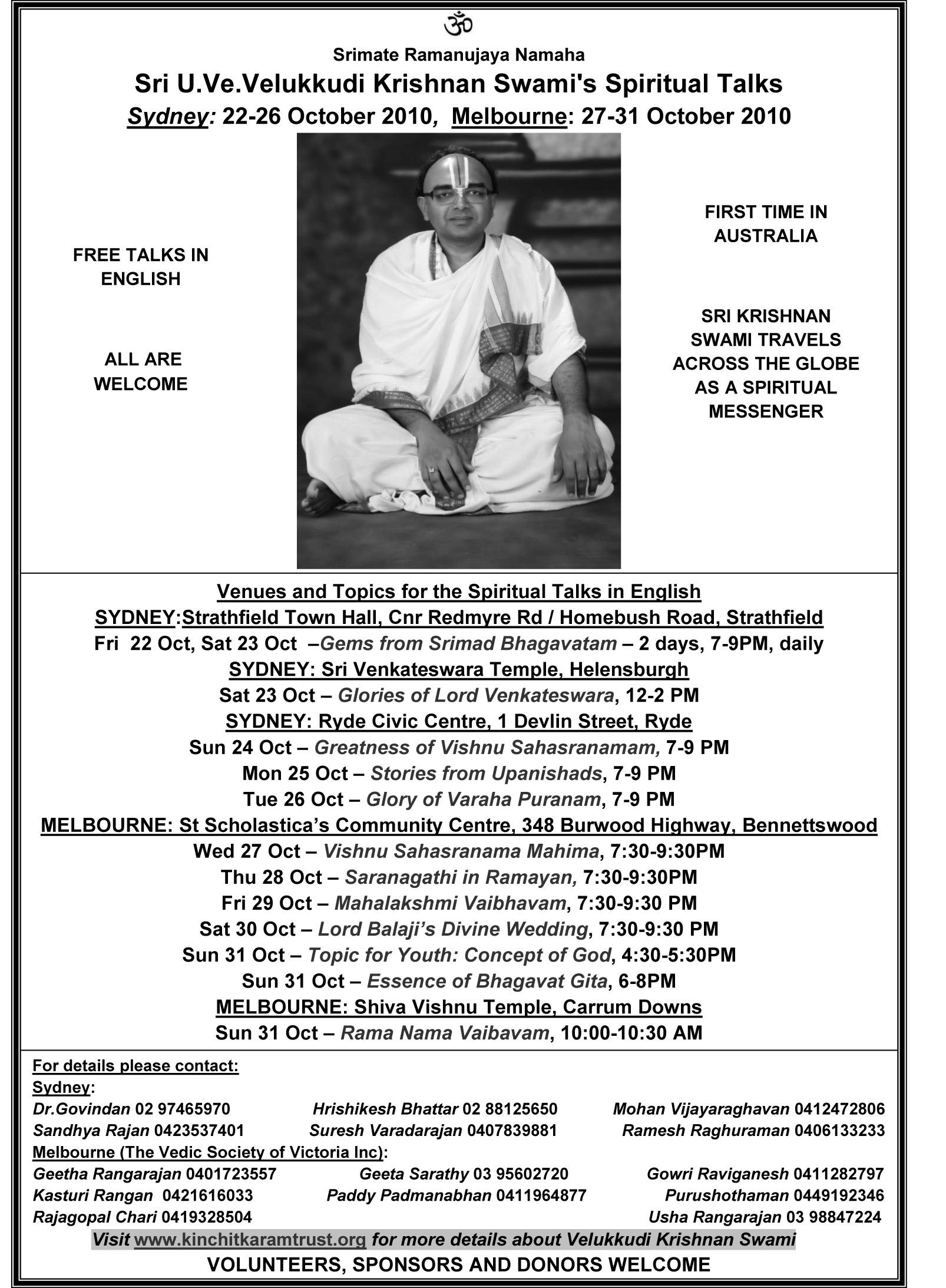
OCTOBER (1) 2010 <> 69 NATIONAL EDITION

70 <> OCTOBER (1) 2010 INDIAN LINK
Lunch like a Maharaja
Imagine yourself surrounded by the calm waters of a 32 hectare lake. Gentle breeze wafts in as you hear the sounds of birds in the background. The sky is lit up with wonderful hues of red as the sun sets in the horizon. Sipping your glass of crisp dry Riesling, you nibble on the scrumptious tandoori platter served by professional waiting staff. No, you are not at a luxurious hotel in the Lake city of Udaipur in India, but at Maharaja's Lakeside Indian restaurant at Norwest Boulevard, at Bella Vista in Sydney. Boasting of 180 degree lakeside views, the restaurant offers both formal and alfresco dining experience. Satinder
Benepal, the owner of Maharaja's Lakeside has ensured that the restaurant maximises its position through a view of the lake from almost every part of the restaurant. That could be challenging for any lover of good food as they are bound to be distracted by the wonderful talents of the team of chefs, lead by head Chef Krishna who works in an open kitchen and shows off his wonderful prowess. “I have been in the Indian restaurant scene for over 20 years and found that most Australian patrons were keen to see how Indian food was cooked. I decided that an open kitchen would show the wonderful range and styles of Indian cooking,” Benepal told Indian Link.

It was easy to note that this concept is a big hit, as a group of youngsters watched Chef Krishna make rumali roti, while twirling the dough in the air. These mini chefs would surely use this technique to impress judges as and when they enter the mini Master Chef competition.
More than just the rumali roti, Maharaja Lakeside's food is very rustic and for lovers of Indian Punjabi food, this is the place to go. Their chilli prawns and hara bhara dishes for the vegetarian are entrees that are perfectly seasoned – a touch of spice and beautifully balanced mix of herbs. Though the hara kebabs are deep fried, they are not overly oily. With a crunchy finish, these kebabs are a wonderful starter to a Maharaja’s feasts.
While in their main menu Maharaja Lakeside has the conventional Indian dishes such as kadahi chicken, chicken Madras, ghosht Maharaja, they also have a number of seafood dishes on the menu. The Goan fish curry with its
and a bit of Aussie tucker on your palate, try their diced crocodile fillets simmered in a creamy coconut sauce. The crocodile tastes a bit like chicken, but has a unique soft taste. “Better the croc inside me, rather than me inside the croc!”, one hears an Australian family say. If not too squeamish, it will be an experience to try Aussie Kangaroo on the menu, outback kangaroo fillets delicately cooked in rich herb and spices to compliment the roo’s distinct flavour. Definitely a treat!
For vegetarians, there are a number of dishes to enjoy – these range from the kesari malai da kofta to the Patiala eggplant masala. Both dishes transports one back to India and those lazy dhaba afternoons where one can taste the true flavours of India.
Benepal has built up quite a fan following in Norwest and regular corporate executives from companies such as Woolworths, Sigma Pharmaceuticals and Optus lunch there. “In fact, I have had the Waugh brothers Steve and Mark, also come in a few times and enjoy our food,” he said “We have also hosted a number of functions for the Indian

birthdays, anniversaries and special occasions," concludes Satinder Benepal, the proud owner of Maharaja's Lakeside. Next time you want to be treated like a Maharaja or make believe you are in the
Maharaja's Lakeside Indian restaurant is at 4 Century Circuit, Norwest Boulevard, Bella Vista. Contact them on 02-9680 2444.
OCTOBER (1) 2010 <> 71 NATIONAL EDITION www.indianlink.com.au ADVERTORIAL
For
Lowest Fee Guaranteed IELTS IELTS GURU Suite -1, 71 A Macquarie St, Parramatta, Phone 0411 520 546, 9687 9741 www.ieltsguru.com.au • Power Packed Sessions. • One and Two Weeks Crash Courses Available. • Money completely refundable, if not satisfied with the first tuition session.
All smiles at Maharaja Lakeside Indian restaurant are Satinder and Ranbir Benepal with Chef Krishna.
expert coaching in
Ease into Edmonton

Authentically recreated eras add a genuine touch to this charming tourist destination
BY THOMAS E KING
“Welcome to 1846; you are no longer in 2010,” said the conductor as I stepped down from the timber-panelled train carriage and gazed at a formidable bastion from times gone by. Though I had seemingly travelled more than 160 years into the past I didn’t feel any jet lag. The high wooden walls and watchtower before me, however, were totally unlike what I had seen only minutes before at the entrance to Fort Edmonton Park.
There in the parking lot filled with tour coaches and cars were residents from Edmonton, the provincial capital of Alberta, other Canadians from points near and far and a mix of visitors from other lands. All were eagerly anticipating the 10am opening of “North America’s largest interactive historic park”.
Set on a leafy 64-ha plot fronting the North Saskatchewan River in suburban Edmonton, the park as I discovered on a warm summer’s day, genuinely brings to life the pioneering atmosphere of the 19th century and the prosperity of the early 20th century in this western Canadian city. More than 70 period buildings from four eras in themed ‘streets’ not only present life as it was, but visitors can also participate in daily events.
Periodically throughout the day, a ‘time-travelling’ steam train stops before the namesake Fort Edmonton. Passengers disembark and walk the short distance to a recreated structure where costumed historical interpreters provide anecdotes and insights from as-if-they-were-there-in-1846 perspectives. I watched as a Cree woman made pemmican, a concentrated mixture of fat and protein used as a nutritious food, and listened to stories about fur trading days. The fortified trading post was set up to provide a common ground where native people like Cree and Blackfoot could bring furs and obtain supplies.
Leaving this congenial setting I was soon treading along 1885 Street which represents Edmonton’s homestead era. One of the first structures I encountered was the Bulletin Building, which housed Edmonton’s earliest newspaper. I picked up a copy of the Edmonton Bulletin dated July 18th 1885. World news was indeed sparse with only a few items telegraphed to the paper from Winnipeg, the capital of Manitoba Province.
Local news headed with the single line “River very high, with some driftwood” and continuing with items informing readers about steamer arrivals, lost buckboards and horses
and new stocks of provisions provided astute observations about the fledgling community. A horse-drawn wagon laden with visitors rumbled by as I continued walking down the dusty street passing some two dozen relocated or authentically reconstructed buildings from this period of early settlement.
During the years between 1891 and 1914, the population of Edmonton soared from 800 to 72,000 with the demand for housing outstripping supply. Coming to the end of 1885 Street and rounding the bend to 1905 Street, I could see a solution to this dilemma. A semicircle of tents had been set up to represent temporary housing seen in the city for many years. Two historical interpreters dressed in early 20th century attire were ‘playing cards’ in their tent as I walked past. They beckoned me to enter and proceeded to talk of the ‘hardships’ and pleasures of those days.
A clanging bell alerted me to a streetcar proceeding down the street. Boarding it in 1905 I got off in 1920! Two girls dressed in the fashion of the day were sitting near the streetcar stop where I alighted for 1920 Street. They had just finished ‘work’ as telephone operators, they said in a most convincing inperiod way, and were excited about news that famous movie star, Douglas Fairbanks would be coming to Edmonton.
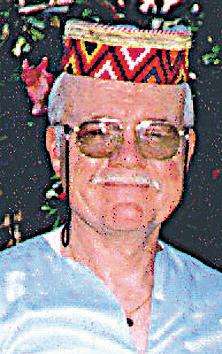
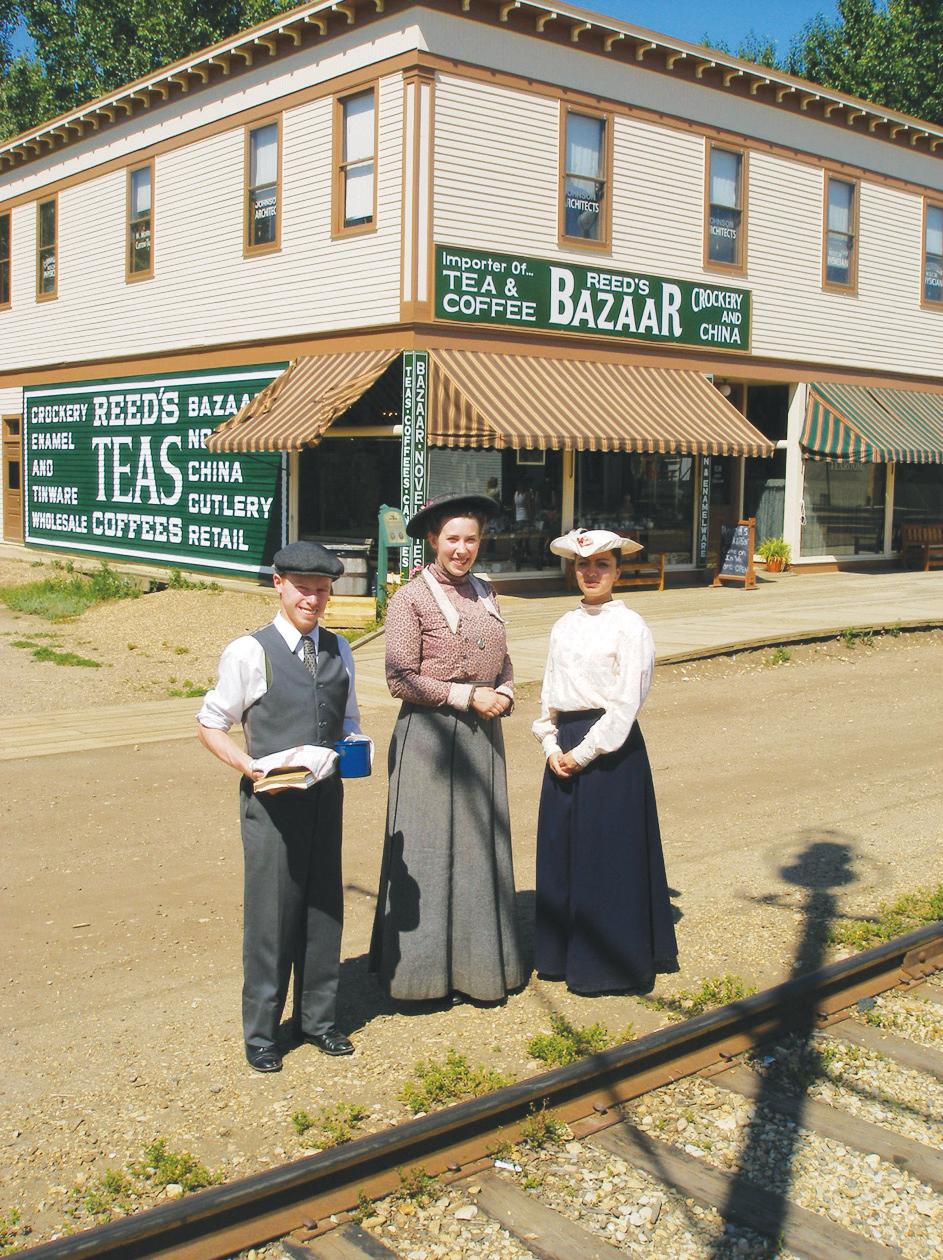
In the distance I heard the whistle from the steam train. It was a signal that another group of visitors would soon start their own journey through history.
Surrounded by greenery, Fort Edmonton Park is located on a bend of the North Saskatchewan River. Upstream, but in the very heart of the capital, is the stately Alberta Legislature Building, one of Western Canada’s best remaining examples of classic, ornate architecture. Considered a provincial treasure, the building highlighted with granite and sandstone accents, was completed in 1912. Free guided tours starting at the Interpretive Centre reveal more about this solid veteran which resembles grand sandstone edifices seen in our state capitals.
The dignified building towers above a 23ha landscaped expanse of flower-strewn and fountain-enhanced gardens. I stood before the fountain and watched arcs of water sparkle in the clear blue sky. Children played happily as office workers in shirt sleeves took their time travelling from one appointment to the next.
The amiable ambience continued as I made my way to Old Strathcona in suburban Edmonton. This historic heart of the city dates to 1891, the year the railway line was completed between Calgary and Edmonton. Though it’s now a part of the million-strong greater city, there’s a real buzz to this quaint neighbourhood. Locals and visitors alike swarm through its chic shops, boutique hotels and gourmet restaurants set inside buildings that were new in the 1890s. Old style lampposts and brick footpaths lining Whyte
72 <> OCTOBER (1) 2010 INDIAN LINK
2 TRAVEL
I watched as a Cree woman made pemmican, a concentrated mixture of fat and protein used as a nutritious food, and listened to stories about fur trading days
1
1. The grounds around the Alberta Legislative Building are colourful throughout summer

2. Authentically costumed interpreters pause along 1920 Street in Fort Edmonton Park

3. A faithfully built stage coach transports visitors along 1885 Street in Fort Edmonton Park

4. The Peace Plaza honours those who lost their lives in two World Wars and the Korean campaign
5. There’s no question you are in Canada when visiting the massive ice rink at Edmonton Mall!

Avenue add more charm to the small town aura of another era.
While there’s no shortage of commercial outlets in Strathcona, they pale into insignificance when compared with the offerings in West Edmonton Mall, a gargantuan marketplace described as “the greatest indoor show on earth”. Arriving for what I thought would be a quick round of browsing, I picked up a directory which categorises the 800 shops found in the two storey mall.
Interspersed between flagship stores and exclusive retailers spread over the equivalent of 48 city blocks, are establishments stocking everything from fashion, gifts and hardware to computers, beauty products and toys. In addition are more than 100 dining outlets and a dinner theatre. Entertainment options include an indoor aquarium stocked with coral and creatures, two miniature golf courses, 21 movie screens, a massive Canadian flag spread out behind a National Hockey League-sized skating rink, rides like an indoor roller coaster and a Las Vegas-style casino near a hotel with unique themed rooms.
The publicity generated around this mega mall is such that shopping expeditions are organised from other parts of Canada and even states in northern USA. After arriving, many shopaholics rush off to one of eight specialist retailers exclusively selling luggage. An extra suitcase or two is a wise purchase indeed for those seriously trolling through the mother of all shopping centres!
Travel notebook
EDMONTON
FLIGHTS
Air Canada operates a daily CA34 service from Sydney to Vancouver. The 14 hour non-stop flight is in a Boeing 777-200LR equipped with a personal touch screen TV at every seat and in-seat power for laptops. See your travel agent or contact Air Canada Australiawide on 1300 655 767 for details of flights and fares. See www.aircanada.com Interstate passengers can easily connect with CA34 as it departs Sydney at 1330.
TRAVEL
Edmonton is 1½ flying hours east of Vancouver. Air Canada has multiple flights every day connecting the two provincial capitals. In addition, you can leisurely travel by coach (Greyhound Canada) or car and make stops in Calgary and the scenic Rockies before continuing on to Edmonton. ViaRail’s Canadian is another travel option with a frequent eastbound service from Vancouver. See www.viarail.ca and www. canadabyrail.ca
ACCOMMODATION
The towering 313 room Sutton Place Hotel offers sophisticated lodgings one block from the City Centre Mall in the heart of Edmonton. A special treat here is the city’s only all-you-can-eat twice weekly Chocoholic Buffet! See www.suttonplace.com

EVENTS
Edmonton is nicknamed Canada’s Festival City and there is a full calendar of events throughout the year. While many festivals are celebrated during summer months, the Canadian Finals Rodeo is the last big event of the year. Held over 10 days in early November, Canada’s major indoor rodeo is staged concurrently with Farmfair International, a large scale agricultural show. See www.canadianfinalsrodeo.ca
INFORMATION
For advice on planning your holiday in Canada visit www.canada.travel or call the Canadian Tourism Commission on 1300 300 576. Also see www. edmonton.com and www.travelalberta.com
OCTOBER (1) 2010 <> 73 NATIONAL EDITION
3 4 www.indianlink.com.au 5
Photo: Thomas E. King
DOUBLE
SOUTH WENTWORTHVILLE
AUCTION SOUTH WENTWORTHVILLE $529,950
QUALITY AND STYLE
Immaculate townhouse in small complex of 5, featuring spacious tiled living area, ultra modern kitchen with gas cooking, 3 extra large bedrooms with ensuite to main, ducted air con, double garage with remote door, fantastic fully timber decked courtyard. Beautifully presented throughout. A pleasure to inspect!


Laing & Simmons Wentworthville
Contact Leanne Ollerenshaw
PEMULWUY AUCTION
LOOKS WILL DEFINATELY IMPRESS!
Superbly situated in a central location within the highly attractive Pemulwuy estate, this 2.5 years young home is everything you’ve been looking for, attractive layout with stunning interiors, ultra modern kitchen, with gas cook top, large walk in pantry and dishwasher, large modern bathroom with corner spa bath, separate theatre room or 4th bedroom downstairs, 3 large bedrooms upstairs all with built-ins and main with ensuite, separate sitting area or study nook upstairs, separate lounge and family/dining area, ducted air conditioning, built/in speakers in the dining area, security intercom, alarm, three toilets,
WESTMEAD $369,950
INVEST TODAY 14/102 Lackey Street

• Walk to public transport • Two large bedrooms
2 toilets • Remote controlled single garage
• This property is ideal for an investor

• Currently leased with a rental return of $330PW.
Open For Inspection: Saturday 11:30-12:00pm
Auction: Saturday 23 October 2010 on site at 12:00pm
Laing & Simmons Wentworthville 9688 4000

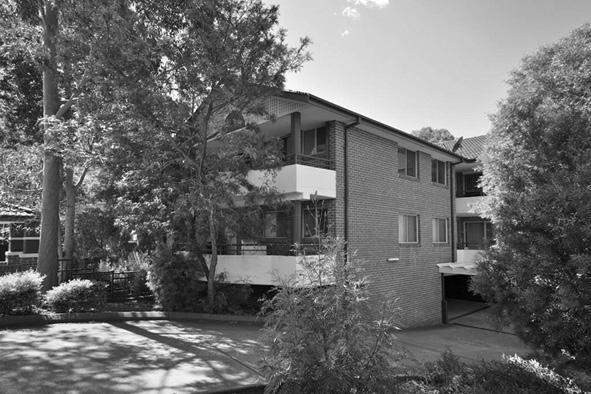




Contact Alex Mich 0433 882 145
OLD TOONGABBIE
AUCTION
THIS ONE WILL SURELY IMPRESS 13 Bogalara Rd
This home has a real family feel to it, from the moment you step inside you will feel its warmth! Features include large nth east facing balcony – great for the family gets together, 4-5 bedrooms, 2 modern bathrooms, modern kitchen including dishwasher, fridge and microwave, large lounge with a/c, separate rumpus/family room with combustion fire and wet bar, alarm, internal laundry, separate office or teenage retreat, double remote LUG and large well maintained yard also great for entertaining all set on a large corner block of 885sqm. Be sure to inspect so you don’t miss out!
Open For Inspection: Saturday 12:30-1:00pm Auction: Saturday 16 October 2010 on site at 1 pm

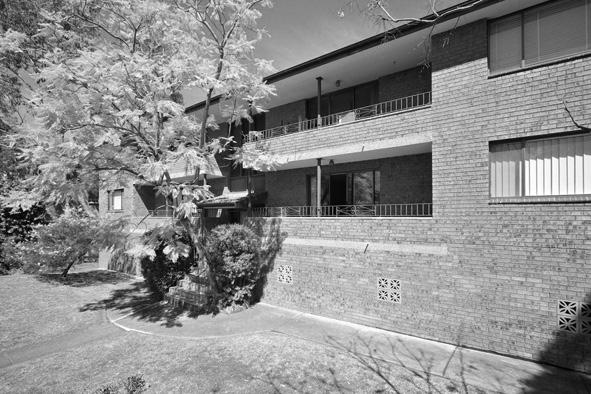



Laing & Simmons Wentworthville 9688 4000 Contact Leanne Ollerenshaw 0414 790 887 or Alan Fowler 0413 057 699

within a well maintained security block close to shops and transport.
Laing & Simmons Wentworthville 9688 4000 Contact Alan Fowler


GIRRAWEEN
AUCTION
BE IMPRESSED 67a Gilba Rd Young & modern, this home is a must to inspect. Features include 4 bedrooms with ensuite and walk in robe to main, large formal lounge and dine with high ceilings, fantastic timber stairs and belistrate huge gourmet kitchen with gas cooking, 3rd bathroom down stairs, family room and prayer room, ducted air conditioning, double garage and more. Walk to shops and station, don’t miss out!!!!
Open For inspection: Saturday 2:30-3:00pm
Auction: Saturday 30 October 2010 on site at 3:00pm
74 <> OCTOBER (1) 2010 INDIAN LINK
SOUTH WENTWORTHVILLE $385,000
DRIVE THROUGH GARAGE Plenty of room to move in this spacious 2 bedroom villa with large combined lounge and dining area with air conditioning, modern kitchen with gas cooking and plenty of cupboard space, high ceilings, second toilet, your own private courtyard, 3 car accommodation and set in a quiet position in a popular complex.
& Simmons Wentworthville 9688 4000 Contact Alan Fowler
Laing
stunning entertainment area with timber deck . Remote lock up garage with rear access. OPEN FOR INSPECTION: Saturday’s 11:30-12pm AUCTION: Saturday 30 September 2010 on site at 12pm Laing & Simmons Wentworthville 9688 4000 Contact Leanne Ollerenshaw 0414 790 887 or Alan Fowler 0413 057 699 BLACKTOWN $315,000 HIGH POSITION 8/21-23 Third Ave Ideal first home or investment with 3 bedrooms 2 with built ins, separate lounge & dine, modern bathroom, large bright & airy kitchen, 2nd toilet in laundry, carport, big backyard & walk to shops & station. Don’t miss this one! Open for inspection: Saturday 10:00-10:30am Laing & Simmons Wentworthville 9688 4000 Contact Alex Mich 0433 882 145 WENTWORTHVILLE AUCTION WHEN LOCATION COUNTS 22 Page Street Set in a high position within walking distance to shops & station is this original house featuring separate lounge with wood fire heater, large eat in kitchen, covered rear deck/ entertaining area and single garage. On a large corner block this property is ideal for a first home buyer or potential redevelopment. Open For Inspection: Saturday 10:30-11am Auction: Saturday 30 October 2010 on site at 11am Laing & Simmons Wentworthville 9688 4000 Contact Alan Fowler 0413 057 699 or Leanne Ollerenshaw 0414 790 887 NORTHMEAD $369,950 WALK TO WESTMEAD HOSPITAL This great second floor unit features 2 bedrooms with ensuite to main & built in wardrobe, spacious combined lounge and dining area with air conditioner, large modern kitchen with Caesar stone bench top & gas cooking plus dishwasher, balcony, video intercom, security parking
•
Laing & Simmons Wentworthville 9688 4000 Contact Alan Fowler 0413 057 699 or Leanne Ollerenshaw 0414 790 887 MERRYLANDS $309,950 BLUE RIBBON LOCATION Spacious interior and a great location make’s this unit an excellent first home or investment, just moments to Merrylands CBD. This unit offers 2 bedrooms, both with built ins, modern kitchen and bathroom, open plan living and dining with 2 balconies, internal laundry, plenty of cupboard storage space and lock up garage. Walking distance to all amenities. Laing & Simmons Wentworthville 9688 4000 Contact Jim Malamas GREYSTANES $739,950 WHEN SIZE MATTERS Walk in & be amazed by this 6 bedroom, full brick, 3 story home with basement area potential for second residents with kitchenette & plumbing for a forth bathroom. Features include; huge original kitchen, x3 bathrooms, separate formal lounge & dining area, rumpus room upstairs, internal laundry, double lock up garage & x2 balconies. Close to school, shop, golf course & transport. All this & MUCH MUCH MORE! You Truly will be amazed by this property. Call for an inspection today! Laing & Simmons Wentworthville 9688 4000 Contact Jim Malamas WESTMEAD $349,950 GREAT LOCATION 1/18-20 Helen St Located in a much sought after location in Westmead close to hospital, Parramatta park, trains, shops and schools is this 2 bedroom 1st floor unit, with large lounge / dining off a north facing balcony, floating floor boards through out, updated kitchen with gas cooking and dishwasher, security intercom, internal laundry and lock up garage. A must to inspect. Open For Inspection: Saturday 2:30-3:00pm Laing & Simmons Wentworthville Fred Khurana 0404 825 550 PARRMATTA $299,950 1 BEDROOM APARTMENT! This 1 bedroom unit located on the ground floor features a/c, gas cooking and dishwasher in modern kitchen, good size courtyard, modern bathroom and lock up garage and currently rented for $310per week Complex has an in ground pool and in a great location, don’t miss out! Laing & Simmons Wentworthville 9688 4000 Contact Leanne Ollerenshaw WENTWORTHVILLE $379,950 LOCATION, LOCATION, LOCATION 8/25 Lane Street Leave the car at home only minutes walk into the main shopping center and station is this top floor 3 bedrooms Unit, With Floating timber floor boards combines family and dining area, Gas Cooking, spilt system air conditioner, 2 Balconies, Single Lock up Garage, 3 good size bedroom. As units in this street does not last long hurry in before it’s too late. Open For inspection: Sat 2:30-3:00pm Laing & Simmons Wentworthville 9688 4000 Contact Alex Mich 0433 882 145 WENTWORTHVILLE $339,950 HANDY LOCATION Take a look at this spacious well maintained 2 bedroom apartment features include modern kitchen with gas cook top and dishwasher, large lounge and dining room, reverse cycle air conditioning, main bedroom with built in wardrobe, large balcony, internal laundry, modern bathroom & lock up garage. All set a handy distance to trains, shops & schools. Laing & Simmons Wentworthville 9688 4000 Contact Leanne Ollerenshaw GREYSTANES $539,950 FANTASTIC FAMILY HOME The property is presented in excellent condition featuring 4 bedrooms all with built ins, ducted air conditioning through out, automatic shutters, modern bathroom, modern timber kitchen, large tiled dining, separate lounge room, lock up garage converted into potential granny flat, good size yard, covered area with jacuzzi great for entertaining all located close to all amenities. Laing & Simmons Wentworthville 9688 4000 Contact Jim Malamas GUILDFORD $275,000 2 MINUTES TO STATION Ideally located 2 bedroom unit with ultra modern kitchen with gas cooking, combined lounge/dining area, extra large balcony, built ins in main, situated in a popular well maintained security block ideal for the first home buyer or investor, not to be missed. Laing & Simmons Wentworthville 9688 4000 Contact Alex Mich INVESTORS DELIGHT 110 Frances Street What a lovely 3 bedroom home located in a sort after street in South Wentworthville, this property features 2 bathrooms, 2 toilets, gas cooking, timber floor throughout, great size bedrooms with 2 rooms having built-ins, east facing front yard, with a west facing backyard, plenty of natural sunlight. This property will be SOLD so don’t be miss out before it’s too LATE Open For Inspection: Saturday 1:30-2:00pm Auction: Saturday 30 October 2010 on site at 2:00pm Laing & Simmons Wentworthville 9688 4000 Alex Mich 0433 882 145 Michael Cuskelly 0433 872 145
Happily ever after
Happiness can mean different things to different people
 BY SHERYL DIXIT
BY SHERYL DIXIT

“…and they married and lived happily ever after!” I concluded, relaxing in the thought that storytime was over and that I could finally escape to the glass of chilled Moscato that was patiently waiting for me on the kitchen counter.
“So they never fought again, ever again?” asked my five year old, whom I had presumed asleep. “Well, Cinderella and the prince never did fight in the first place,” I said, wondering what childish logic had prompted the thought. “But if they married, they would fight, so they couldn’t live happily ever after,” he reasoned, half to himself and promptly fell asleep. I was glad because after a hectic day I wasn’t ready to reason with the child, and I had a vague foreboding that he had been privy to one of his parents’ ‘discussions’, which, by mutual consent, we try to avoid when our kids are around.
The episode prompted the thought: what exactly is happily ever after? I don’t know of a single person who can claim to experience that happy state of existence all the time. Life as we know it is full of ups and downs in equal measure with one or the other sometimes tipping the balance. Frankly, I am of that strange frame of mind that if everything goes right in my day, by noon I’m waiting for something to go wrong. And it inevitably does, ranging from a mildly inconveniencing incident like spending half an hour trying to figure out where I’ve parked, to a minor bombshell of having to rush a sick, but energetic child to the doctor, chemist and finally, reluctantly to bed. And the prospect of having to play nursemaid and having to referee wrestling bouts between siblings over the next few days certainly doesn’t give my enthusiasm a boost.
But we do try. One of my favourite poems ends with, “Strive to be happy!” and as humans I guess that’s the best advice we could give ourselves. The most ‘forwarded’ emails I receive are messages on life, how to be a good person, how to be kind, considerate, religious, tolerant…but most of all, happy. And happiness can come in many forms, from hearing the laughter of a child, seeing a loved one, or even watching someone you don’t like slipping and ending up butt-first into a muddy puddle. Sometimes when I receive one of these ‘lifestyle’ emails, I wonder what makes people take time out to state the obvious through an elaborate powerpoint presentation. But there are times when simply sitting down to work can be a chore, and they are invaluable in bucking me up and getting me started.
Some people think happiness is a state of mind, and they try very hard to be happy. But this, methinks, makes them define happiness, and in the process of striving, they
find happiness in the most trivial of things that some of us would find unfunny or even downright idiotic. Like being on time to catch the train to work or getting one up on Mafia Wars. They have an indefatigable sense of self-regard, and are always anxious to justify their happiness to us lesser mortals who are unable to conceal our superciliousness at their seeming absurdity. These are the kind of people who take internet quizzes that assure them that they are intelligent, well-adjusted and happy individuals. And of course, post their scores to friends to better!
Some people strive to be unhappy. These are the kinds (and I am surprised at how many exist) who find life and all its tasks burdensome. In a day they find everything to complain about. If it’s a sunny day, they’ll find that it’s just too hot; if it turns cooler, its sooo cold! If they get a raise, they worry that with it will come a lot more work and expectation. They gripe about their health, jobs, children, families and end up being so completely self-centred, that it’s almost impossible to hold a positive, indeed any conversation with them! With complain comes worry, with worry comes stress and they end up spending a good deal of their lives being tired, miserable, discontent …and yet, in some strange way, they are perfectly content with being the way they are.
Fortunately, most people I know fall into the happy middle average. Their lives are a moderation of the good and the bad, and more often than not, it’s their sense of humour that redeems them. A situation may stink, but when they unburden themselves by recounting it, they suddenly find it mind-bogglingly funny. These people also have the wondrous ability to
laugh at themselves, a phenomenon I have encountered most here in Australia, where ‘Aussie humour’ is considered a national treasure.
It’s impossible to quantify the cause of happiness, because a pair of shoes could thrill one person as much as walking barefoot could please another. An iPhone could bring a techno-nerd unlimited joy and a less savoury phone bill, but his friend could experience incredible pleasure simply by browsing through old albums. Now among other things, I associate humour and natural beauty with happiness. Anything that makes me laugh brings about an instant change of mood, no matter how irritated or miserable I feel. I only wish that when I experience ‘down’ moments, I could instantly find something spontaneously funny to help change my pessimism. And as for natural beauty, spring is my favourite season because when I see flower-lined boulevards or once-bare trees bursting into verdant green, something in my soul sings and I feel an instant uplifting of spirit. Sometimes it’s just people, like the lovely little boy next door whose cherubic face and sky-blue eyes always make me smile. Or my two boys walking hand-in-hand in a rare moment of solidarity. I guess, like most things in life, moderation is the key. I’m very happy for those terribly optimistic people who find life beautiful all the time, good luck to them. I’m also happy for those miserables who enjoy the feeling that life’s so hard, because after all, they’re enjoying it and can counter any optimism with a double dose of pessimism.
But my favourite kind of people are the ones who take life in their stride and not too seriously. They possess a good deal of inner strength which helps them to be practical, and they weather each storm knowing that either sooner, later or eventually, the sun will shine through the clouds. They don’t consciously ‘seek’ happiness through religion, lifestyle changes or through unoriginal gems that fall from the lips of popular godmen…. they experience moments of happiness wherever they are, and they find it whenever they need it.
PSYCHE
Frankly, I am of that strange frame of mind that if everything goes right in my day, by noon I’m waiting for something to go wrong
It’s impossible to quantify the cause of happiness, because a pair of shoes could thrill one person as much as walking barefoot could please another
www.indianlink.com.au
An old Indian favourite
Jump on board the gravy train with this Mughlai staple
BY RAJNI ANAND LUTHRA
It’s very Indian, probably a thousand years old, but still very much a part of modern life, in pretty much the same form as it has always existed.
No, I’m not talking about my favourite bit from the Delhi CWG Opening Ceremony (OK, I admit it, I’ve watched the rerun four times - minus the speeches). I’m talking about my topic for this fortnight’s column here – naan.

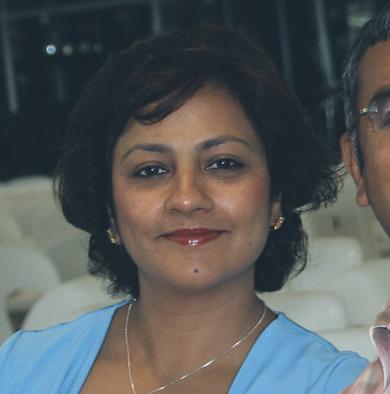
Of course versions of it are quite ‘everyday’, in northern India at least, and outside of India it is one of those things people easily associate with the country.
Naans are known to have been served at Mughal kitchens, and most people think they originated there, but the earliest recording of this form of bread goes back to 1300 AD. Of course the imperial cooks of the Mughal emperors honed their craft to produce many variations of the simple naan (think kheema naan, kashmiri naan with nuts and jaggery…). They also introduced the tandoor, basically a portable oven, to feed their large armies on the move.
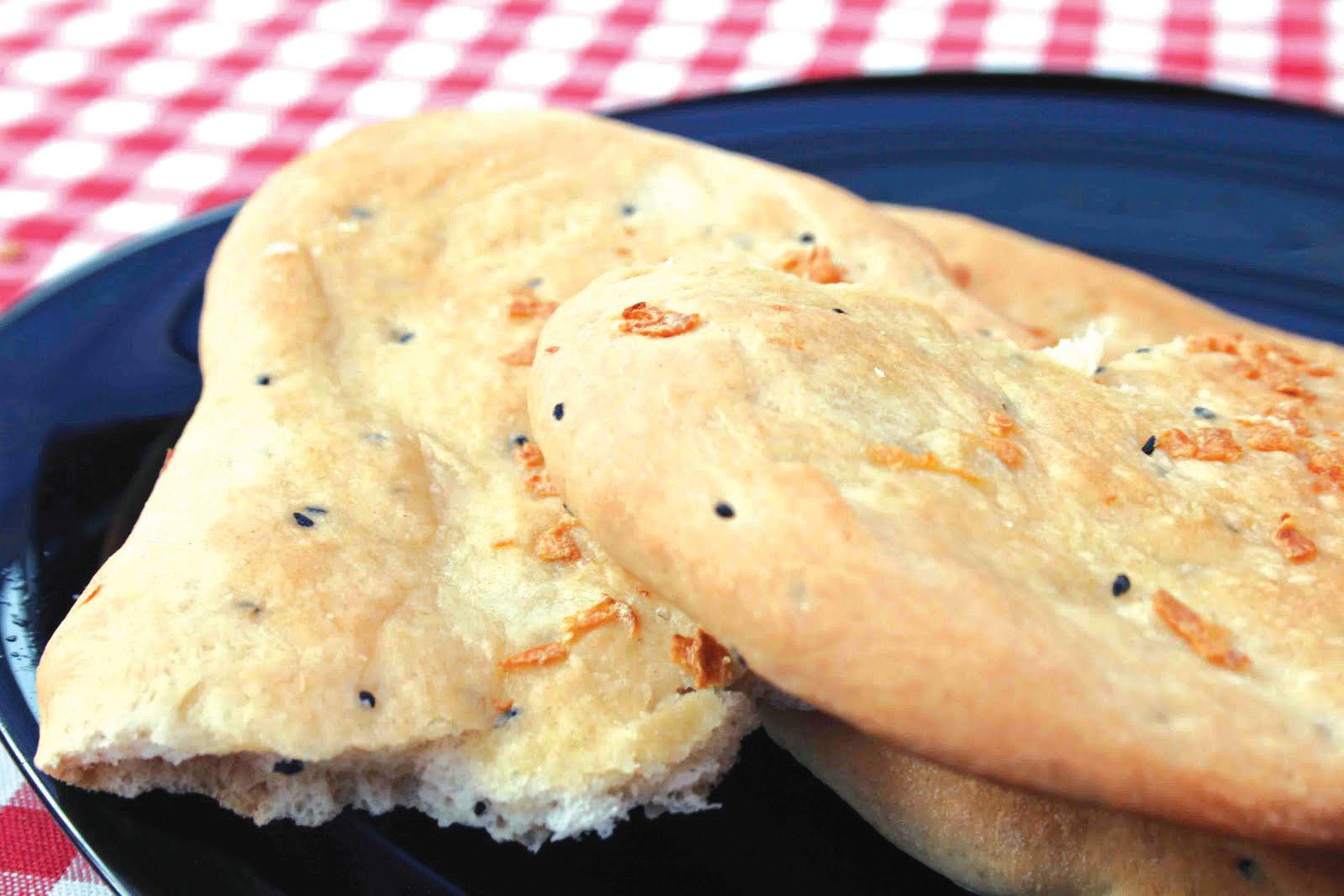
Back in India we rarely cooked naans at home, preferring the healthier unleavened version tandoori roti, made of wholemeal flour and cooked fresh for us by the friendly
neighbourhood tandoorwallah.
But when I moved to Australia, a close friend Madhumeet Chaney introduced me to my first homemade naans. Brand new brides, we followed the recipe religiously in her kitchen, and served up beautifully puffed naans to our husbands. (The boys cooked the Murgh Makhani).
Here’s Madhumeet’s naan recipe, which I have dug out from my drawer full of Indian recipes - collected from girlfriends and female relatives over the years. Keeping them coming, girls!
Naan
3 ½ cups plain flour
1 sachet dried yeast
¾ cup lukewarm water
3 tsp sugar
¼ cup yoghurt
¼ cup milk
1 egg, beaten
¼ cup melted ghee or butter
2 tsp salt
2 tbsp nigella (kalaunji) seeds
Pour ¼ cup water in a warm bowl, and sprinkle yeast over. Add 1 tsp sugar, stir, then leave in a warm place for ten minutes or until it starts to froth. Stir yoghurt, then mix with the rest of the sugar, the remaining ½ cup lukewarm water, egg, melted ghee or butter and salt. Stir in the yeast mixture. Put 2 cups flour into a bowl, make a well in the centre and pour in liquid mixture, beating well with a wooden spoon until it is a smooth batter. Add remaining flour a little at a time and when it gets too stiff to use the spoon, knead with the hands till a stiff dough is formed. Shape dough into a ball, let it rest on board while preparing bowl. Heat bowl by running warm water into it and leaving for a few minutes. Dry bowl well, grease, then put dough in bowl and then turn it over so top is greased. Cover with wet cloth and leave in a warm place until dough it doubles in size and a finger pushed into it leaves an impression. Punch dough down and divide into 8 balls. Leave to rest ten minutes.
Preheat grill.
Pat dough into circles, keeping centres thin and edges thick. Then pull one end outwards, making a teardrop shape. Each should be a handspan long, and little more than half as wide at the base. Brush with milk and sprinkle with nigella seeds. Preheat ungreased baking trays and lay out naans. Cook 5 to 6 minutes or until golden and puffed.
76 <> OCTOBER (1) 2010 INDIAN LINK
www.indianlink.com.au FOOD
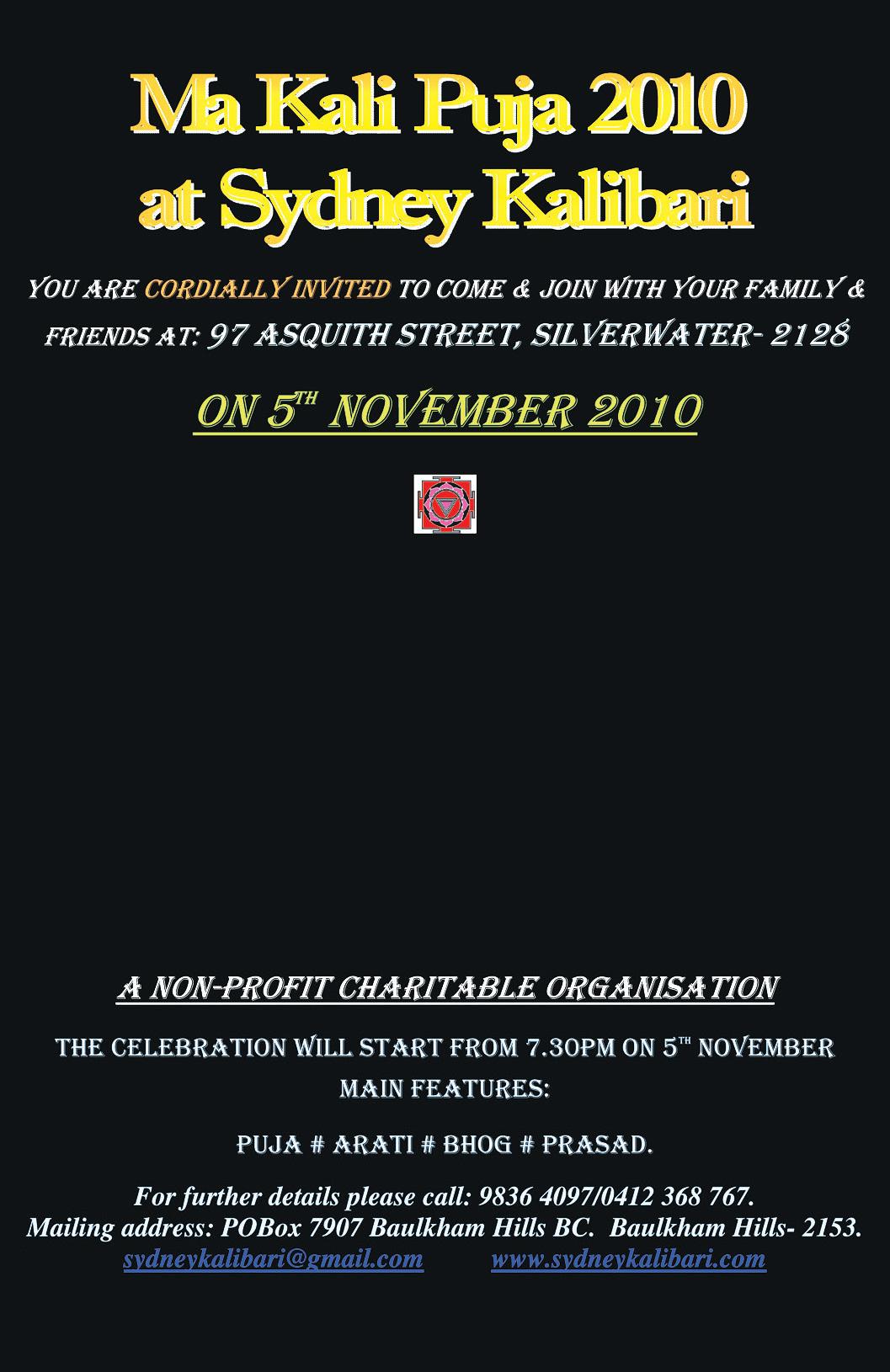
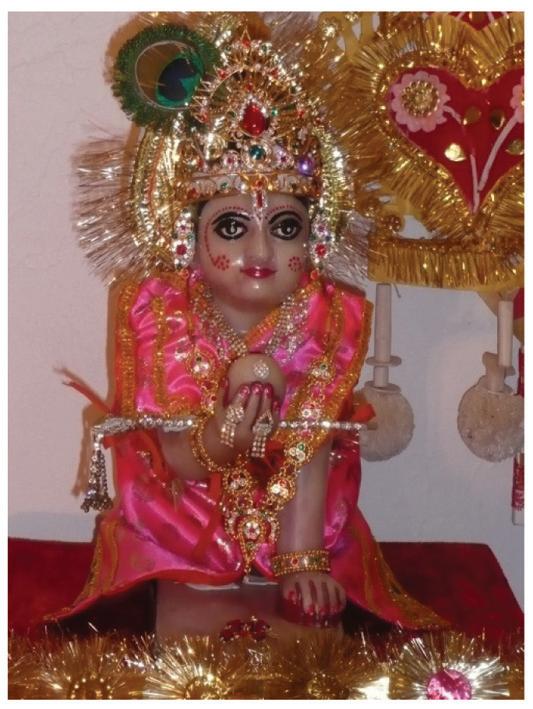

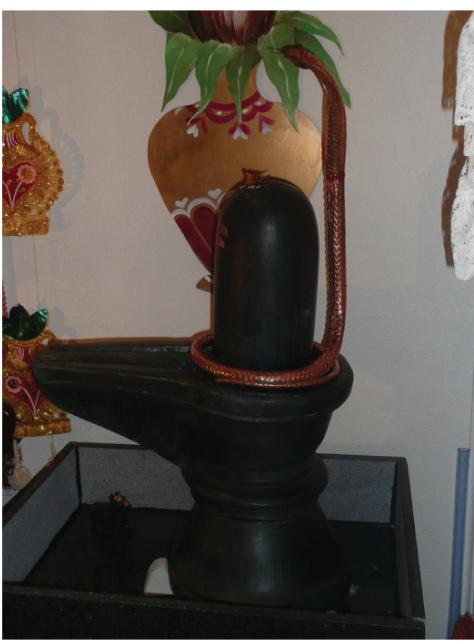


OCTOBER (1) 2010 <> 77 NATIONAL EDITION TEMPLE OPENING HOURS: TUESDAY: 5 - 7.30 PM SATURDAY: 11 – 4 PM SUNDAY: 11 – 4 PM
Chums in corruption
The lure of personal gain can prove stronger than the ties of friendship, as the protagonist discovers
BY RANI JHALA
The folded sheet of paper slid across the marbled counter, pushed by one man to another. The darkened corner of the bar where they sat was robed in silence. Julian looked at the sheet almost fearfully, as if it foretold ill tidings.
“Go on, you will be pleased” the voice broke into his daze.
Julian looked up at Thomas Anthony. His classmate, one time colleague and very good friend.
“I can’t, it is not right!” Julian replied, still not moving towards the sheet, though his eyes were tempted by its silent call.
“I’m not asking you to throw your case. I’m just asking for a bit more time,” said Thomas.
“It’s my client’s inheritance,” retorted Julian. It is only a question of probating the registered will. Your client has no leg to stand on. He knows that”.

“Julian, your client can have her victory. All my client is asking is for enough time in which to dispose off two plots of land. That’s all. Your client can have her share and my client can have the two properties that he needs to sell urgently. Like you, he has his daughter’s wedding coming up. And his wife has cancer,” answered Thomas.
Julian hesitated. He was not going to change the outcome, only delaying the process. And besides …
“Julian, you need the money too,” urged Thomas. Didn’t you mention that your daughter’s wedding was coming up and that finance was becoming an issue?
Give her the wedding you want her to have. There is more than enough in there to cover the cost. At least look at it”.
Julian hesitatingly reached for the sheet and then simply stared. The substantial amount written on the sheet was unbelievable. Not only would he be able to cover his daughter’s wedding, but he would not have to worry about expenses for the rest of the year. The temptation however, brought with it apprehension.
“Let me think about it. My career could depend on it. If anyone ever knew…”

“Who’s to know?” asked Thomas. “There’s only the two of us. That is a cash cheque untraceable to you. And if ever the query is raised, it’s my cheque and I’m returning the money I borrowed from you. In fact,
I’ve even attached a letter saying that I’m repaying my debt as a safeguard. Look, my client is returning this weekend and he needs to ‘seal the deal’, so to speak. What do you say?”
“One month, that is all I can give and then I will have to probate the will. My client’s mother left that responsibility in my hands. I can’t let my client down either. Do you understand?”
“Absolutely! Most likely we won’t even need the month. As soon as the sale is finalized, I will let you know. I promise!” said Thomas.
Julian took the cheque and Thomas accepted the victory. As soon as Julian left, Thomas turned to look up at a mirrored frame hanging on the wall. There in its reflection he met the eyes of his client. Seated at the far end of the room, a glass of Scotch in his hand and a grin plastered across his face, the man knew that he had met with success. He had seen Julian slide the cheque into his own pocket. Thomas did not have to tell him that the deed was done.
Three weeks later, Julian got off the phone. He had just assured his client that all the paperwork was ready, and he was going to probate the will. He had delayed the lodgment on the pretext that a new ruling was coming up which would save his client a considerable amount in fees and since they had the registered will, he had assured his client that there was no need to hurry.
He would seek Thomas out at the courts during his break and remind him that the month was ending.
Two hours later, he spotted Thomas heading towards his car in a rush. Thomas seemed a bit worried.
“Listen, I was going to call you. I don’t know how to tell you this. There has been a change of plans. Apparently Jenny left a will bequeathing her entire estate to my client’s wife, which she has already probated. I’m sorry, I really did not know! I thought when they planned to sell the land, and that is all they intended. I had no idea of this move,” said Thomas.
“What will? My client’s mother did not even like her daughter-in-law. I knew Jenny Bedah personally. She would never do that!” said Julian angrily.
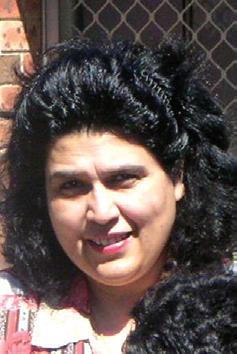
“I have seen the will. It’s a true copy,” said Thomas.
“No, my client will contest it,” Julian said, but he was shaken.
“It will be a hard fight,” replied Thomas.
“At least it will be an honest one,” Julian retorted. Thomas went still.
“This is just between you and me. I was not there, but, apparently my client’s family forced the old lady to sign this will. Her own son and grandson held her hand. I will let you to guess the rest,” he admitted.
“If you knew this, why didn’t you warn me?”
“My client pays my bills. You know how it works. If you say anything I will deny this conversation ever took place,” said Thomas belligerently.
“Yes you’re right, I know how it works. We play these games on a daily basis, I just didn’t know that my friend would choose to play as well!” said Julian bitterly. “Believe me, I did not fool you!” shouted Thomas.
“No, you screwed me!” Julian yelled back “Hang on, mate! I was not the one who took the cheque.”

Julian looked at Thomas. There was nothing left to say, because Thomas was right. What is it that the law says?
The one who offers the bribe is less culpable than the one who accepts it.
Julian simply walked away. Had it been any other client, he would have applauded the trick, but Jenny had been his Godmother. And he had let her down.
What Thomas had said was true. He could not and would not deny it. He had taken that cheque. But he had not cashed it and it was time to cash it now. Let Thomas explain to his client how the extra digits got added onto the figure. After all, the supporting letter did not state how much Thomas owed and how much of it he was repaying off. And after his dirty little trick, Thomas owed him hell of a lot!
Julian had made his client’s fight harder but he had not ended it, and a fight remains a fight until it ends!
78 <> OCTOBER (1) 2010 INDIAN LINK
Not only would he be able to cover his daughter’s wedding, but he would not have to worry about expenses for the rest of the year
www.indianlink.com.au FICTION
Returns fr $69* At WENTWORTHVILLE MALL Shop No 10A (Opp. Franklins), 42-44 Dunmore St. Prepared by Qualified, Experienced, Professional CPA Accountant and Registered Tax Agent. Electronic Lodgement - Fast Maximum Legal Refund. We specialise in Rental Properties and Small Businesses. Open Sundays and After Hours by Appointment. RELIABLE - AFFORDABLE - FRIENDLY RAM Accounting Financial & Taxation Services Call Jay Srinivas on 9639 9369 - 0415 104 690 *Conditions apply. Not to be combined with other discount offer. FOR SALE Free standing cottage on converted for building land in Whitefield ,Bangalore.. Size of plot 112 x 50 ft. Address: 263 Borewell Road Whitefield . Price Rs 4,000 per Sq foot negotiable. Cottage 600 sq ft. Living Room. Bedroom, Kitchen, bathroom, Electrical connection, telephone ,presently occupied by an American. Vacant possession assured on registration of sale. Quiet locality with trees land greenery. 10 mins walk from Whitefield Main road and shopping centre and 5 mins from Palm Meadows. Easy access to buses ,market, P Office, banks etc. Surrounded by Expatriates and NRIs Contact Details Paul/Diana Roberts, Sydney 02 9639 2935 or 0412 636 669 Harry/Joan Roberts Tel +91-80-2845 3537
Tax
NOT TO BE MISSED

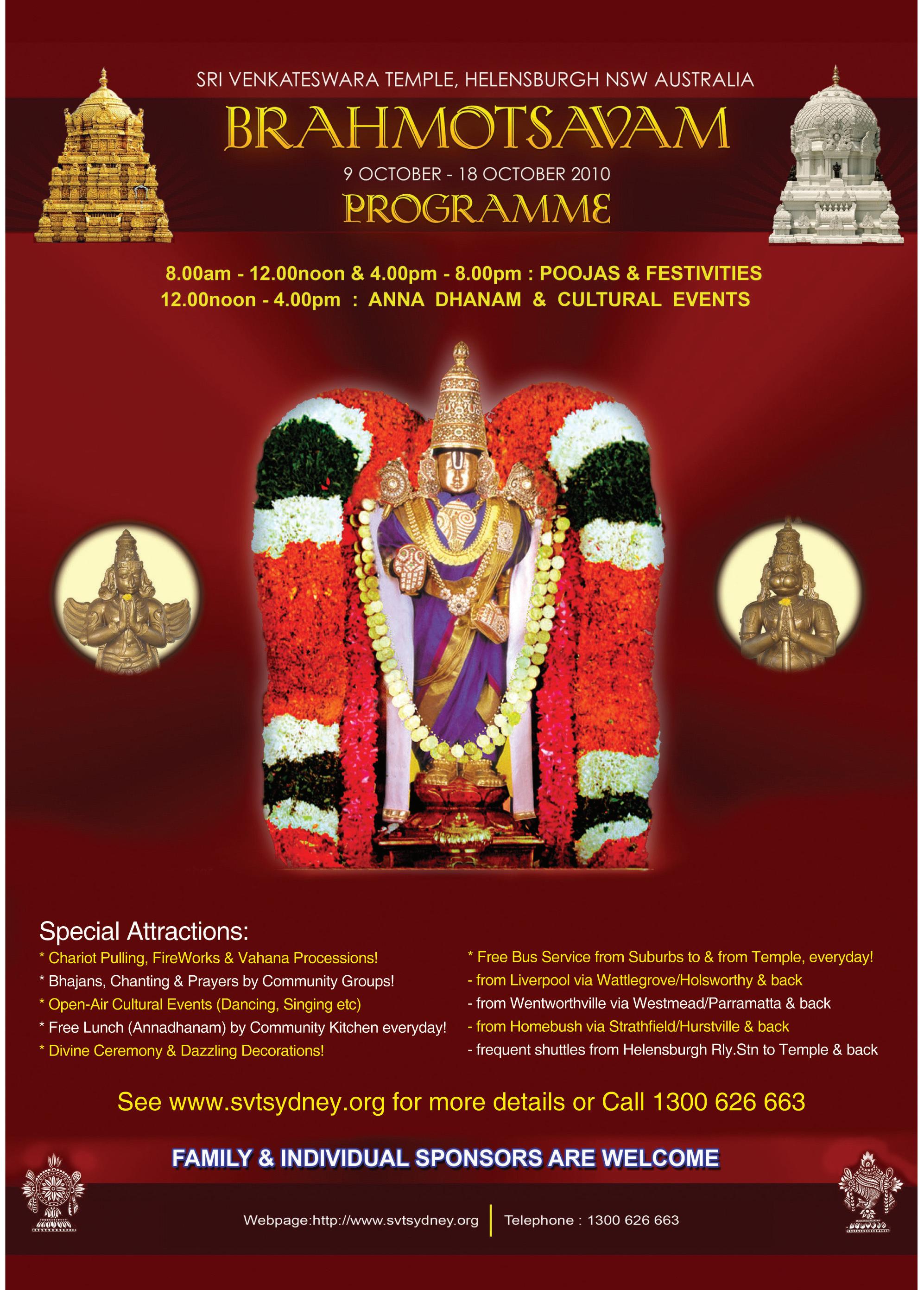
OCTOBER (1) 2010 <> 79 NATIONAL EDITION
Matrimonials
SEEKING BRIDES
Match for Melbourne resident never married Arora boy, self employed, earning good money, 30-08-1977, 5’5”, smart features, fair colour, open minded. Caste no bar. Girl’s merit main consideration. Respond with photo, education and professional details to email: sachdevasunil30@gmail.com M; 0401 408 211
Boy is in Chandigarh, India for next 10 days.
Indian man, university educated Government occupation, mid 40s, seeking honest Indian /Fiji Indian lady for marriage. Please call 0404 263 400 or email tamavu@hotmail.com
Gursikh male 25 years Physiotherapist, Australian citizen of Sydney, 6 feet, slim, healthy, happy life style of Khatri background but with an open mind seeks 20-24 years, good natured, healthy, honest match. Truthful replies only to greenkochia@gmail.com
Match for Punjabi Sarswat Brahmin male, March 1978 born, 5’6”, fair, handsome, fit build, Indian born, Australian educated, well settled here for 14 years. Blend of Indian and Western culture, working in reputed global company, good position. Family well settled in Chandigarh/Canada, own properties. Prefer girl already in Australia, professionally qualified, caste no bar. Email ausmatrimony2010@hotmail.com
Australian citizen, Gujarati/Patel boy, age 29 years, divorced within 3 months of marriage, IT professional with permanent job, seeks Indian girl. Student/ work visa holder welcome. Call Kesh/ Sarla Patel (parents) on 02 9896-2248 / 0401 548 194 or e-mail patelkes@gmail.com
Australian citizen Aggarwal/Punjabi Hindu boy, 5’8” tall, 39 years old (looks 30), divorced, very good looking, pleasant personality, generous, eggetarian, very good in reputed job. Seeks good looking, caring, sincere and family oriented girl with GSOH and DTE. Issueless divorcee or widow also accepted. Contact with full bio-data and photo to : yankee1_2009@hotmail.com
Seeking a suitable bride for Australian citizen (South-Indian vegetarian with clean habits) working in IT industry in Sydney, mid-40s, caring, loving in nature. Looking for bride with similar qualities and habits. Contact for further discussion indoaussie@hotmail.co.uk, ksg667@yahoo.com
Seeking a bride for a divorced Iyer boy (no issues), Srivatsa Gothram, Revathy Nakshatram, aged 29. Boy is an Australian citizen and currently working as an executive for an Australian company in Manila. Parents are doctors and settled in Chennai. Sister is married and settled in Sydney.
Please contact Jayasree on 0433 032 146 or email jgopal77@yahoo.com for any further details or enquiries.

Match for 30-year-old, 6’ Hindu boy, 23 years in Australia, IT professional, family oriented, friendly, caring and sincere personality. Contact with biodata and recent photograph to matrim_2010@yahoo.com.au
Seeking a good looking, caring, sincere and family oriented, responsible girl for Melbourne resident Arora boy. Permanent Resident, October 1971, 5’7”, handsome, fair colour, spiritual/open minded. Caste no bar. Please respond with photo, education and professional details to email: sndpsachdeva@yahoo.com, M: 04 3224 9651
Seeking very slim, fair, professional Bengali girl, prefer Kayastha, for highly successful software engineer, 29 years, 5’7”, slim, fair, working in Sydney. Email photo, CV including height and weight: sen3@y7mail.com
SEEKING GROOMS
Seeking match for Sikh girl, 30 years old, 5’2”, very beautiful girl, born and raised in New Delhi with Indian values, from a very well settled family in India. Eldest sister married and well settled in Sydney. Highly qualified with couple of masters degrees, completed CA from ICWAI and experienced in working with a top prestigious firm. Seeking professional, well-educated match with good family background. Early marriage. Caste no bar. Contact: 0403 421 720 or email: kitty.80@live.com
Jyotish Samarat Swami Sukarnath


For expert advise solution to your problems like love relationships, any husband wife domestic problems, Mahavashikaran family dispute. Do you want to control anybody? You can get your complete solution for any business problem, job problems or control the enemy. Solve all your problems immediately with guaranteed result.
Try your luck
Just call guruji +91-9878936789 - 8146324764
Sant Sahib Darbar Uttrakasi Varansi India
Seeking alliance for 26-year-old, 5’3”, good looking Punjabi Manglik Brahmin girl with strong family values. Boy must be professionally qualified with strong family values. Girl in Sydney till February visiting her sister. Cast no bar. Please email your profile and photo to rajkundra@yahoo.com.
Seeking respectable, presentable, professionally qualified and well groomed 29 - 32 years, Hindu match for 1981 born, professional, slim, attractive Indian girl, currently visiting aunt in Sydney. Please email details and recent photos to Nidhi Sharmannsharma8@gmail.com
Seeking well settled Australian citizen/ PR match for slim, beautiful and intelligent Mair Rajput Goldsmith girl.7 bands in IELTS and has done nursing in India. Well mannered with strong family values Call on 0421 229 034, 0412 017 992, 91 9888 718 900.
Seeking alliance for a 35-year-old, 5.85” Hindu Punjabi Khantri boy, never married, working in Yes Optus Adelaide. Holding regional residency. Looking for an educated girl with family values, of any visa, prefer early marriage. Please email at rupeshkhanna@rediffmail.com or ring 0425 136 844.
Professional match sought for South Indian brahmin girl, born and educated in Australia. 36 years, 5’4” B.E. Masters in Social Science, well employed, vegetarian, slim and fair. Family well settled in Australia. Please reply with details to Email: dashami2010@gmail.com
Alliance invited from professionals for Kannada Brahmin girl, 43 years, 5 ’4” B.E., MBA (Melbourne Uni), vegetarian, slim and fair. Married briefly and divorced with no children. Well employed and settled in Australia. Please reply with details to Email: raosn@bigpond.com
North Indian Punjabi family seeking professional, well settled match for 29/152 cm very fair, charming daughter working in IT, innocent divorcee. Family well settled in Australia. Please respond with details and photo to Sydney81@live.com.au
Seeking match for Sikh, 24-year-old, 5’6”, very beautiful girl, born and raised in Sydney with Indian values. She has done Bachelors and Masters in Commerce from UNSW - and successfully working now in a top prestigious firm. Please send photo and details to matrimony6789@gmail.com
Seeking match for Punjabi Ramgarhia, beautiful, slim, young looking, 32-year-old girl, with Permanent Residency of Australia. The preference is for a teetotaller, good natured (age 28-34) well settled, Sikh boy. Email the biodata: parampreet_dp@yahoo.com for further proceeding.
Seeking a suitable match for Hindu/ Punjabi girl, 28 years (Aust citizen), 5’8”, never married, and working in Sydney. Seeking a simple, broadminded and family oriented person, preferably settled in Sydney, caste no bar. Send details and recent photo at madhumarch@hotmail.com; or mob 0421 566 715.
Alliance invited for a highly educated Jat Sikh girl, Australian citizen, Sydney based, permanent job in accounting, reputed family 28 years. Fair, slim with traditional values. Looking for an Australian citizen or PR, clean shaven, well educated and well settled boy from a decent Jat Sikh family. Please contact with bio data and photo via email address provided below. replyus2010@gmail.com.
Family seeking suitable match for an attractive, 23 year old, 5’ 2’’ tall, slim built, North Indian girl with strong values. She is highly intelligent and is a tax consultant at a high profile firm in Sydney. The preference is for a suitably employed, well settled boy (age: 2527), brought up in Australia, USA or England. Please send biodata and a recent photograph to OZ7654@gmail.com.
80 <> OCTOBER (1) 2010 INDIAN LINK

OCTOBER (1) 2010 <> 81 NATIONAL EDITION
ARIES March 21st April 19th
Tarot ‘n’ You Tarot ‘n’ You
Tarot predictions for February 2010


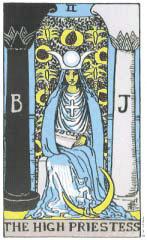
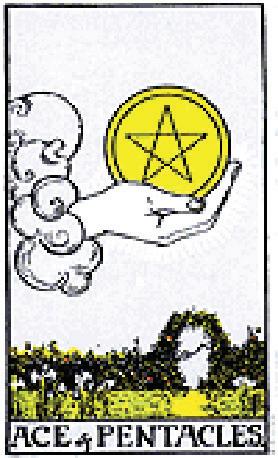





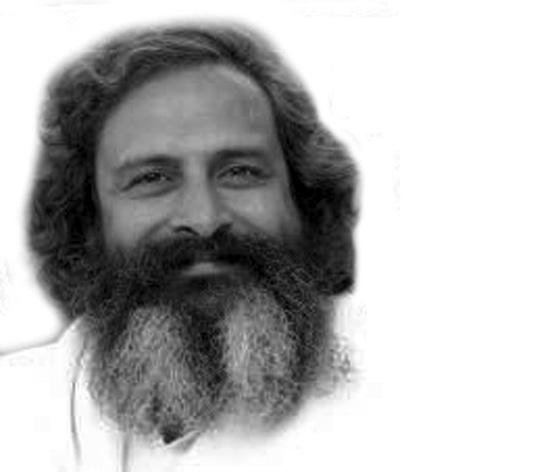
Tarot predictions for October 2010 Tarot




This is a very busy time for you, dear Aries. You are finalising many different plans. Work is very much a focus for you right now and you are all motivated to move ahead in top gear. Your need for financial gains is very strong now. You are also looking at ways to improve your health and fitness by either taking up a sport or looking at ways to spiritually align your body, mind and spirit.
TAURUS April 20th May 20th
This is a great time for you to make some daring decisions, dear Taurus. You have lately been thinking about the past - perhaps something or someone that caused you pain. You also seem very concerned about little children this month, either your own or your future children. Healthwise, you need to keep clear of over indulging. There seem to be too many parties and meetings that are causing you to have late nights and an improper diet.
GEMINI May 21st June 20th
What a busy month you have in store, dear Gemini. You are expanding in every way - work, relationships, even acquisitions! There could be a child on the way… if you are not planning a child, take precautions. There is a vibrant, happy feel about you, Gemini, and you are going to be feeling very pretty good about life. There is an indication though that you will be worried about the health of a senior person in your circle.
CANCER June 21st July 22nd
There is a great feeling of independence around you this month, dear Cancerian. You may purchase a new car or look into purchasing property or land. You will also distance yourself from people who are causing you stress and upset. You are very much your own person this month. You have plans to travel but these plans may be delayed until the next couple of months. Watch out for misunderstandings with a younger person who is stubborn and argumentative right now
LEO 23rd July 22nd August
An exciting month ahead. Communication is your strongpoint. Do not let your ego or arrogance get the better of you when dealing with people. This is a great time to start writing, even your own journal. Meetings will go particularly well as your oral skills are at their best this month, so make the most of that inherent magnetism! Still, relationships could be strained this month - you could take some time out from a partnership to decide what you want. There will be many opportunities if you are single.
VIRGO July 23rd August 22nd

After a long period of delays, dear Virgo, you are now celebrating a new phase of success and celebrations. The universe is working with you this month and there are developments taking place now on projects that you had in mind but could not carry through. You were unable to focus, and/or lacked the energy. Now is a great time to start new projects, follow up old contacts and get back in to the swing of things.
By NANCY SOOD www.nancysood.com
LIBRA September 23rd October 22nd
This month you will be dealing with a lot of paperwork, dear Libra, and clearing your mind of burdens to do with tax, legacies and other matters that need your attention. You will be gaining financially as well, thanks to work finished well. You seem to be bringing in money from so many sources this month. You are like a dog with a bone - you will not give up until you have what you want. Put your best foot forward!
SCORPIO 23rd October 21st November
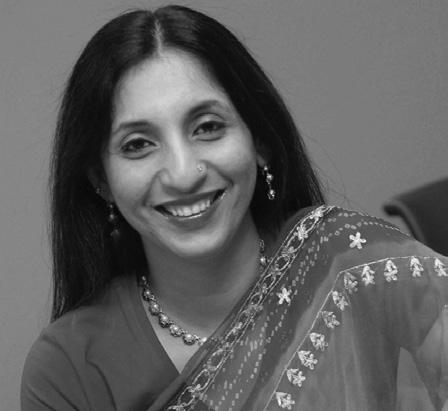
The focus for you this month, dear Scorpio, is to make sure you are doing everything to make life easier. You seem to have had a few upsets with people in authority and family members lately, where they have not been able to understand your motives. Now, you seem to have the drive and ambition to do well with your projects - and you certainly will succeed. There is praise and compliments coming your way from work as well as family.
SAGITTARIUS 22nd November 21st December
This is a great time for all kinds of increases, dear Sagittarius. There will be an increase in income, friends, social events and much more. You will need to put your seat belt on and tighten it securely as you will feel on top of the world. Romance will go well and you will be planning a surprise for your partner. If single, this is a time to meet that special person, perhaps at a social event. You will be asked to help a friend who is in financial strife.
CAPRICORN 22nd December 19th January
Dear Capricorn your life is going to take on a whole new turn, for the better. You have opportunities for gains in property, finance, recognition and fame. You have worked hard for these results and you are finally getting to the top of your mountain. Your focus right now is on your work and your success. Relationships will be pleasant and cordial but you will not be putting too much energy into deep encounters right now as you have your mind on other things and that is yourself and your growth.
AQUARIUS 20th January 18th February
What a month ahead, dear Aquarius… you have been suffering from a lack of energy lately as there has been a lot of pressure on you from work (or if unemployed, looking for work). You will feel a surge of energy and happiness as there are opportunities around you that will make you feel on top of the world. You have a great gift this month to achieve results - if going for meetings and interviews you will be able to impress appropriately. You will feel particularly close to your family this month, perhaps even have a get-together of some kind.
PISCES 19th February 20th March
An interesting time ahead for you, dear Pisces. Tarot foresees an increase of expenses. You could have neglected your car or other possessions which now need attention. Or you could undertake some renovations around the house. Small things will irritate you this month. Relationships may go through some friction. You seem to be dreaming about your ambitions and may not be putting much effort into your home life. Things will take a turn for the better but your partner may show you their upset in their own little way
82 <> OCTOBER (1) 2010 INDIAN LINK Budget Removalist 0413 709 731 KNOW THYSELF AS SOUL For more information... Contact Sita 0408 880 155 www.santmat.net.au Know Thyself As Soul Foundation is a not for proft association incorporated in NSW Sant Mat is a practical spiritual path based on meditation, ethical living, service to others & love for all creation. Its goal is to enable the soul to return & merge into its source; the purpose of human life described by mystics of all traditions. Discipline & dedication are essential, as is the help of a competent living master. Entry is via a preparation program. There is no charge at any stage.
STARSFORETELL www.indianlink.com.au





OCTOBER (1) 2010 <> 83 NATIONAL EDITION Is Sales running in your veins ? Sabi Foods is looking for a SALES EXECUTIVE - Sydney • Must be an original thinker • Must have a quick response to problems • Open to explore new ideas • Be a persuasive communicator • Needs to speak fluent Hindi If you want to grow a career with Australia's No. 1 Indian Food manufacturer & wholesaler then we want you for this full time role. If interested send your resume to saleshumanresource@gmail.com or Fax:(03) 9767 6677 You are free to call on 0423 621 093 for a confidential discussion about this role Are You Full Of Passion & Heart? 11A, 7 HOYLE AV, CASTLE HILL 2154 www.ezyworldtravel.com *Conditions apply subject to availibility at the time of booking. INDIA FROM $1095* INCLUDING TAXES License No: 2TA07303 MOST COMPETITIVE PRICES, UNBEATABLE SERVICE BETTER THEN THE REST
BUZZThe
a nonviolent kind of dude
John Abraham
It was an unusual sight.
Bollywood hunk John Abraham, all bespectacled and in his best nerdy avatar, distributing copies of Mahatma Gandhi’s autobiography My Experiments With Truth at a Mumbai book store on Oct 2, Gandhi’s birthday.
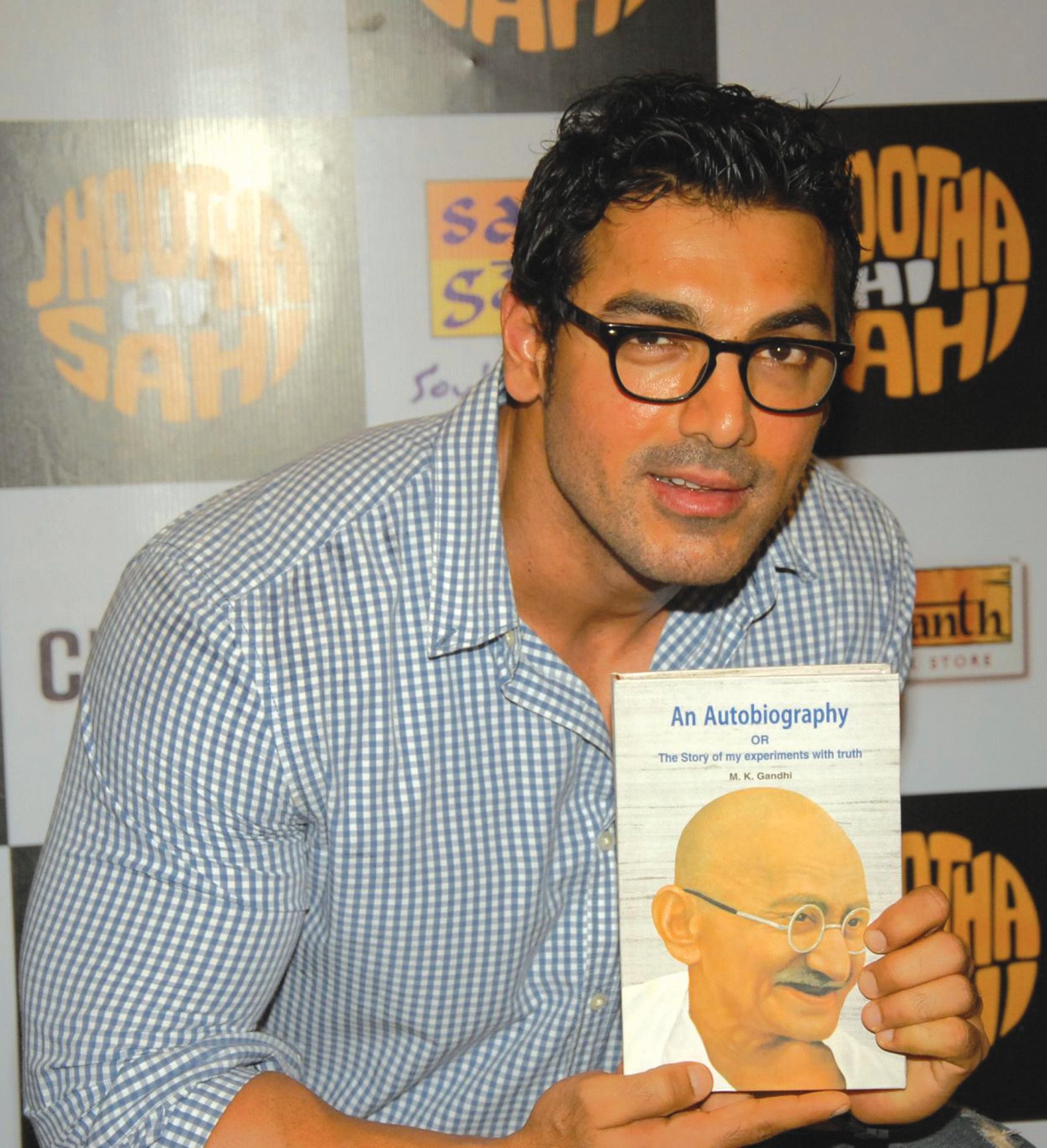
Where’s the sleeveless leather jacket, man, and the motorbike? The beard, the unkempt hair, that has the women all swooning over you?
“I’m a very non-violent man,” John said (or was this his twin?) “I respect Gandhiji a lot and totally believe in his ideology of non-violence”.
It was a promotional set-up for the actor’s forthcoming film Jhootha Hi Sahi where he plays the role of a bookstore owner.
And what does his hot girlfriend Bipasha think of his geek look?
“She’s quite happy, really; she thinks it’s unique and fresh,” John said. “She says that if there is any director who can break me down physically and in terms of a character on screen, it’s Abbas Tyrewalla!”
The film, slated to hit screens Oct 15, is about a suicidal woman whose final call mistakenly connects her to a man who gives her something to live for.
Salim Khan on why son Salman is still single
Why is Salman Khan still single?
Dad Salim Khan has the answer to the question that has vexed so many of his fans – he’s a mama’s boy. Salman, he says, mostly falls for actresses who can’t pamper him like his mother.
“Now that is not possible,” Salim told trade analyst Komal Nahta on the TV show Bollywood Business
“A woman who has just started her career can’t be doing stuff like preparing meals, washing clothes, preparing kids and yet lead the hectic life of a movie star! This expectation can’t be met by a woman who has just started her film career…not even if she tries,” reasoned the 74-year-old, who made a rocking scriptwriting team with Javed Akhtar.
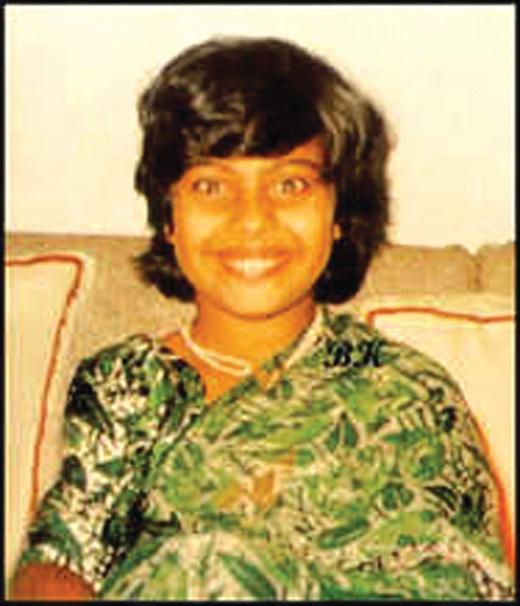
Salman, Salim’s eldest son, has been
Sangeeta Bijlani and Aishwarya Rai.
The 44-year-old is said to have split from his latest girlfriend, actress Katrina Kaif. Salim dodged the question, saying: “I can’t say if Katrina is in Salman’s life... If a marriage decision stretches for so long, it usually does not happen. It means that the person is not 100 percent sure to get into it…that’s why the delay.”
According to Salim, Salman suffers heartbreaks because for most of his girls the prime motive is stardom.
“Whenever girls have come into Salman’s life, they are looking to be a movie star. So settling down is the last thing on their minds. So the relationships reach a saturation point and then fizzle out.”
Whatever Dad may say, we think Sallu simply likes to be footloose and fancy free…
GUESS WHO
84 <> OCTOBER (1) 2010 INDIAN LINK
ABHILASHA SENGUPTA brings us up-to-date on what’s hot and happening in Bollywood
?
(Find the answer under Caption Contest)
ENTERTAINMENT
This bubbly girl went on to become one of Bollywood’s most successful actresses
I’m
JOHN ABRAHAM
Ash is “smashing”: Big B
Bollywood megastar Amitabh Bachchan is quite impressed with his daughter-in-law Aishwarya Rai’s looks in Robot her on-screen presence as “smashing”. Director Shankar’s bilingual film ( in Hindi and Endhiran in Tamil), which has Rajnikanth in the male lead, opened to rave reviews.

“Aishwarya looked smashing and danced like she had never danced before. Rajni… what can one say for this man. He is just unbelievable. The film is a roller-coaster ride of fun and ecstasy and events of mammoth proportions,” Amitabh posted on his blog www.bigb.bigadda.com.
He saw the movie at a special screening organised by Rajnikanth in Mumbai for the Hindi film fraternity.
The sci-fi thriller, apparently made at a whopping budget of Rs.175 crore ($38 million), boasts of a lot of special effects and Amitabh is in awe of it. “An incredible experience it was and I sincerely urge all… to go see it,” he added.
Anything for bums on seats, really.
Vidya Balan in ABCL’s next?
Vidya Balan is considered a lucky mascot for the Bachchans’ production house and rumours are that she may feature in their next venture too.
AB Corp Ltd’s Paa, which starred Vidya along with Amitabh and Abhishek Bachchan, not only received rave reviews, but also won four National Awards - best actor for Big B, best supporting actress for Arundhati Nag, best make up artist award for Christein Tinsley and Dominie Till, and best Hindi film.
Vidya is also said to be one of the favourites of Jaya Bachchan. All we can say is, you go girl!
When Ajay Devgn kicked Paresh Rawal
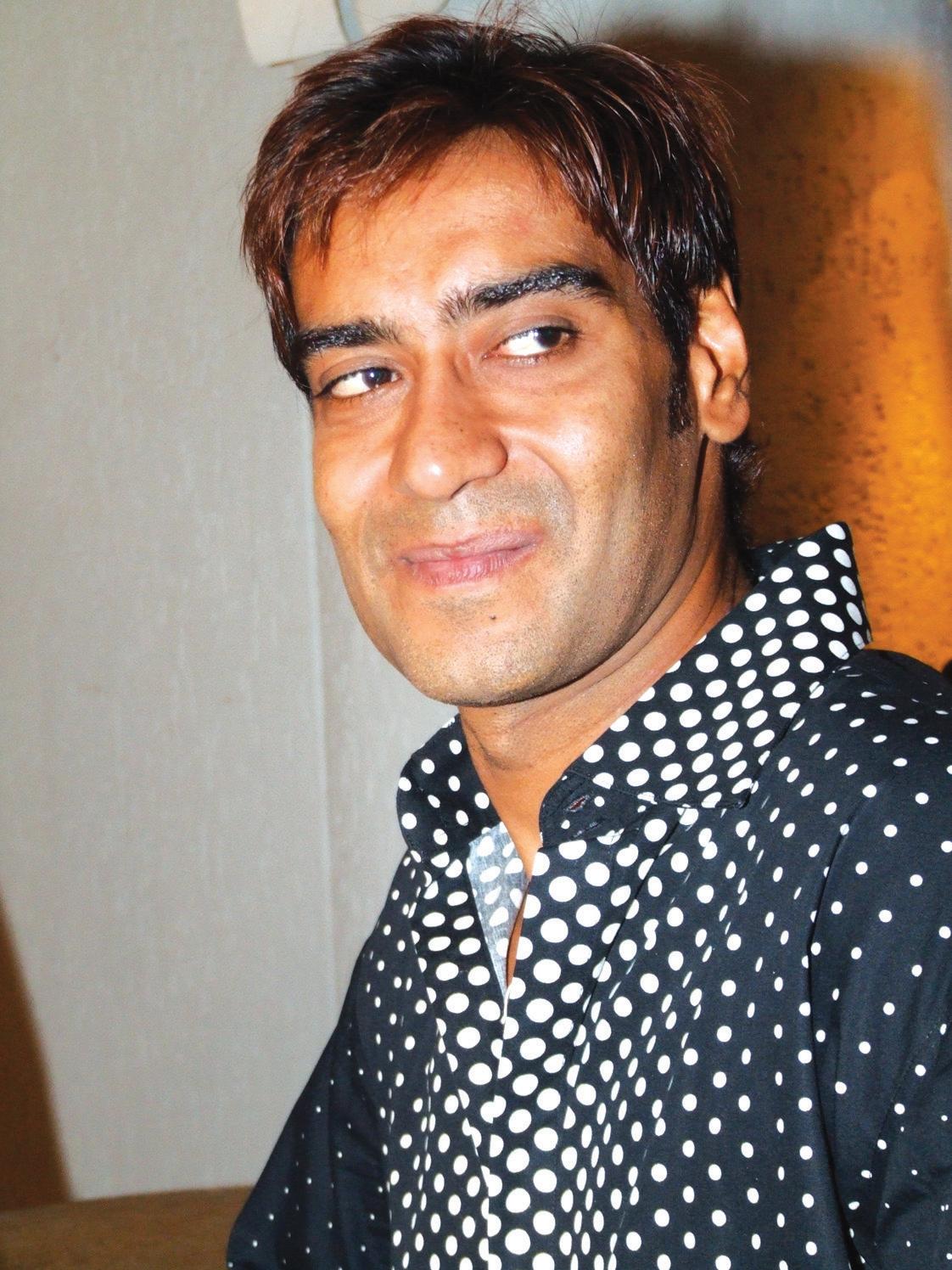

It seems Ajay Devgn took his role in Aakrosh too seriously and ended up kicking co-star Paresh Rawal.
Based on honour killing, Aakrosh will see Paresh Rawal in the role of a cop. The film also stars Bipasha Basu and Akshaye Khanna.
While shooting, there was a scene which required Ajay to kick Paresh, who was seated on a revolving chair. But as the camera rolled, Ajay got in character and hit Paresh so hard that he fell down. Paresh gasped in pain as Ajay profusely apologized.
Sounds a bit like a Govinda movie, doesn’t it?
Ranbir brought me back: Neetu Singh
She was a huge hit as an actor herself many years agop, but now in her second coming, she is giving all the credit to her heartthrob of a son Ranbir Kapoor.
Neetu Kapoor’s Do Dooni Chaar will be released shortly and marks her return to the screen after she gave up films for the sake of her family, retiring at the top.
Directed by Habib Faisal, Do Dooni Chaar has her actor husband Rishi Kapoor opposite her. The cute pair that sang those
youthful songs all those years ago, will not be more subdued this time round
ordinary middleclass housewife, and not just in a filmy way. Habib wanted me to grow my hair and colour it black, unvarnish my nails and wear only three sets of clothes - three saris for when my character steps out and three housecoats for when she is home - throughout the film. And not just that. Those six pieces of clothing had to look worn by the time I was ready to face the camera!”
So was it daunting facing the camera after the long gap?
“Ranbir helped me out. He showed me how to find my way into the character and then project it out on camera. He pointed out the best way to approach my role was to unwind, to let go. He showed me how to make friends with the camera”.
Hmmm, did you not know all that when you were a raging hit in the ‘70s, Neetu?
Neetu made a brief guest appearance in Love Aaj Kal recently.

Deepika is still fond of Ranbir...
Deepika Padukone and Ranbir
Kapoor may have gone their separate ways long long back, but the actress is very very fond of her ex-beau and is keen on working with him.
“Ranbir is someone I’m very fond of, I’m really looking forward to working with him because I think we have not worked enough together,” the 24-year-old actress said.
Deepika and Ranbir were last seen together in Bachna Ae Haseeno
The actress was present at an event to launch the bridal edition of the Marie Claire magazine where she is on the cover.
On her break up with Ranbir Kapoor and how she coped with it, the actress said, “I think everyone has a different way of dealing with it. Some people immerse themselves in work. I feel everyone has a certain strength within themselves to come out of any situation whether it’s a break up or anything else. So, as long as you believe in yourself, you can challenge
So what is the kind of guy Deepika would like to tie the knot with?
“He needs to be my friend most importantly, a great companion, someone with whom I can spend the rest of my life, someone I can make good conversations with and also someone who understands my silence as well.”
“He should accept me with all my flaws. So it’s not just about romance, it’s also about the layers of romance that one feels,” she said. So all you single guys out there, get going!
What’s the chitchat between Aish and Abhi?

What’s Shahrukh showing wife Gauri?
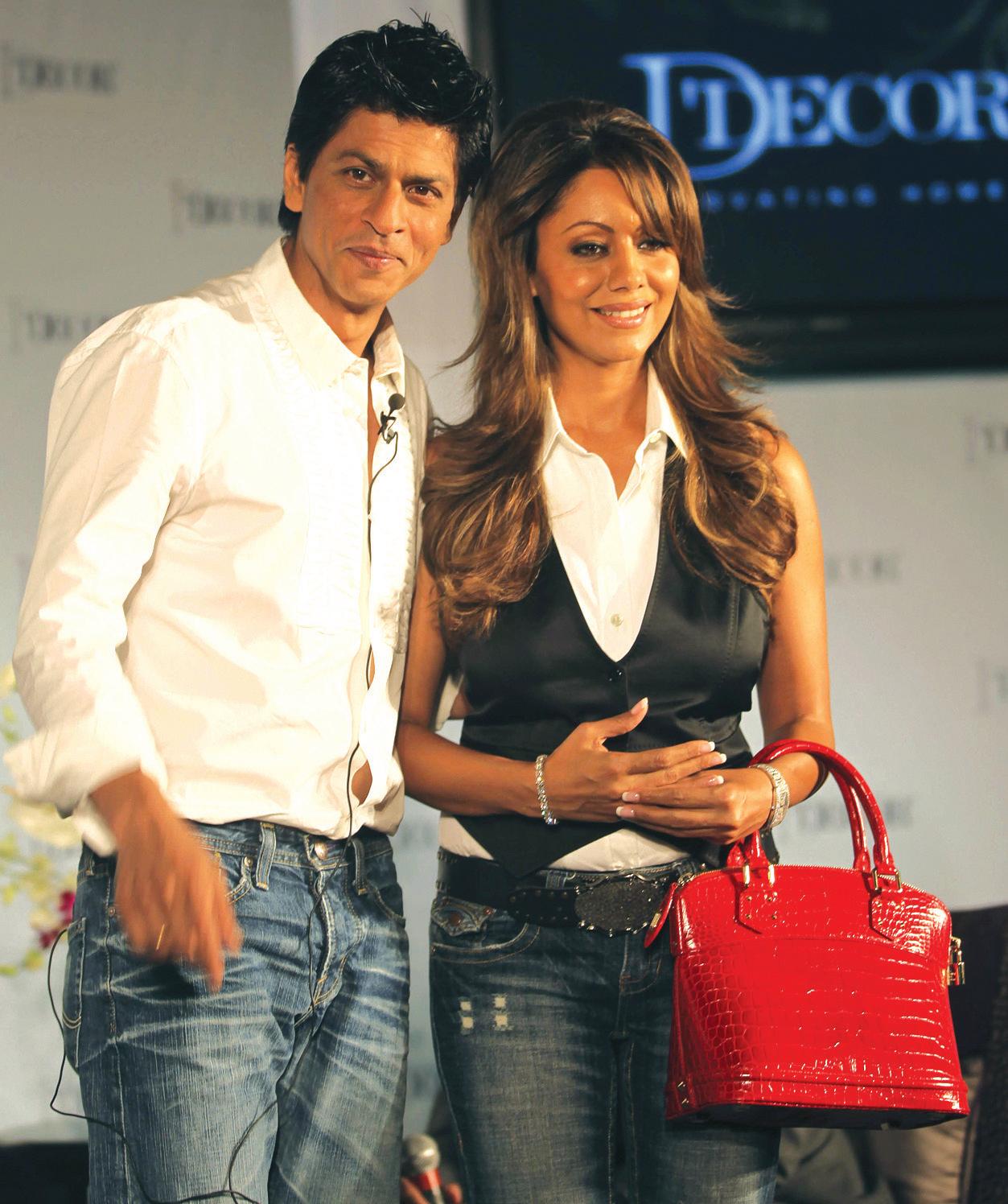
No, you don’t want this red bag, you’ve got plenty of bags in the 22 cupboards at home…. Here, look at this stuff instead….
Suneet Kaur Wentworthville NSW
Ashok wins a DVD of the new Hindi film WeAreFamily
OCTOBER (1) 2010 <> 85 NATIONAL EDITION
www.indianlink.com.au CAPTION CONTEST GUESS WHO :ANSWER Kajol
a surprise
Send in your responses to info@indianlink.com.au and win
prize
winning entry
Last issue Caption Contest
NEETU
SINGH KAPOOR
SALMAN KHAN WITH DAD SALIM
ASH IN ROBOT
AJAY DEVGN
Cine Talk
Rajnikanth scores again
Film: Robot
Cast: Rajnikanth, Aishwarya Rai, Danny Denzongpa

Director: S. Shankar
Those in the know are aware that ‘superstar’ Rajnikanth is perceived to be in the image of god. In Robot this perception is taken a step further as Rajni creates a robot - in his own image.
Robotics scientist Vashikaran (Rajni) creates a humanoid robot Chitthi (Rajni). After Chitthi’s inability to feel causes him to be rejected from inclusion in the Indian Army, Vashikaran tries to create feelings in him, and thanks to a freak of nature, succeeds. Only it causes problems, as Chitthi falls in love with Vashikaran’s fiancee Sana (Aishwarya Rai). As the creator and the creation are locked in a jealous battle against each other, the jealous robotics scientist Dr. Bohra plans to misuse Chitthi for wrong objectives.
Anyone who has seen a Rajnikanth film understands that often it is not the story that makes the film a success, but Rajni’s antics. There are plenty of them in the film. And, for once, his conception as a robot gives Rajni the logic, to lack logic.
There are gravity defying stunts, shooting with a finger, running
Floundering along the way
Film: AnjaanaAnjaani

Starring: Priyanka Chopra, Ranbir Kapoor, Zayed Khan
Directed by: Siddharth Anand
Romantic comedy Anjaana Anjaani moves in so many directions, you wonder what happened to those good old films where boy met girl… and they lived happily ever laughter.
Laughter, there’s plenty of it in Anjaana Anjaani. Raucous laughter, bitter laughter, silly laughter, goofy laughter… The couple Akash and Kiara are portrayed more like two beer-swigging buddies on a road trip through the USA (shot with shimmering restlessness by Ravi Chandran) than lovers staring at the moon and dreaming of the ever-after.
This is that 1940s Bette Davis-Clark Gable genre where love emerges from the verbal skirmish between two people thrown together by fate. There isn’t much plot on
horizontally at high speed on the side of a train, flying cars and bikes, corny but hilarious dialogues -- e.g. after grabbing and pointing scores of guns at the police, Rajni says “Happy Diwali” before firing a salvo of bullets; or when the robot is asked his address and gives his IP address! It’s not just god, the universe and its logic itself is recreated in the film.
Director Shankar who has a penchant for double image, multiple images and split images of his heroes returns this time with hundreds of images of Rajnikanth. The inspiration of Hollywood,
display here. Once we know that the two suicidal protagonists are together for the rest of the movie, the only mystery that remains is why such vibrant lives would want out.
The drama of death as defined by the rituals of daily living are rather elaborately, sometimes engagingly, other times tediously, mapped in the plotline which is slimmer than Priyanka Chopra’s waistline. Regrettably the dialogues are not always as savvy, sassy and seductive as they ought to be.
Many times you feel the dialogues are translated from the English rather than conceived in the spoken language. Then there are the songs. Sigh. Tediously carpeting the soundtrack of the second more-pointless half, Vishal-Shekhar’s music just seems to create a dimension to divert our attention from the two belligerent characters played by two very engaging actors who quite often seem to be inventing pretexts for their characters beyond those provided by the plot, character and the lines they mouth.
Priyanka Chopra, incontestably the most complete and watchable
most predominantly the Matrix trilogy (stunts are choreographed by Yuen Woo-ping of Matrix fame), The Mask, I Robot, and many Frankenstein movies are evident, but not overbearing.
Where Shankar scores is the ingenious conception of stunts. The allegedly ‘poorer’ cousin of Bollywood, the south Indian film industry, has been growing leaps and bounds in the special effects department. And with a little help from Hollywood, like in Robot, it soars.
Robot however, cannot boast of good music, so crucial for an Indian
actress of her generation, makes you forget the film’s obvious blemishes, mainly lengthy self-indulgent passages of pedestrian passion-play written in a tone that attempts to be flip but fails to grip. With every film Priyanka grows in stature as an actor even when the space offered is meager as in Kaminey.
Given a wall-to-wall character to perform in this film, she has so much fun digging into the crevices of the person she is required to create, you end up watching only the character and the actress, in that order.
With perfect timing in the comic scenes, skillfully and subtly seductive in the
film. A.R. Rahman’s decision to rely on robotic sounds, which we have heard close to three decades back in films like Robocop, fails to inspire. He could have at least conceptualised them more intelligently.
The Hindi dubbed version is saved by Swanand Kirkire’s translation that prevents the dialogues from becoming jarring like previous dubbings of South Indian films. Yet, he could not salvage the songs, whose gibberish lyrics are seemingly out of a time warp from films in the 1990s (remember the Prabhu Deva starrer Kadhalan again directed by Shankar with music composed by Rahman).
Aishwarya’s character is as conventional as expected. She’s the chaste love interest, the damsel in distress who has time and again to be saved from being raped, and who is nothing more than eye candy.
Two words begin with the letter ‘R’ and are synonymous: Religion and Rajnikanth. A third has now been added to cinema folklore, Robot. And with the largest number of prints ever for an Indian film and a global release, this sexagenarian actor might still enter world cinema folklore.
After all, Rajnikanth can make no mistakes.
bedroomy interludes and boisterous when in a drunken rage, Priyanka takes over the show from her first inebriated appearance on a bridge where she spots our hero while trying to jump to her death.
Ranbir Kapoor in comparison is surprisingly subdued. It’s partly to do with the nature of his character (an arrogant misguided soul with little control over his ego). But you suspect Ranbir just decided to sportingly play the backseat boy this time because in Priyanka he had finally met his match on screen.
Zayed Khan as Priyanka’s heart breaker gets little space. But he makes sensitive use of the meager playing-time.
With more support from the dialogues and an elaborate supporting cast (largely stereotypes), the fine lead pair would have been better able to express their exceptional skills as actors.
Anjaana Anjaani is a film that sets off a tender saucy engaging trip. Somewhere, it loses its way, but still gets to its targeted destination because of the lead players who appear to know all the signposts and U-turns.
Subhash K. Jha
86 <> OCTOBER (1) 2010 INDIAN LINK
ENTERTAINMENT www.indianlink.com.au
Satyen K. Bordoloi

OCTOBER (1) 2010 <> 87 NATIONAL EDITION
Numbers, bloody numbers
It’s impossible to escape from the influence of digits, no matter how hard you try
BY GRAHAM SIMS
This article is guaranteed to offend a number that number is, I don’t care!
Nevertheless a statistician (poor fellow) has assured me that it will probably offend 82.7% of people, but, as we Germans say “Das ist mir ganz gleich!” (“That’s all the same to me!”)
You see, I’m sick to death of numbers! In fact, Mathematics never did turn me on. To this day, long division, short division, square roots, sines, tangents, quadratic equations (whether “simultaneous” or differentiated) do absolutely nothing for me! They remain an arcane and irrelevant mystery.
The “problems” invented by our teachers, (or borrowed from those mindless maths text-books), may have fascinated mathematics teachers and even some students, but they bored the living daylights out of me.
“A farmer needs to transport a wolf, a duck and a bag of wheat in a small row boat to an island. The boat will hold only the farmer and two items. Given that the wolf would eat the duck, if given the chance, and, similarly, the duck would eat the wheat, how could he safely transport all three items, and how many trips would he need to make?”
Now, folks, such a convoluted conundrum may well have set the computational cogs a-whirring in some sad souls ... but I’m not one of them.
If I thought about it at all, I’d be wondering: why on earth would a farmer have a wolf? Why would he want to transport this combination to “an island”? What was on the island? Why did he have such a piddling little boat?
I’ve managed to live 69 love-filled, enjoyable and productive years without ever using any of the esoteric, convoluted mathematics inflicted on us beyond 6th class in primary school
To my no doubt warped mind, it would have been poetic justice if the duck ate the wheat, the wolf ate the (fattened) duck and bit the farmer, the farmer shot the wolf, the recoil knocked the farmer right out of the stupid little boat and nobody lived happily ever after!
I’ve managed to live 69 (now there’s a number) love-filled, enjoyable and productive years without ever, to my knowledge, using any of the esoteric, convoluted mathematics inflicted on us beyond 6th class in primary school.
Now, although I spent my 40 years in education involved with languages, no doubt trying to get as far away as possible from the dreaded numbers game, I couldn’t escape it.
When I began teaching, us teachers had to teach 28 x 40 minute periods per week, as if this formula had within it some magical, legitimising force. They could be, and often were, 28 x 40 minute periods of utter boredom and/or irrelevance and/or incompetence but the quantity, rather than the quality, was enshrined and calculable.
When “old hands” advised me I’d better start seeking promotion “if I wanted to get anywhere”, I discovered this was also a numbers game. There were, in those days “promotion lists” (Lists 1, 2, 3 & 4). First of all, you had to be “inspected”, just to get on each list.
Yes, there were separate inspections for each list, and, along with hundreds of competing colleagues, you had to advance up each list, in strict sequence, if you ever wished to become, a Subject Head, a Deputy Principal and, eventually, a Principal.
As Brian James portrays so incisively in Australia’s definitive novel about teaching, The Advancement of Spencer Button, teachers actually kept tabs on each one of their competitors and duly marked them off as they gained promotion, resigned, retired or died. So, although I was perfectly happy teaching languages, I dutifully climbed these lists until I was seconded to Head Office, and climbed another competitive ladder, eventually becoming an Inspector and Director of Schools.
My intention, when “I did my sums” and “the numbers made sense” was to retire gracefully. Instead, four heart attacks at the end of 1998 nearly meant that “my number was up”, so I retired not quite so gracefully.
In the first few years of my supposed retirement, I served as Principal/ Consultant to two Islamic schools and The Italian Bilingual School, until the Tax Man did his numbers and I discovered I was paying as much tax as when I was working full-time, so I retired again. At long last (I naively thought) I can live my life unencumbered by numbers, but, no such luck!

I’m still stuck in a numbers game. I play tennis three
times a week, I go cycling once a week, my dentist tells me how many teeth I have left…. At least I still have all my gums!
The mobile phone I vowed I’d never have is now virtually a permanent appendage, with all its blasted numbers, and then, of course, there are my credit cards, driving licence, motor registrations, Medicare card, Flybuys card etc etc, all with their own gibberish numbers.
I’ve been a Justice of the Peace for 45 years, but even this now involves quoting a magic number!
And now, a dear friend and cycling companion has fitted a cyclometer to his bike so that we can know precisely how far we ride each week. As if I care!
This same friend recently tried to talk me out of catching an express train to the city, because, although it left first, stopped at fewer stations and had more comfortable seats, he’d calculated that another train should reach the city “nearly 3 minutes” earlier. (Oh, yes; we had plenty of time!)
Since my “heart events” in 1998 (my cardiologist never uses the term “heart attack”), I have to have regular blood tests, stress tests, check-ups etc. As a special reward, I get printouts with cryptic numbers and graphs all over them. I think my doctors believe that deciphering them is supposed to make me feel better. As far as I’m concerned, if I’m alive, I feel better!
Many years ago, while studying Linguistics, I read about the Hopi Indians of North America, who had no numerical concept of time and divided their world into that which is manifest and that which is not manifest. Similarly, there have been cultures perfectly contented with a functionally simple number system. For example, the language of the Andaman Islands used one, two and “many”. Some Australian Aboriginal languages counted only as far as three, while the Mundurucu Indians of Brazil counted only to five. Their maths lessons I might have understood! By contrast, we seem to feel the need to count and measure things, especially abstract things, in millions, billions, trillions and gazillions.
ago
about the
Indians of
We have whole numbers, ordinal numbers, cardinal numbers, fractional numbers, prime numbers, integers...
We even use “number” when we don’t mean “number”, for example, “She’s a hot little number”; “Your number’s up”; “Count on me” (What are you? An abacus?)
OK! I’m sure that by now, I’ve offended everyone with a mathematical bent, and especially all those saintly souls called “pure mathematicians”, who believe mathematics is “beautiful”. They rabbit on about mathematics being “the universal language”. (“R U 1, 2, 3? I’m 4, 5, 6!”)
How come, then, that the United Nations, The World Bank, The Olympics and, for all I know, the Intergalactic Wickerbottom Chair Repairers’ Association, seem to prefer good, old-fashioned English?
Perhaps it’s just a sine of the times!
88 <> OCTOBER (1) 2010 INDIAN LINK BACKCHAT
Many years
I read
Hopi
North America, who had no numerical concept of time and divided their world into that which is manifest and that which is not manifest
1
www.indianlink.com.au
9 3 8 4 2 4 0 7 5 6 8 2 91 05 6


OCTOBER (1) 2010 <> 89 NATIONAL EDITION

90 <> OCTOBER (1) 2010 INDIAN LINK

OCTOBER (1) 2010 <> 91 NATIONAL EDITION
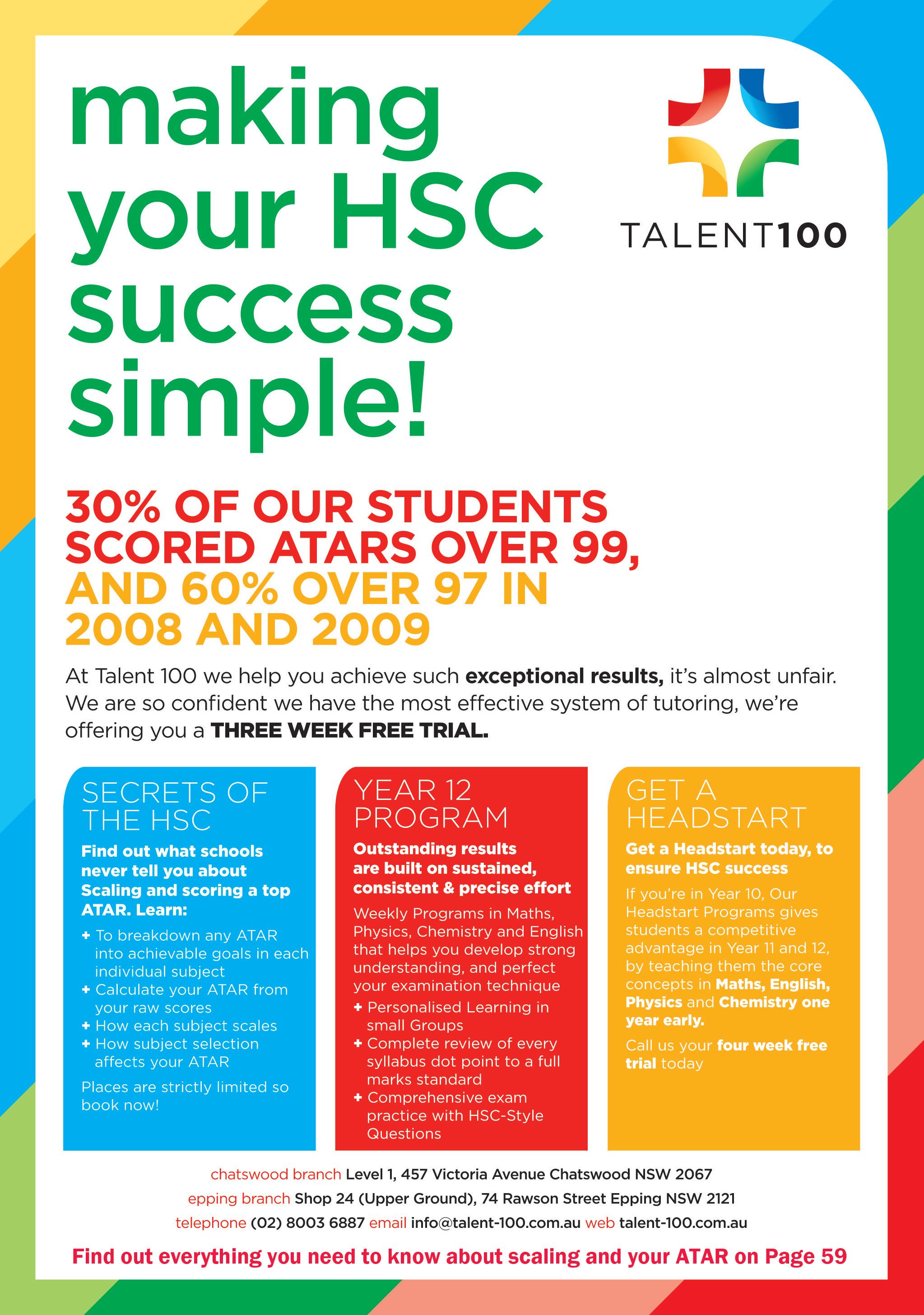
92 <> OCTOBER (1) 2010 INDIAN LINK









































































































































 BY MARK SHARMA
BY MARK SHARMA




 BY MADHUCHANDA DAS
BY MADHUCHANDA DAS





 George Thakur
George Thakur





























































































 BY SHERYL DIXIT
BY SHERYL DIXIT



















































